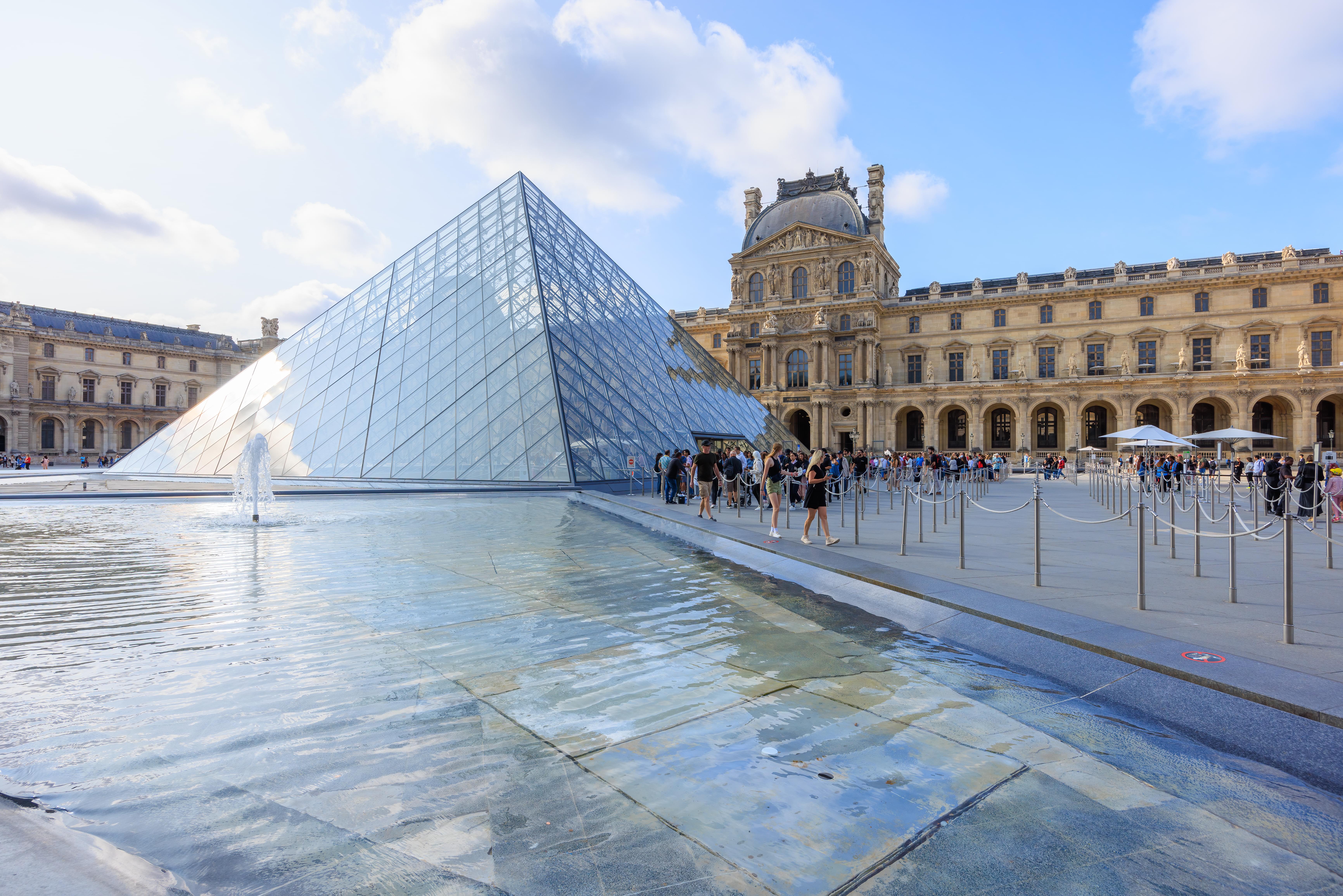We headed out in the morning to visit the Louvre, probably the most famous museum in the world and home of the Mona Lisa. After spending the morning there, we had lunch at a boulangerie and visited Saint-Germain-l’Auxerrois, a nearby historic church. We continued on to Saint-Germain-des-Prés, the oldest church in Paris. We visited a third church, Saint-Eustache, a church we saw on our first day in Paris. We ended our day with dinner in a restaurant next to the church.
Musée du Louvre
We left a bit early before our timed entry to the Louvre as we wanted to visit the nearby Jardin du Palais Royal. The royal palace was the home of French royalty before the palace at Versailles was built.
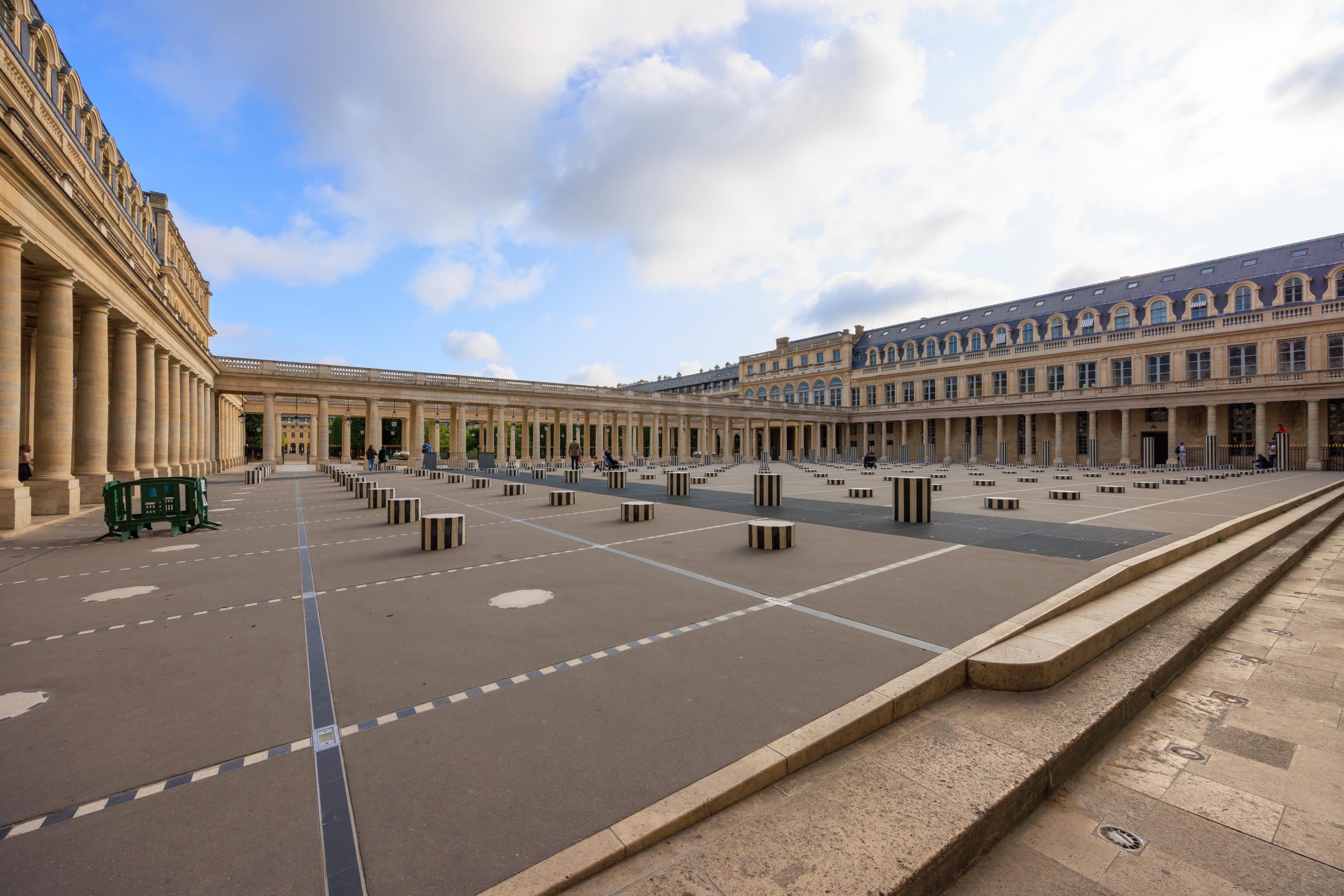
The southern entrance goes through Les Deux Plateaux, also known as the Colonnes de Buren.
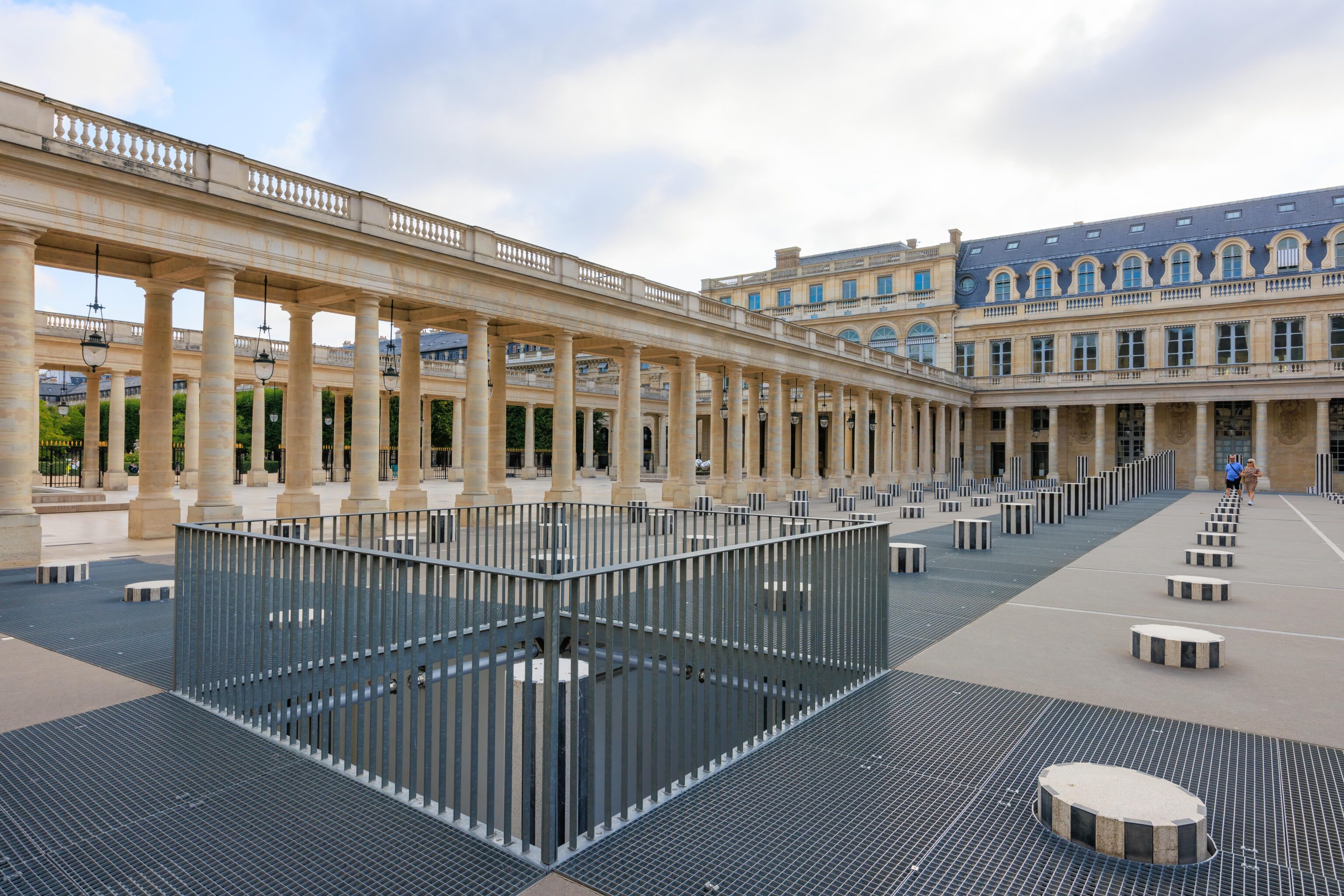
It consists of black and white striped columns organized on a grid.
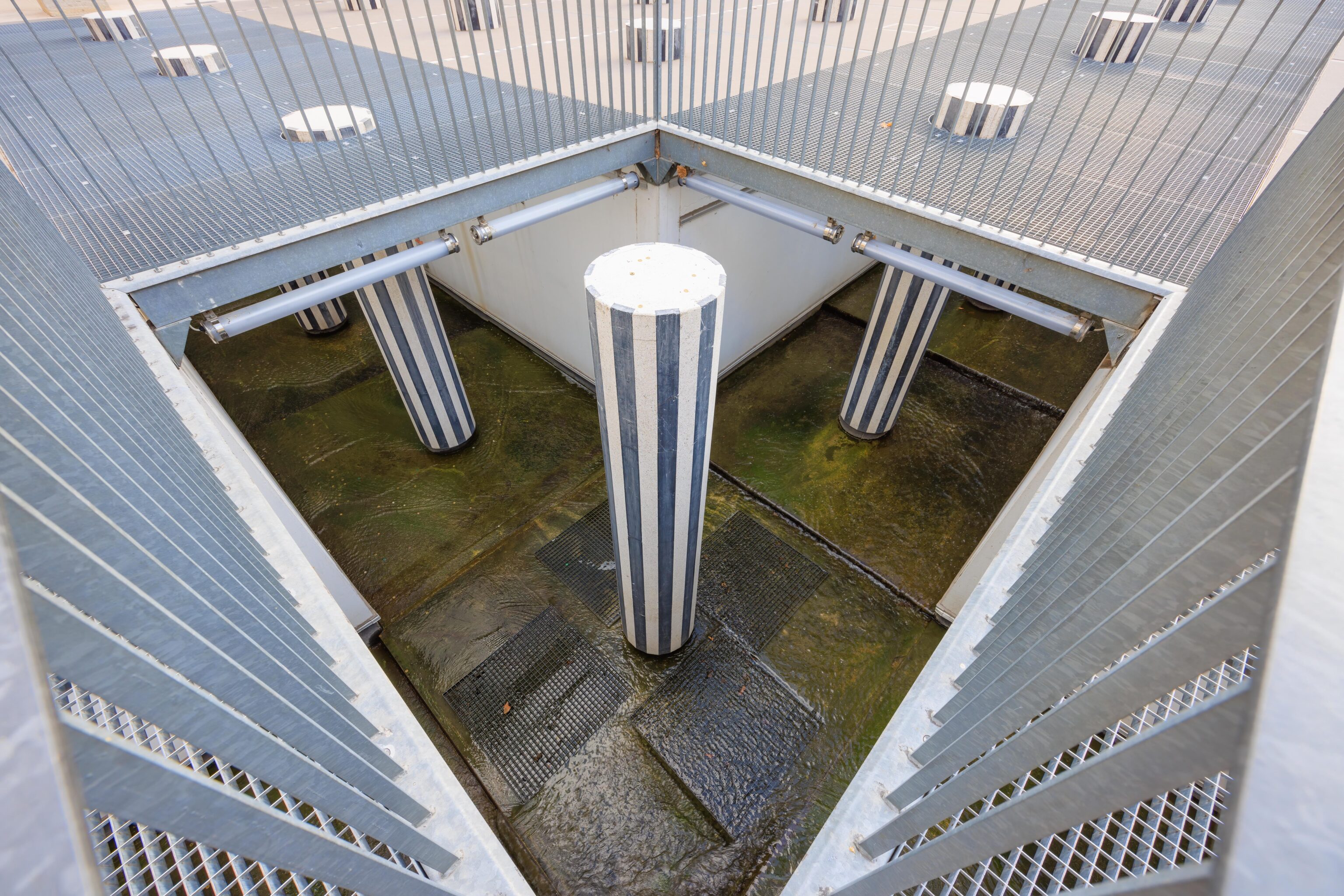
Water runs under the tiles that are covered by metal grating. The columns here are of a fixed height.
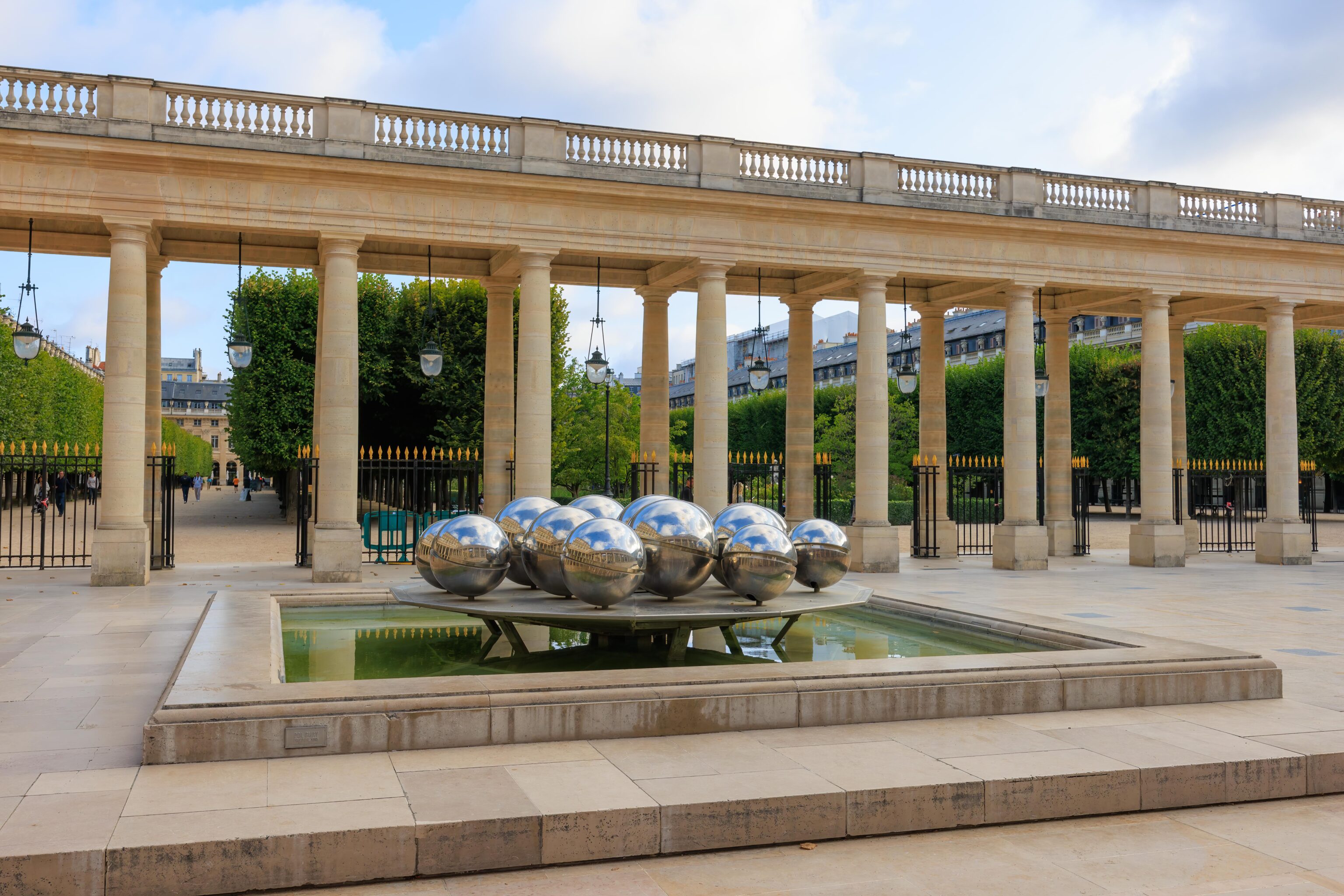
This installation just to the north of the columns is Sphérades by Pol Bury, a Belgian artist. There are actually two identical installations in this same courtyard. This one is on the west side while the other is to the east.
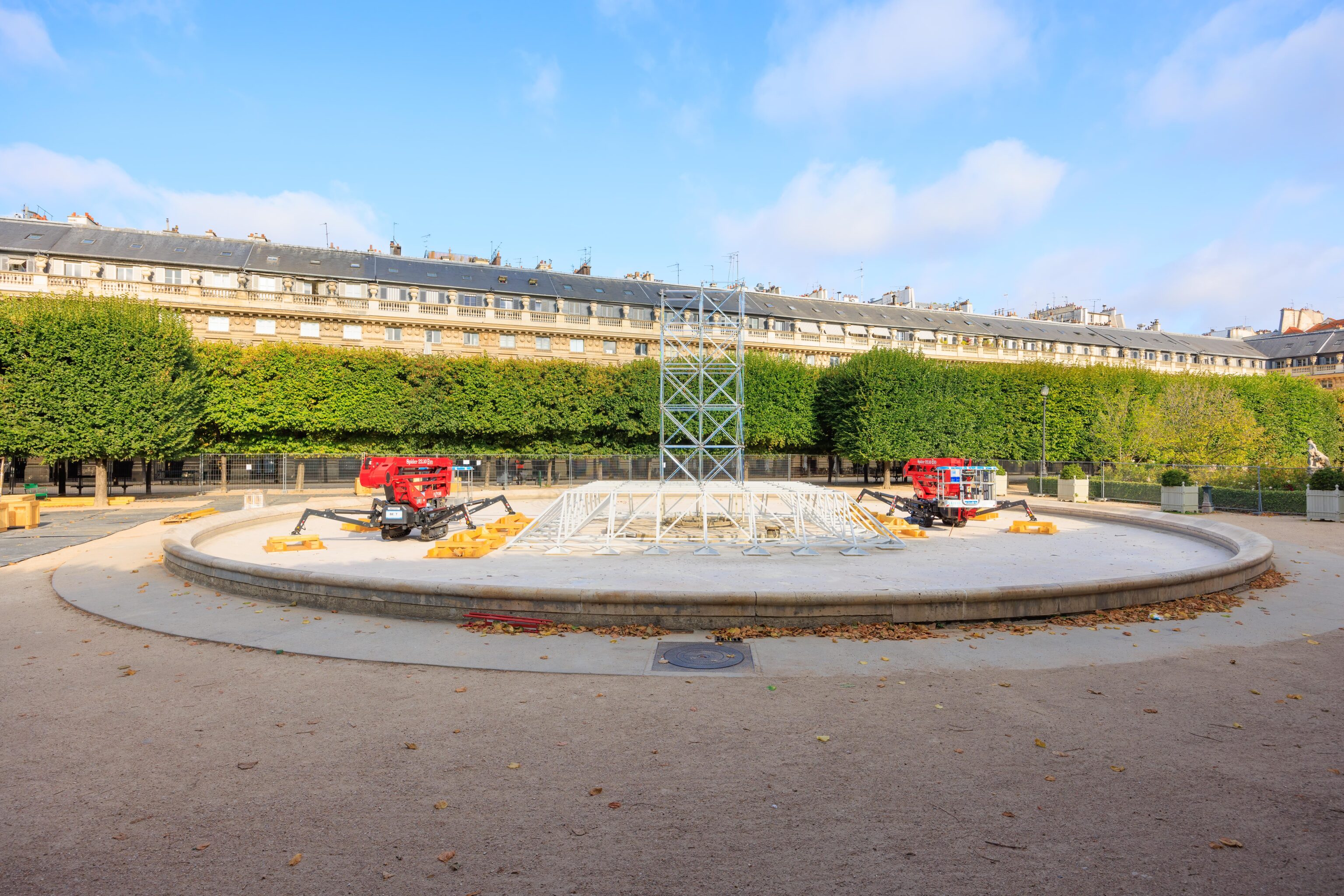
Unfortunately, the circular pond in the middle of the garden, just beyond the spheres, was being renovated! This park is where Emily first meets Mindy on a park bench. This is also the park for a scene with Gabriel and some kids.
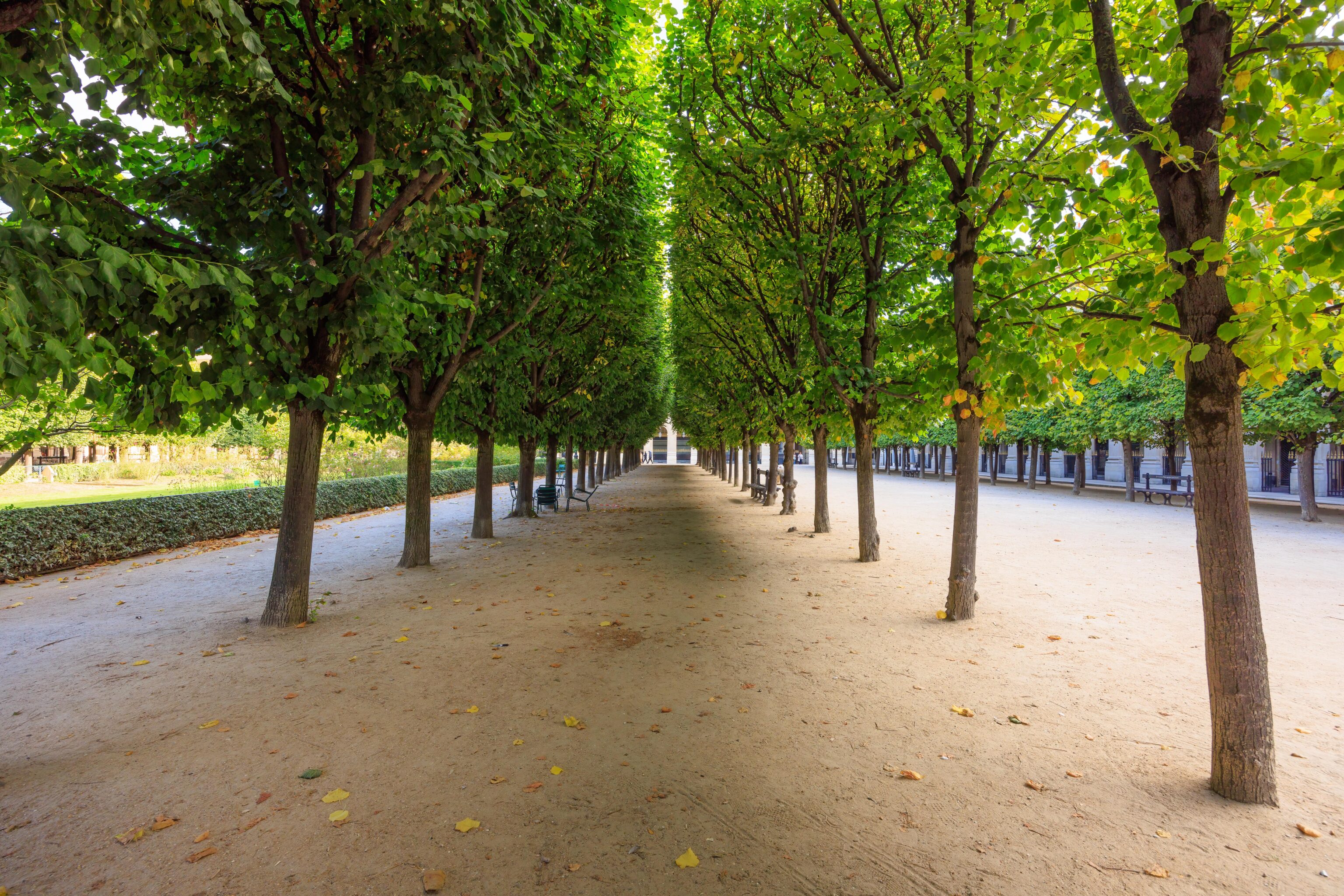
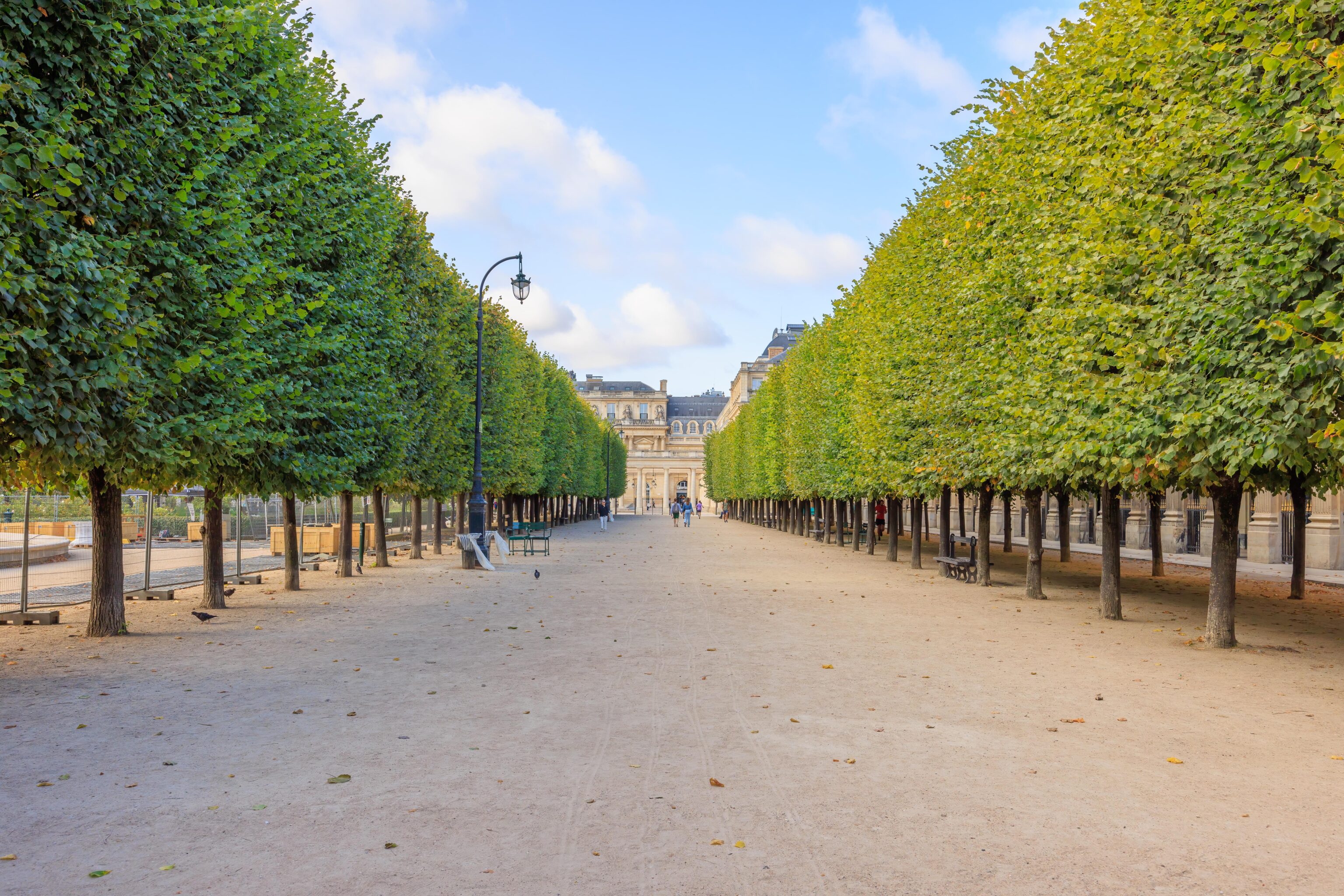
The paths on either side of the pond are lined with trees.
On our way back, we noticed that water was coming out of the spheres and that they move! It isn’t really clear exactly how this mechanism works.
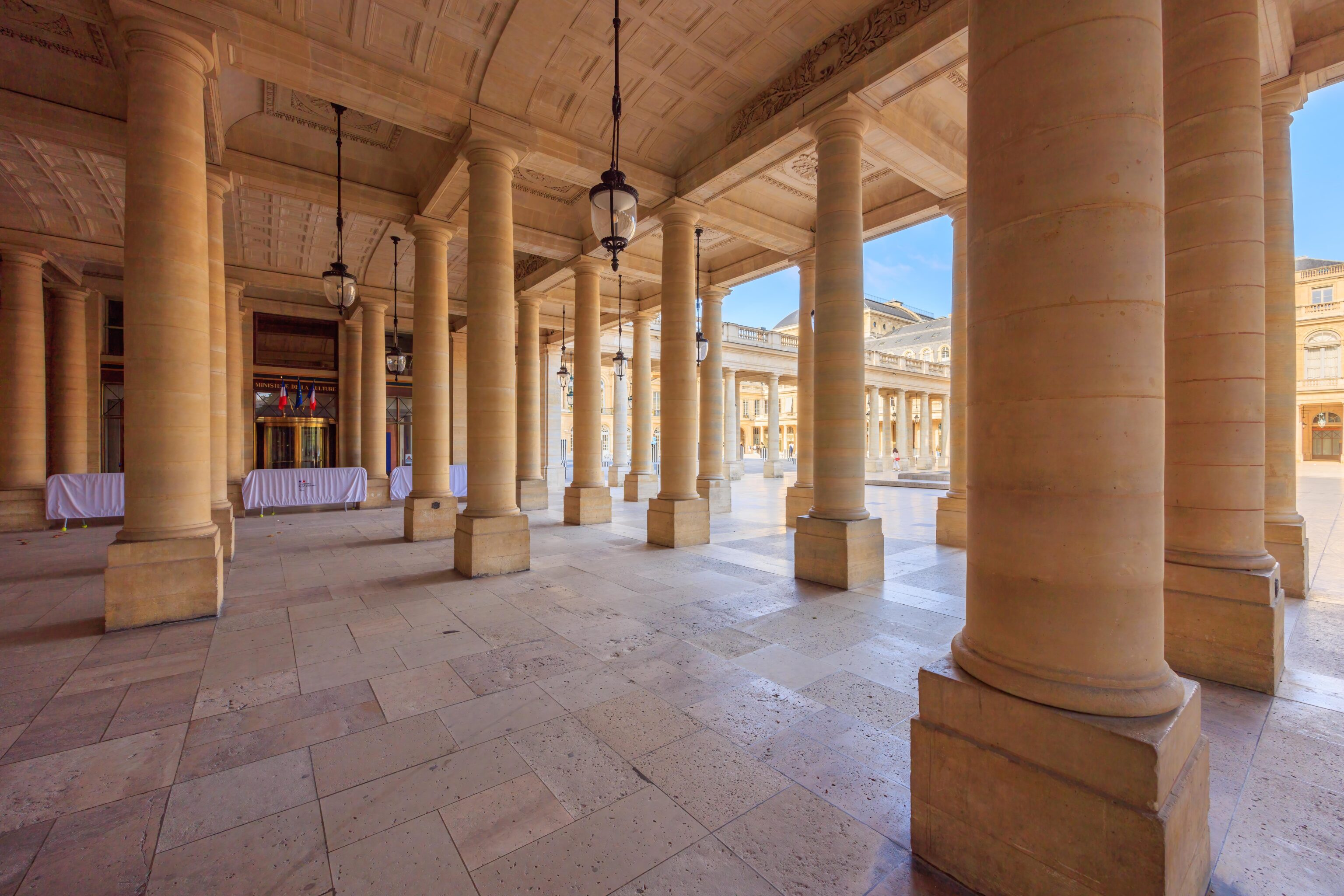
We exited via the east side of the courtyard. This area underneath the building above has quite a few columns.
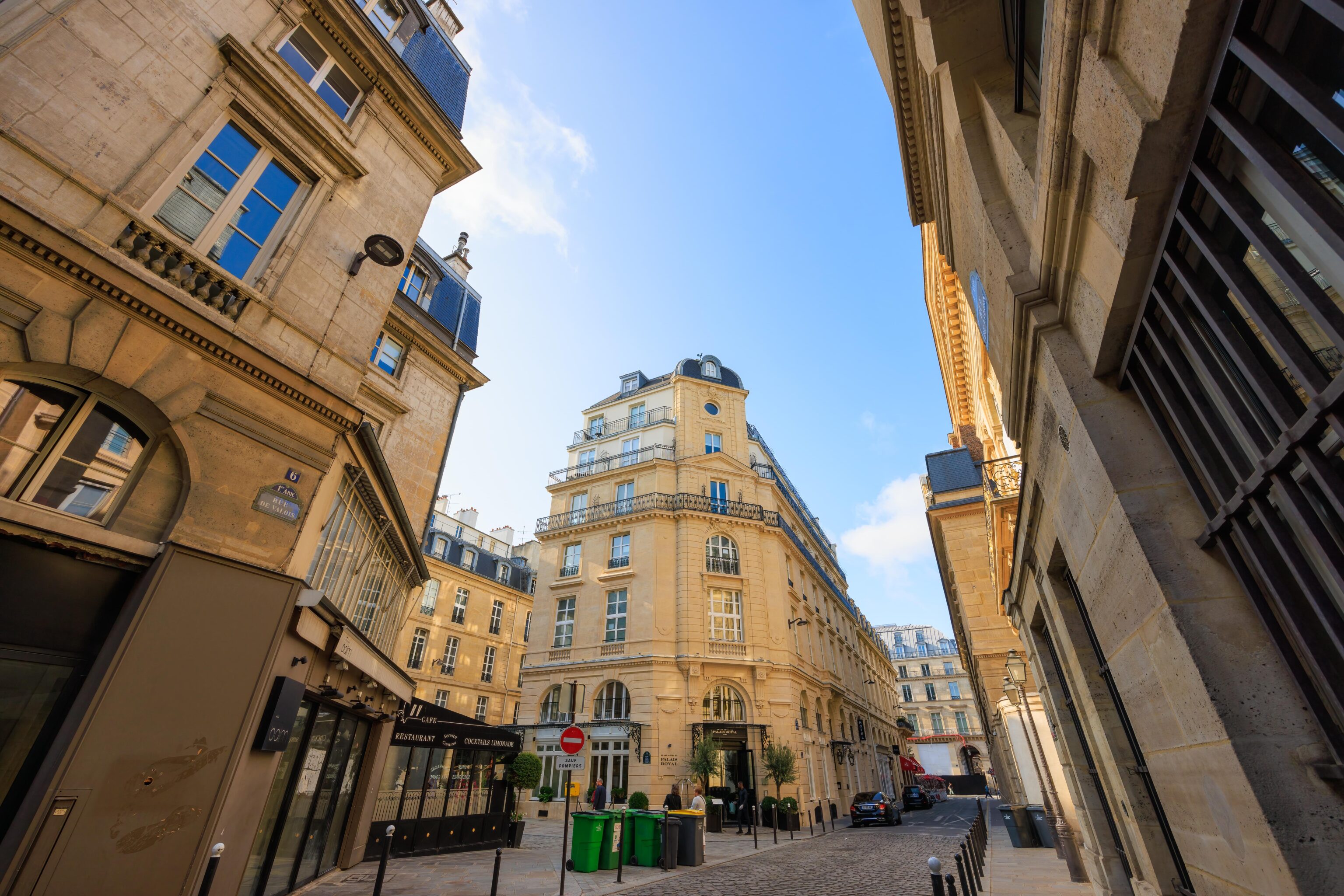
We walked to a courtyard in the middle of a building across a narrow street.
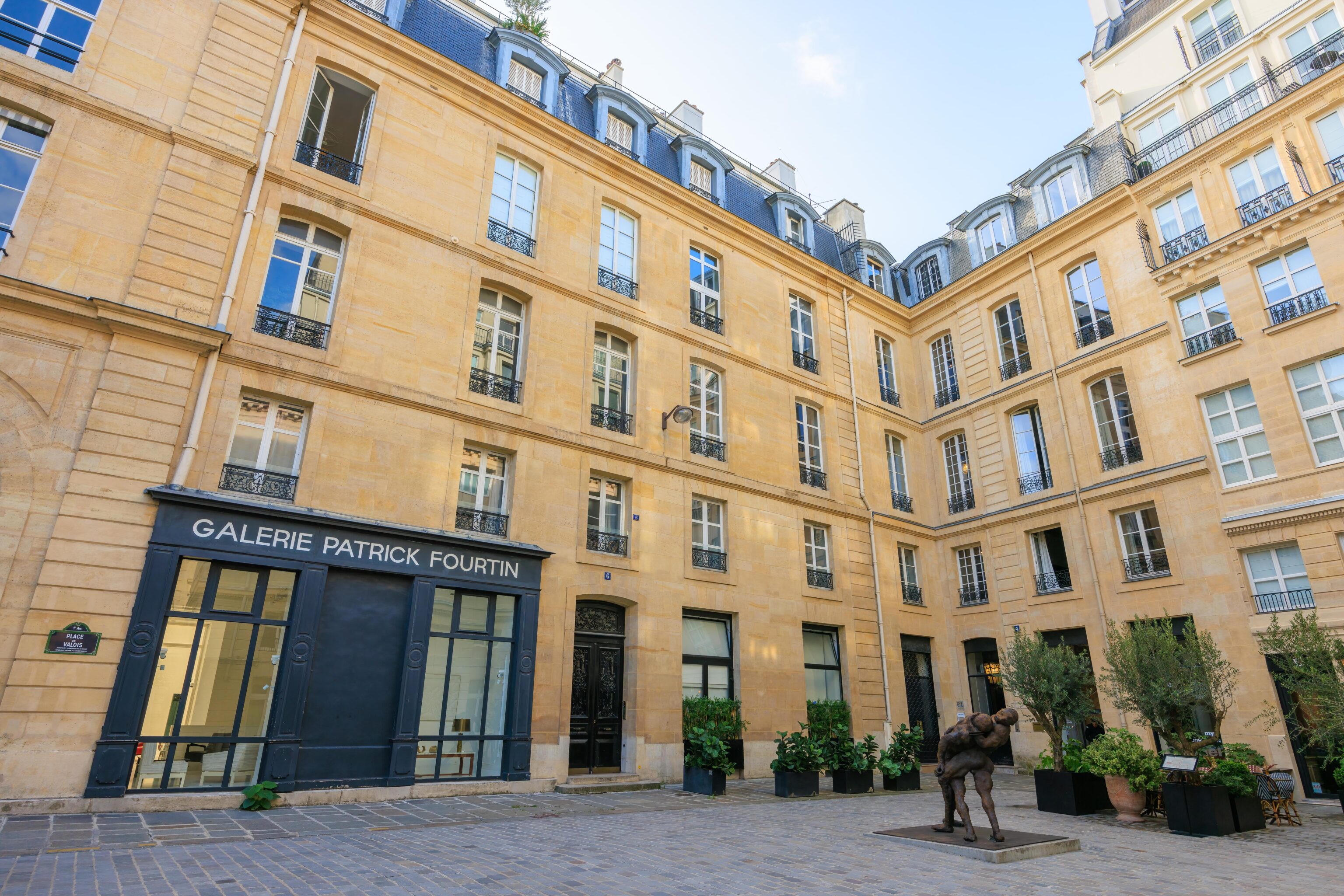
This is the building that houses the offices for Savoir, the marketing agency in Emily in Paris that Emily works at in Paris. It looks exactly as it does on the show.
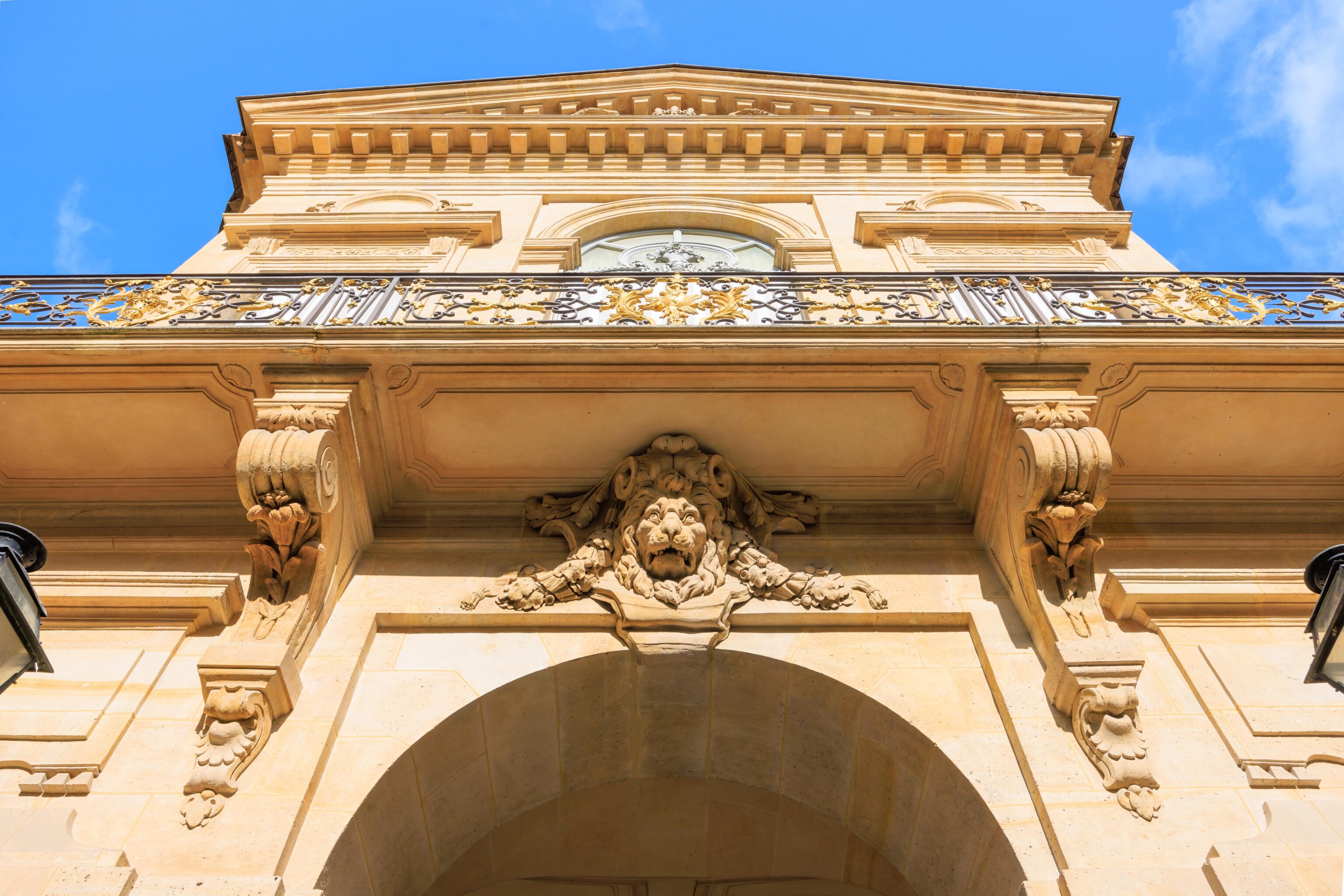
We returned to the royal palace, through this archway.
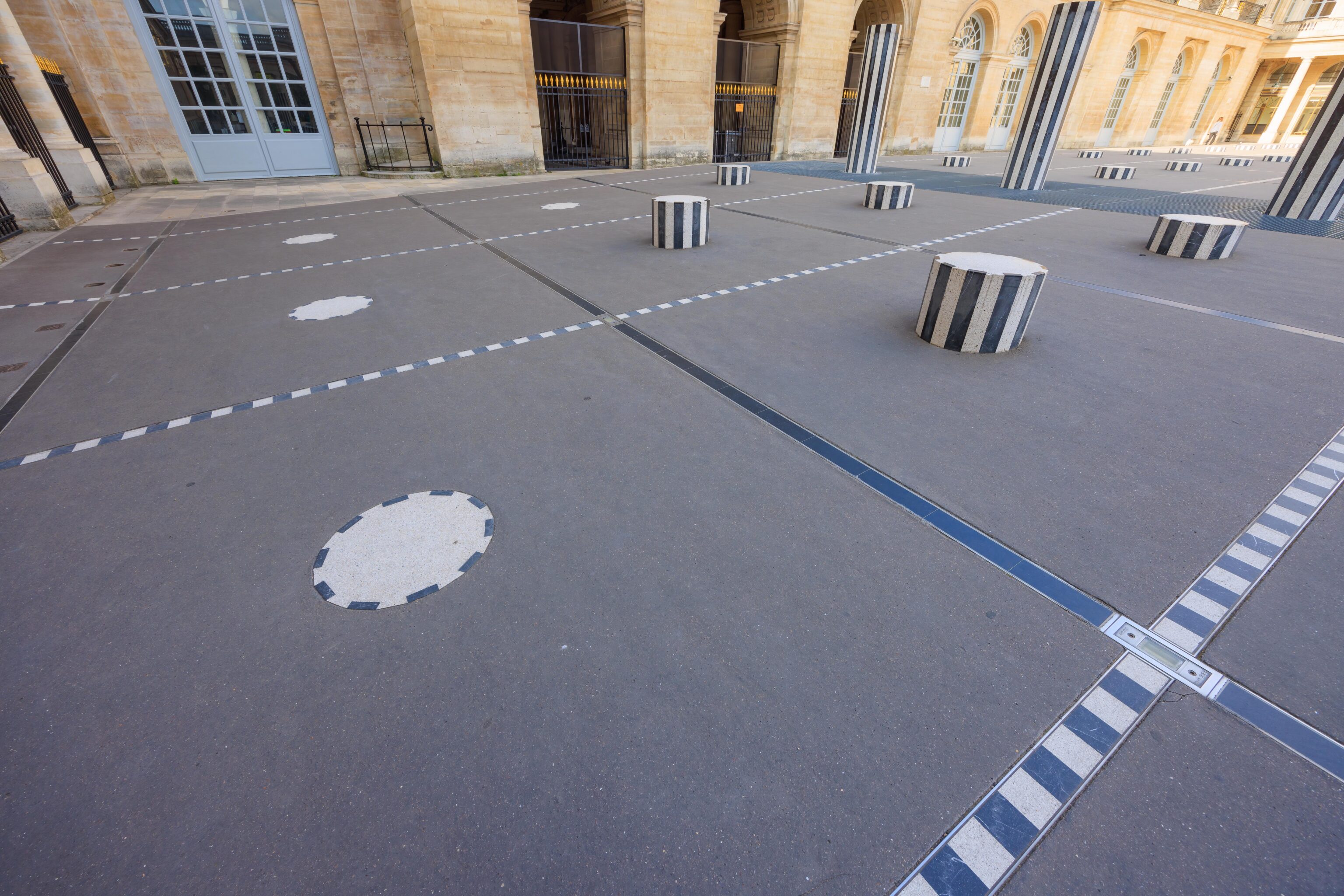
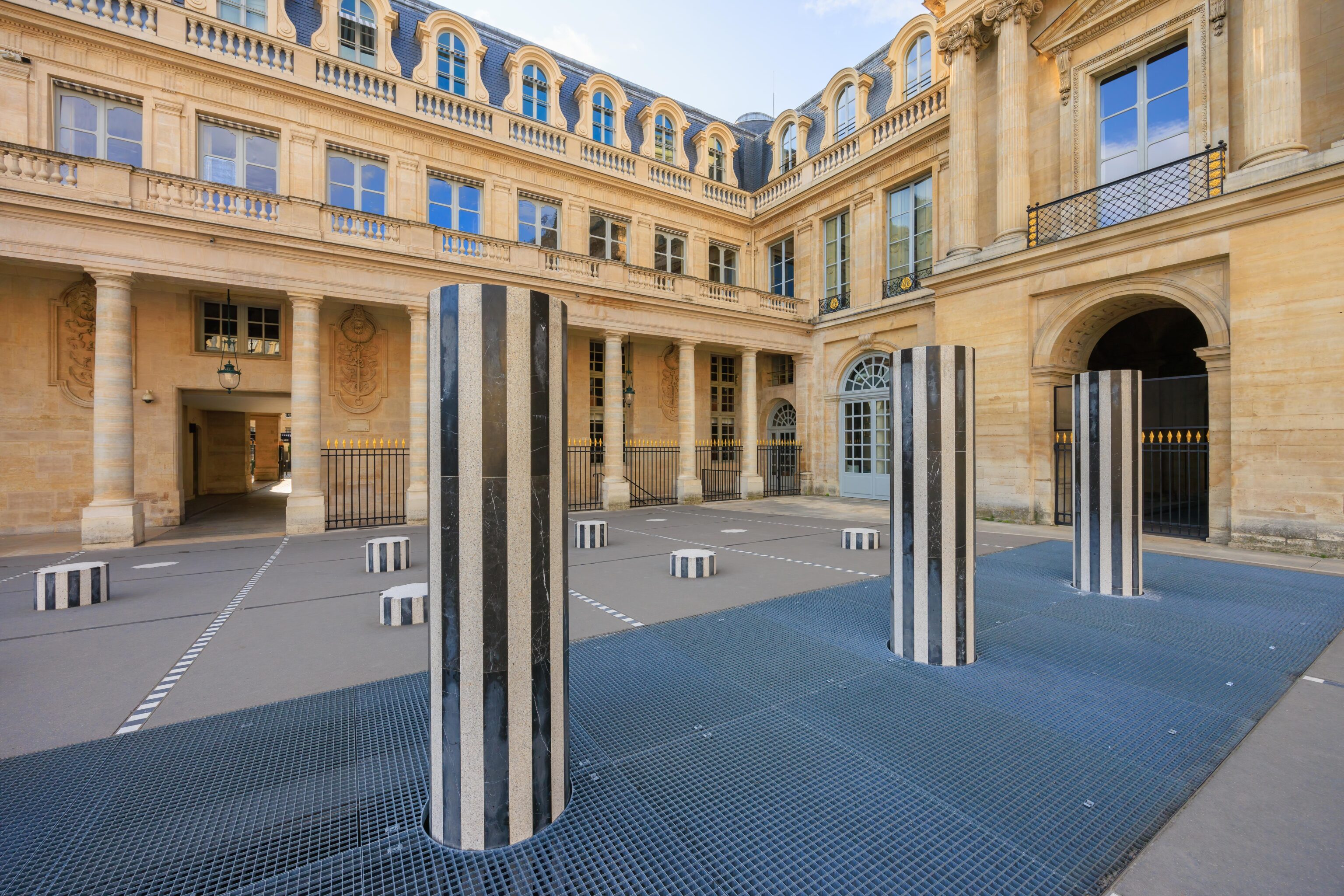
We passed by the columns again to exit from where we originally entered earlier.
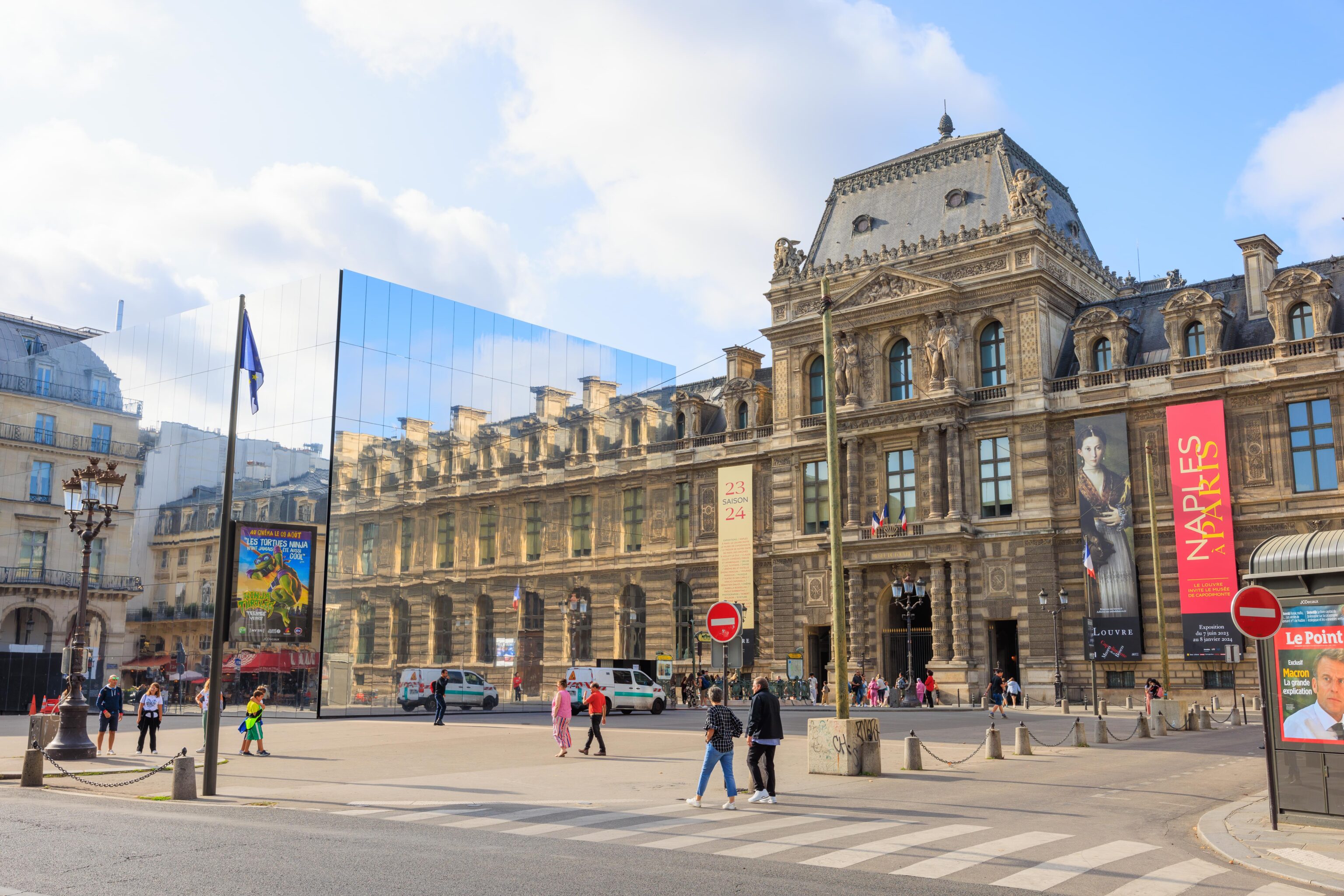
The royal palace is just a tiny block away from the northern edge of the Louvre. One thing that we missed on our way in is on the left side of this photo. It is a mirrored cube! When viewed from the correct angle, it almost seems to not be there. It is actually a construction facade and is probably described in a paywalled article by Le Parisian.
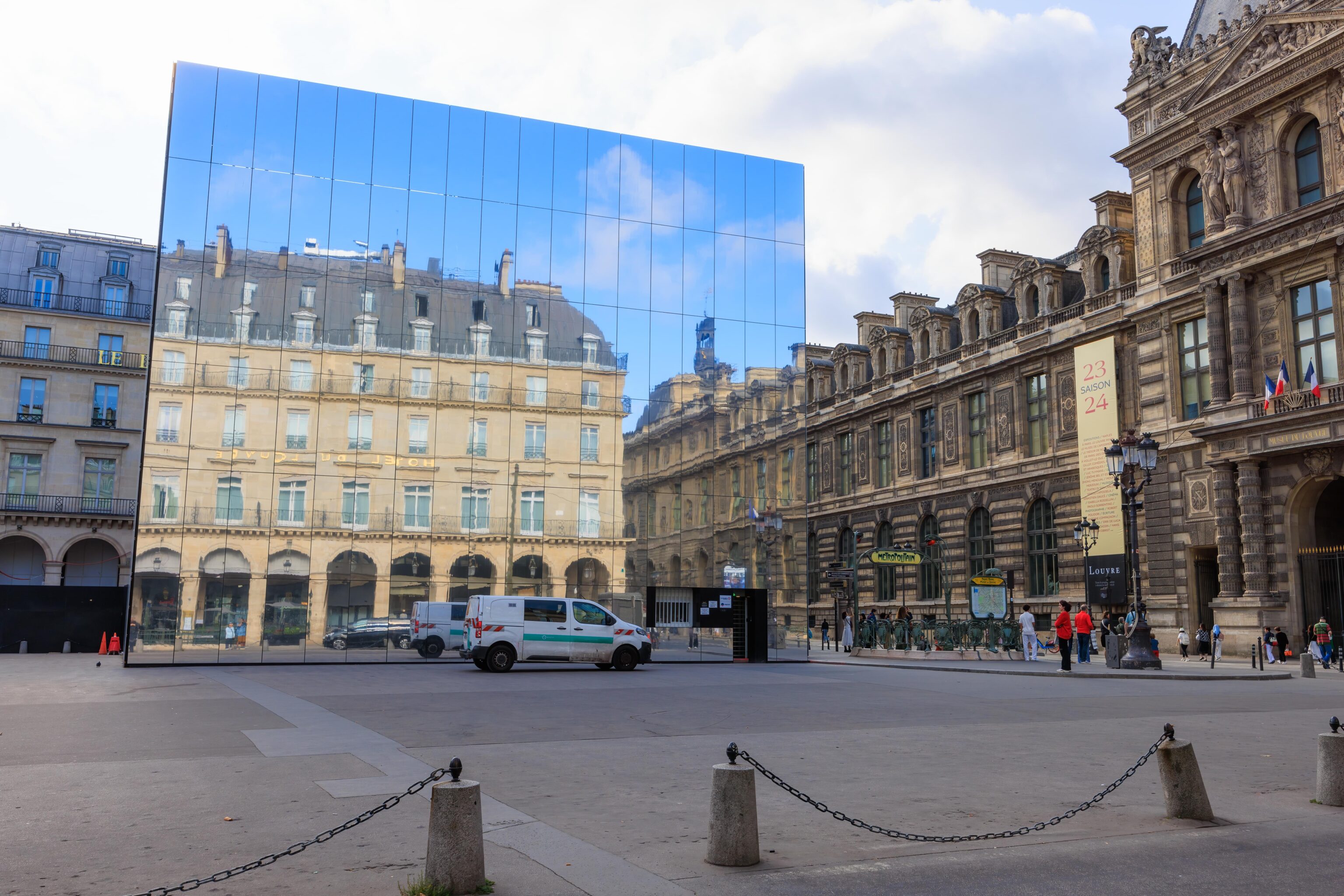
The effect works quite well from this angle as well!
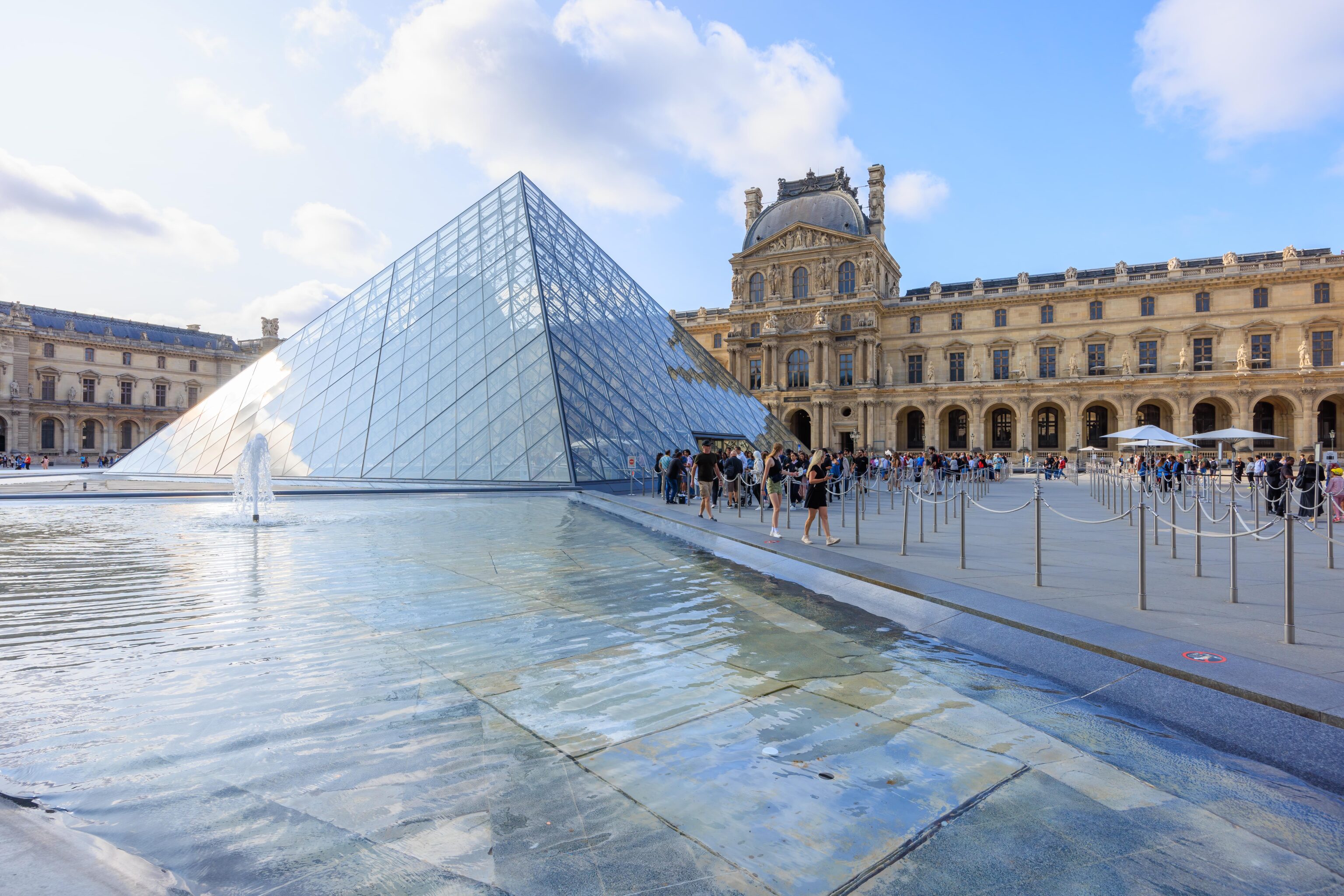
The main entrance to the Louvre is by its famous I.M. Pei pyramid. Even with timed entry tickets, there is queuing as there is a security check to enter. It didn’t look too bad though.
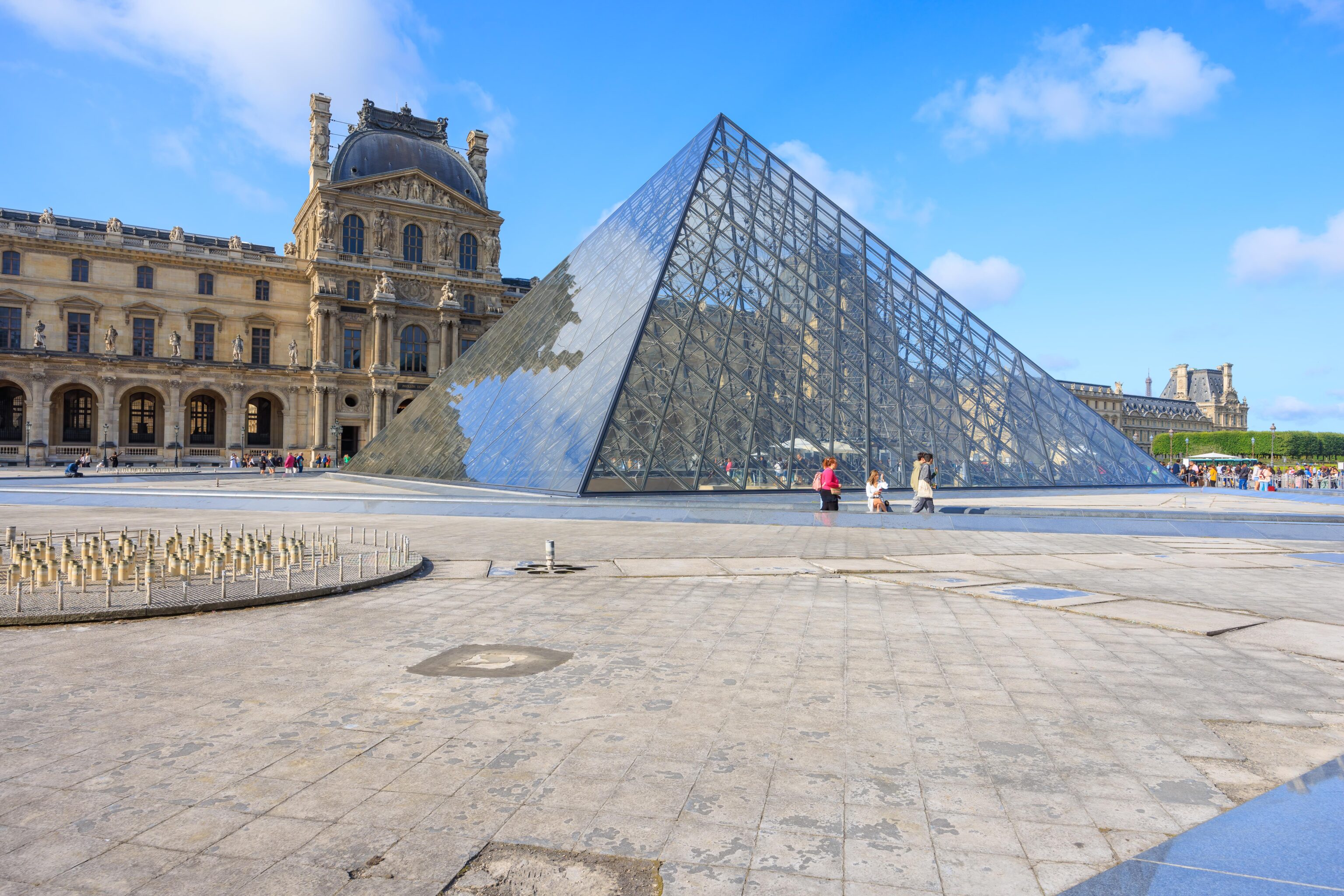
We decided to take a walk behind the pyramid to get an angle where we would not be looking directly into the sun. It turns out that the other fountains were deactivated and dry. There is quite a bit of renovation going on in Paris as the city prepares for the summer Olympics next year. It isn’t clear if this is part of that effort or just routine maintenance.
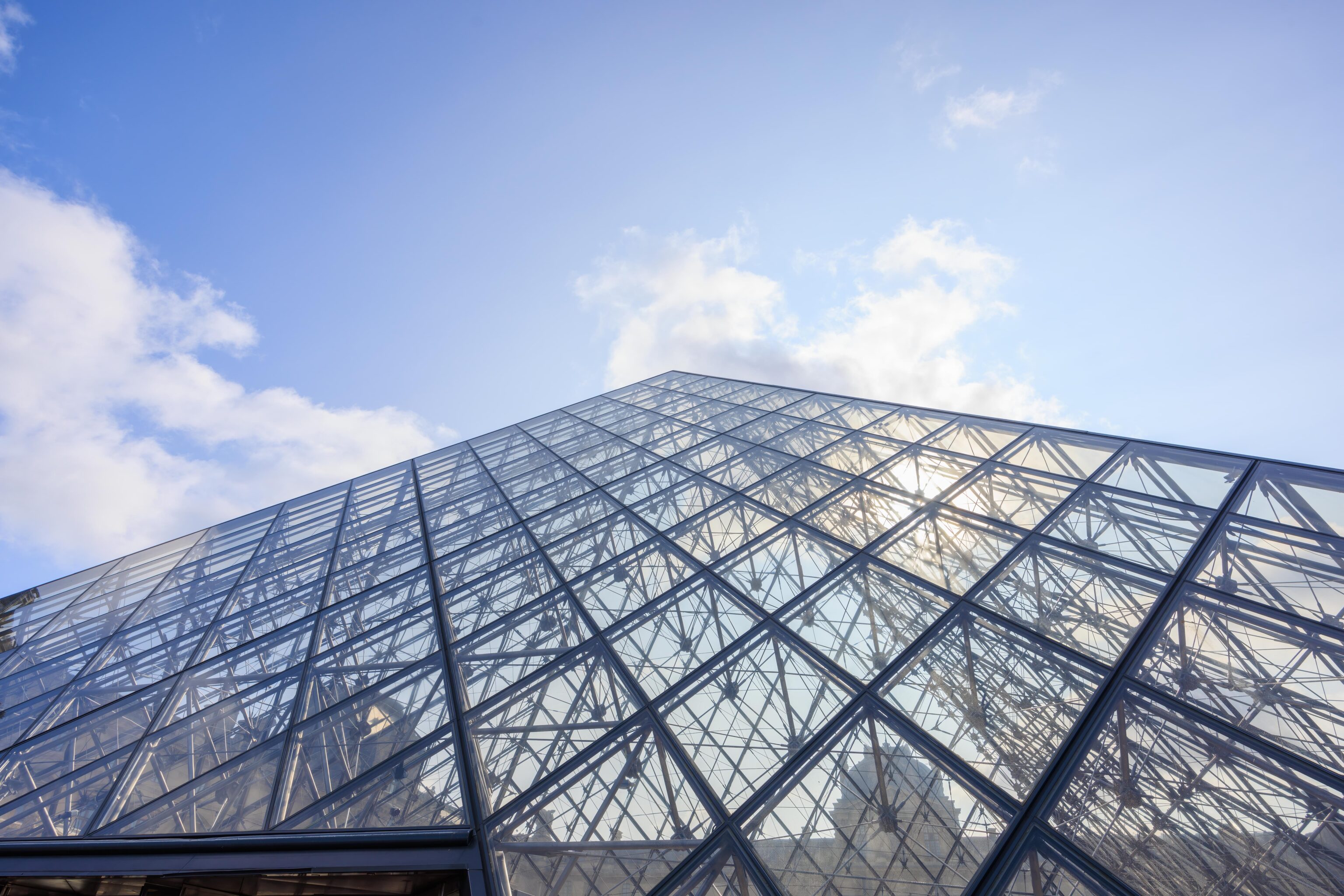
We went to queue up to enter. There are two lines, one for :30 after the hour and one for :00.
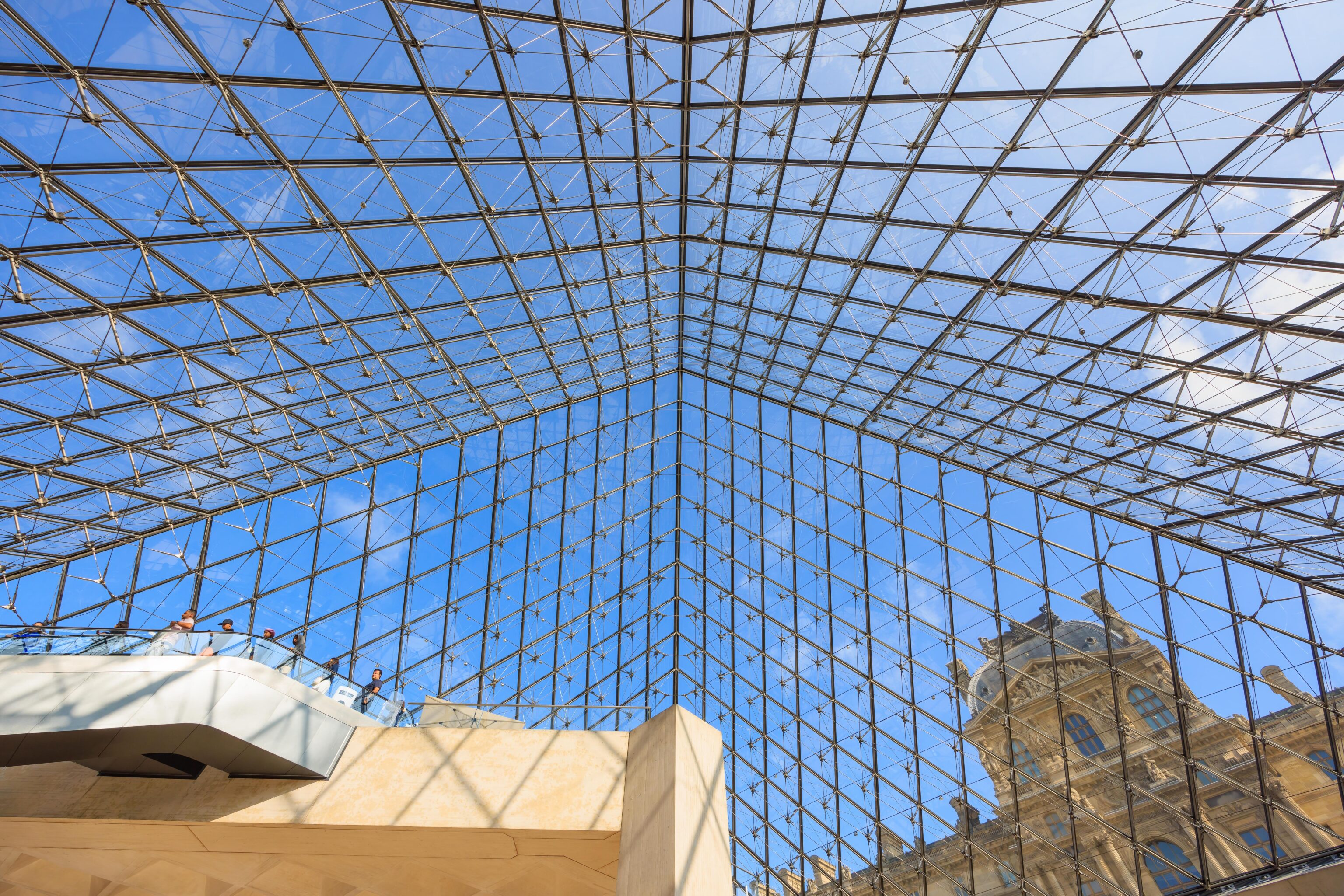
It took 20 minutes or so to get in. Not too bad.
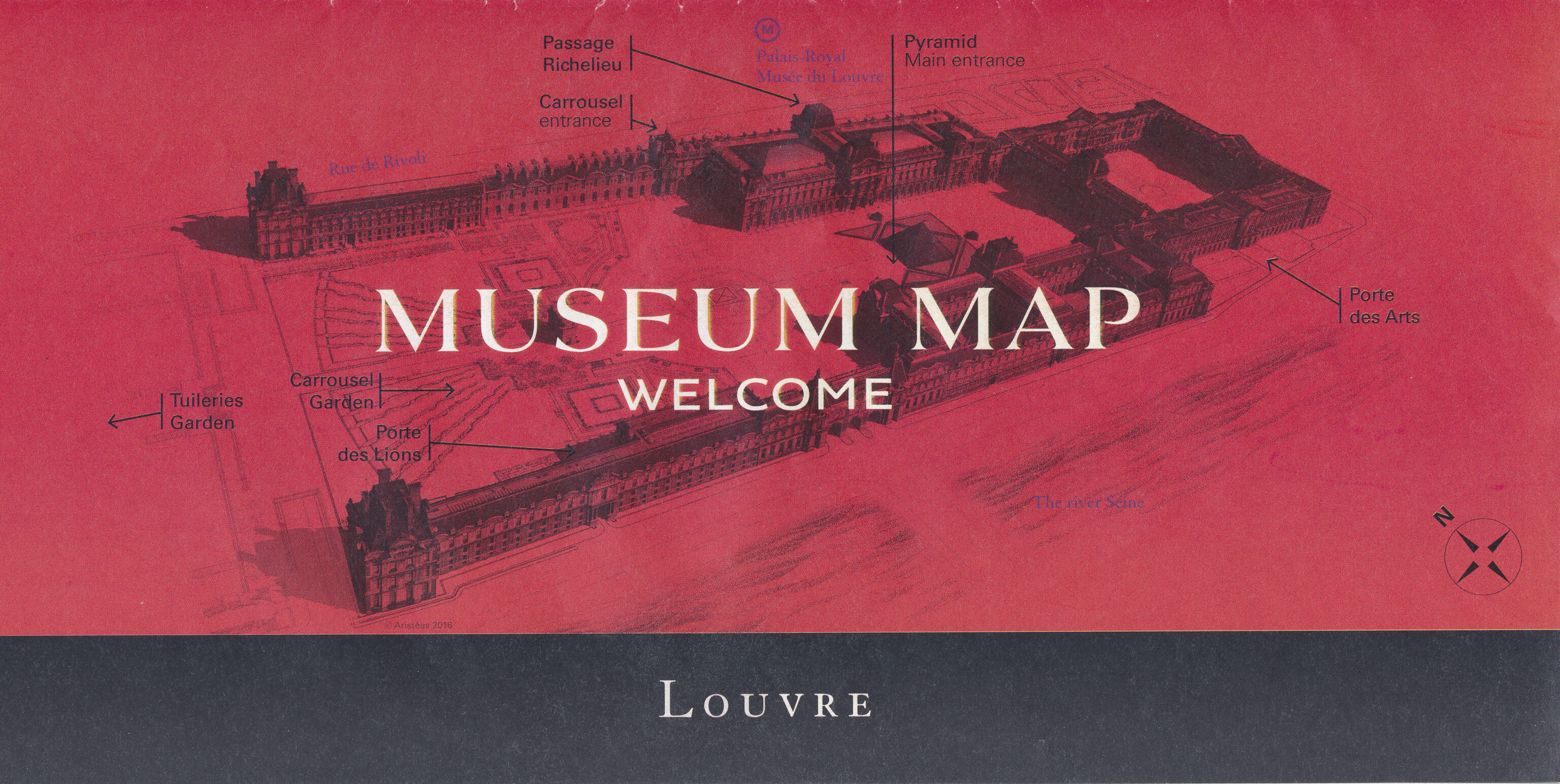
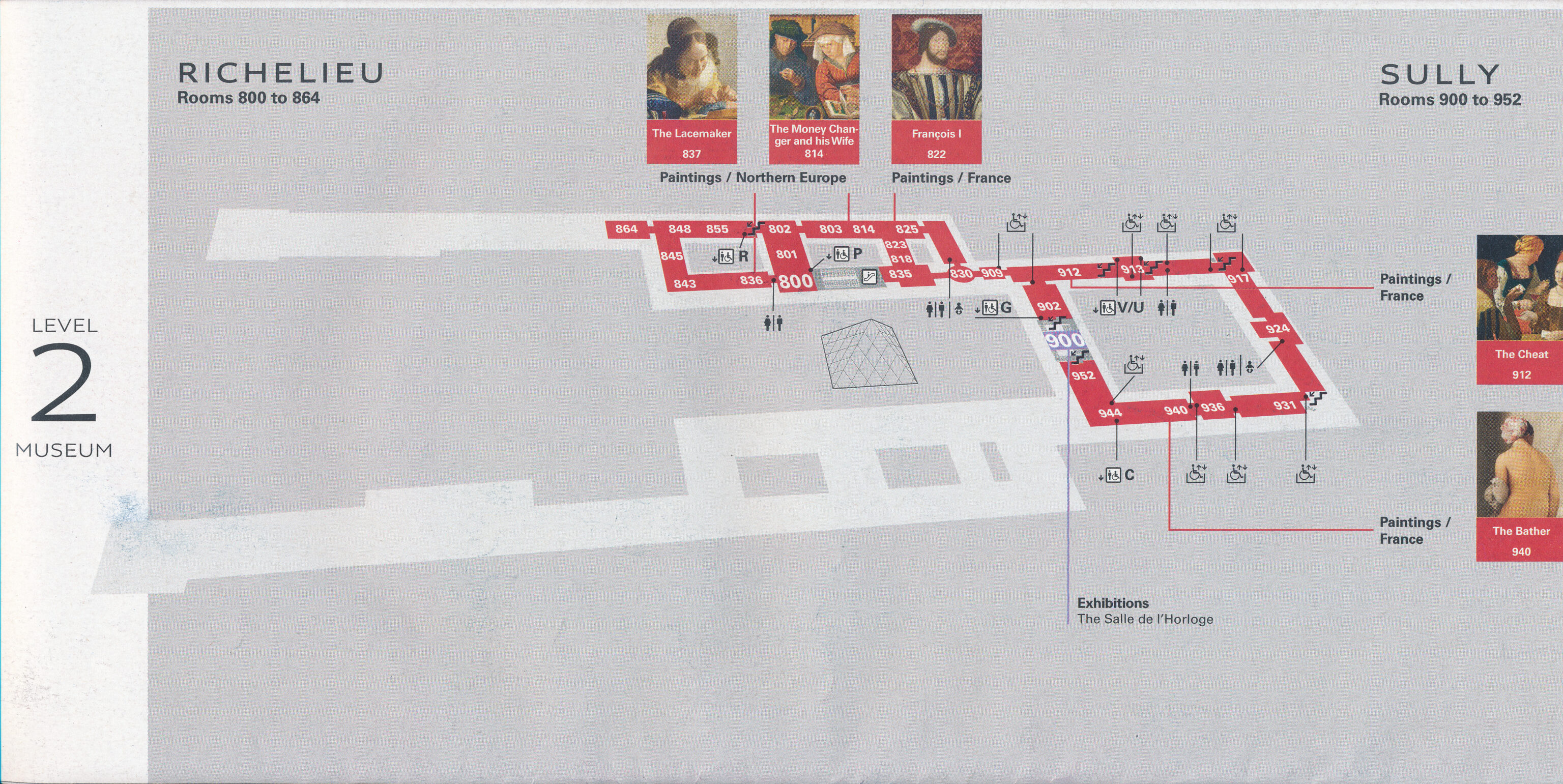
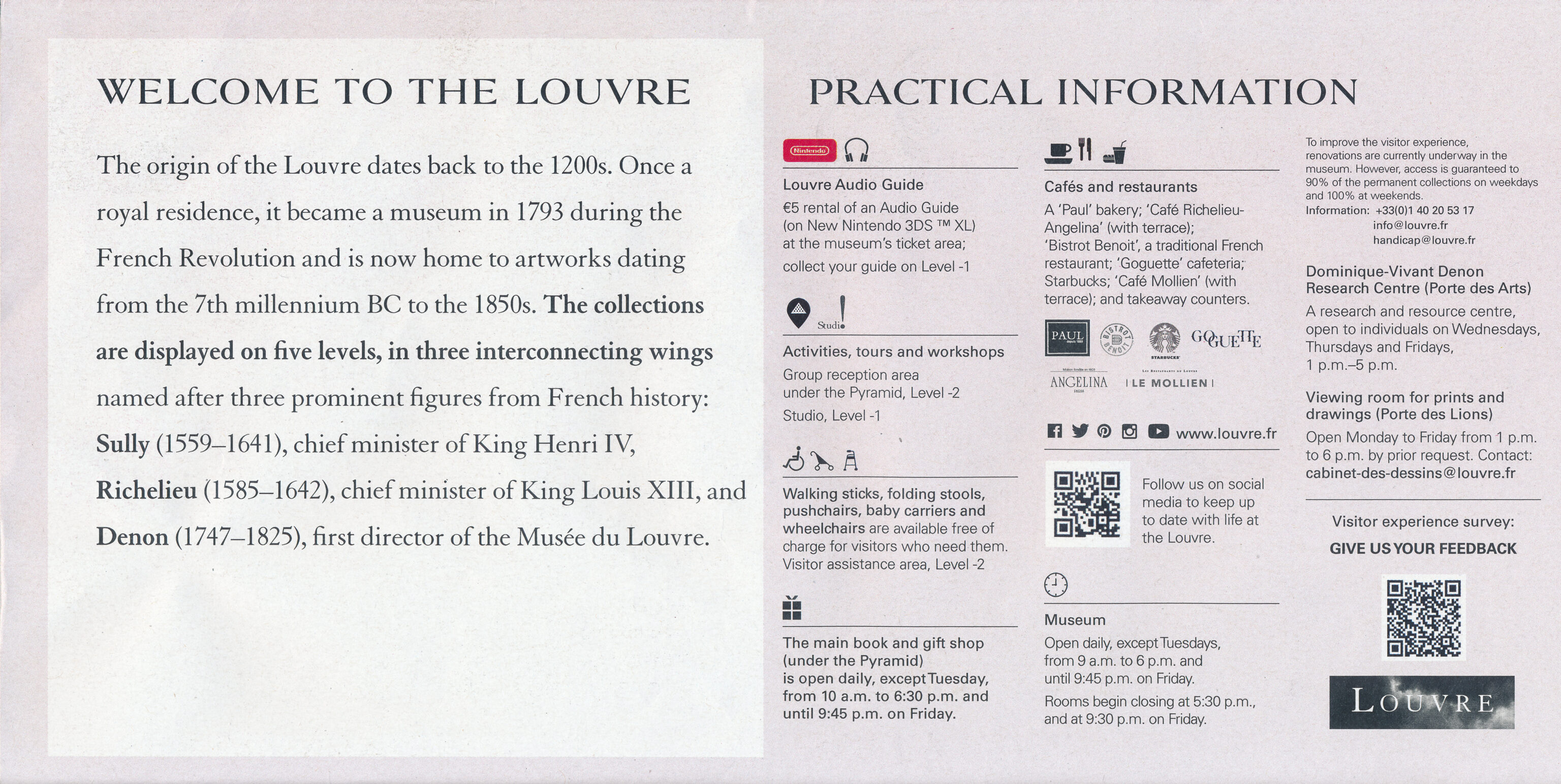
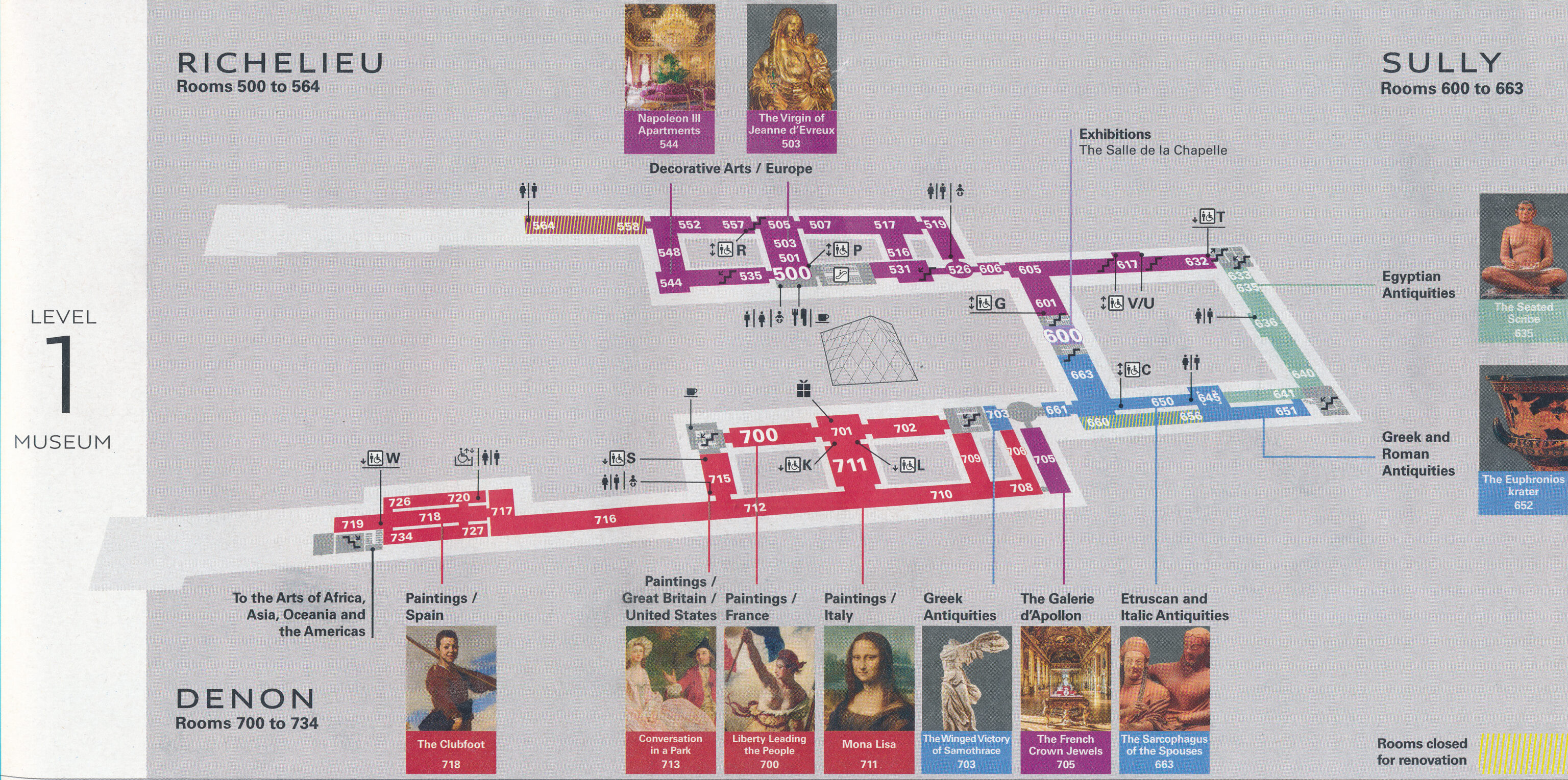
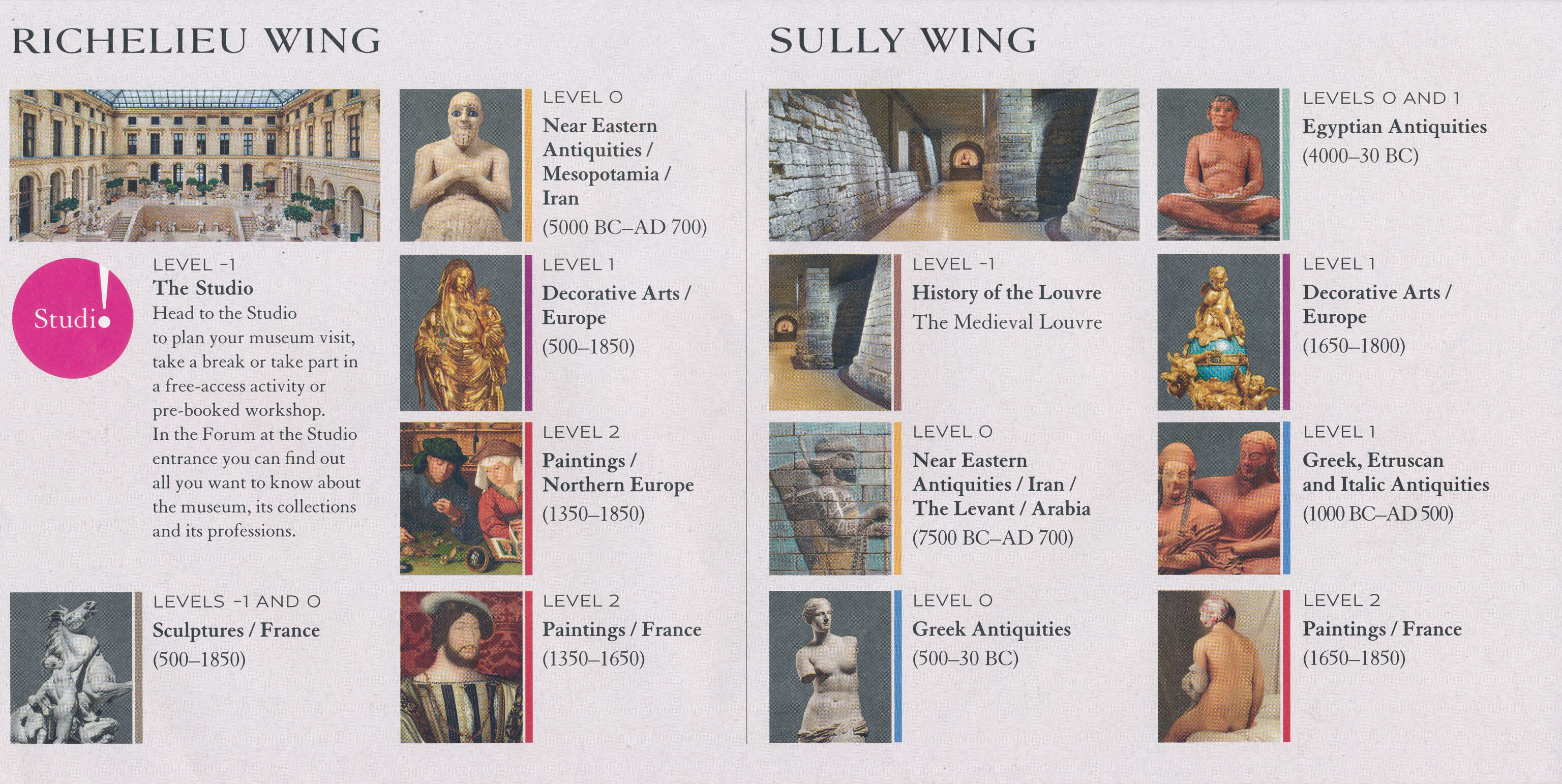
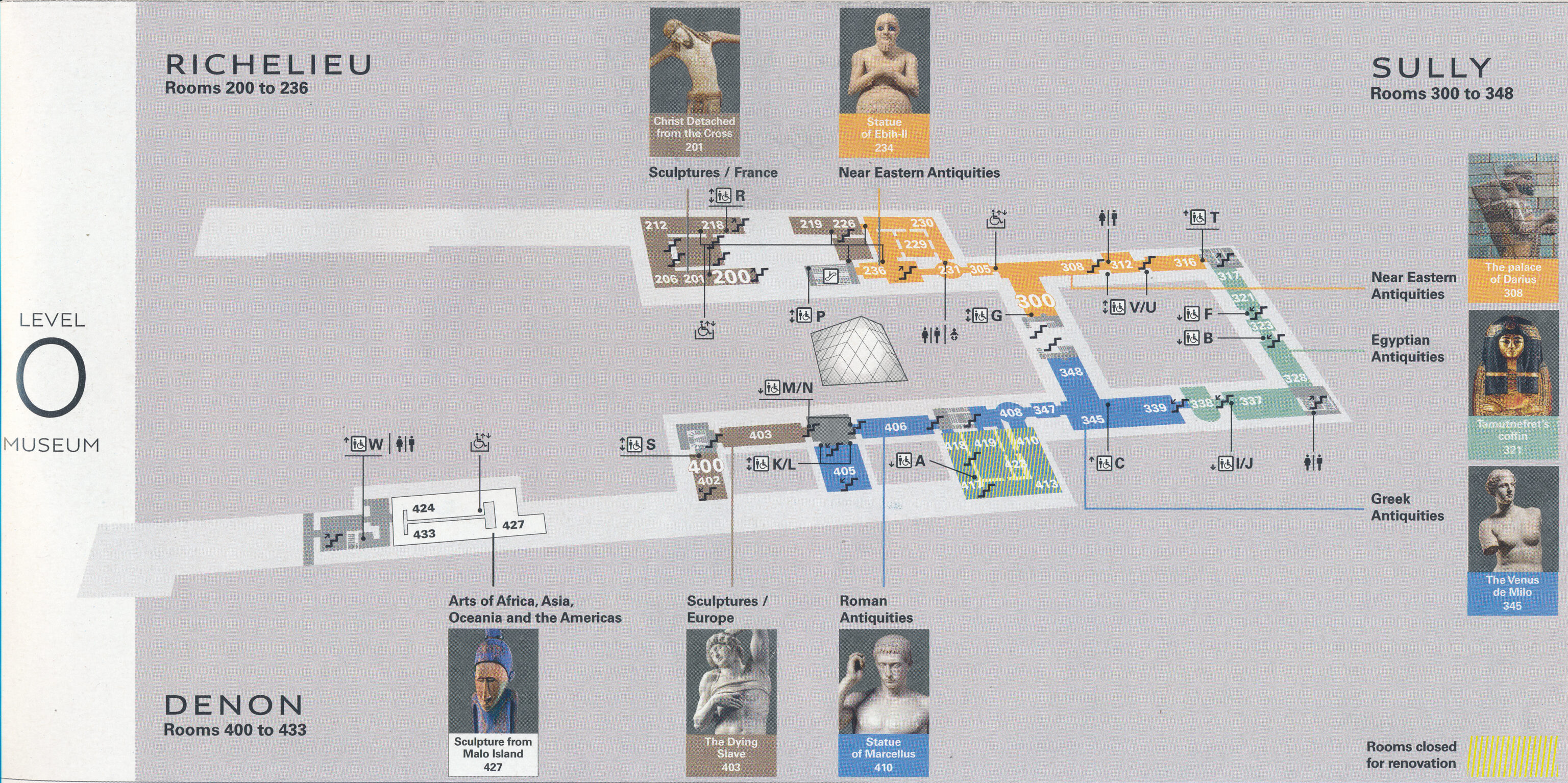
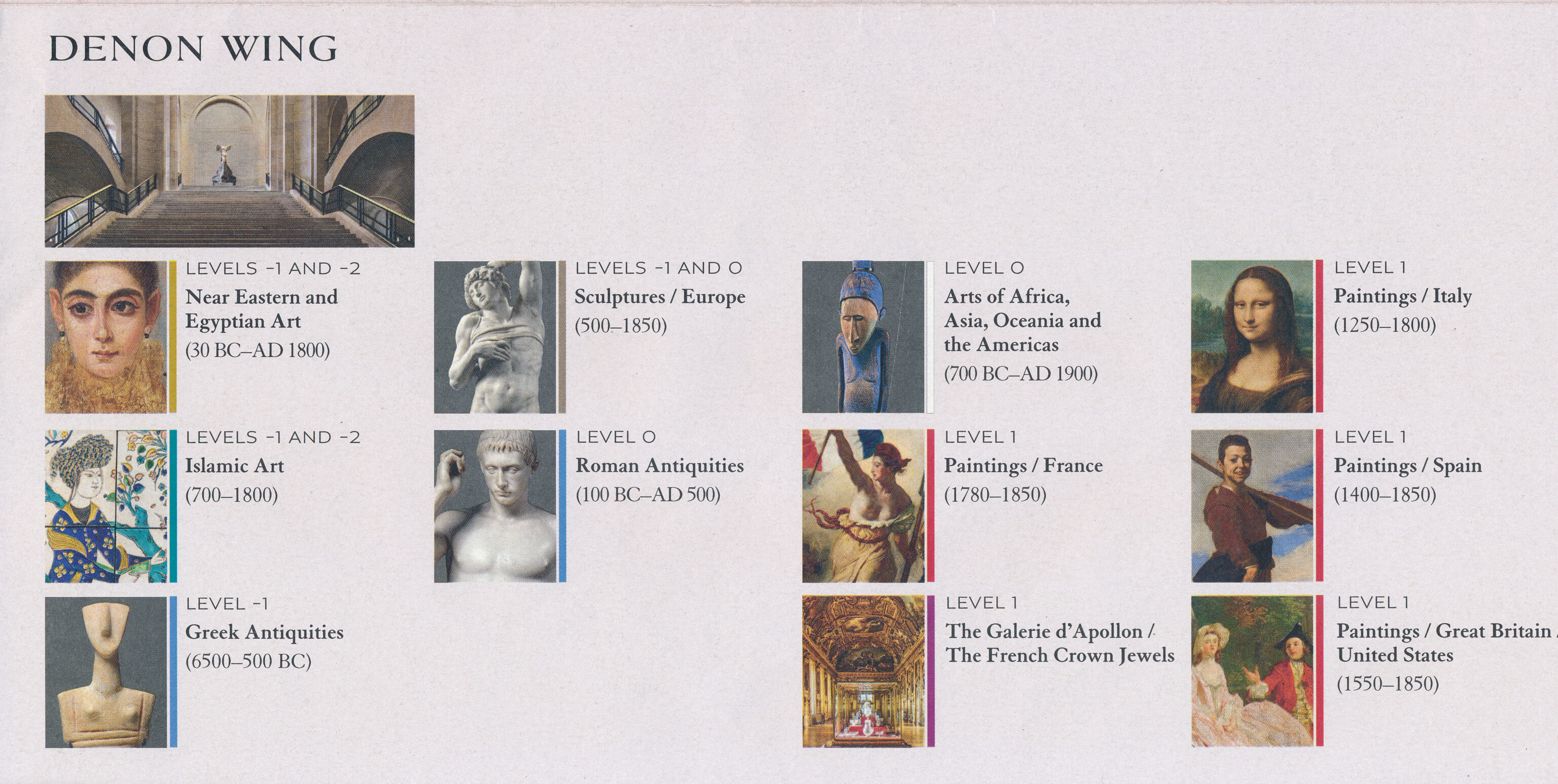
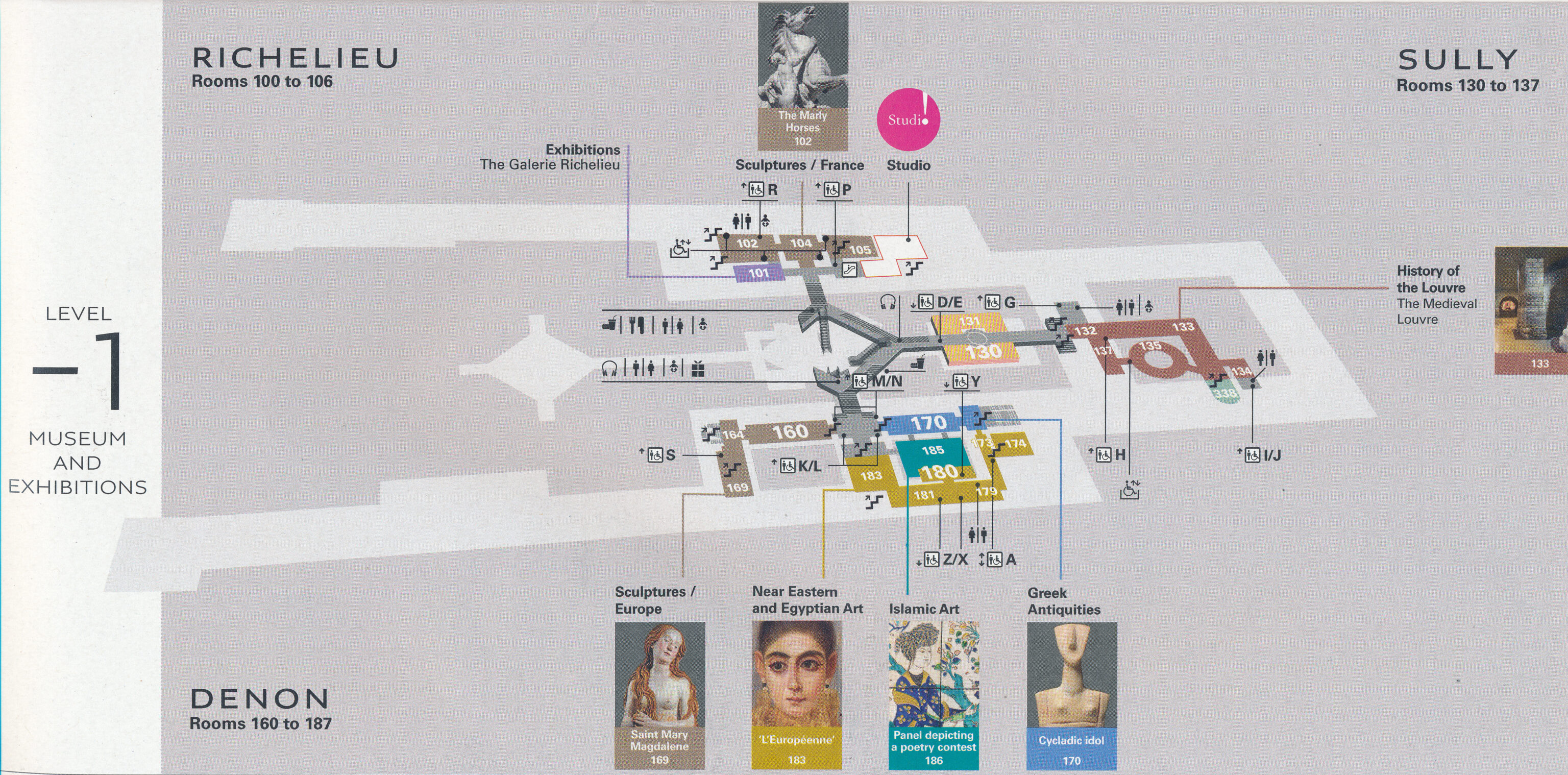
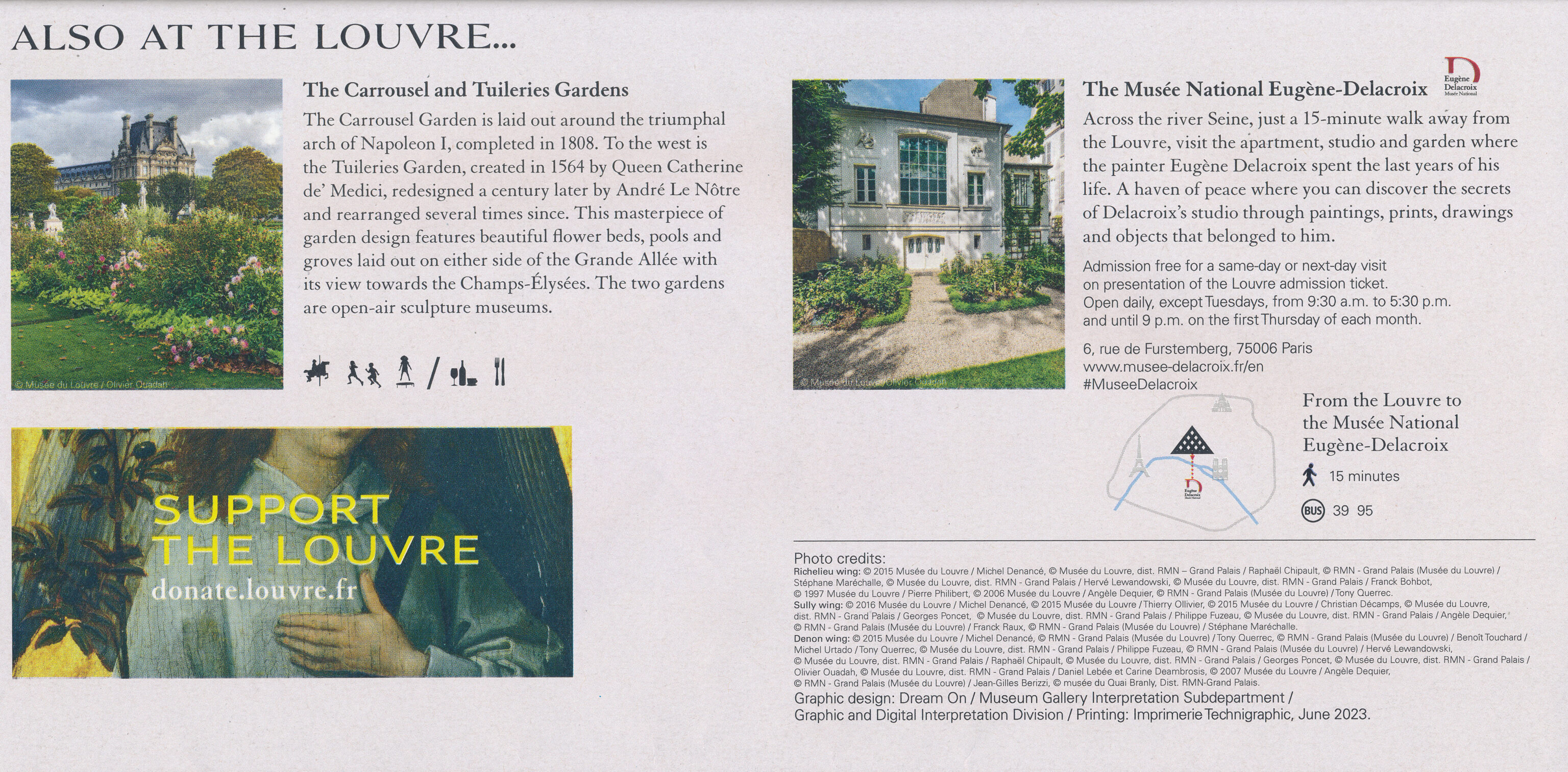
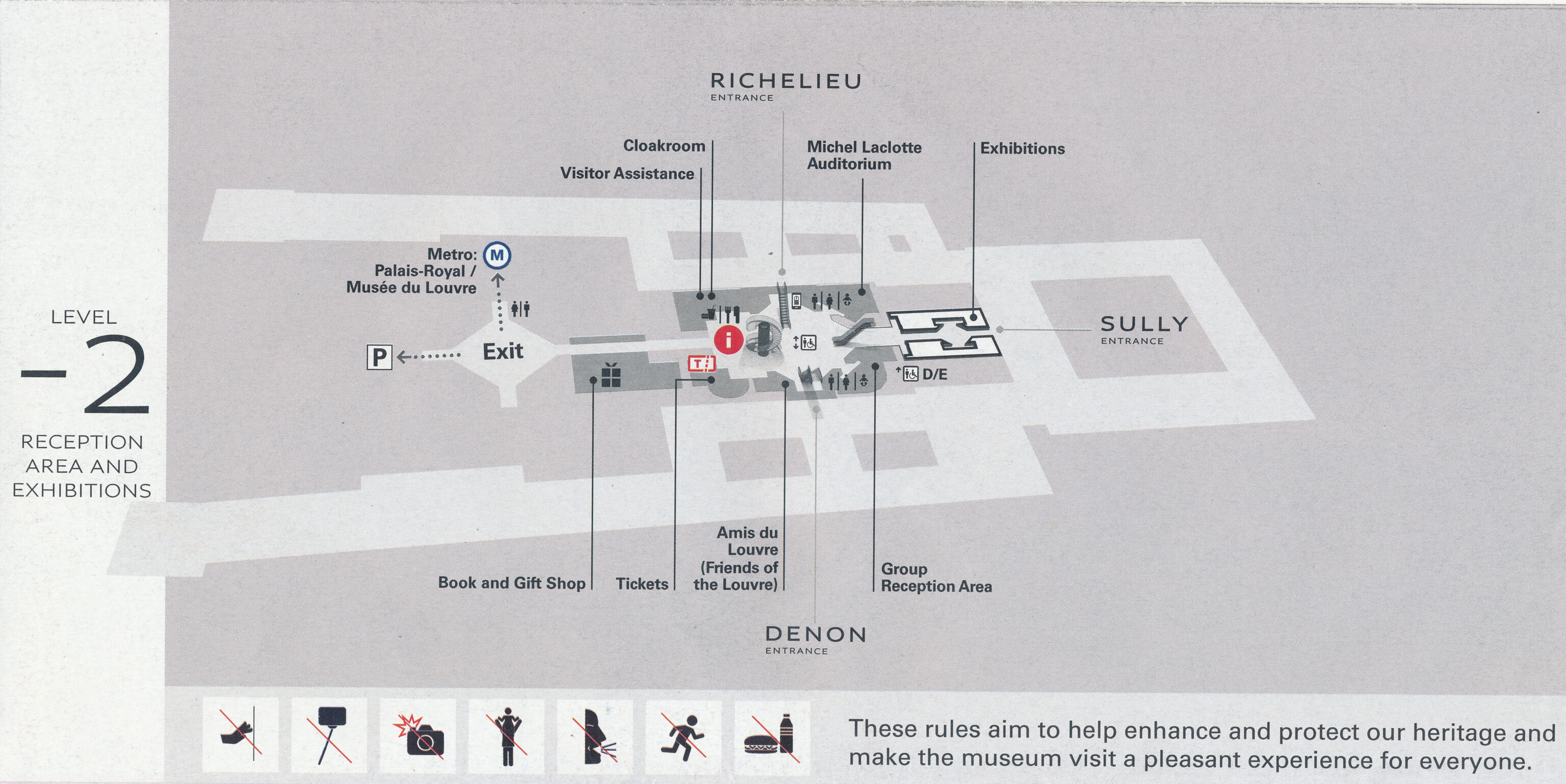
After dropping off our bags in a storage locker and picking up a map, we decided to head right for the Mona Lisa. We figured the earlier we got there, the less people there would be. There were signs that indicated the location of the Mona Lisa.
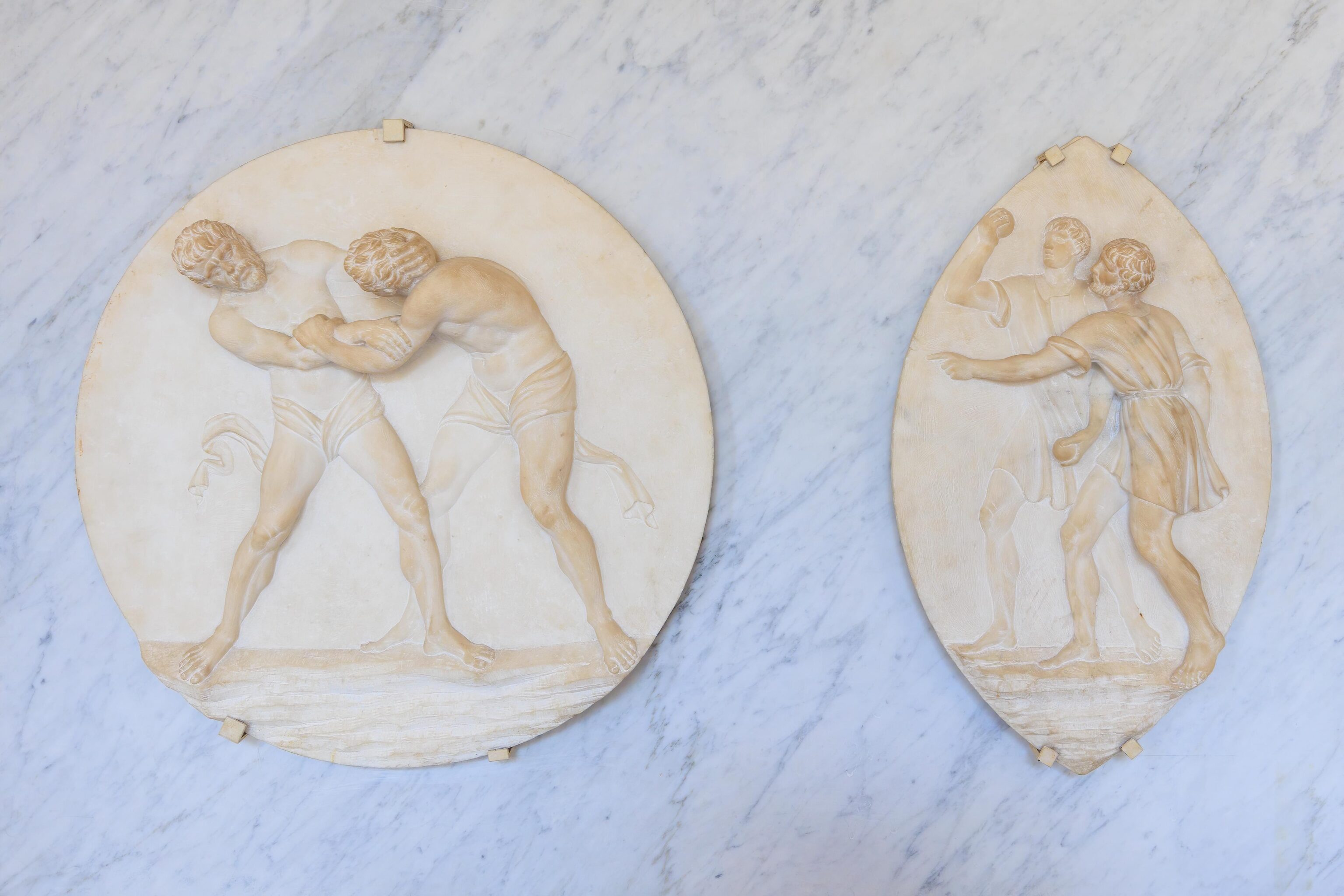
There is quite a bit of art in the Louve. There was no way we would be able to see more than a small fraction of it all. We passed by these two marble sculptures from the 18th century.
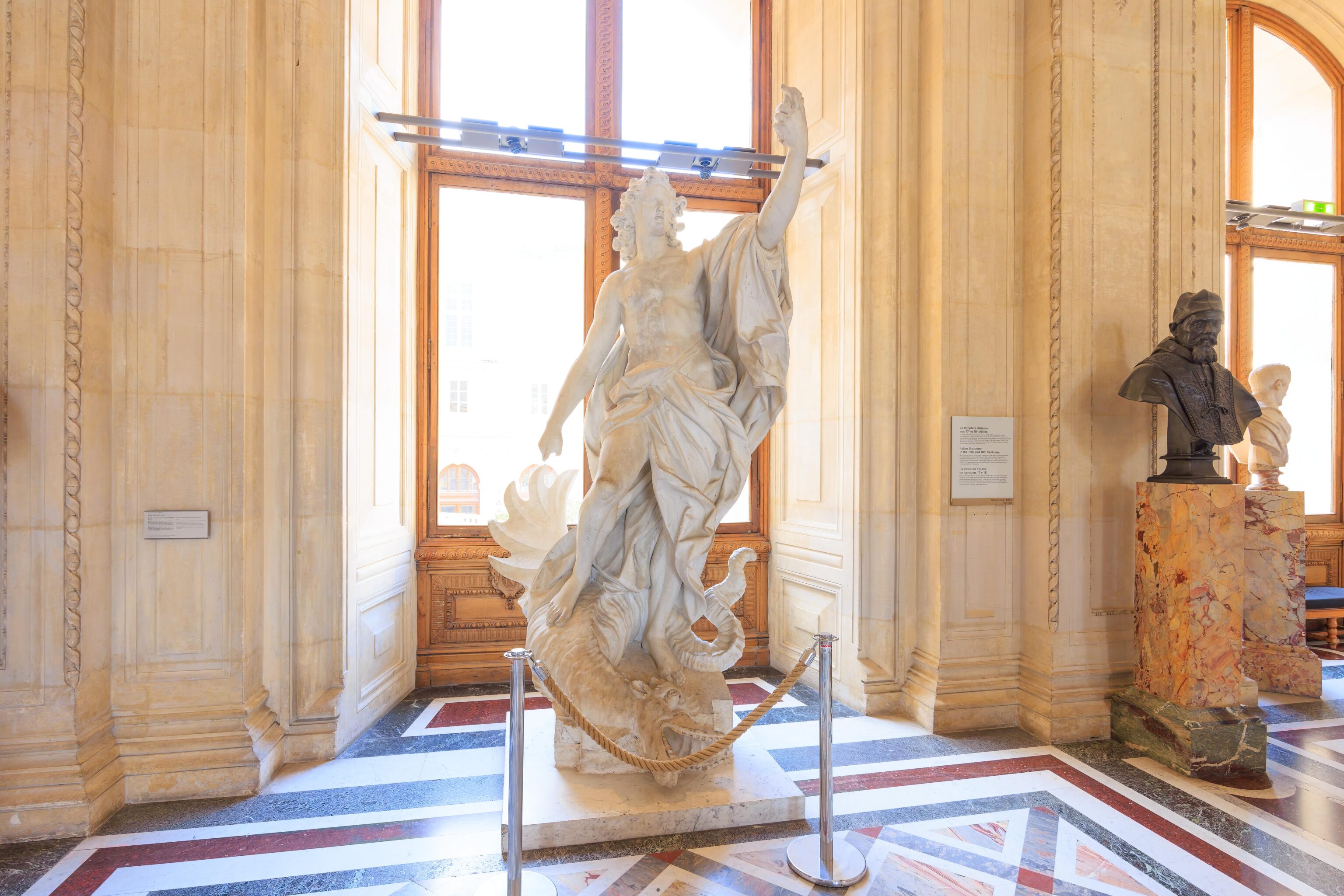
We found this statue extremely amusing. It is a depiction of the Greek mythological story of Apollo slaying Python. It looks like Apollo has one and is taking a selfie! It seems the origin of this statue is not fully known. The Louvre offers this history1:
Originally, this group must have been part of a larger ensemble, perhaps a fountain. Acquired at the end of the 19th century in the Fontainebleau region, following a family tradition. Former Ephrussi collection, then de Broglie family at the castle of Vaux-le-Pénil (Seine-et-Marne). Acquisition proposal refused on January 7, 1971. Gift from Mr. Jean Rouge, 1980 (committee of June 28, 1979, order of February 25, 1980).
There seems to be some incorrect references on the internet that label this sculpture as St. Michael slaying the dragon, an unrelated biblical verse.
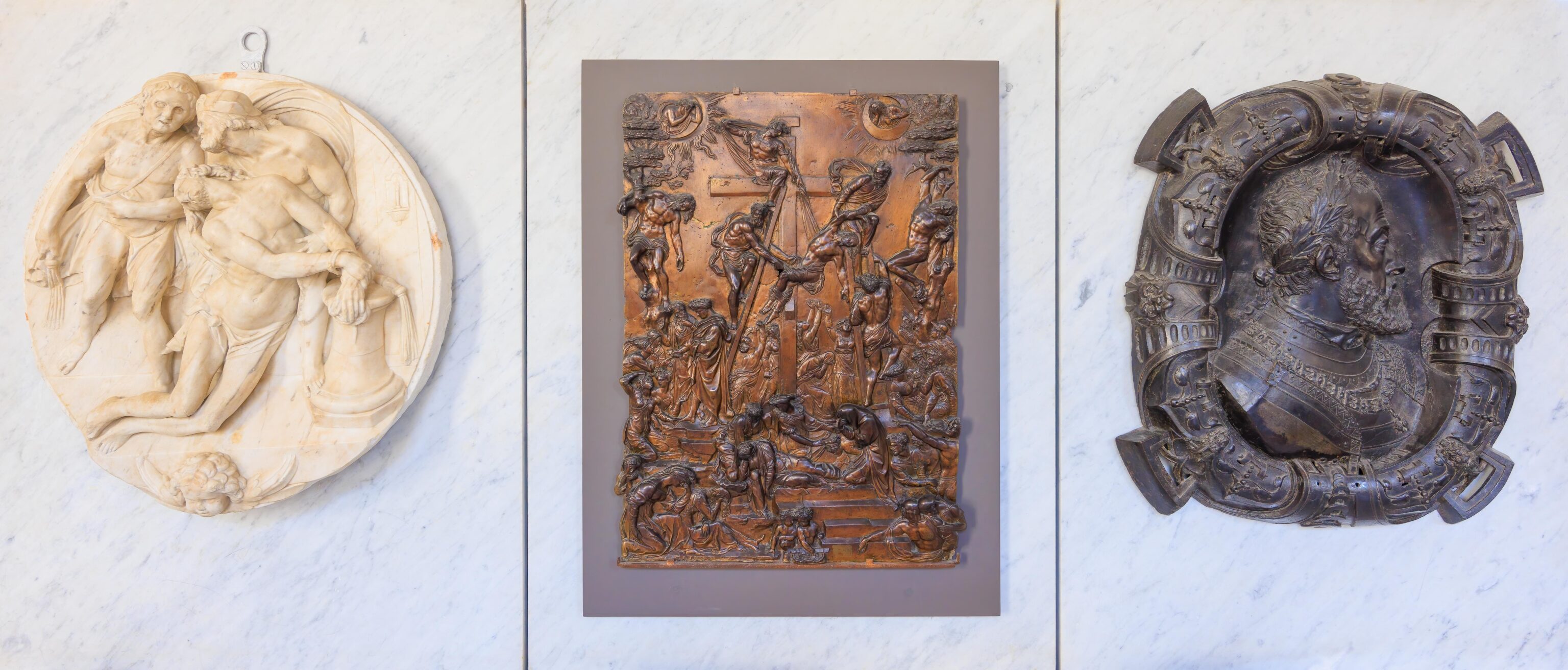
Three pieces that were mounted on the same marble wall. The right two are from the 16th century while the age of the leftmost one is unknown.
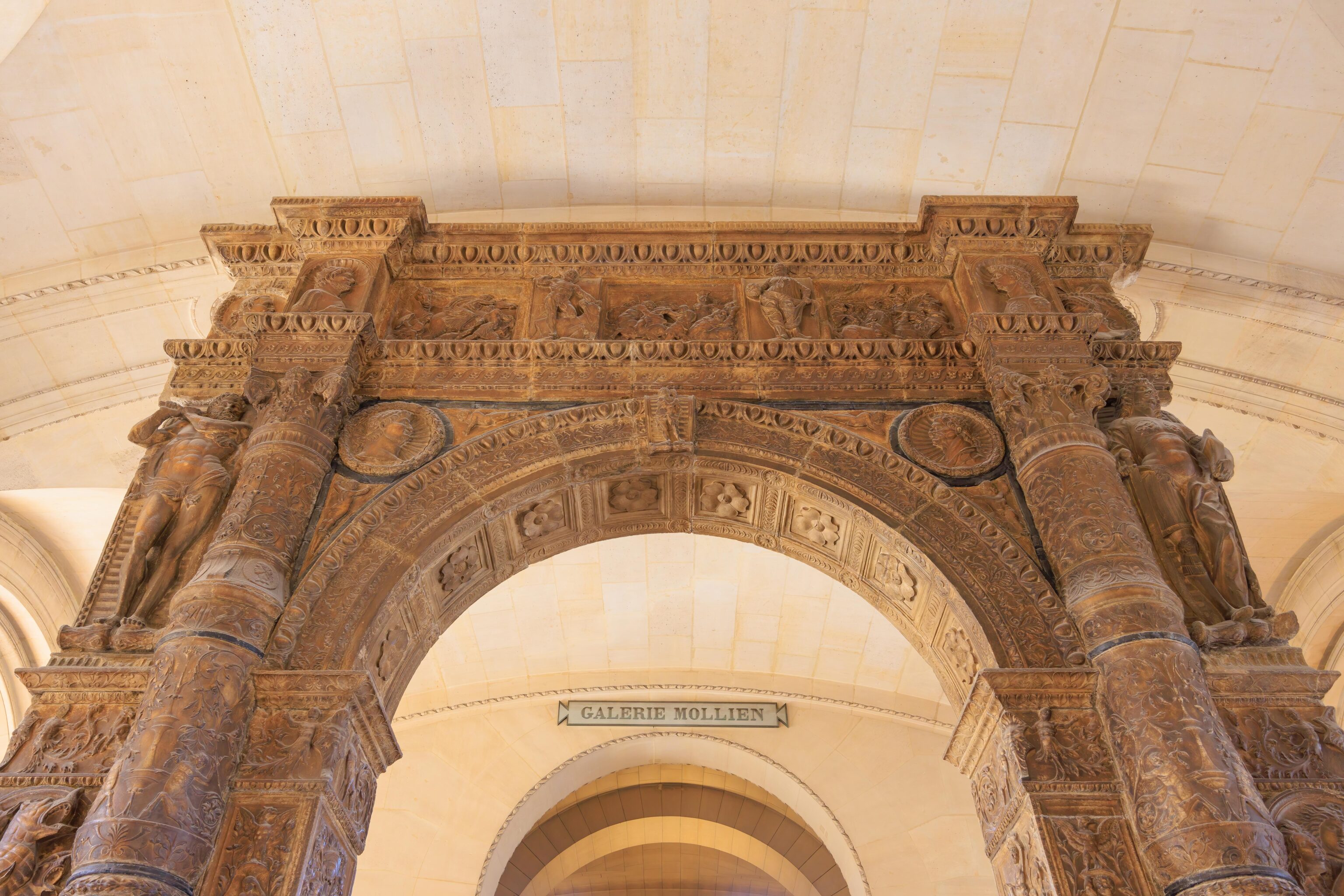
We passed under this arch that was created at the end of the 15th century to enter the next room.
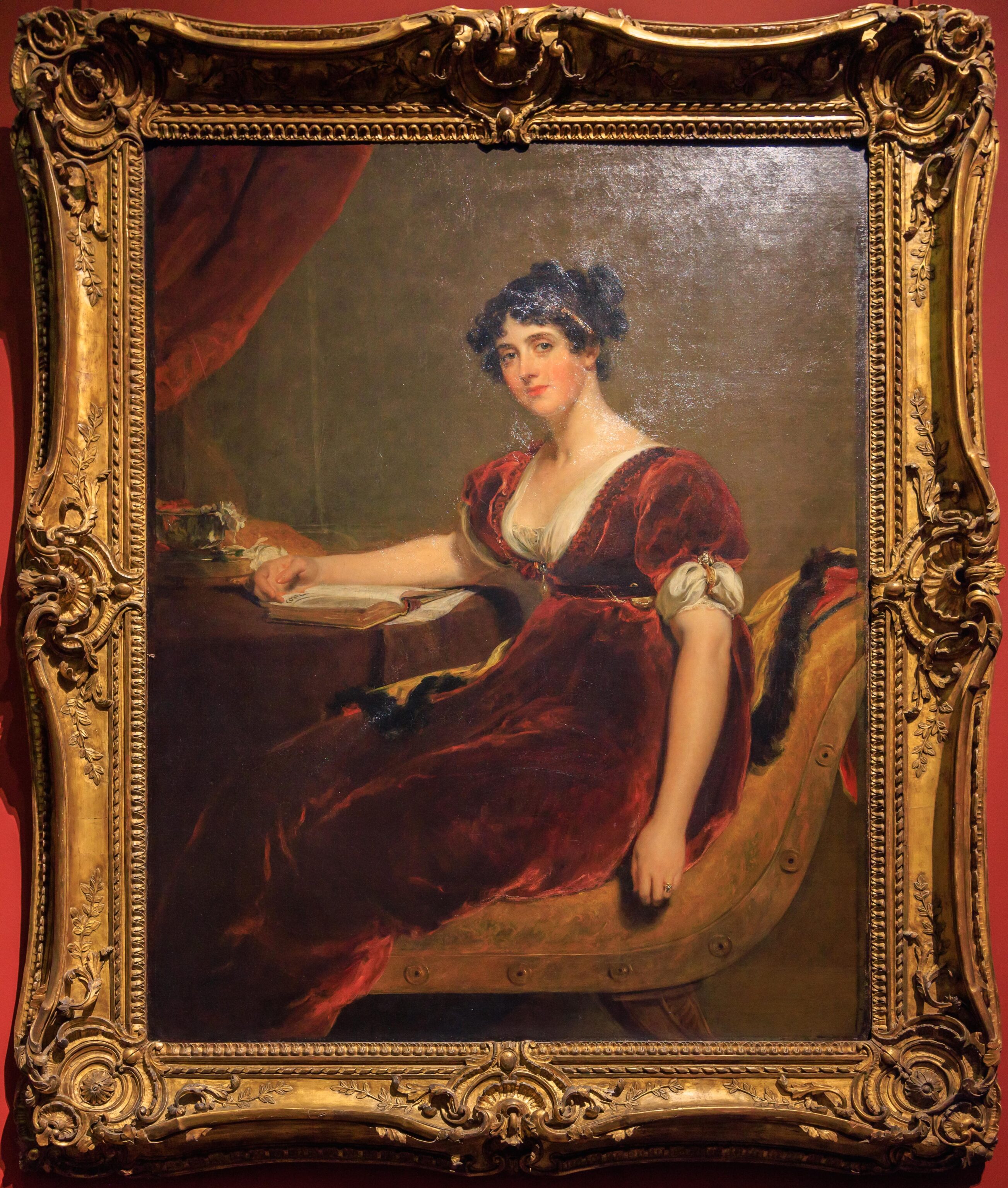
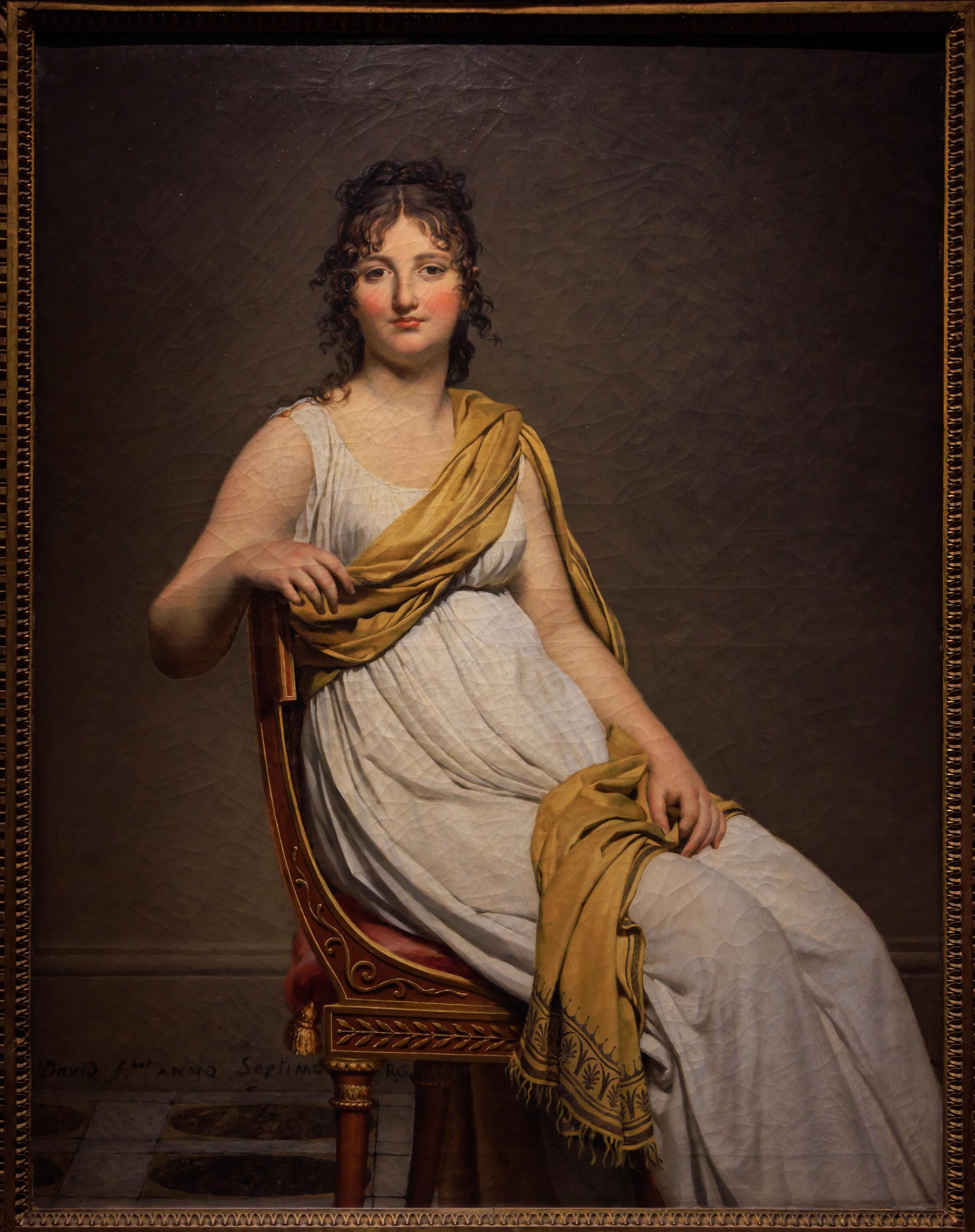
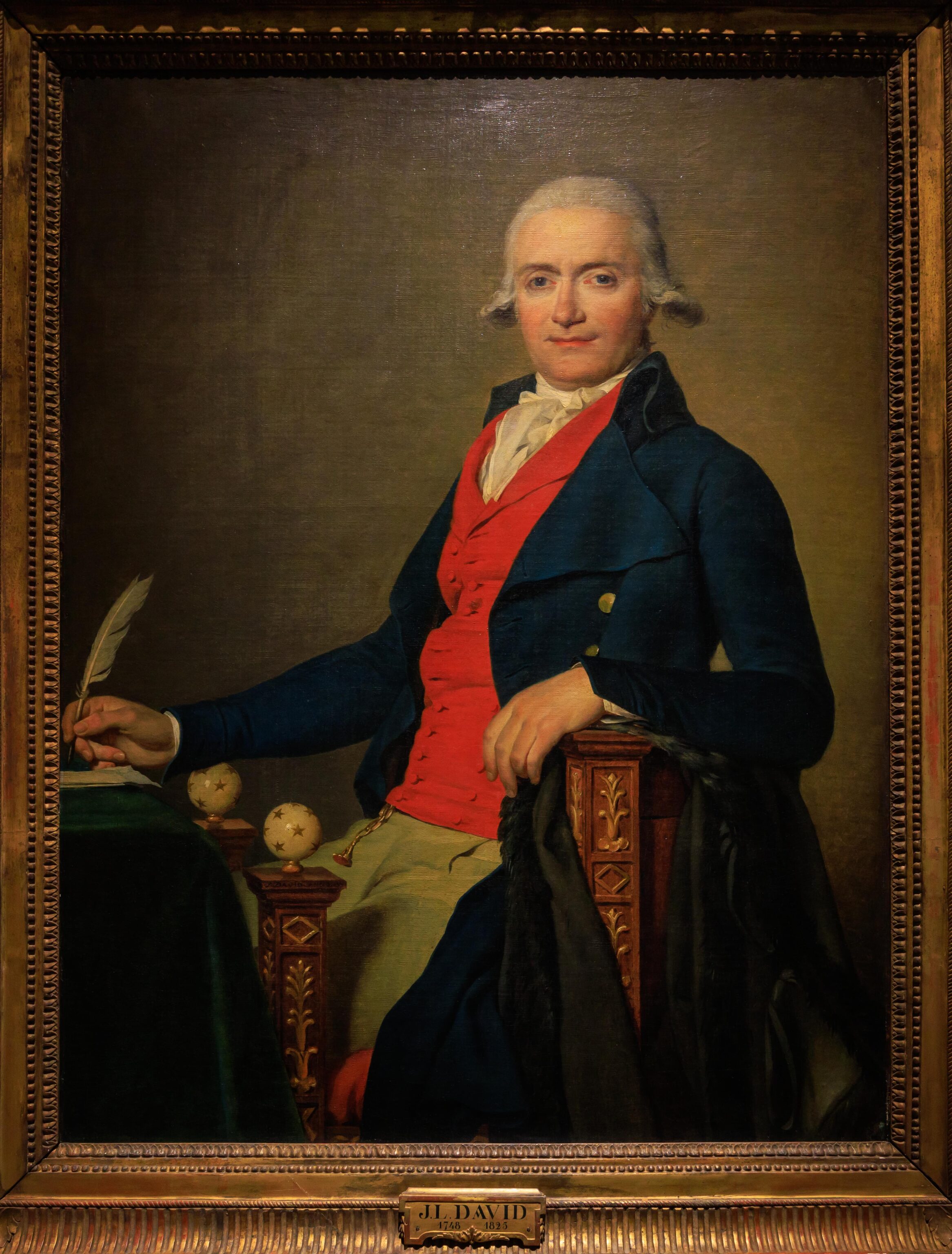
Much of the Louvre is a very dense collection of paintings. Many of them are extremely realistic and lifelike of photographic quality.
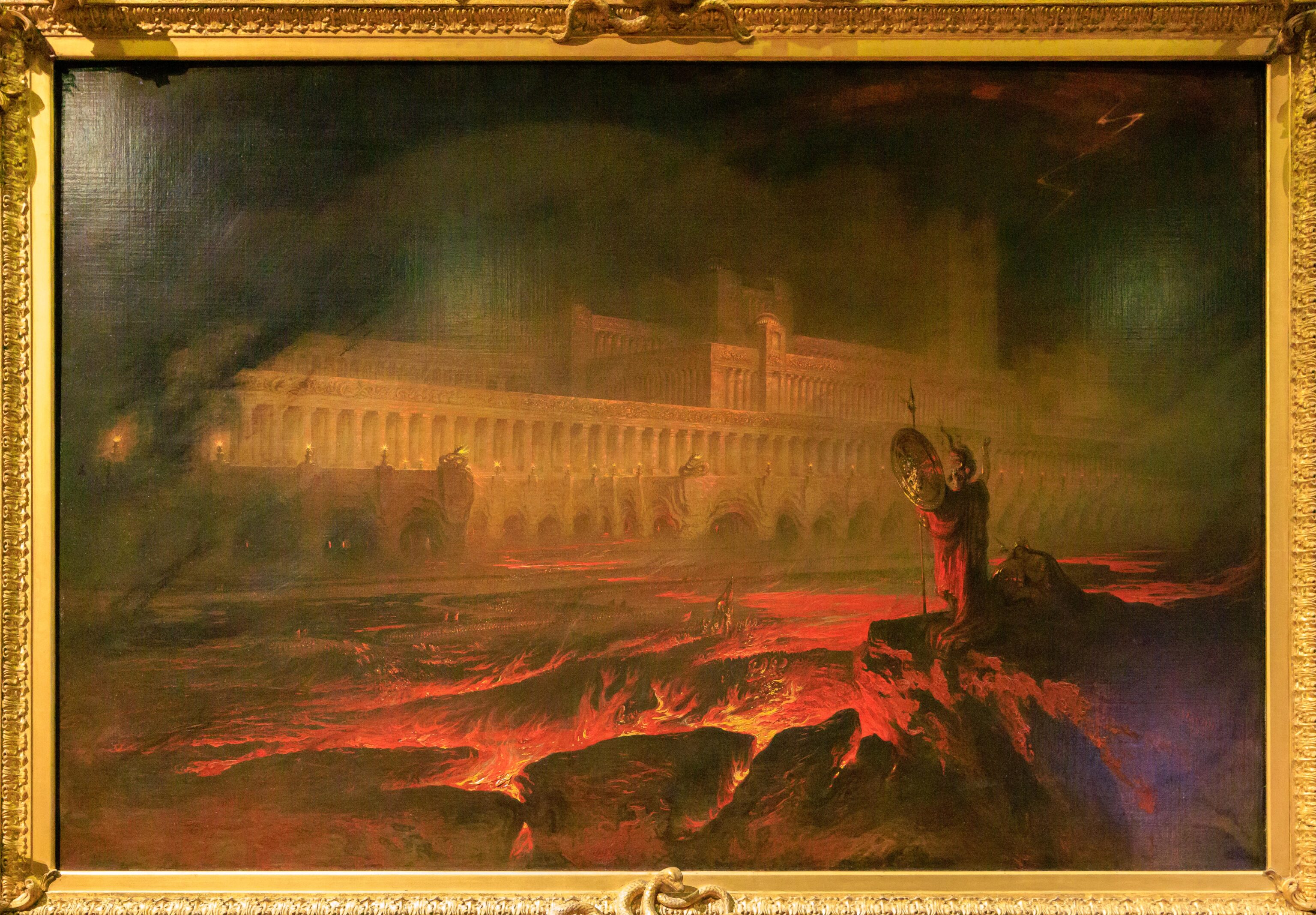
This piece is based on a biblical poem by John Milton. The Louvre offers a description (via Google Translate):
Subject taken from Paradise Lost, a biblical poem by John Milton, published for the first time in 1667 (book I, verses 710-719): Satan, standing, in the foreground on the right, creates with a breath the palace which is to shelter the meeting of all demons - designated by the word Pandemonium (or Pandeamonium) invented by Milton; we can see them below, in the glowing lava. John Martin had produced two engravings (in 1824 then in 1831) illustrating this scene, which he reproduced, modifying them, in R.F.2006-21.- The frame, decorated with snakes and dragons, was drawn by Martin himself. even. There is a counterpart to the composition, The Celestial City (part collection) also exhibited at the Royal Academy in 1841 (n°428).
In this description, we learn that the word pandemonium was created by John Milton. Oxford Languages provides this description of the etymology:
mid 17th century: modern Latin (denoting the place of all demons, in Milton's Paradise Lost), from pan- ‘all’ + Greek daimōn ‘demon’.
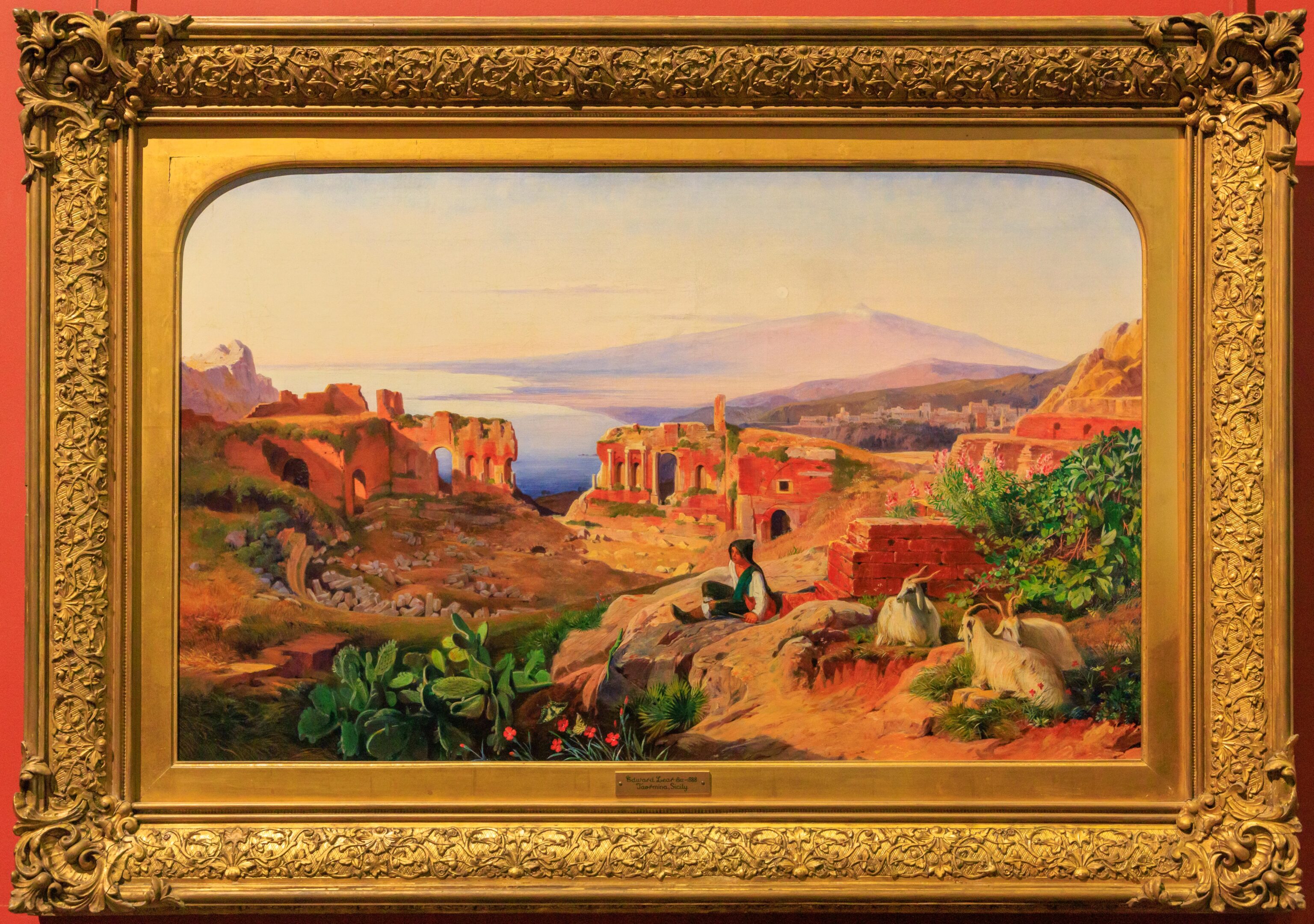
A sign describes this piece:
Painted after a trip the artist made to Sicily in 1847.
Thank goodness for photography! Imagine having to paint everything you saw on a trip!
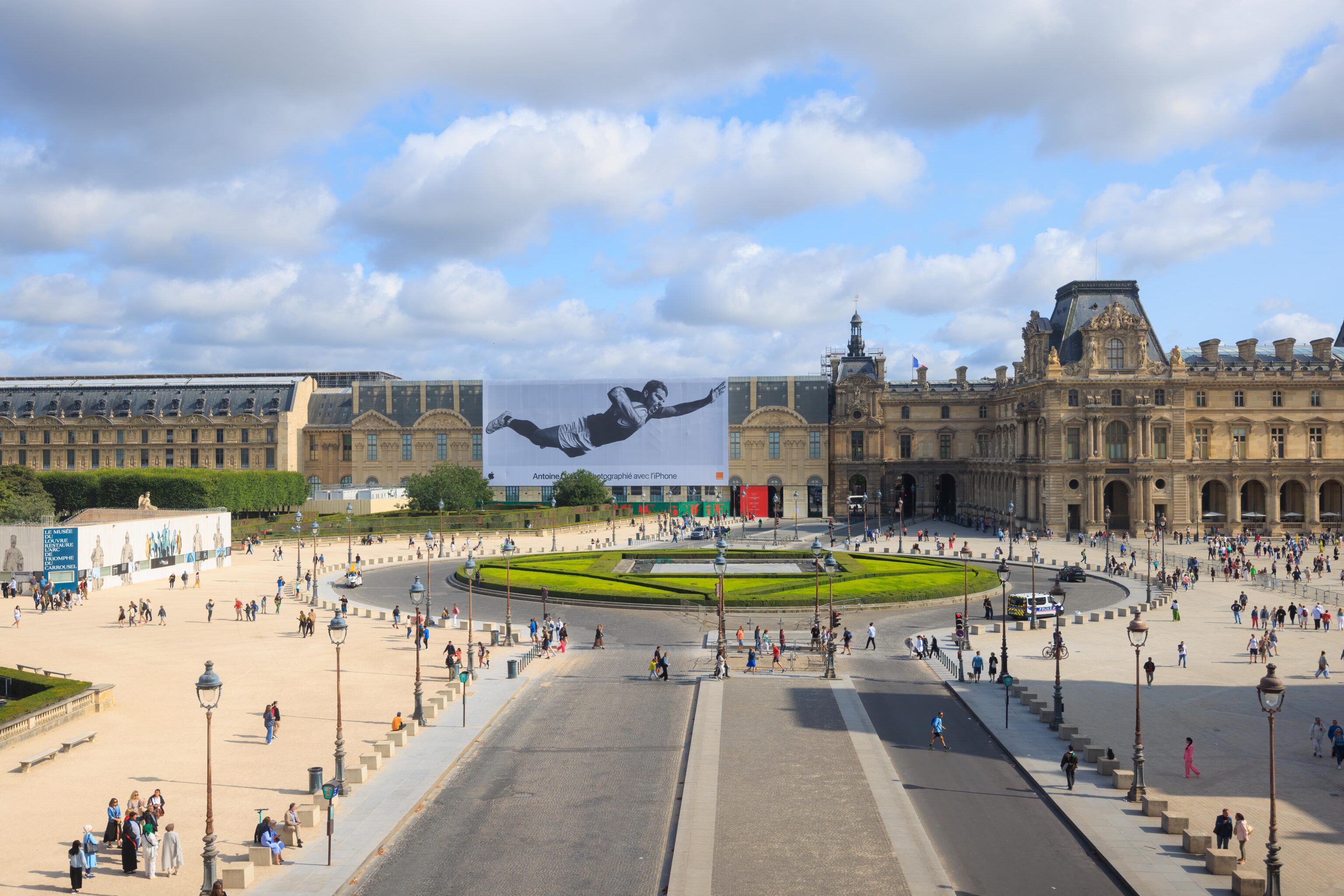
There are various windows throughout the Louvre. There is some renovation activity on the opposite side behind the huge Apple ad. While some scaffolding is visible, the majority is hidden behind a facade.
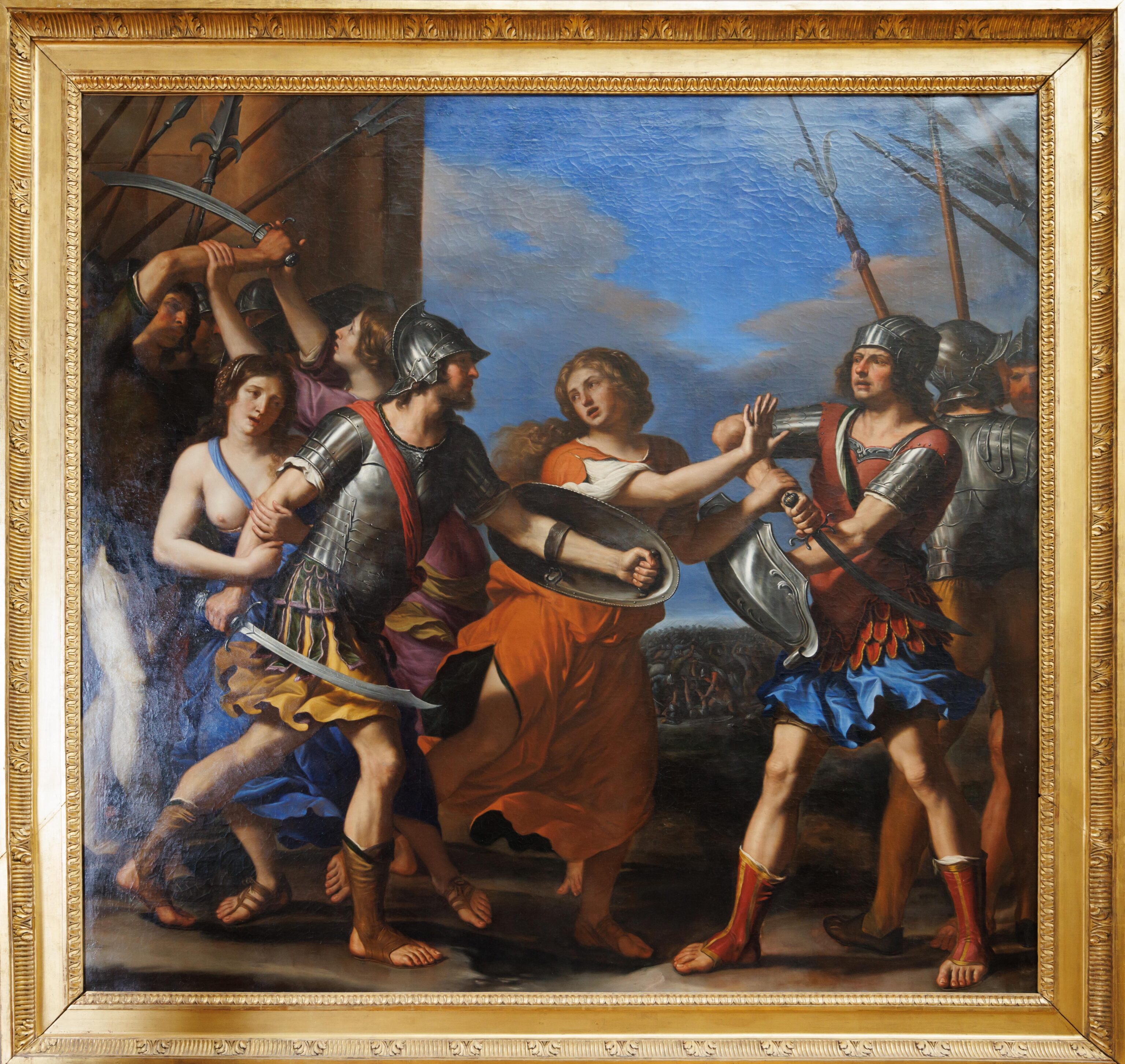
This painting was rather colorful.
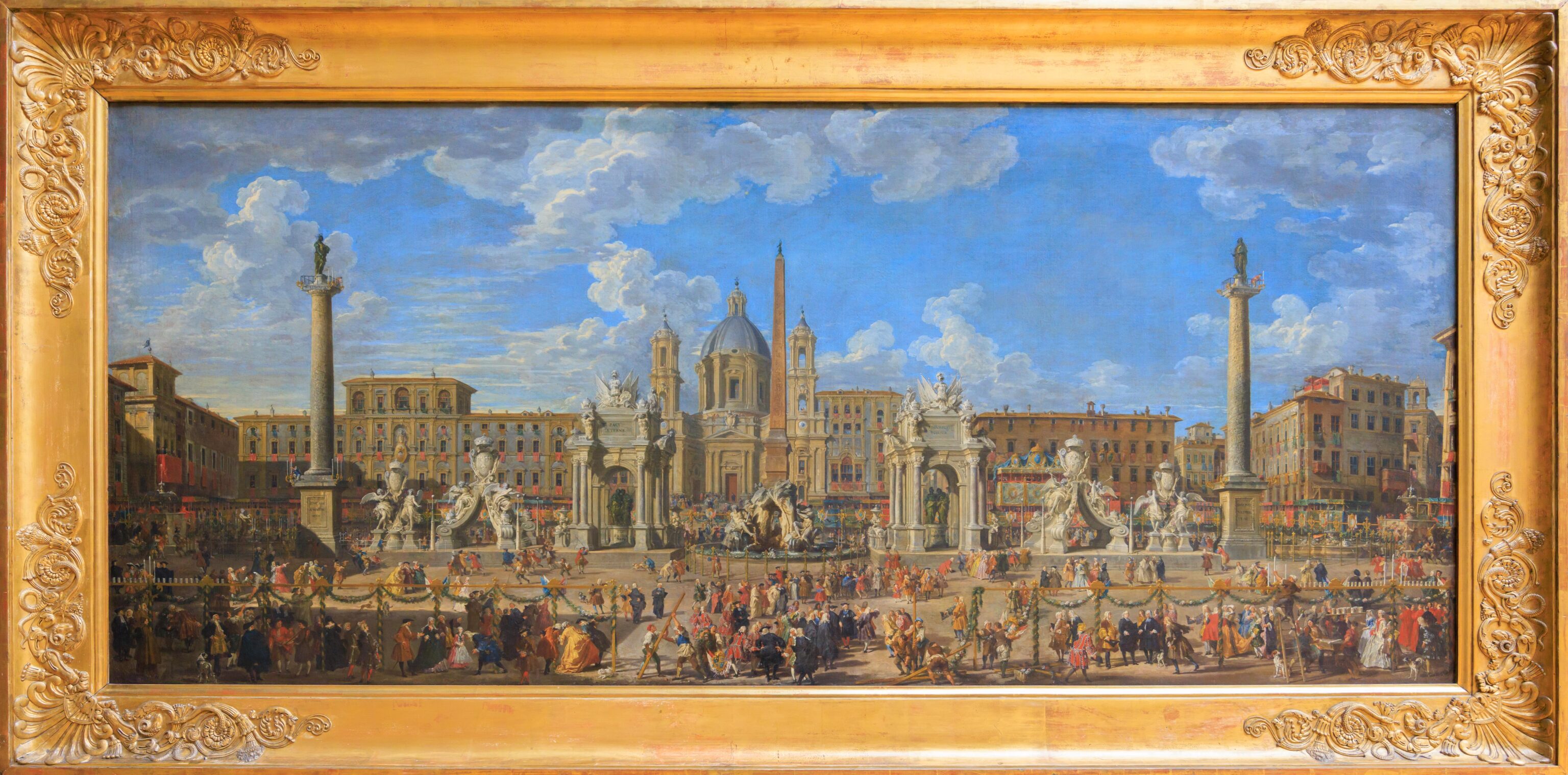
These days, one simply takes a photograph!
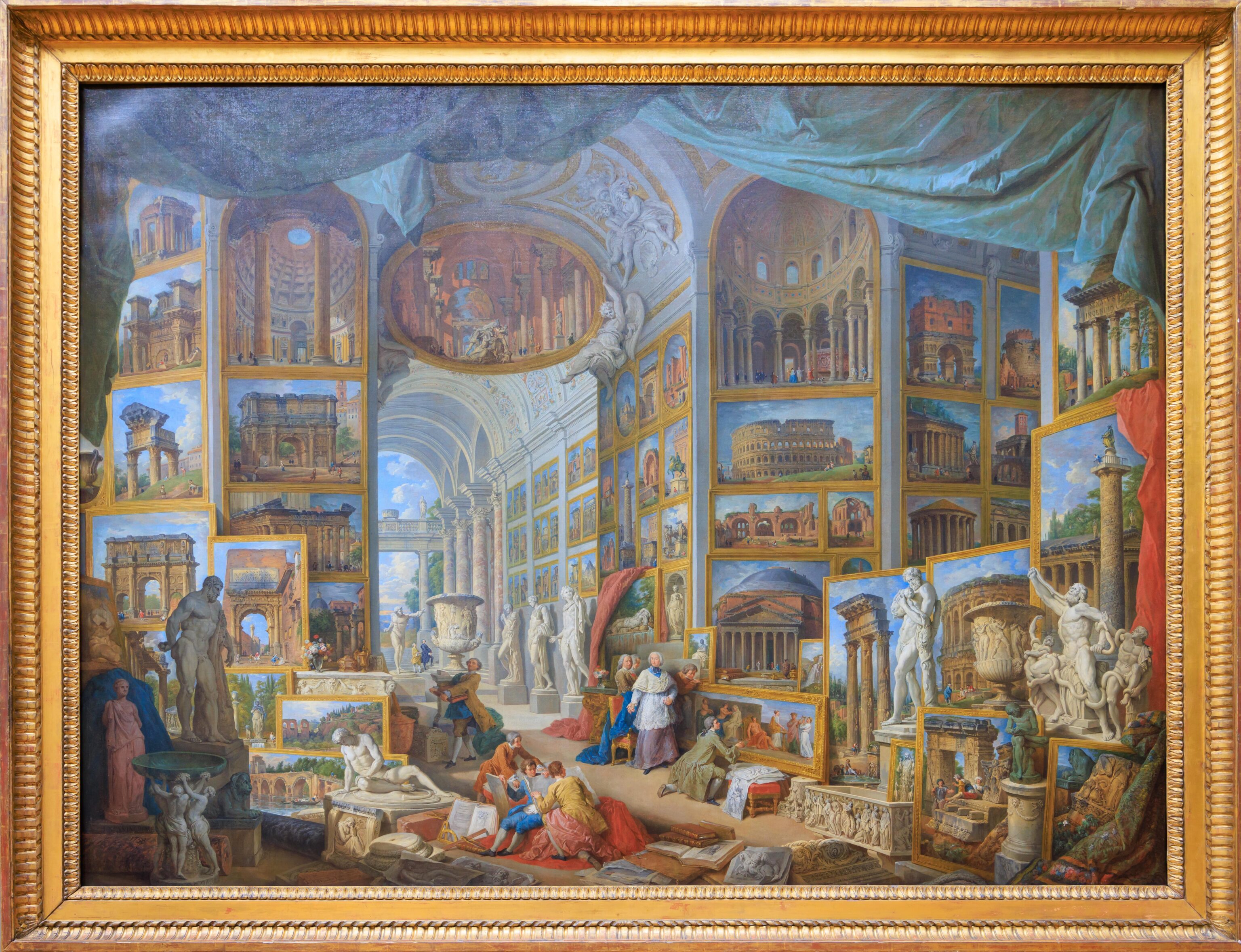
One of three similar works by Panini. While the Louvre is packed with art, it isn’t this densely packed!
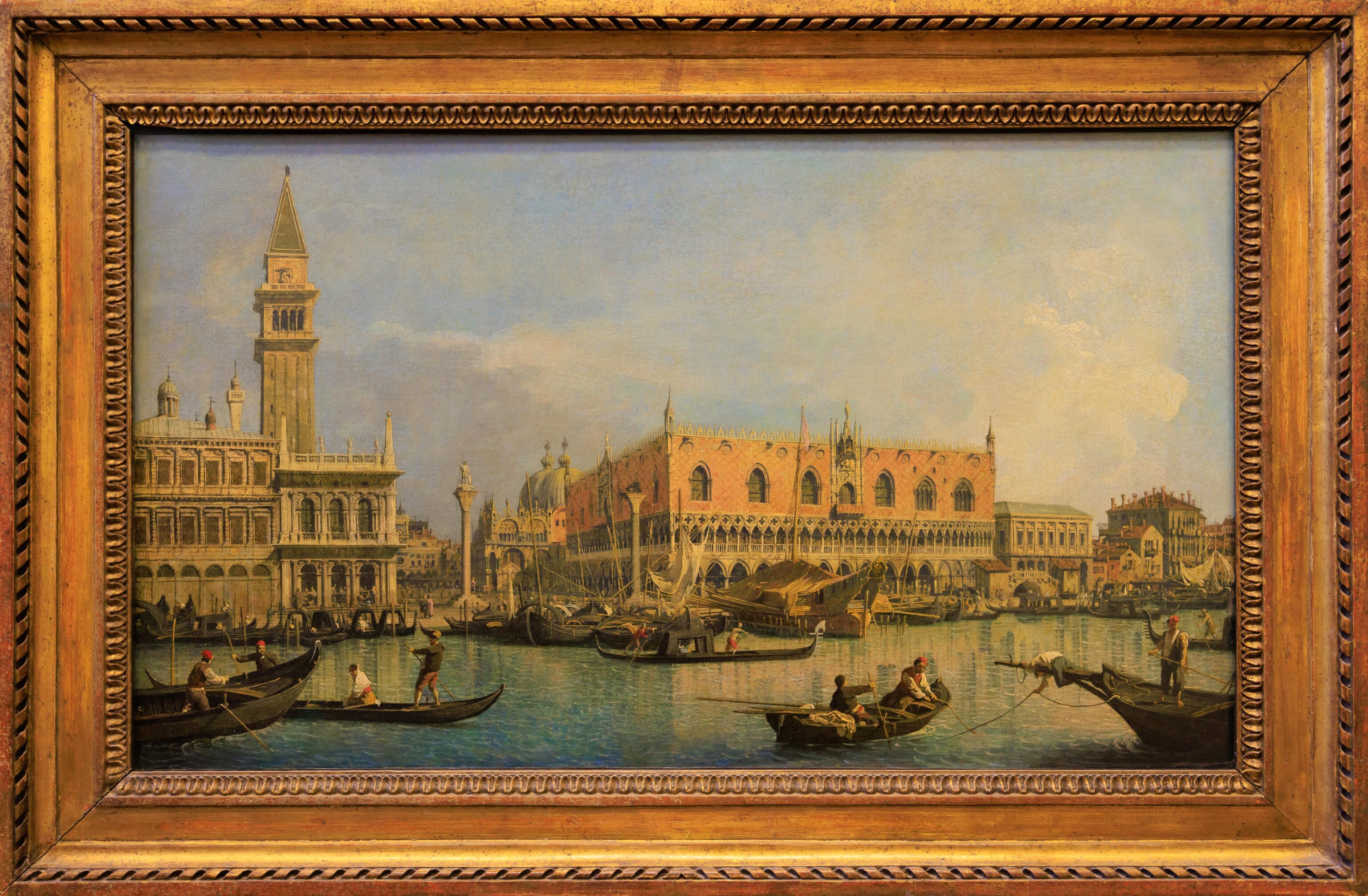
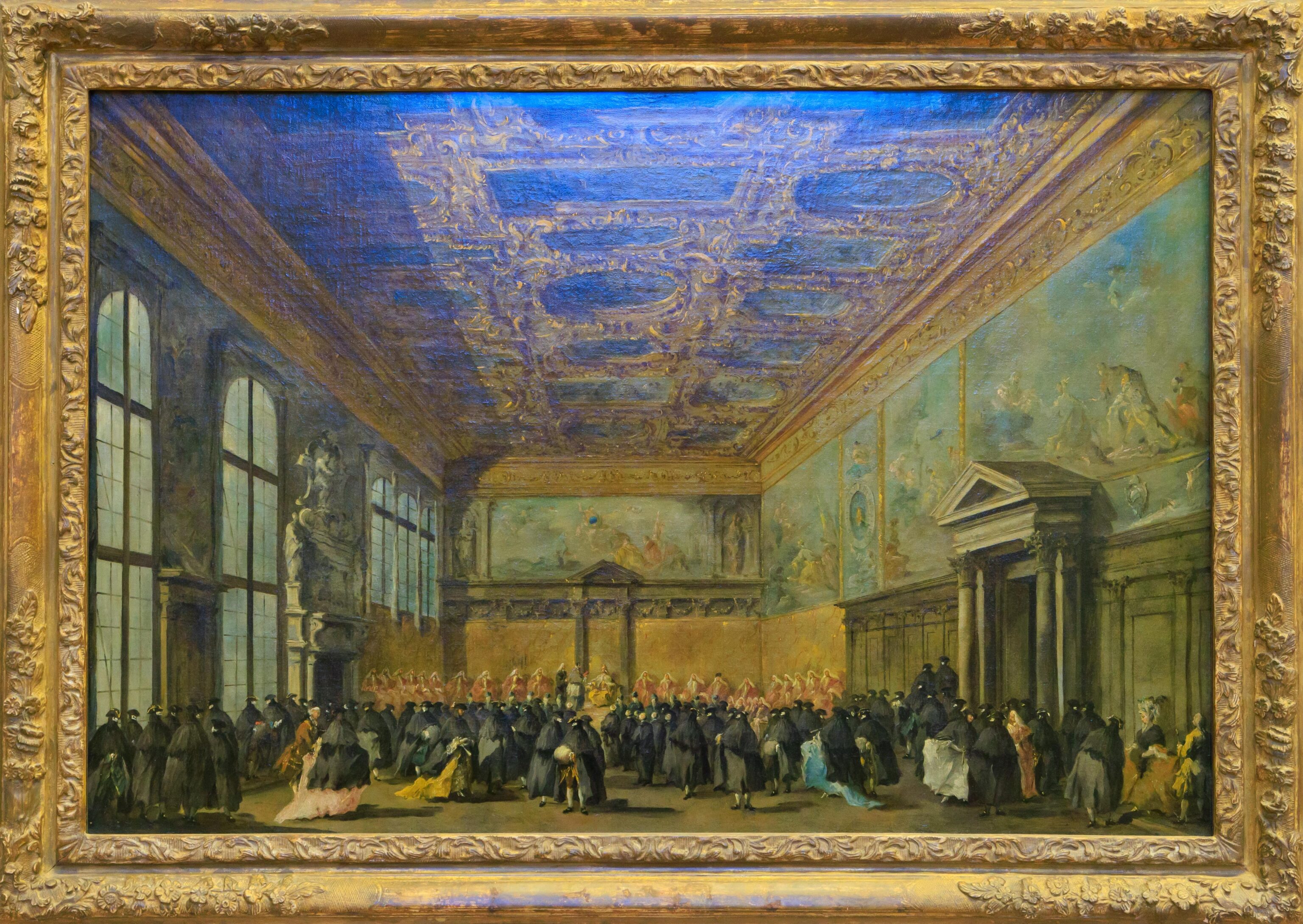
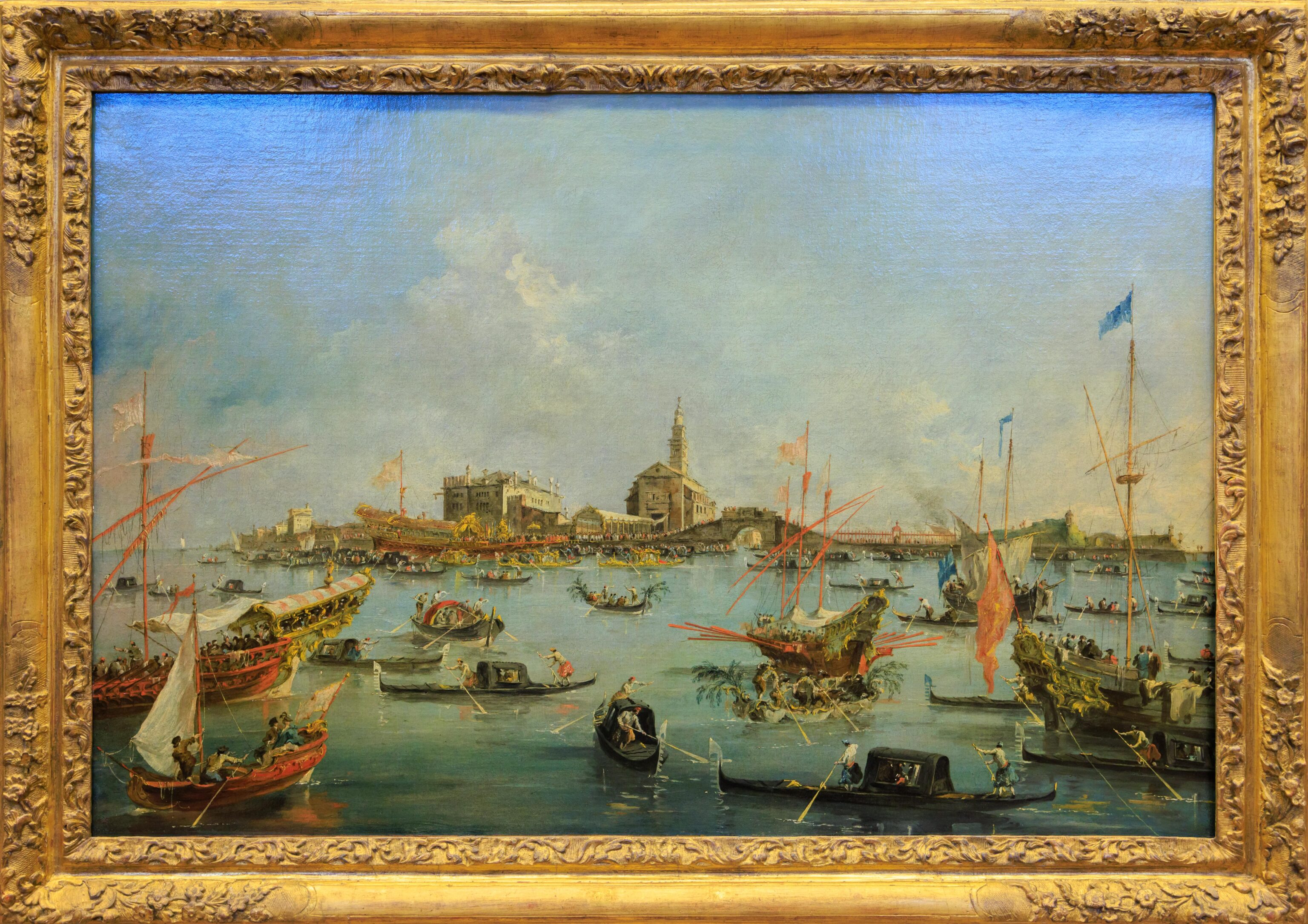
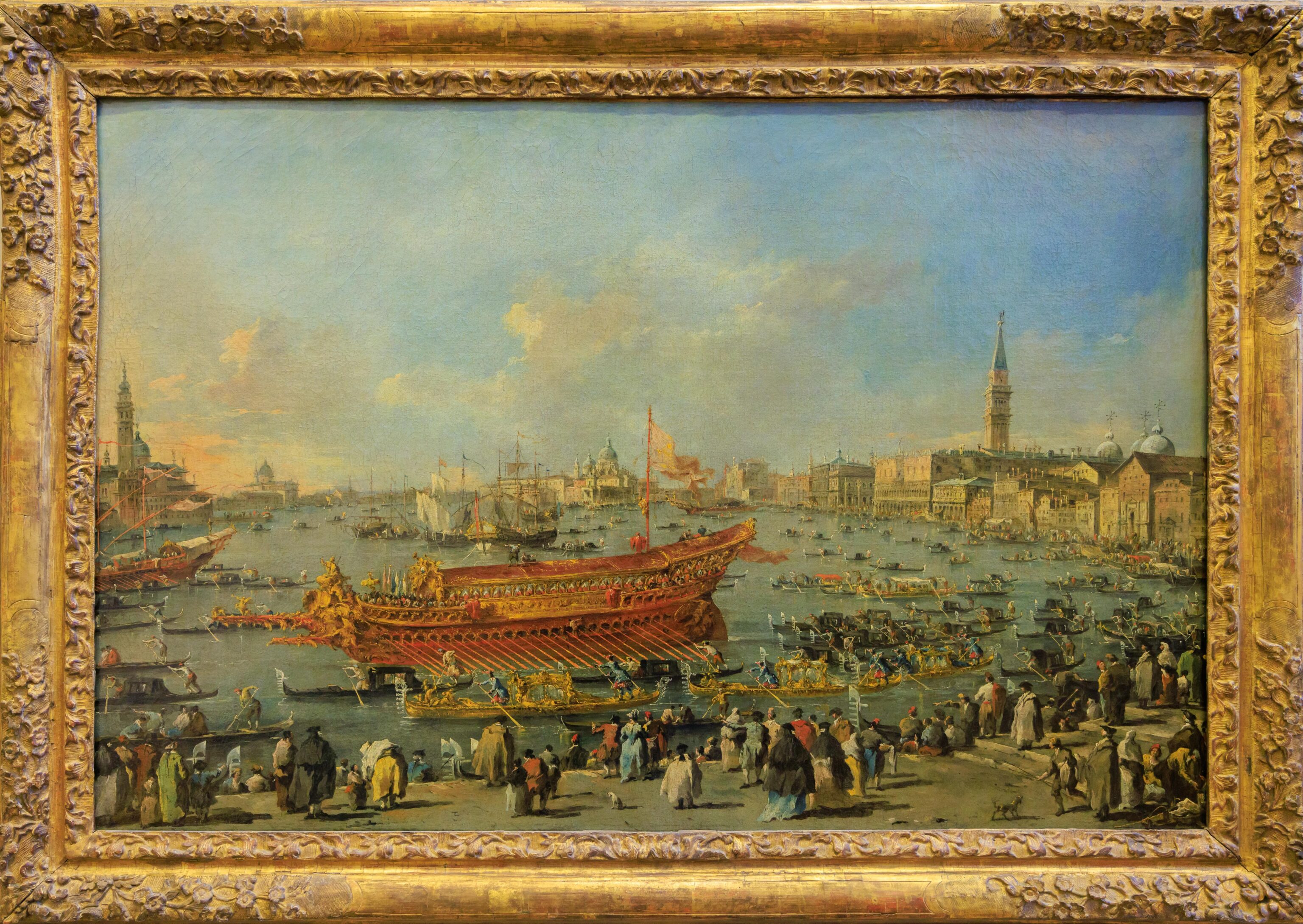
The galleries in the Louvre are themed, though we weren’t really paying too much attention to that. We were still trying to get to the Mona Lisa but ended up taking a wrong turn at some point.
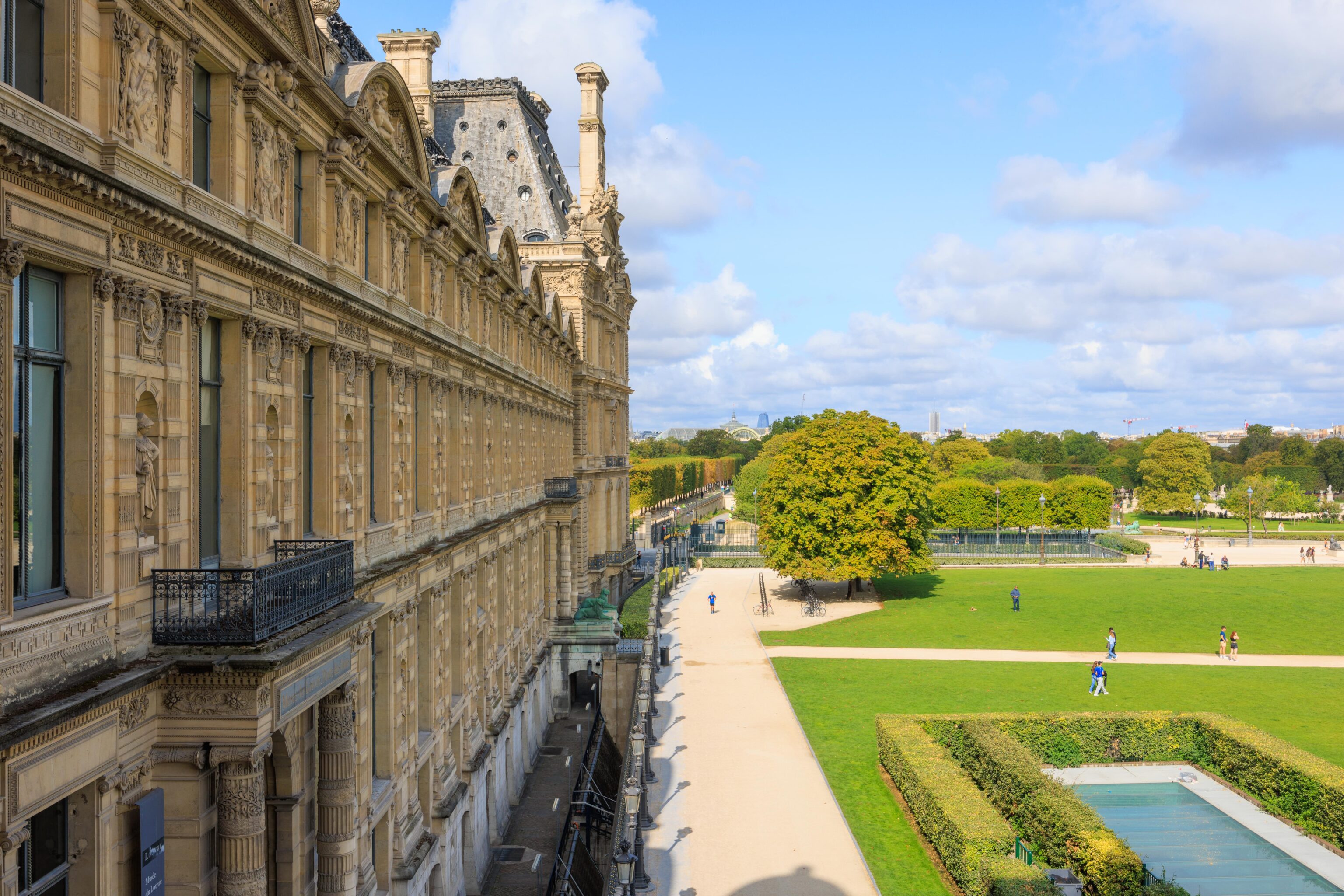
The view to the west from a window.
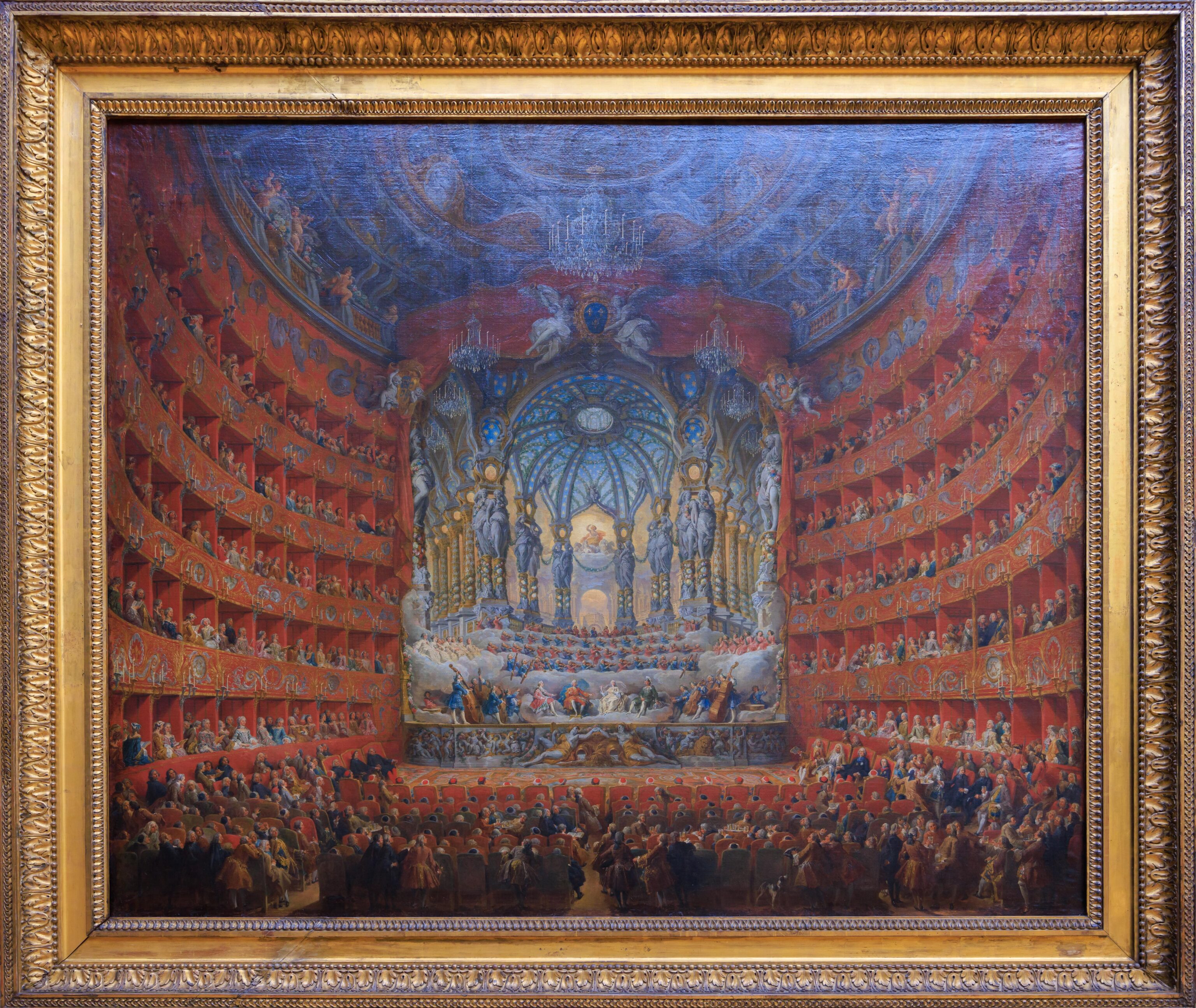
Another work by Panini. Wikipedia has a good description of this piece. It seems to indicate that this is an actual event that was held in the Teatro Argentina, a theater in Rome.
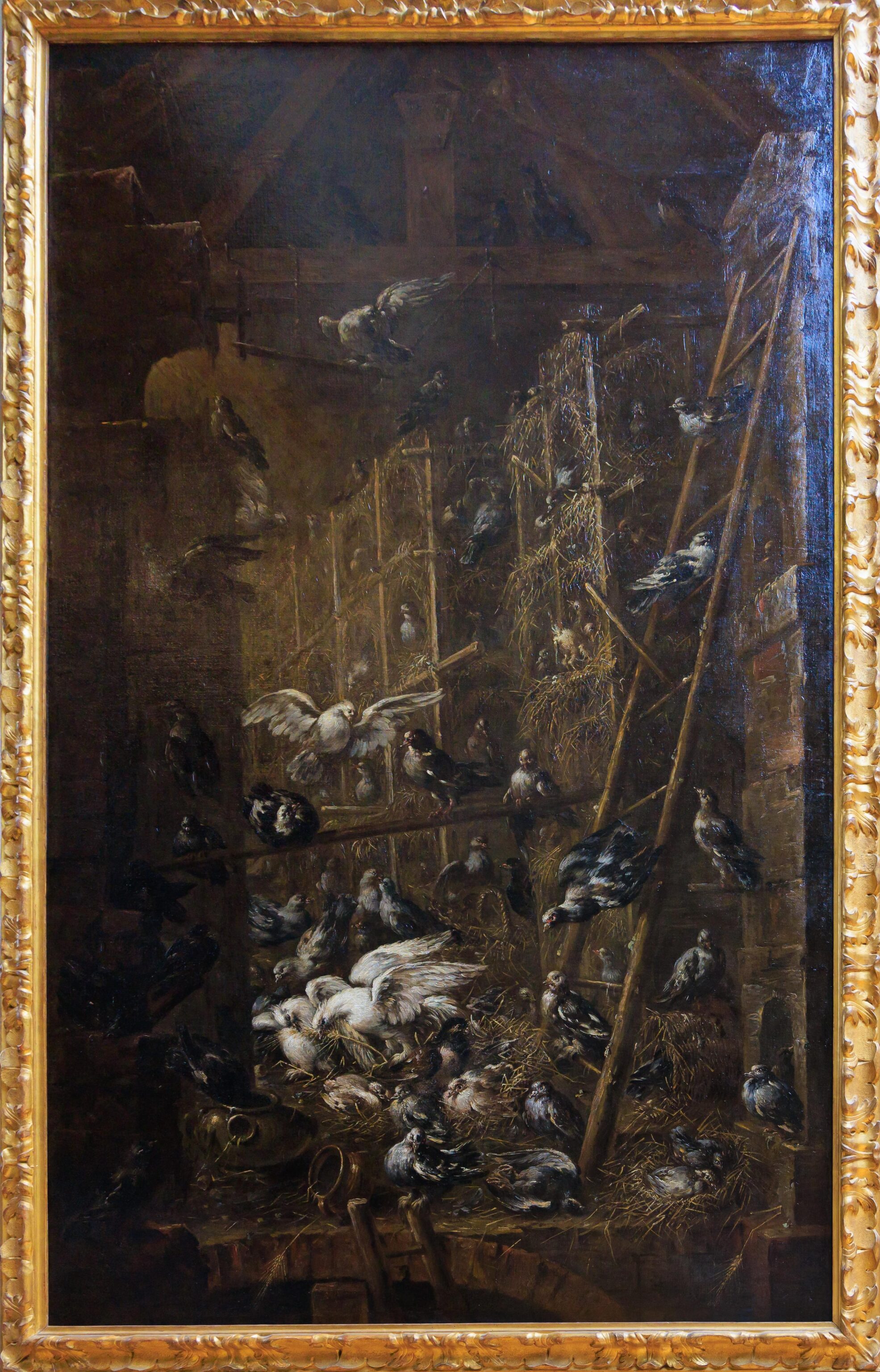
We recognized the subject of this photo the interior of a dovecote. We were introduced to the concept of a dovecote a few months ago when we visited Minster Lovell Hall and Dovecote in the UK.
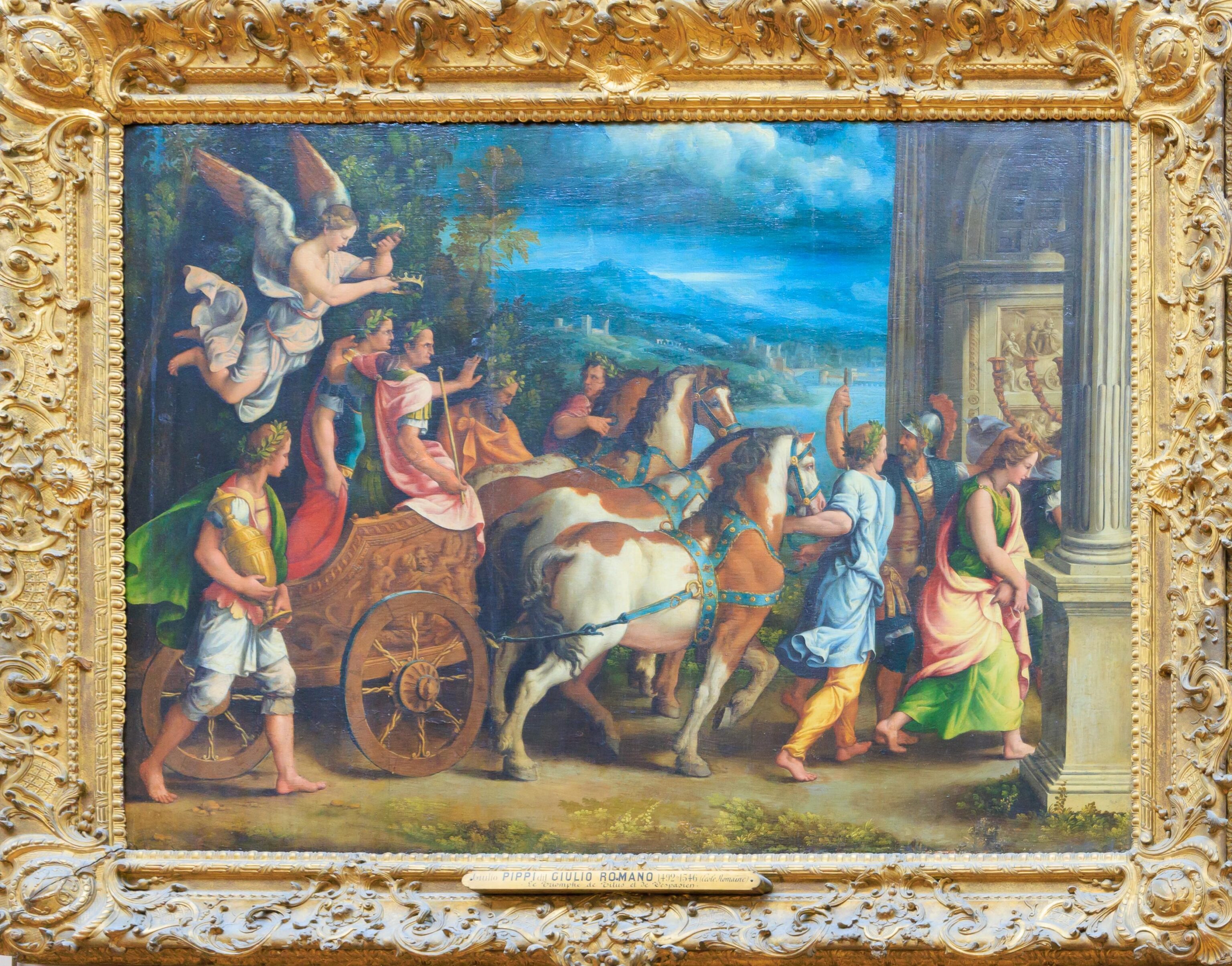
A colorful and older piece than most of the other art that we’ve photographed.
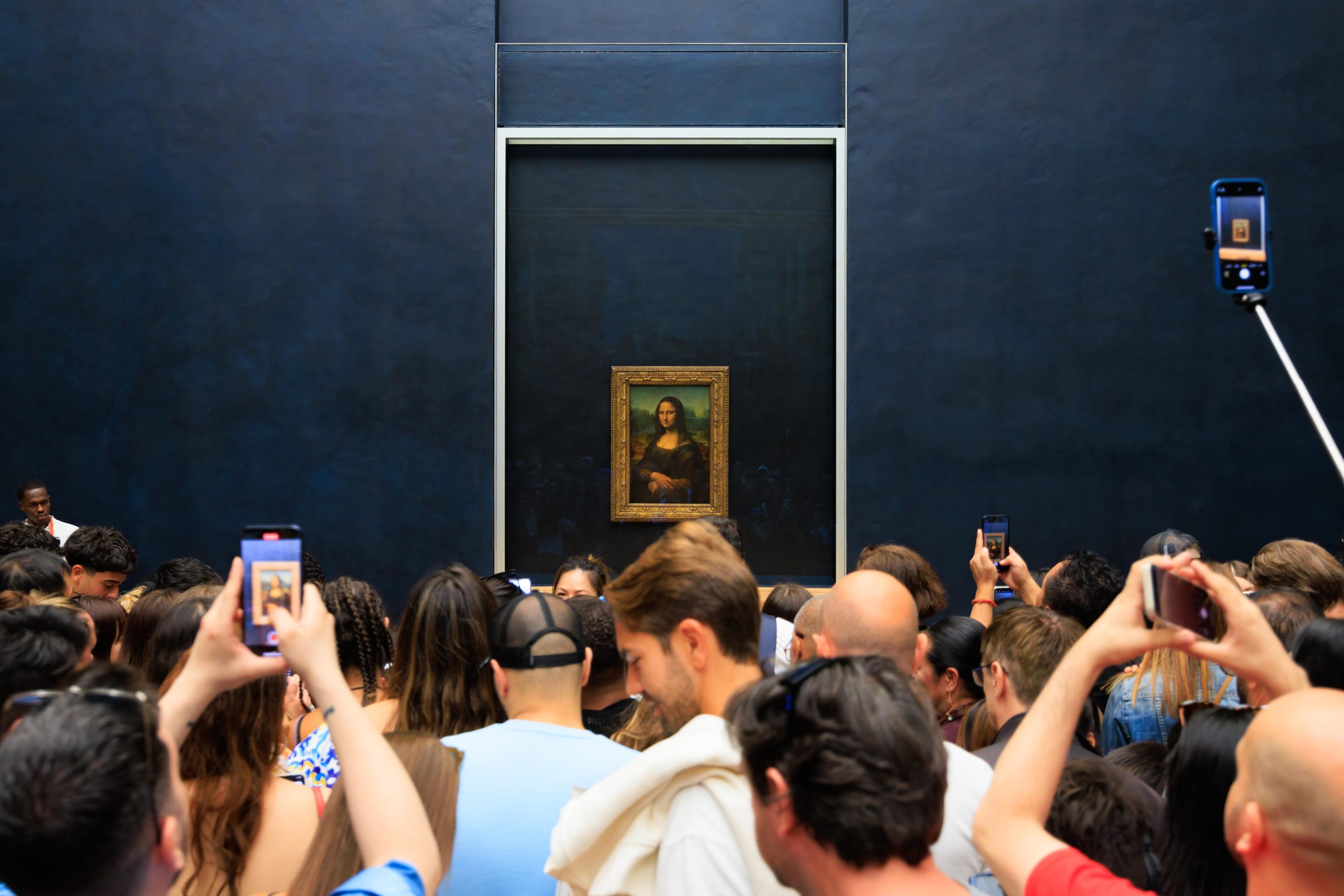
Finally, we made it! The Mona Lisa! The most famous painting of all time. There are two things that one remembers after seeing it. The ridiculous crowd of people waiting to get closer, and how tiny the painting is.
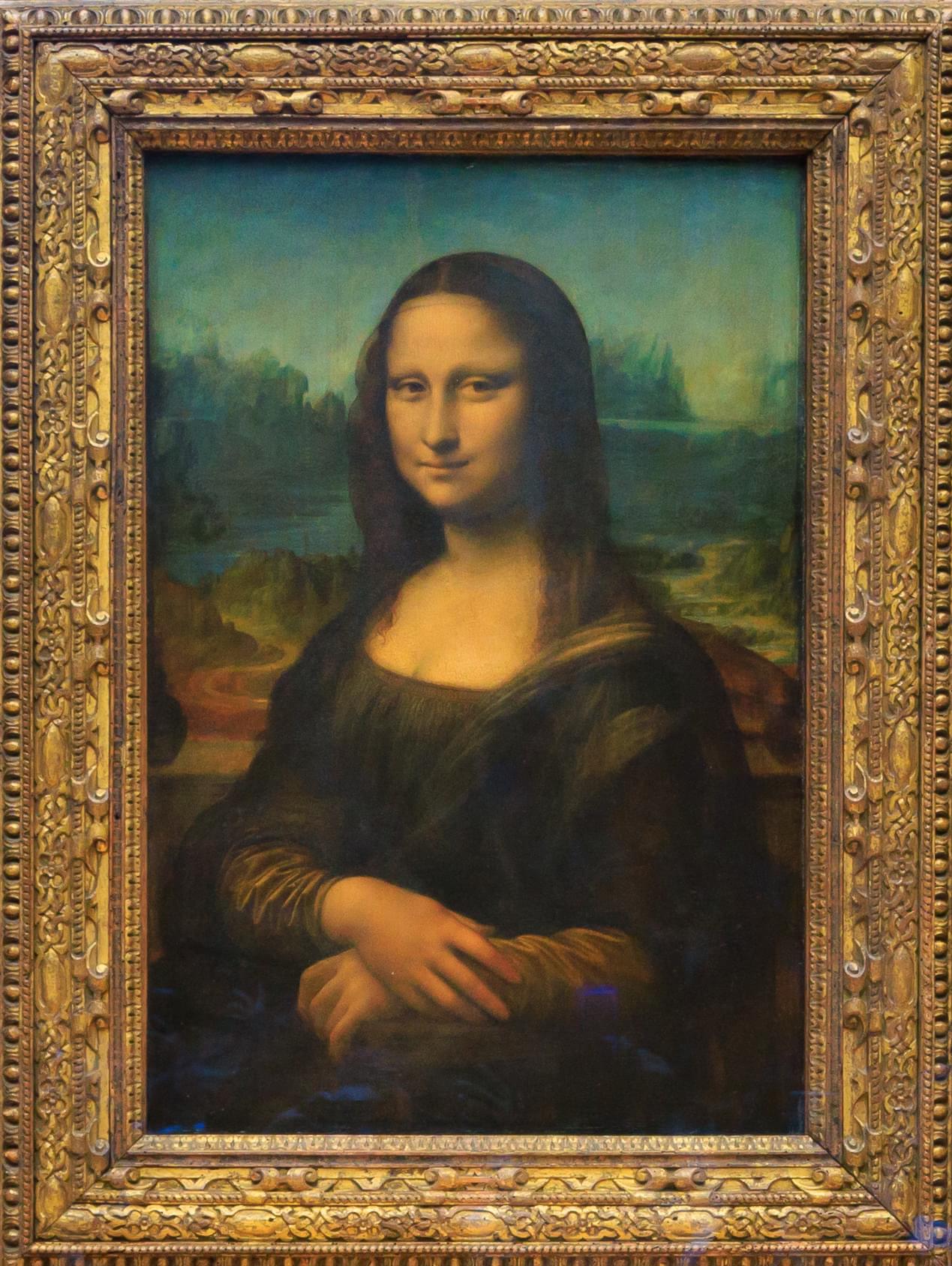
We did wade through the masses of people to get a closer look. The way it works is that there is a rope barrier in front of the painting. There are staff at the front who will open the barrier to let the first row of people out once they are done looking. So the mass slowly advances.
This photo is a crop. She was still sufficiently far away that a short telephoto lens would have been more appropriate. We did actually bring one but left it in the storage locker. After all, why would anyone need a telephoto lens in an art museum!
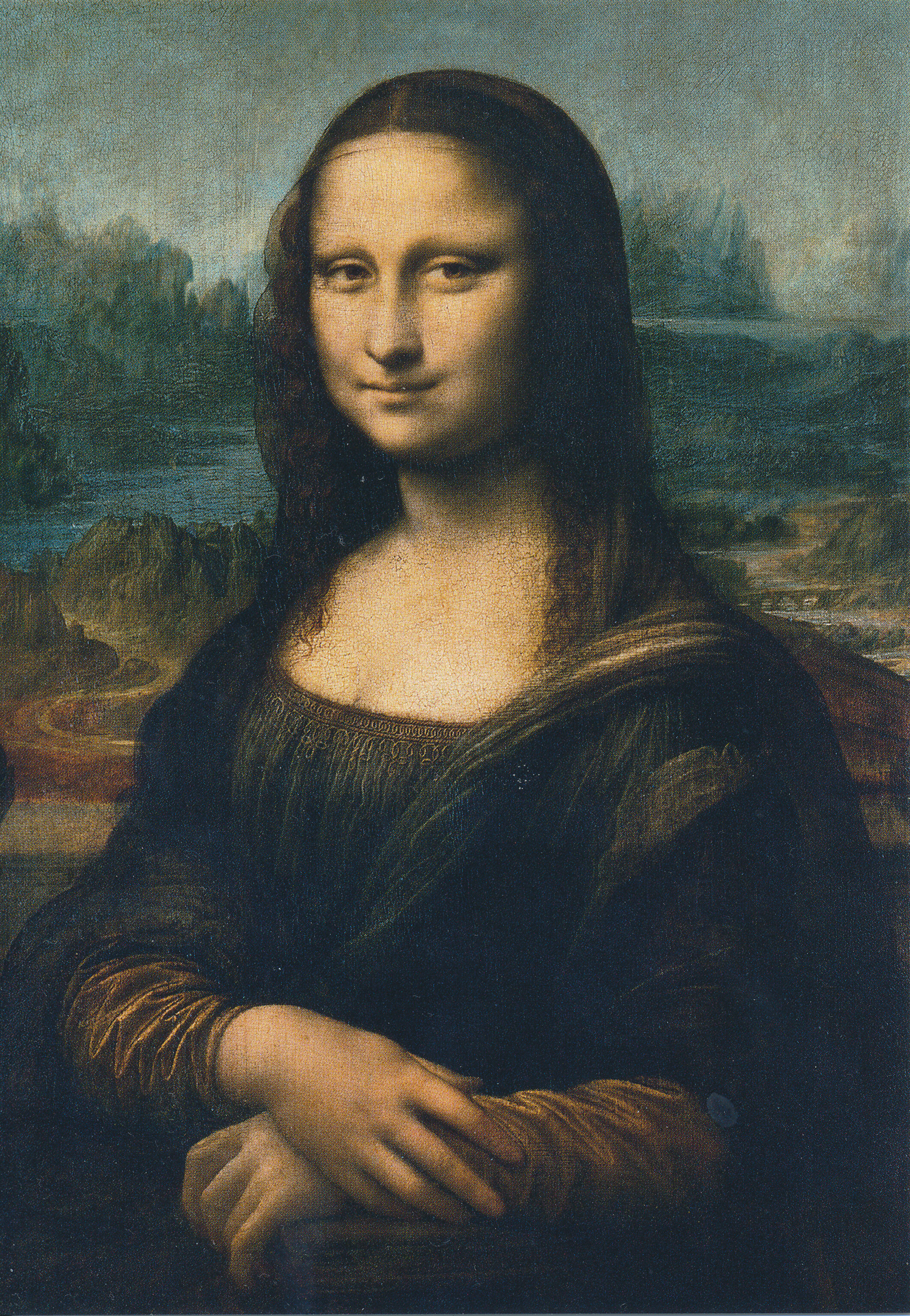
For comparison, a postcard of the Mona Lisa. It shows much more detail despite postcards generally being rather low resolution.
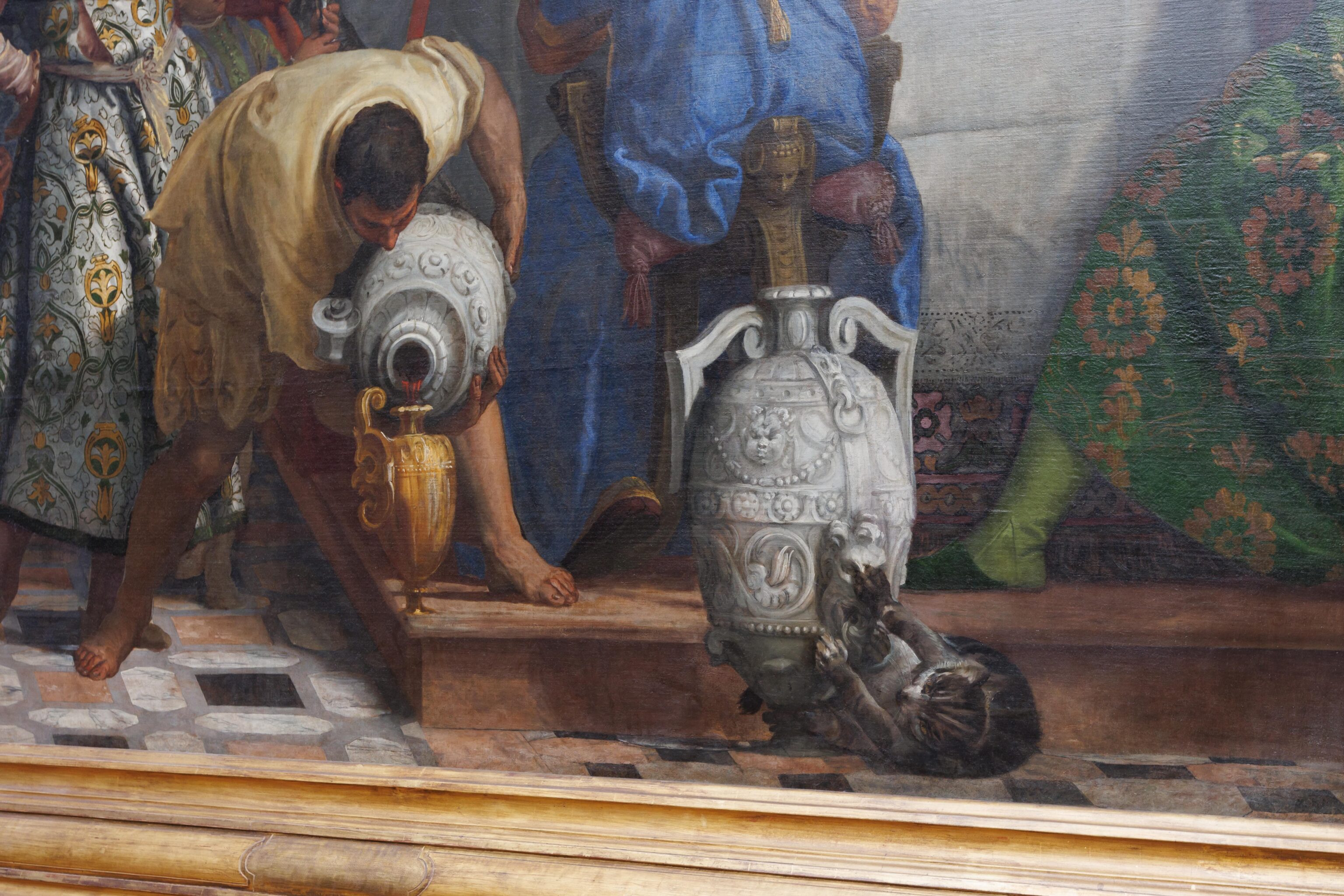
This piece that depicts Jesus turning water into wine. It is a very large piece, almost 10 meters wide and sits opposite of the Mona Lisa. It is the largest painting in the Louvre. Quite a contrast in size! We noticed the little cat at the bottom right corner and photographed it rather than the entire thing.
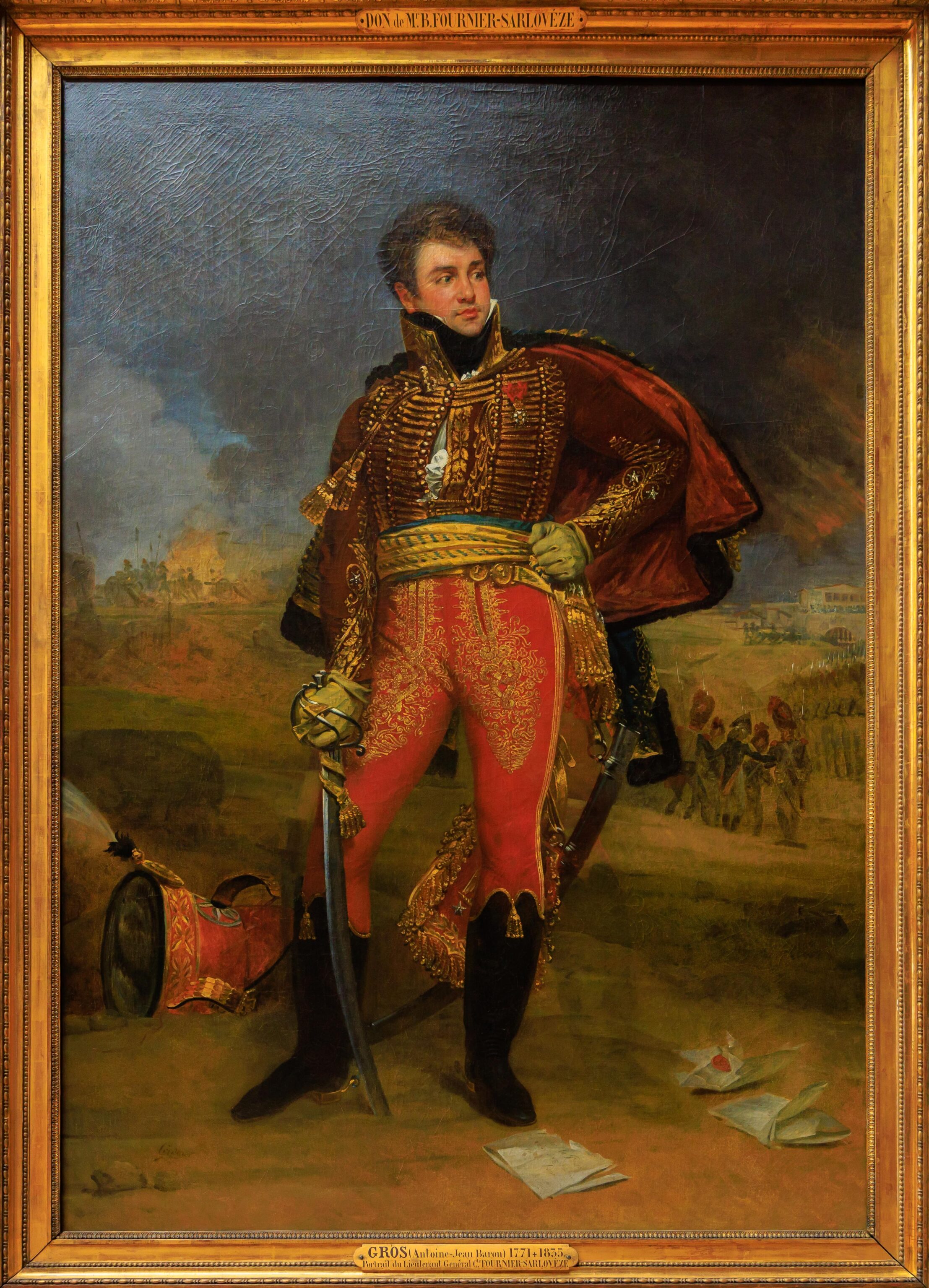
His fancy outfit caught our attention.
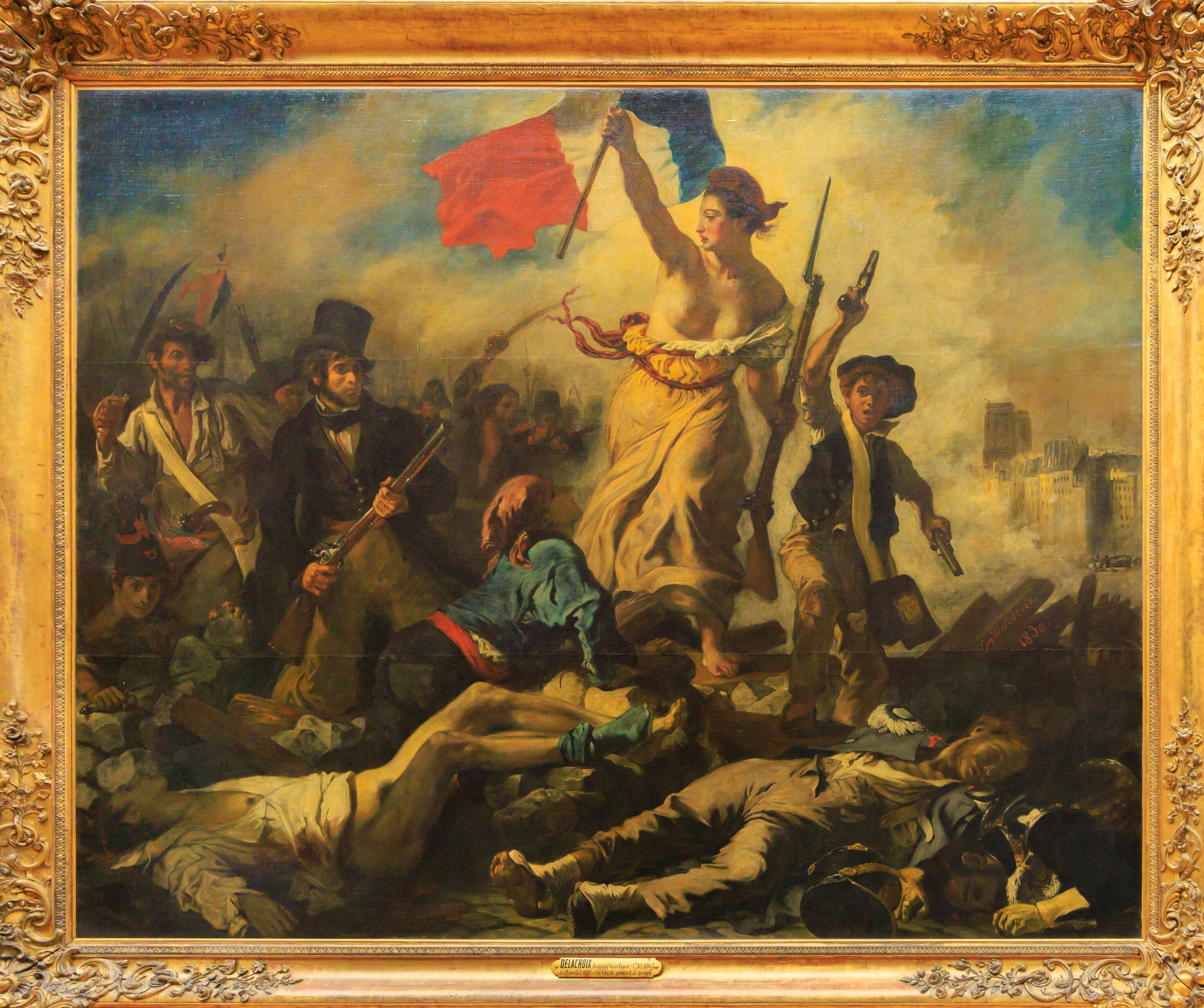
This painting depicts Marianne, the French symbol of liberty, leading a mixed group to victory in the Second French Revolution. She is wearing a Phrygian cap, something we learned about when researching the mascot for the 2024 Paris Olympic Games after seeing it at the Eiffel Tower two days ago. Wikipedia has good overview of this piece2:
Liberty Leading the People (French: La Liberté guidant le peuple [la libɛʁte ɡidɑ̃ lə pœpl]) is a painting by Eugène Delacroix commemorating the July Revolution of 1830, which toppled King Charles X. A woman of the people with a Phrygian cap personifying the concept of Liberty leads a varied group of people forward over a barricade and the bodies of the fallen, holding aloft the flag of the French Revolution – the tricolour, which again became France's national flag after these events – in one hand and brandishing a bayonetted musket with the other. The figure of Liberty is also viewed as a symbol of France and the French Republic known as Marianne. The painting is sometimes wrongly thought to depict the French Revolution of 1789.
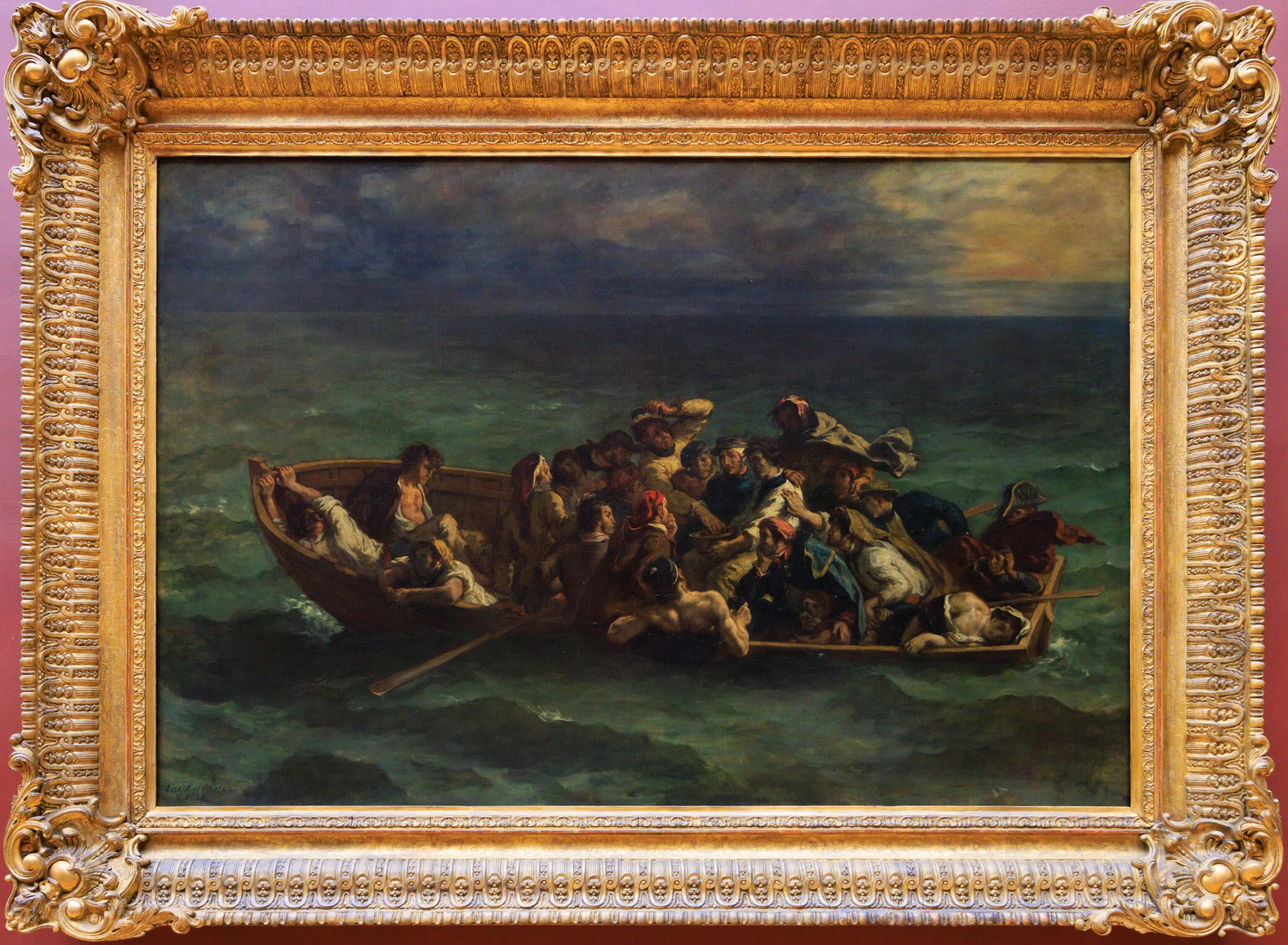
Another piece by Eugène Delacroix. A sign reads:
Since Dante and Virgil in Hell (Louvre), the boat that sails into Hell was a favorite theme with Delacroix. He reversed the situation here, placing the damned aboard a boat that drifts after a shipwreck, like Gericault's Raft of the Medusa (Louvre). One of the passengers is chosen by lot to be sacrificed, to save the others from certain death.
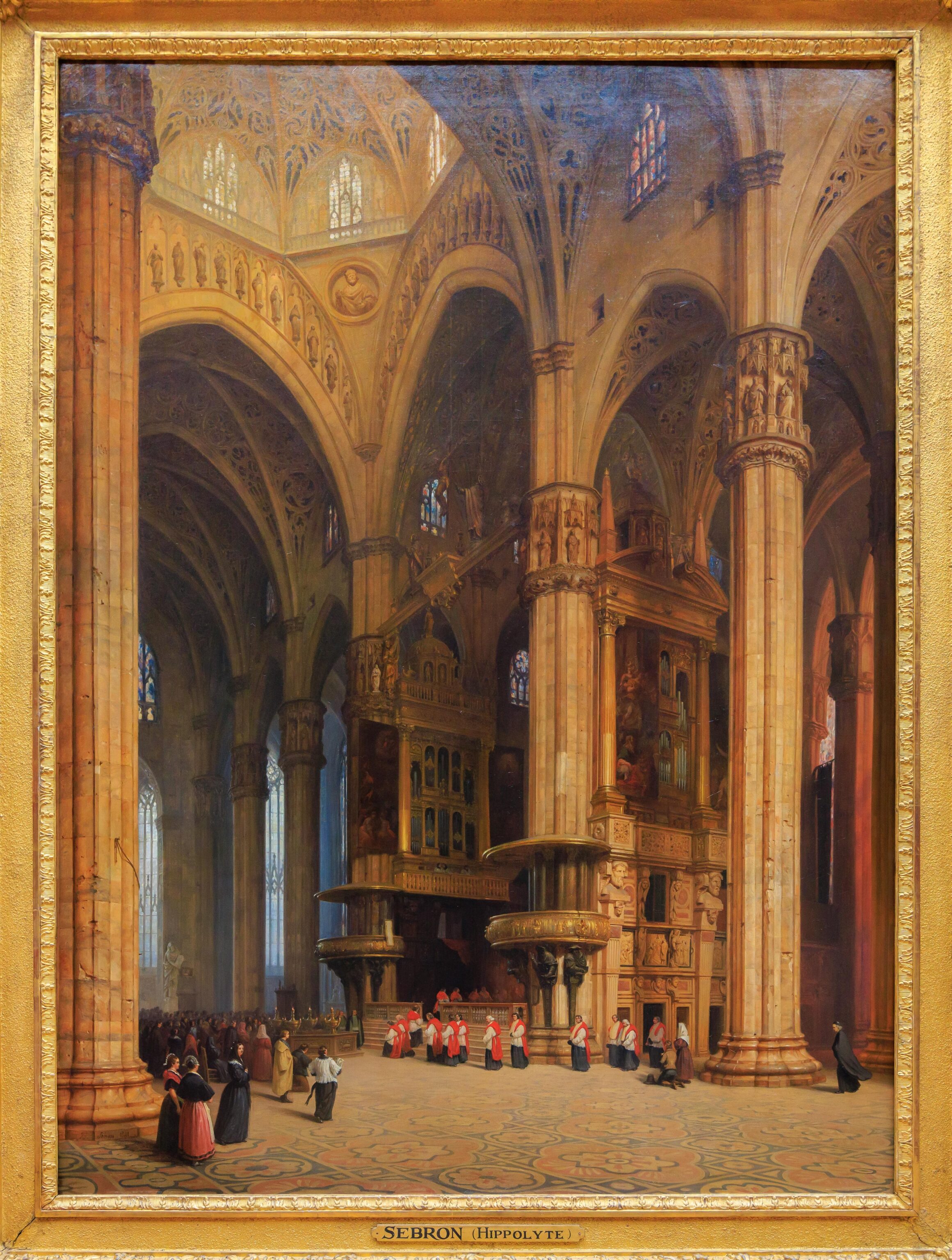
We will need to go to Milan to see if it really looks like this! Presumably, those are cardinals walking in?
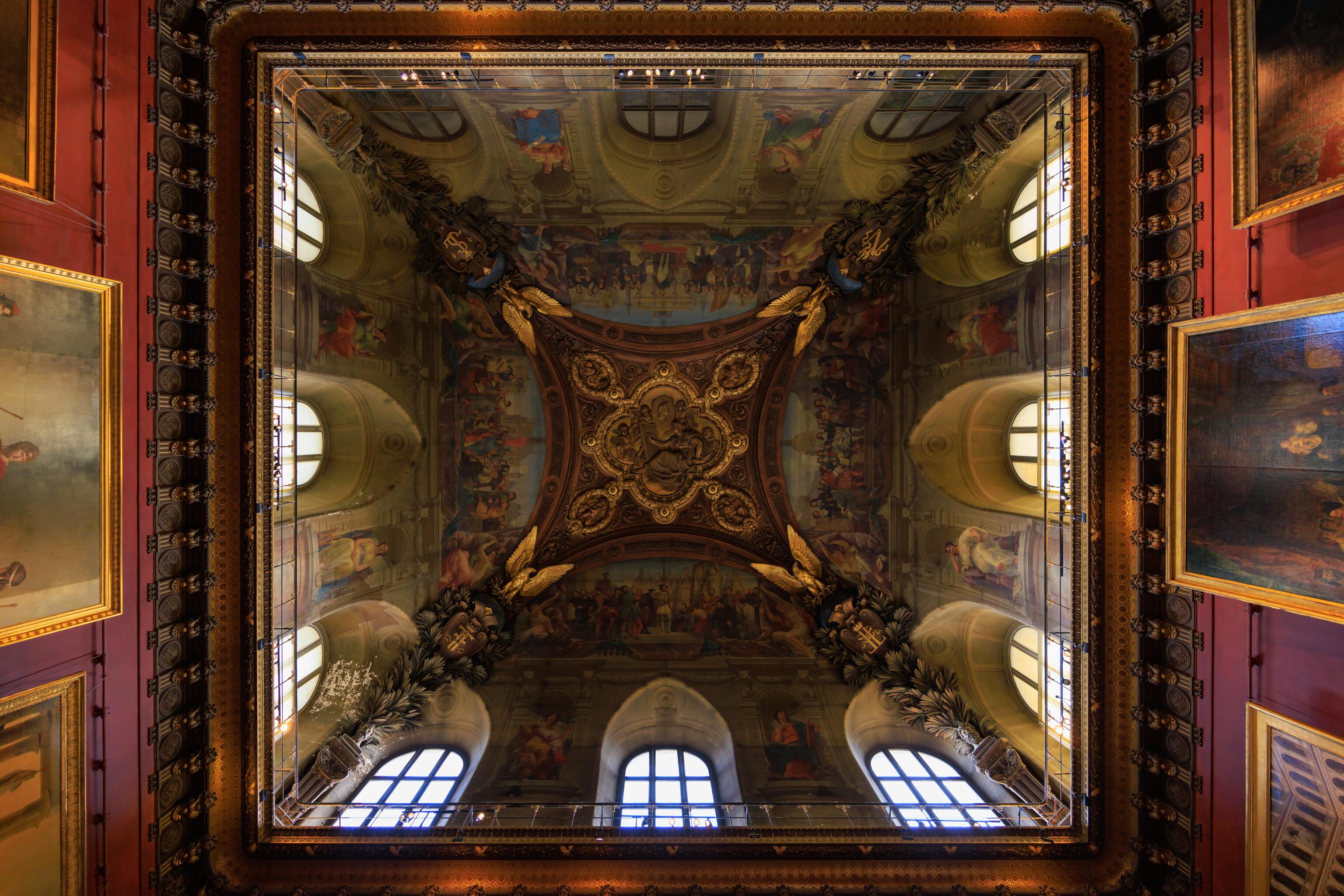
The Louvre was once a palace, with parts dating back to the 12th century. While the walls are typically of a solid color, some hint to the history of the building can be seen when looking up at the elaborately decorated ceilings.
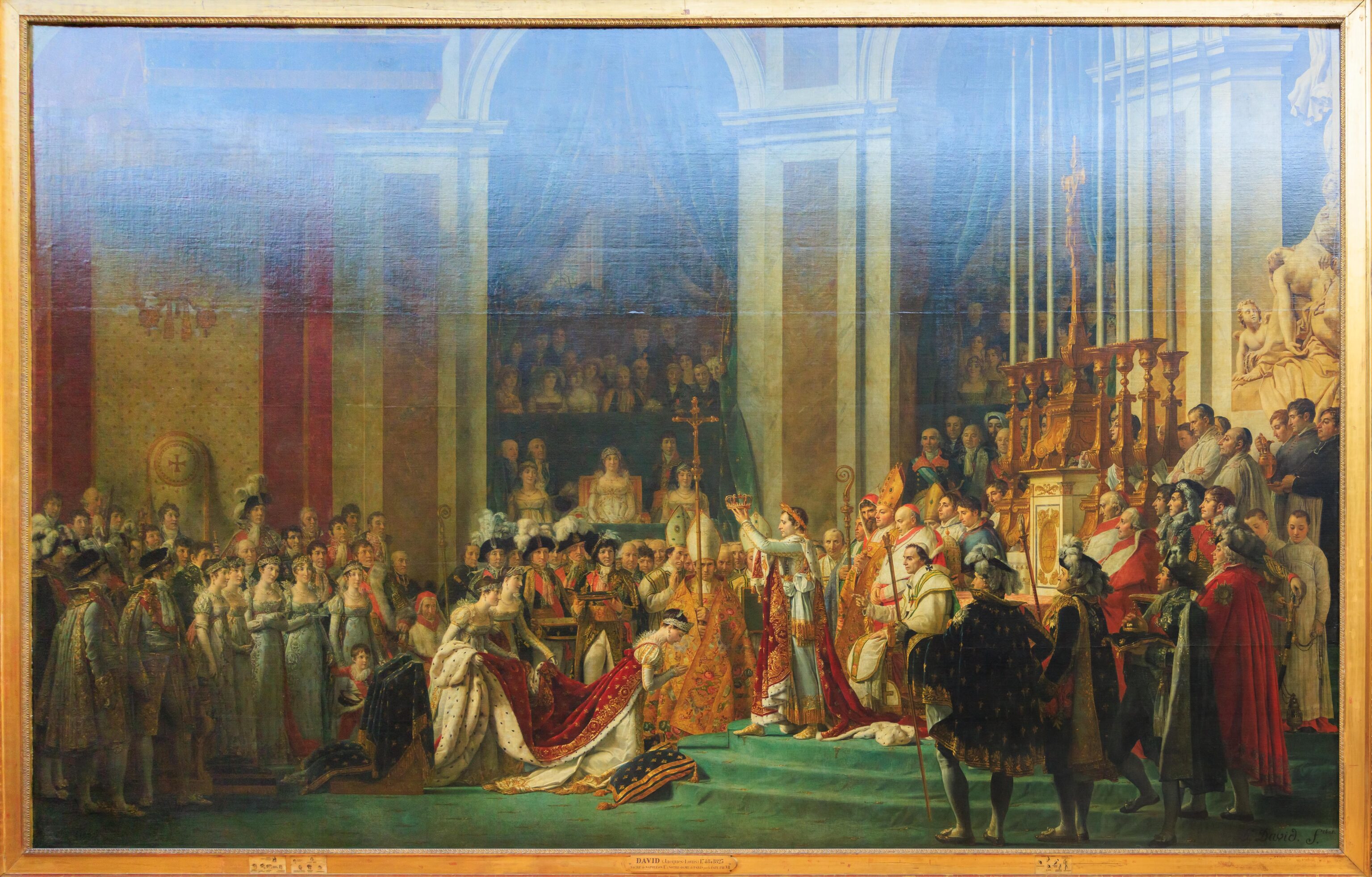
Napoleon being crowned Emperor in a large painting, almost 10 meters wide. A sign describes the painting:
David's painting shows the ceremony at which Napoleon crowed himself and his wife Emperor and Empress of the French in the presence of his family, the Pope and the dignitaries of the Empire. The realistic depictions of the faces and costumes of the 191 figures in the scene distract attention from the artist's skillful reconstruction of the event.
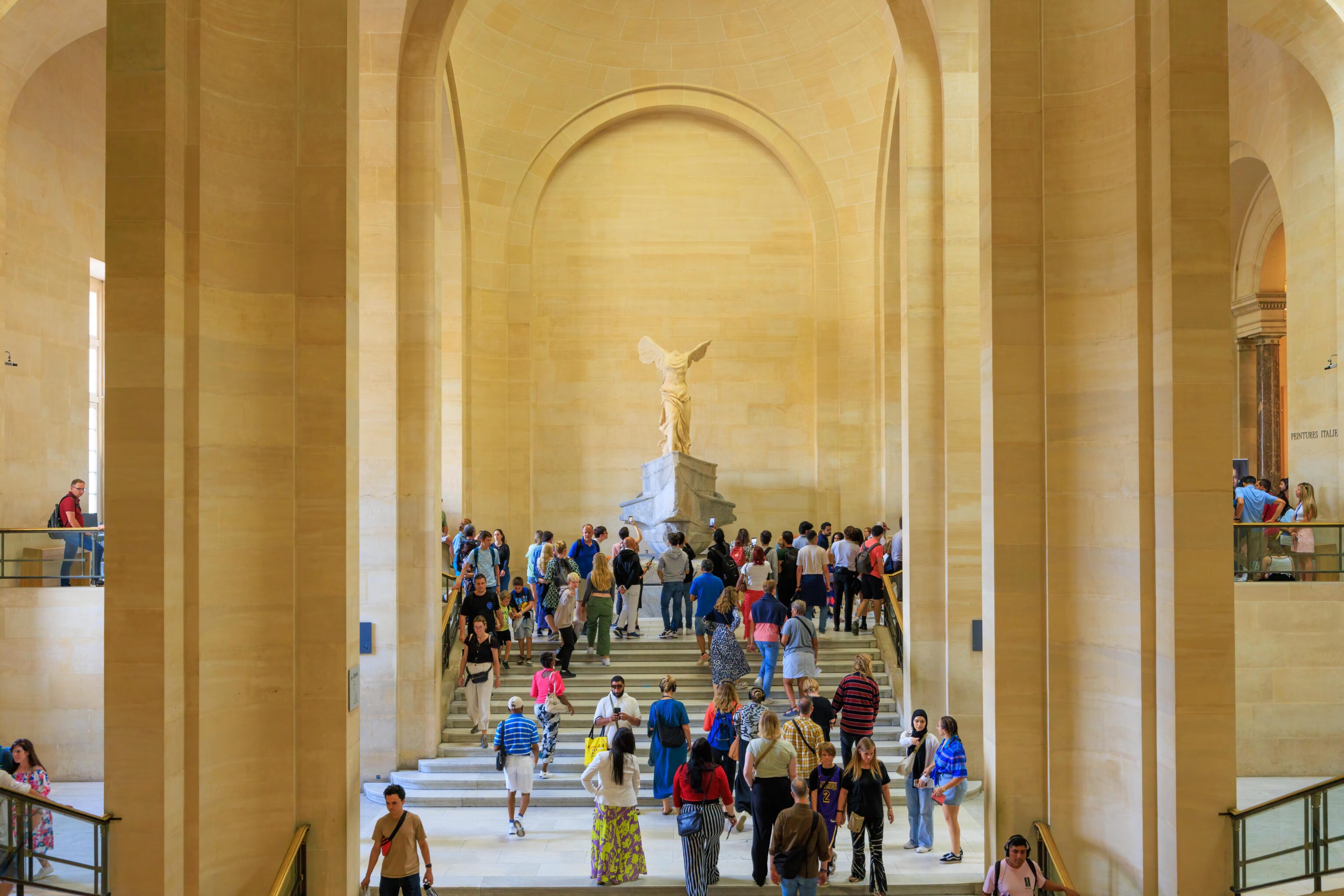
We soon approached a room that contained stairs as well as a single sculpture.
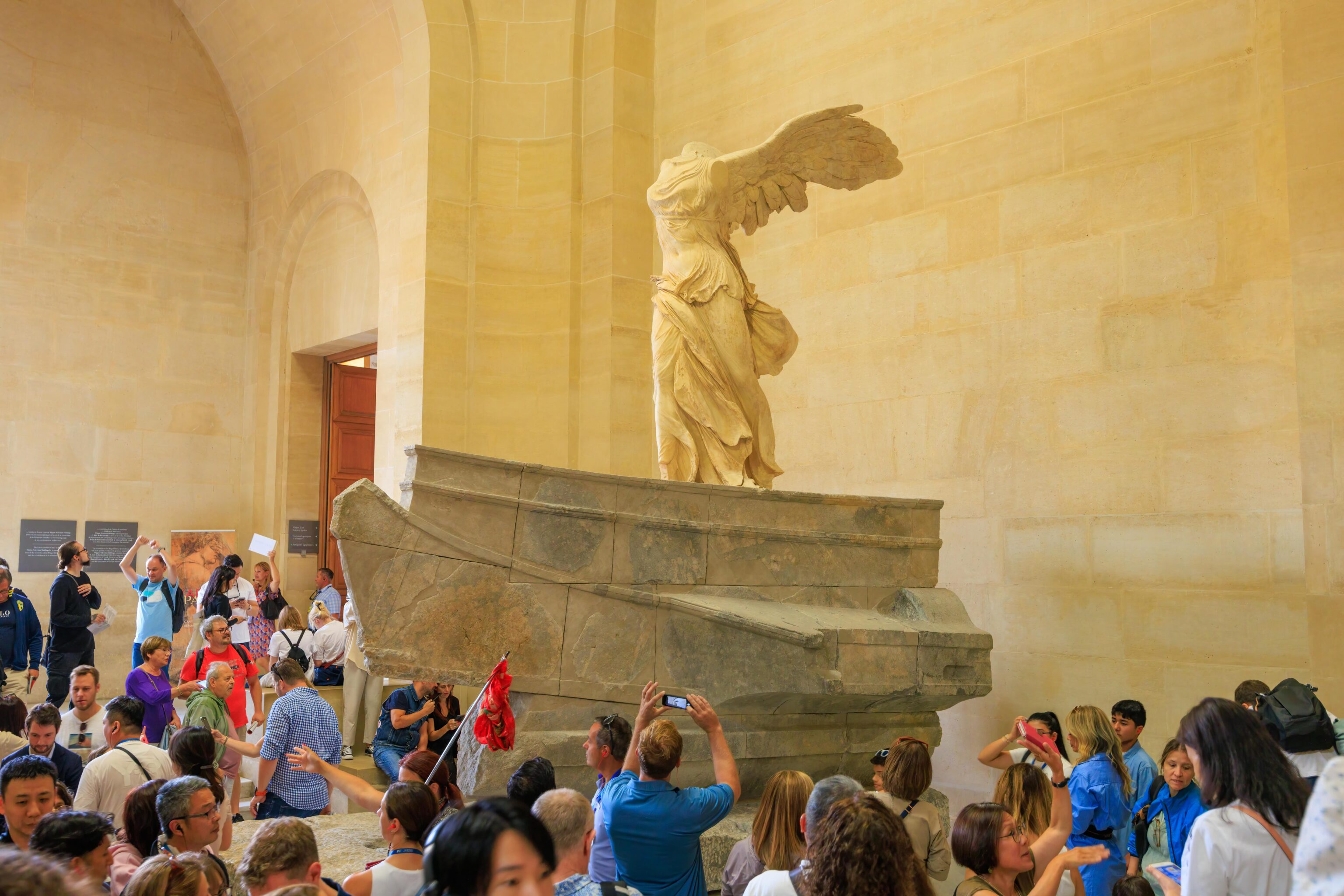
This sculpture is one of the Louvre’s most famous items. It was discovered in Greece and depicts Nike, the Greek god of victory.
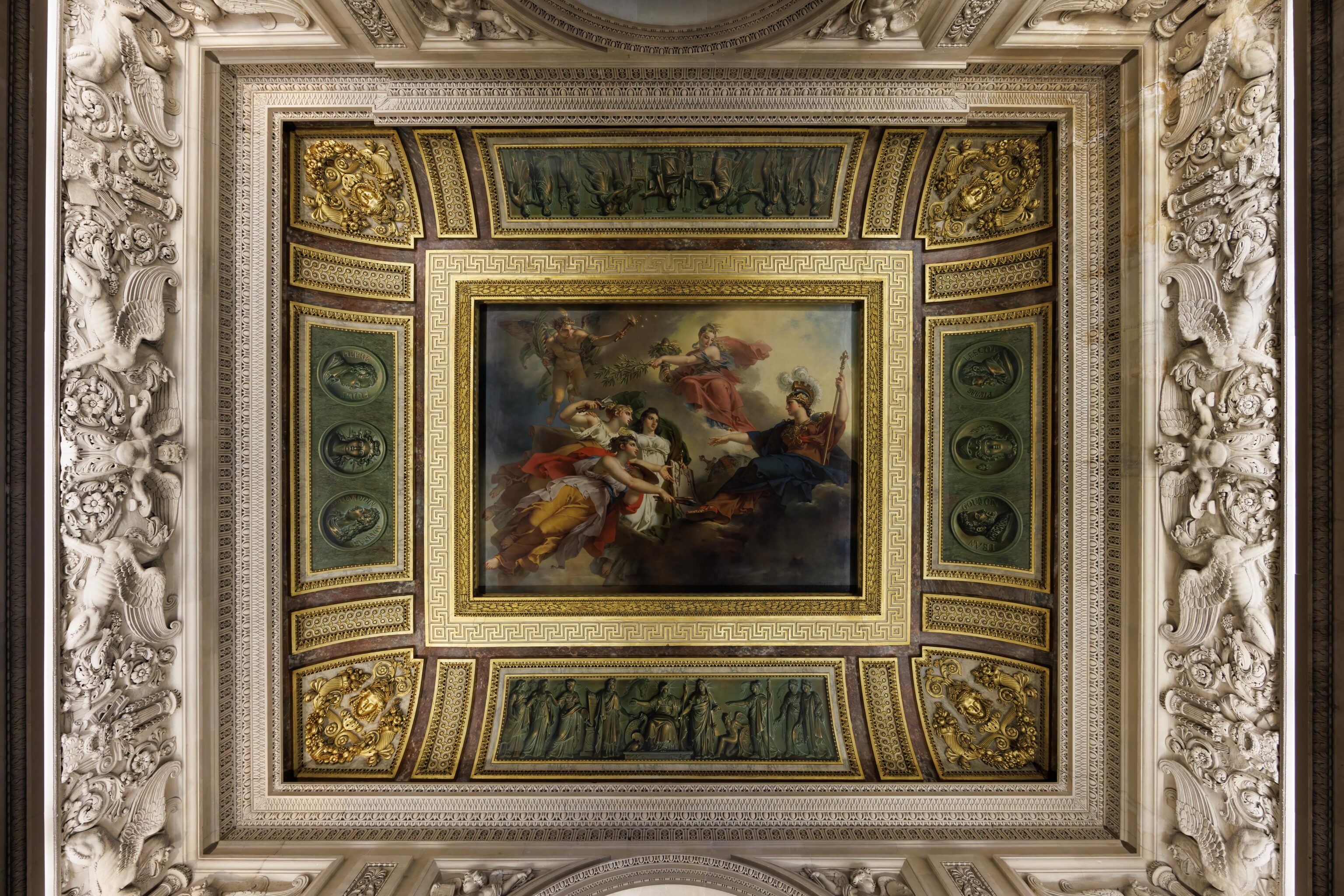
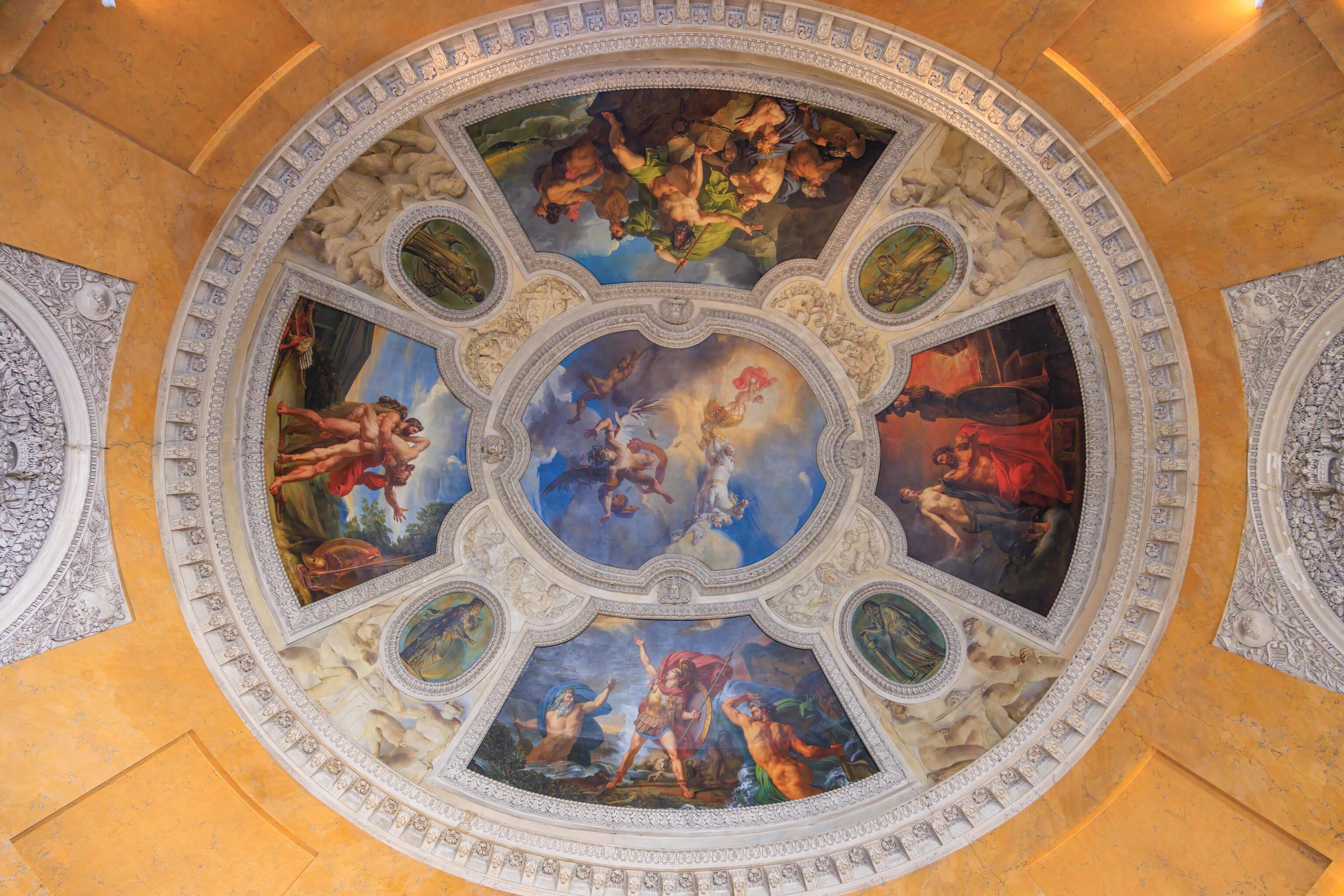
More examples of ornate ceilings in the Louvre.
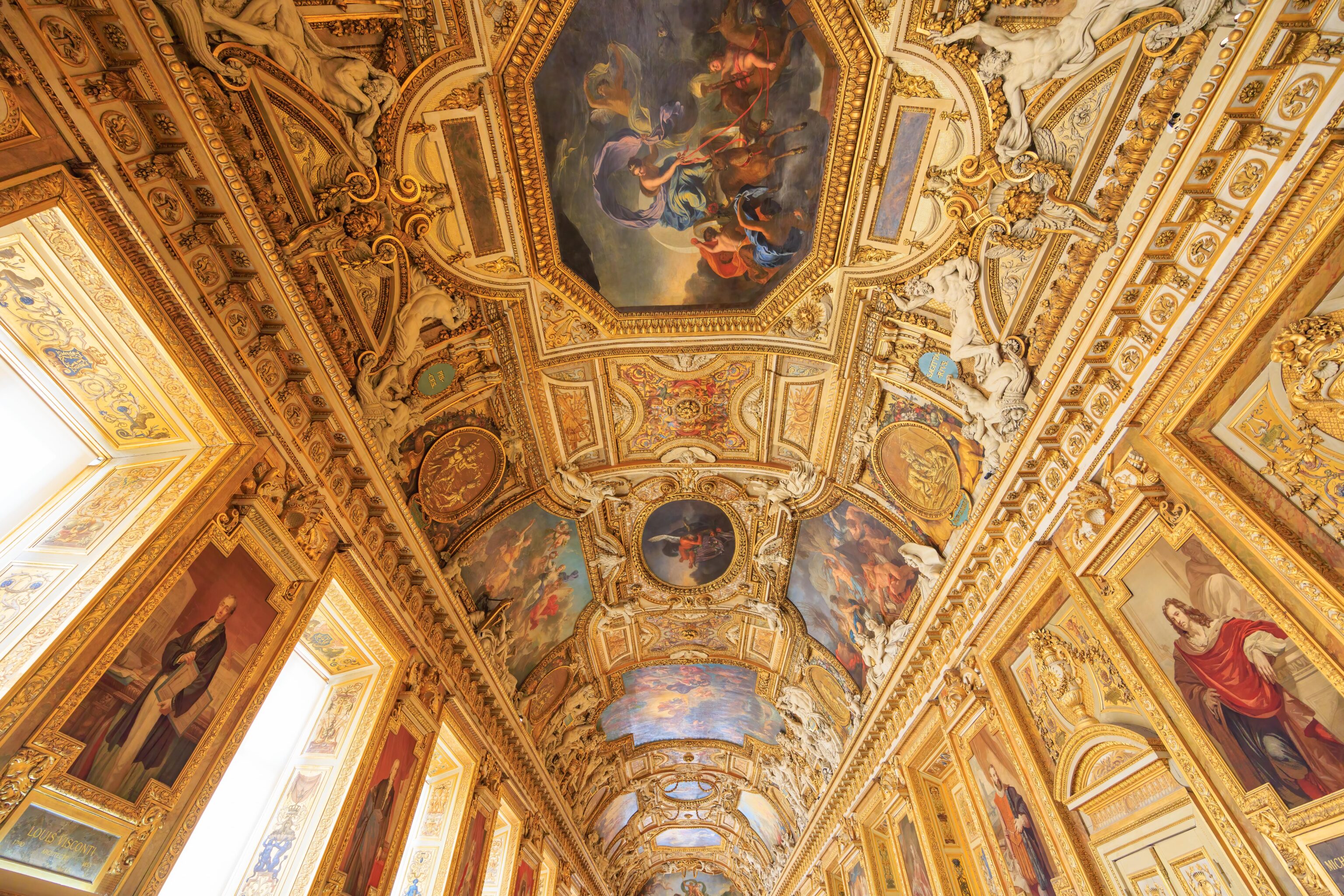
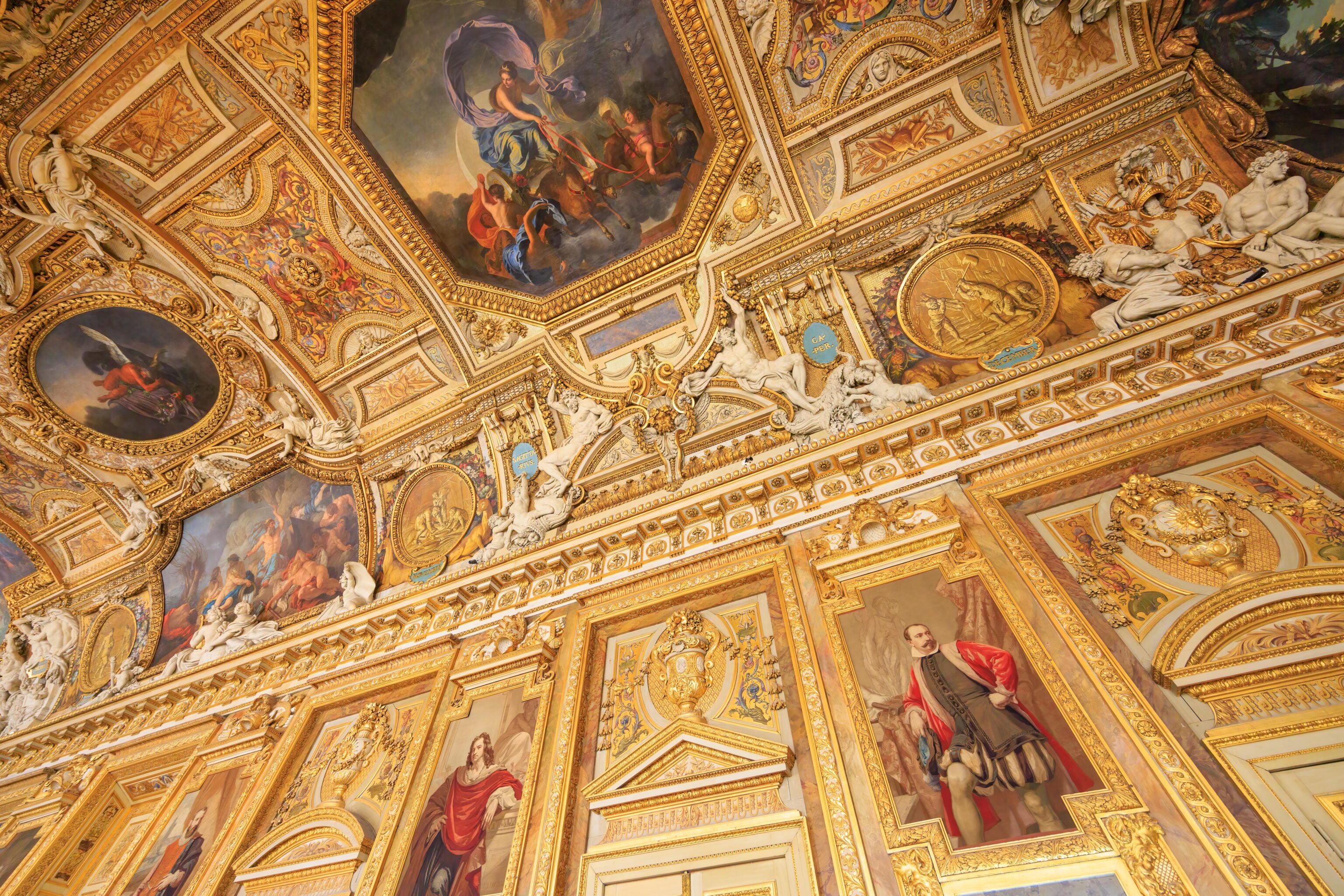
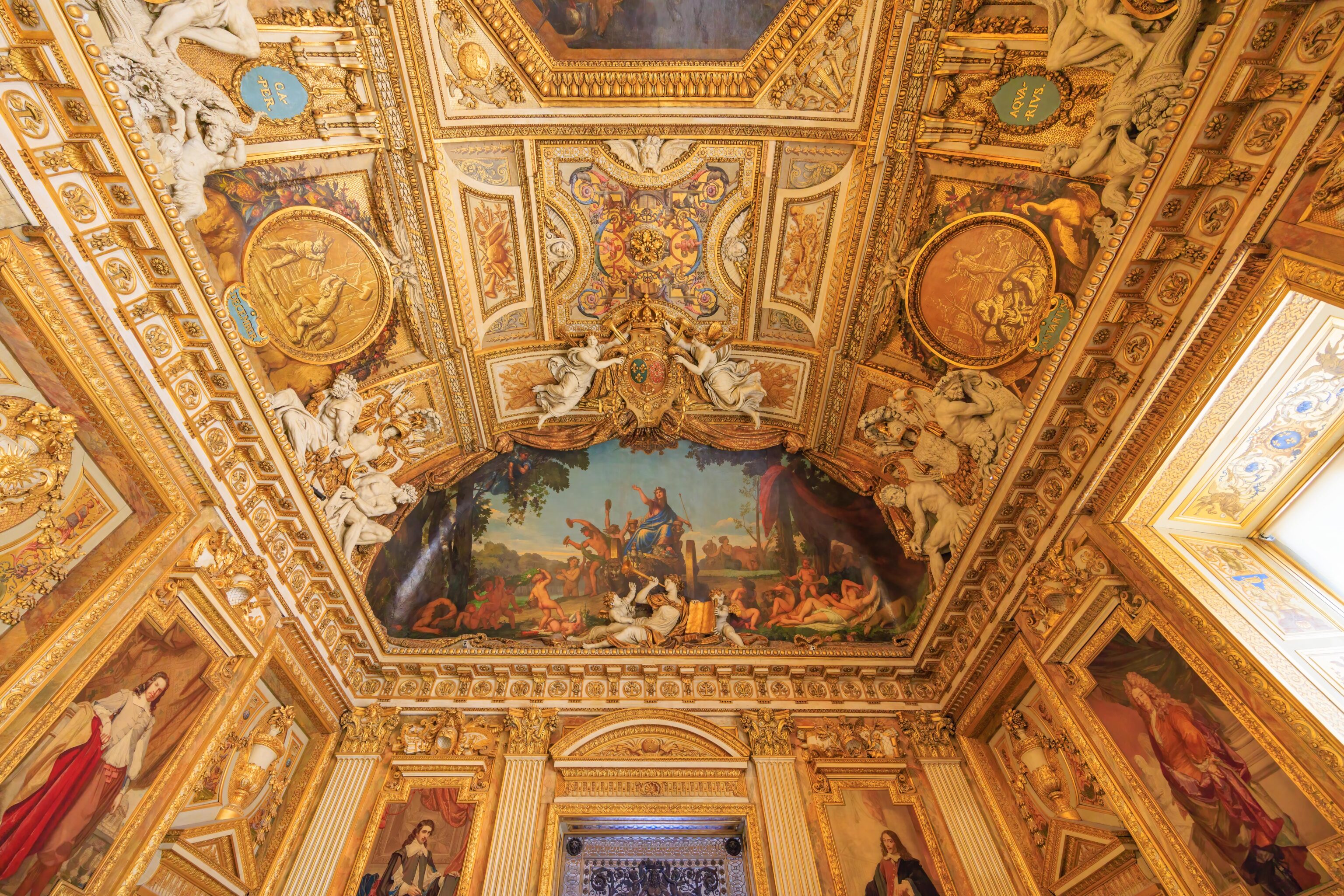
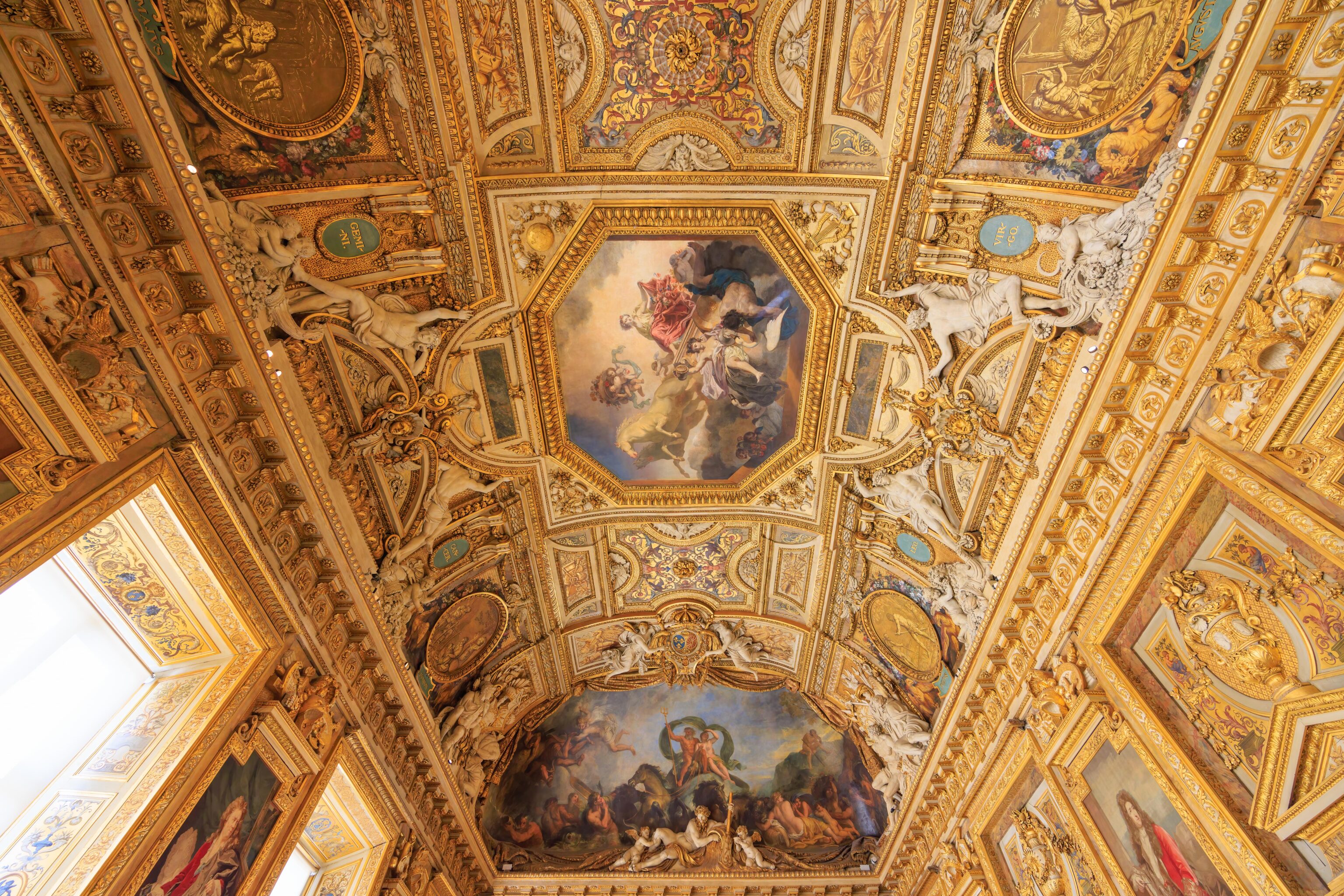
Just in case you forgot that this was once a palace! This huge room is next level ornate!
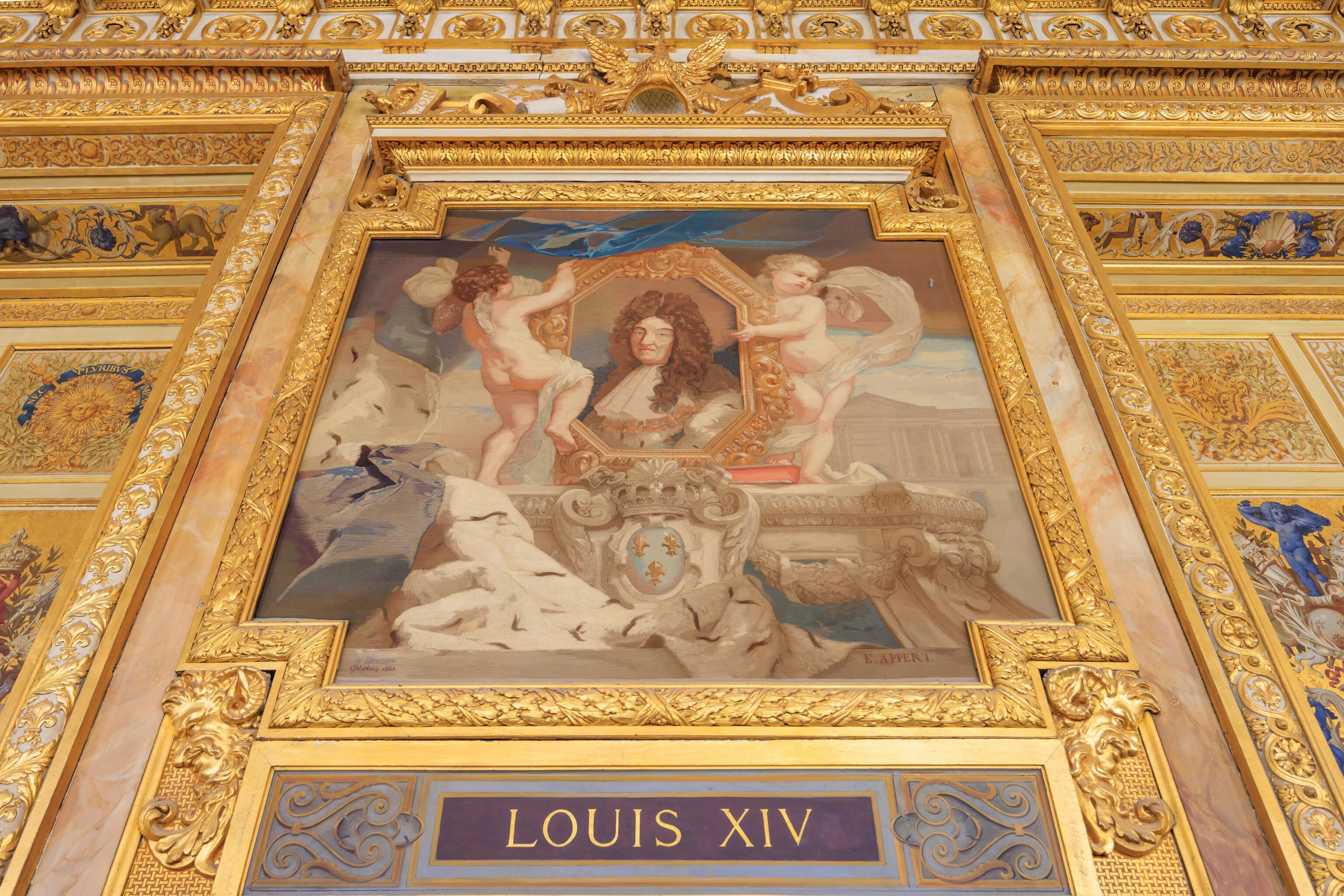
King Louis XIV is responsible for this room. The Louvre explains3:
On 6th February 1661, flames ripped through the splendid Petite Galerie dating from the reign of Henri IV. Henri’s grandson, Louis XIV, immediately set about constructing an even more beautiful gallery to replace it and entrusted its design to the architect Louis Le Vau. The young king, aged twenty-three, had recently chosen the sun as his emblem, and so this became the theme of his new gallery, named after Apollo, the Greek god of the sun and the arts.
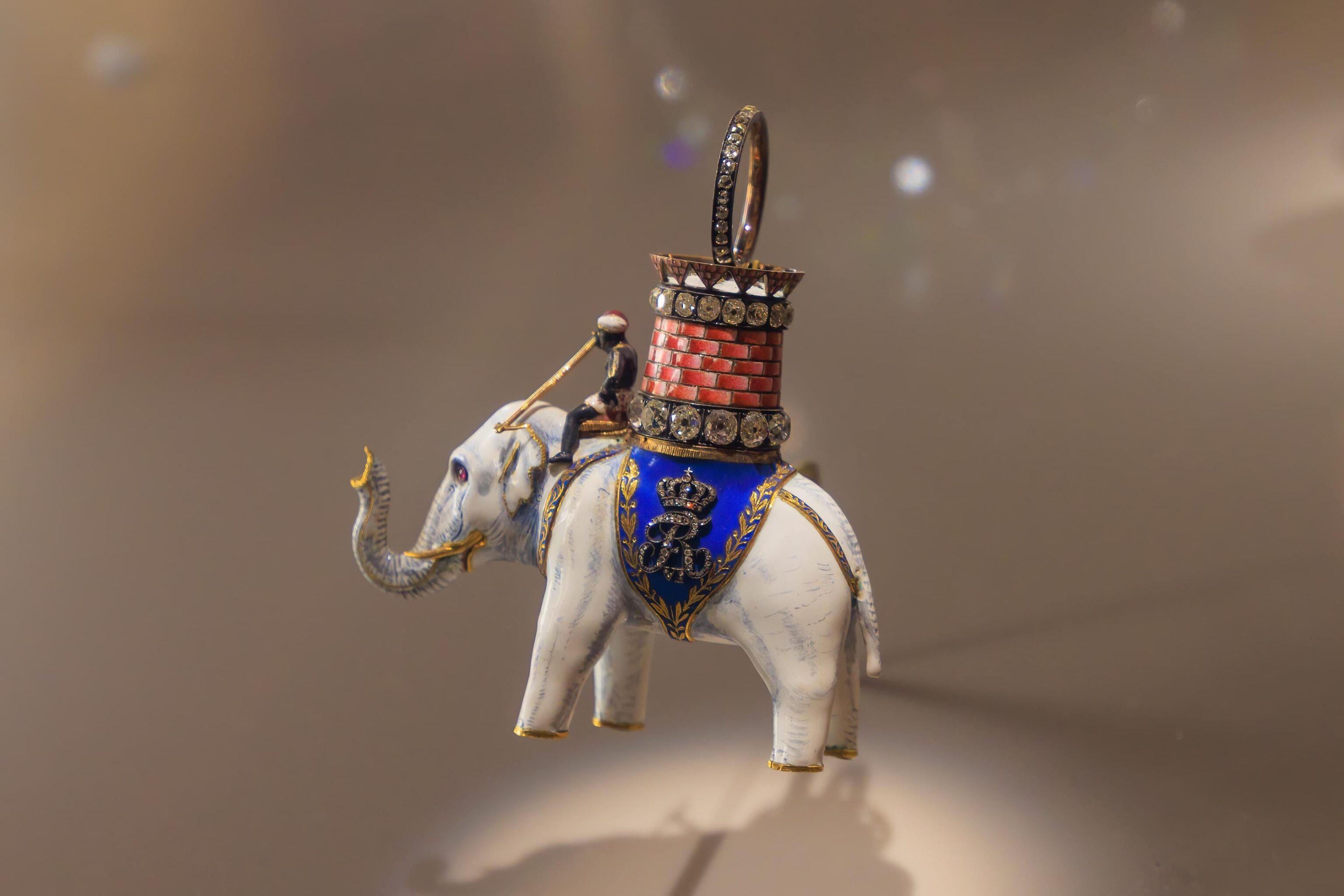
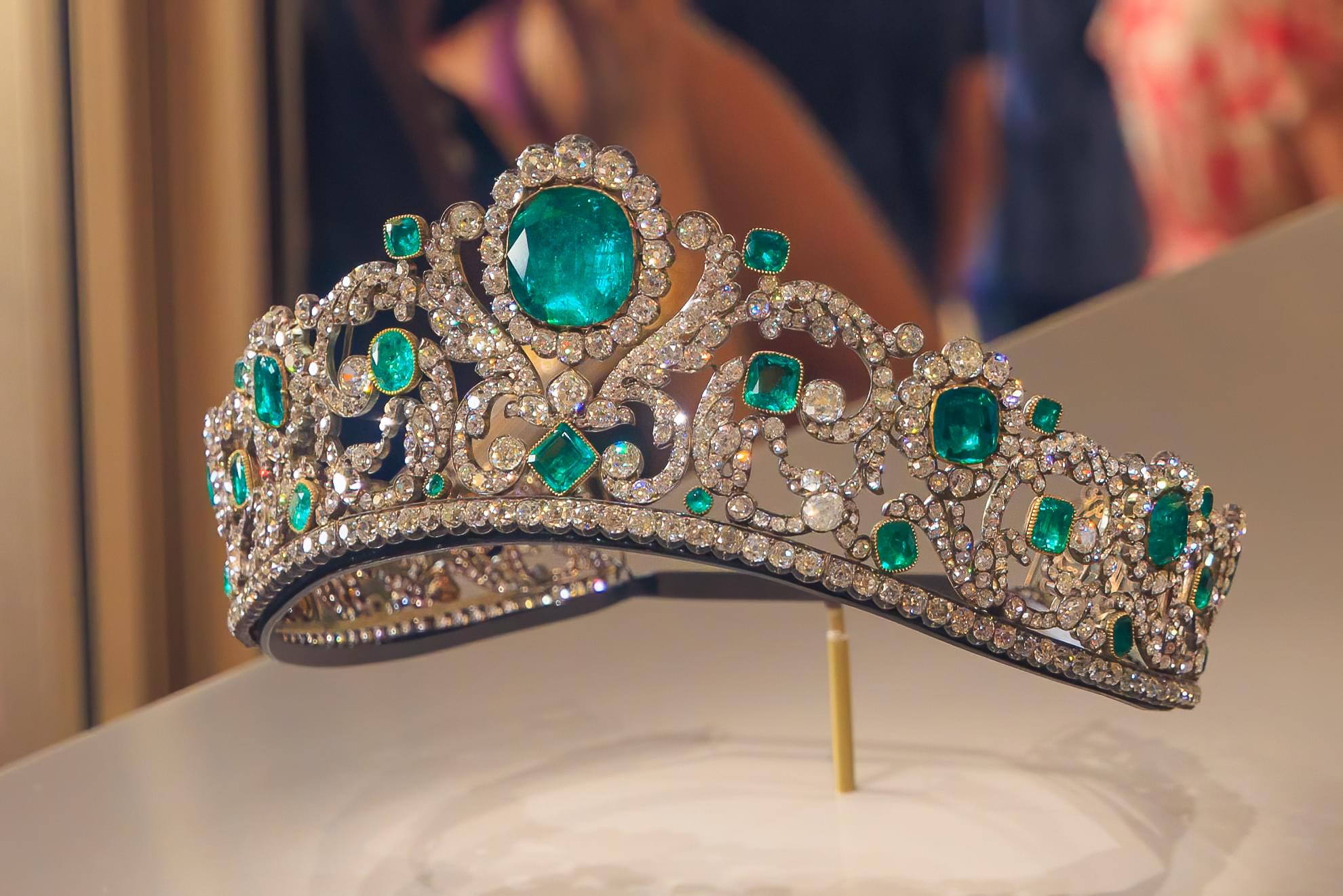
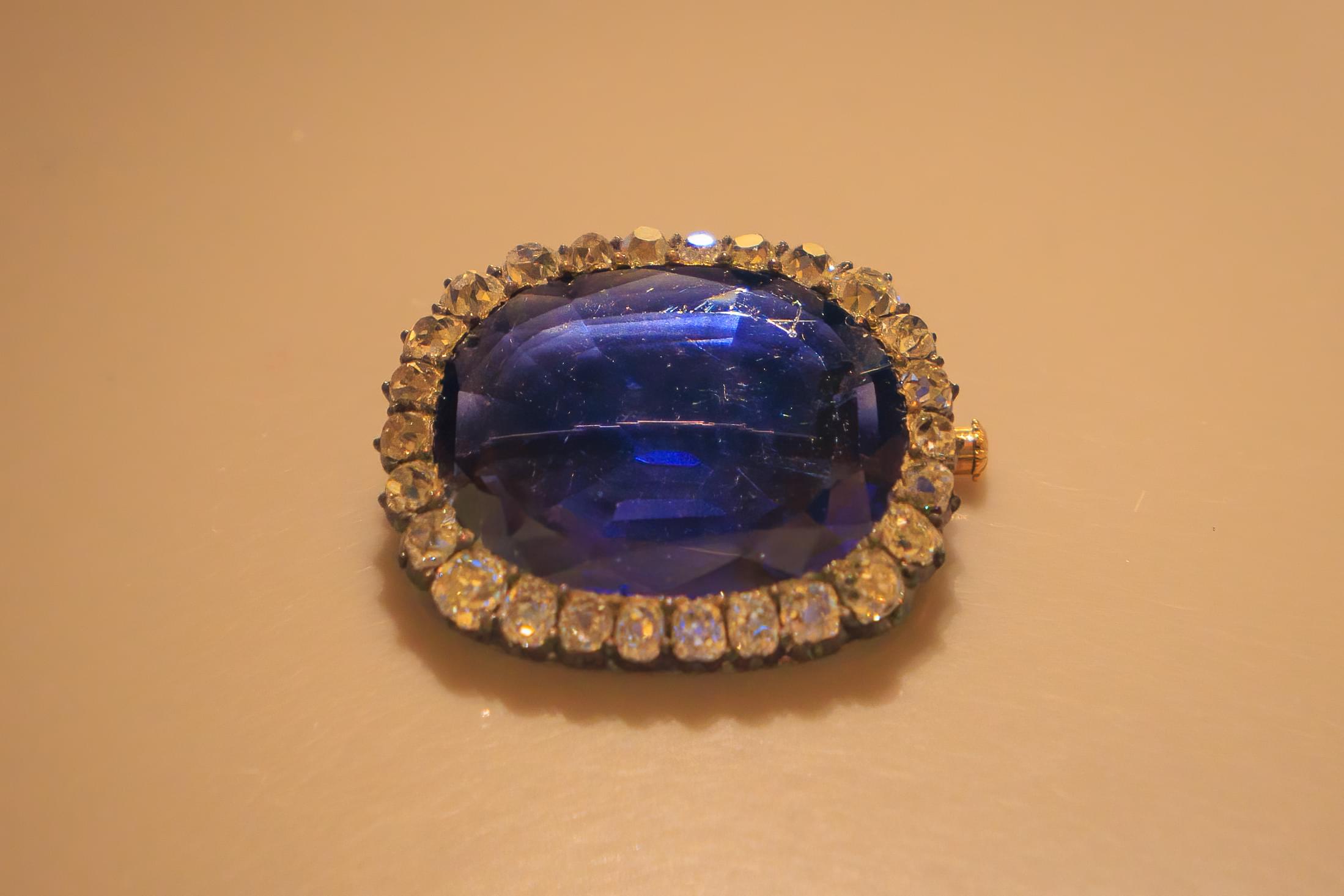
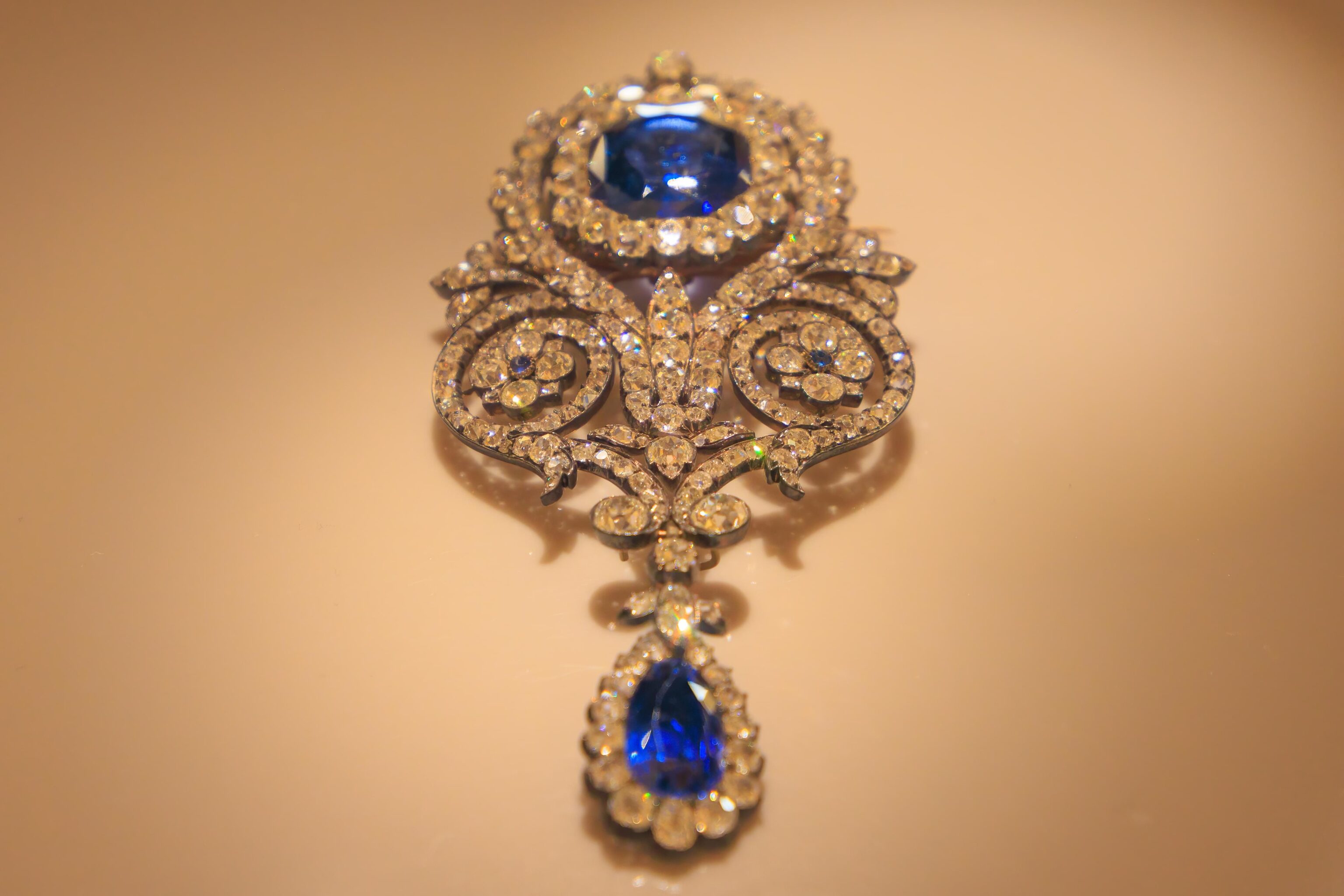
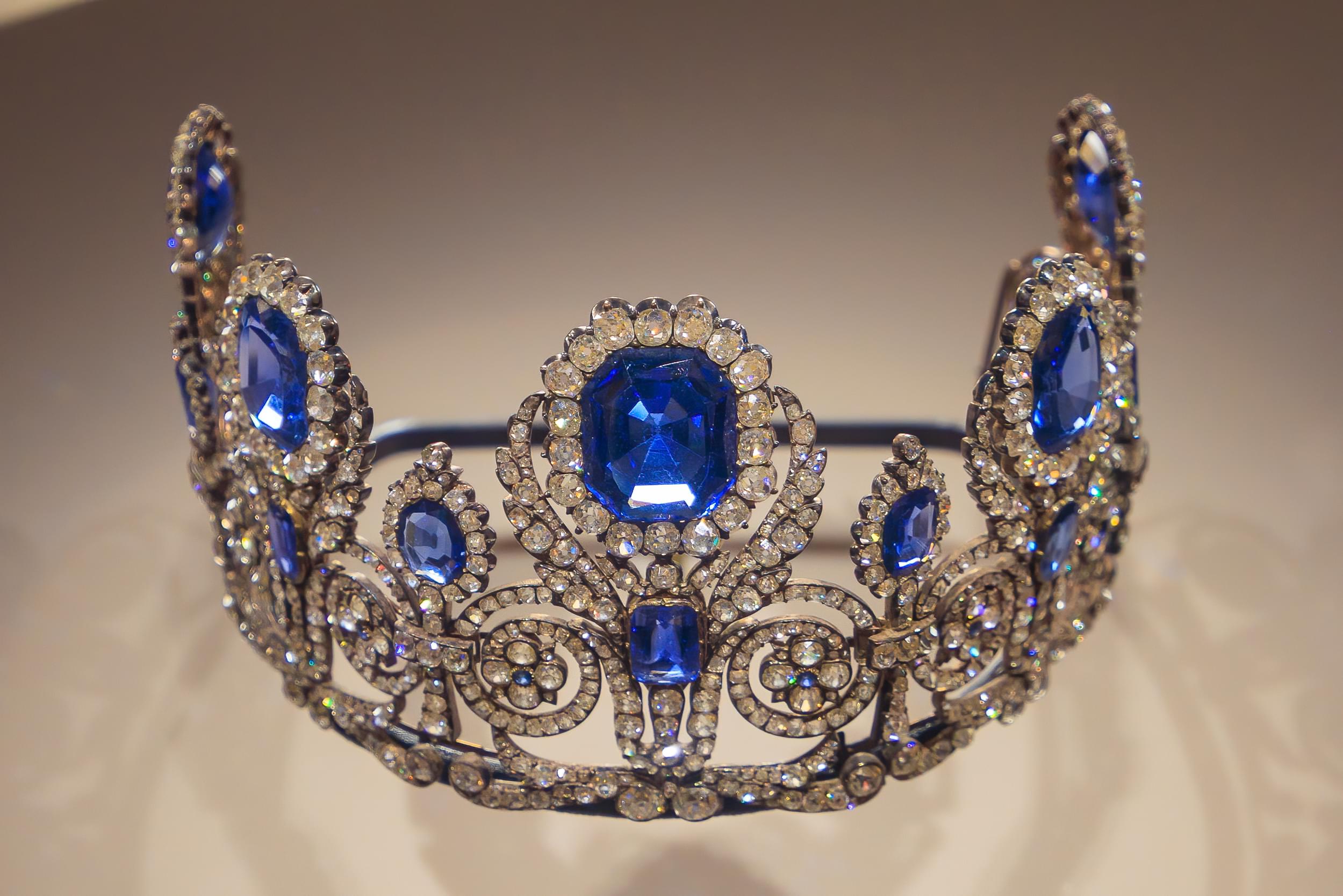
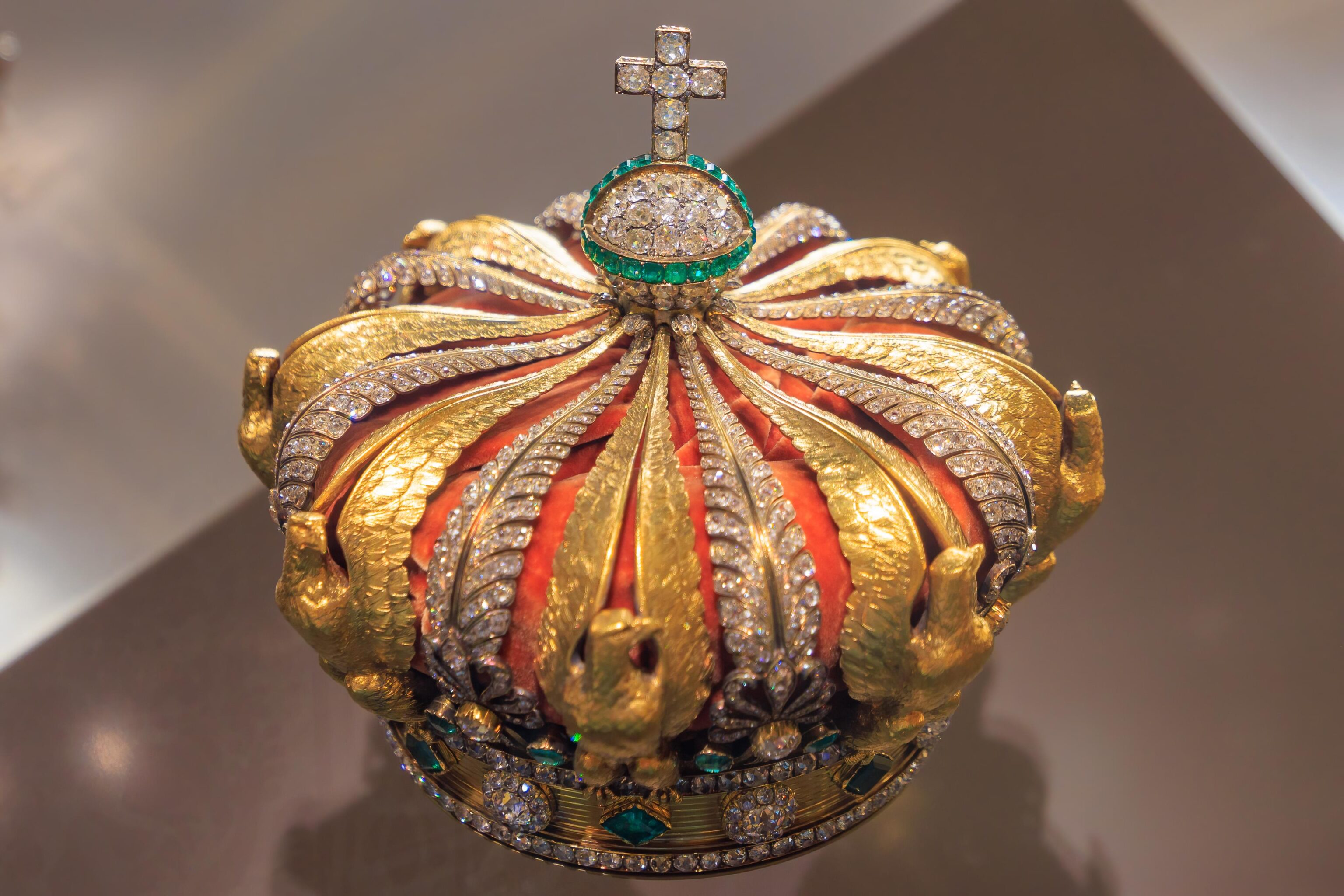
This room, the Galerie d’Apollon, houses the French Crown Jewels and other related items. We took a brief look at some of the items.
One thing we didn’t realize was in this room is a painting on the ceiling by Eugène Delacroix. It depicts Apollo slaying Python, the same subject as the “selfie” statue we saw near the start of our visit.
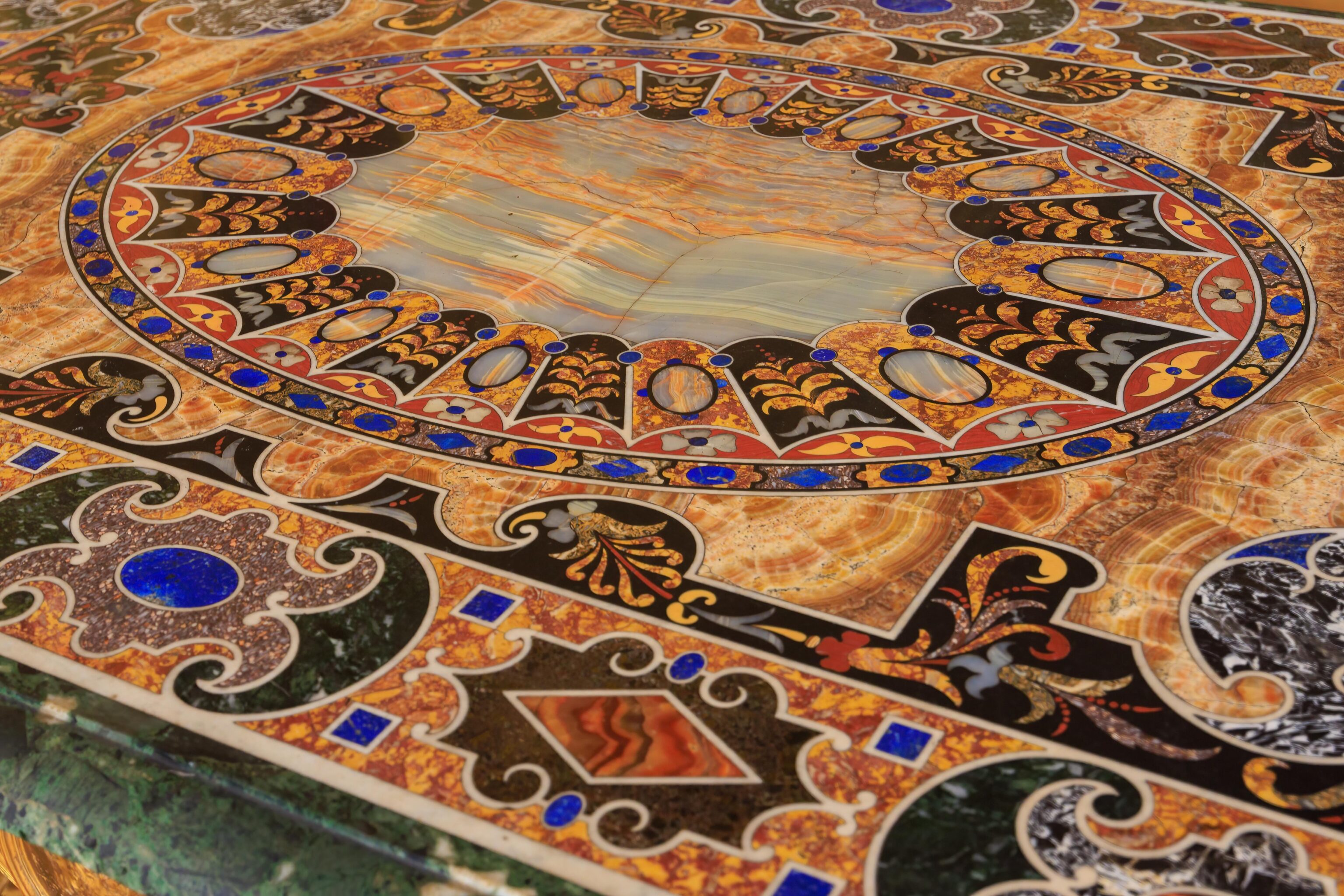
A very ornate marble table.
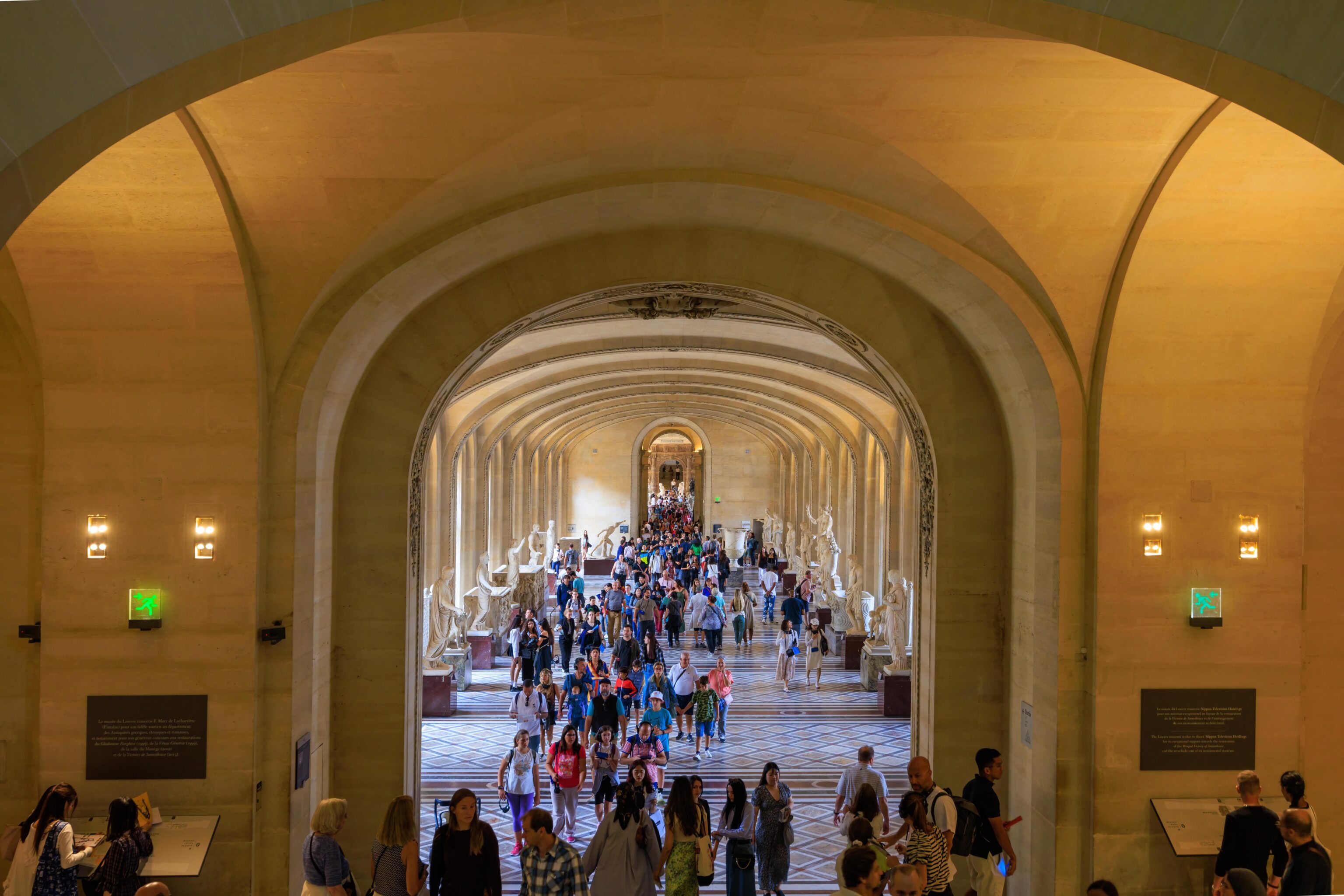
So many people! The arch that we passed under earlier in the morning is visible beyond the room lined with sculptures.
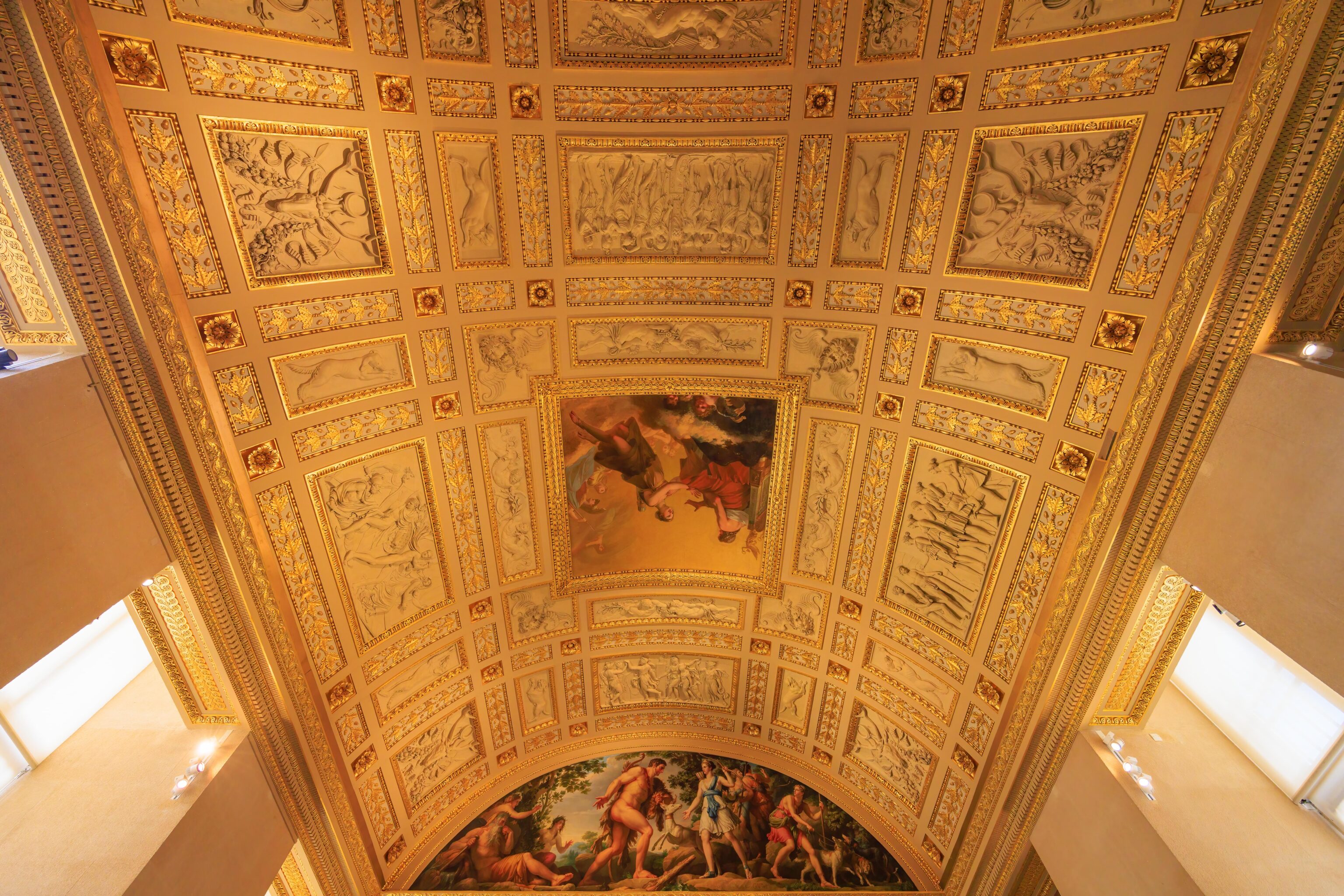
Another ornate ceiling.
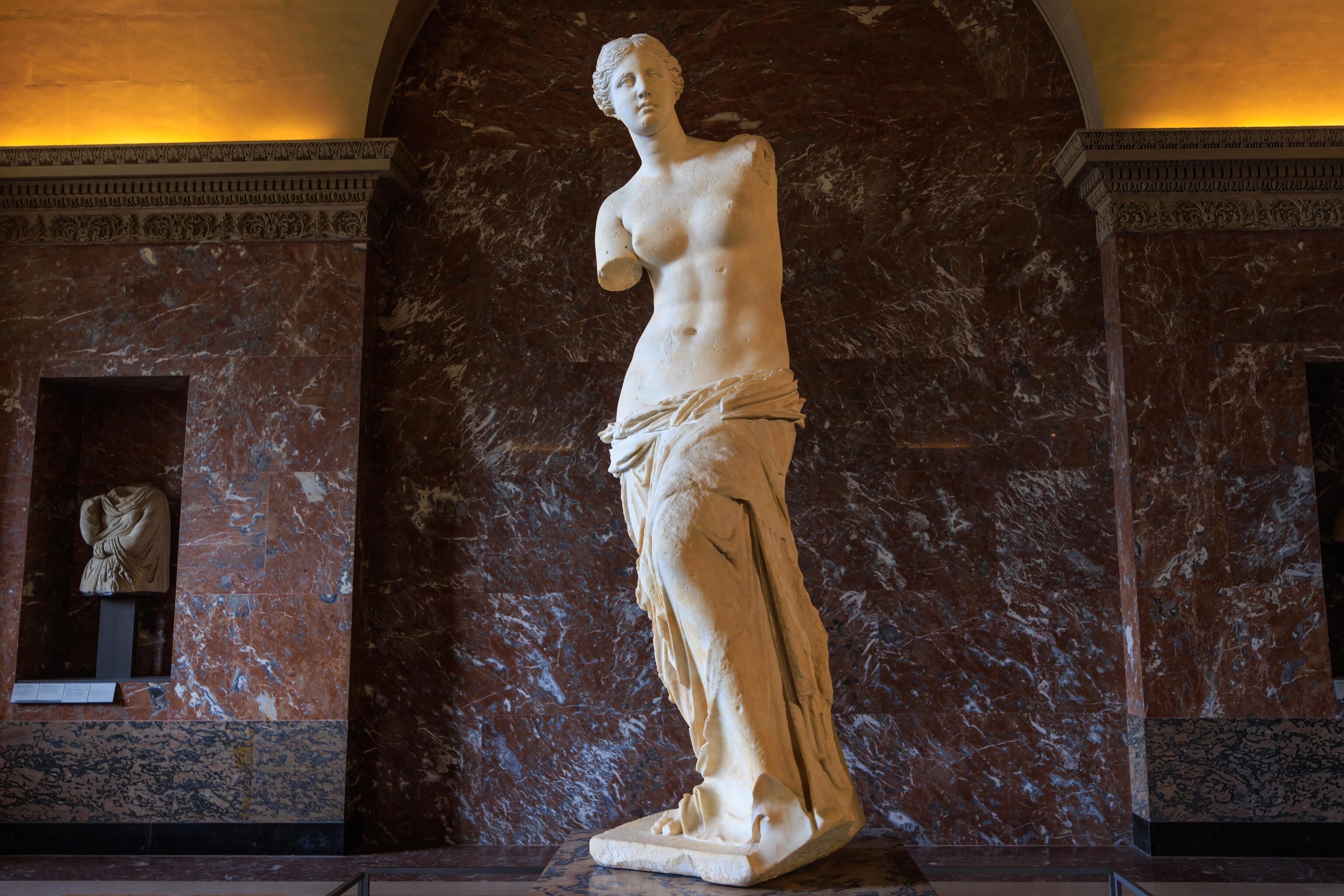
Another one of the Louvre’s most famous items, the Venus de Milo is believed to be of Aphrodite, the Greek godess of Love. It was discovered on the island of Milos by a farmer. Wikipedia provides an overview:4
It is one of the most famous works of ancient Greek sculpture, having been prominently displayed at the Louvre Museum since shortly after the statue was rediscovered on the island of Milos, Greece, in 1820. The Venus de Milo is believed to depict Aphrodite, the Greek goddess of love, whose Roman counterpart was Venus. Made of Parian marble, the statue is larger than life size, standing over 2 metres (6 ft 7 in) high. The statue is missing both arms, with part of one arm, as well as the original plinth, being lost after the statue's rediscovery.
According to The Getty5:
Worship of Aphrodite continued throughout the Roman period. Known as Venus, she came to symbolize Rome's imperial power. Like her Greek counterpart Aphrodite, Venus was intimately associated with love and beauty, yet other elements were distinctive to the Roman goddess.
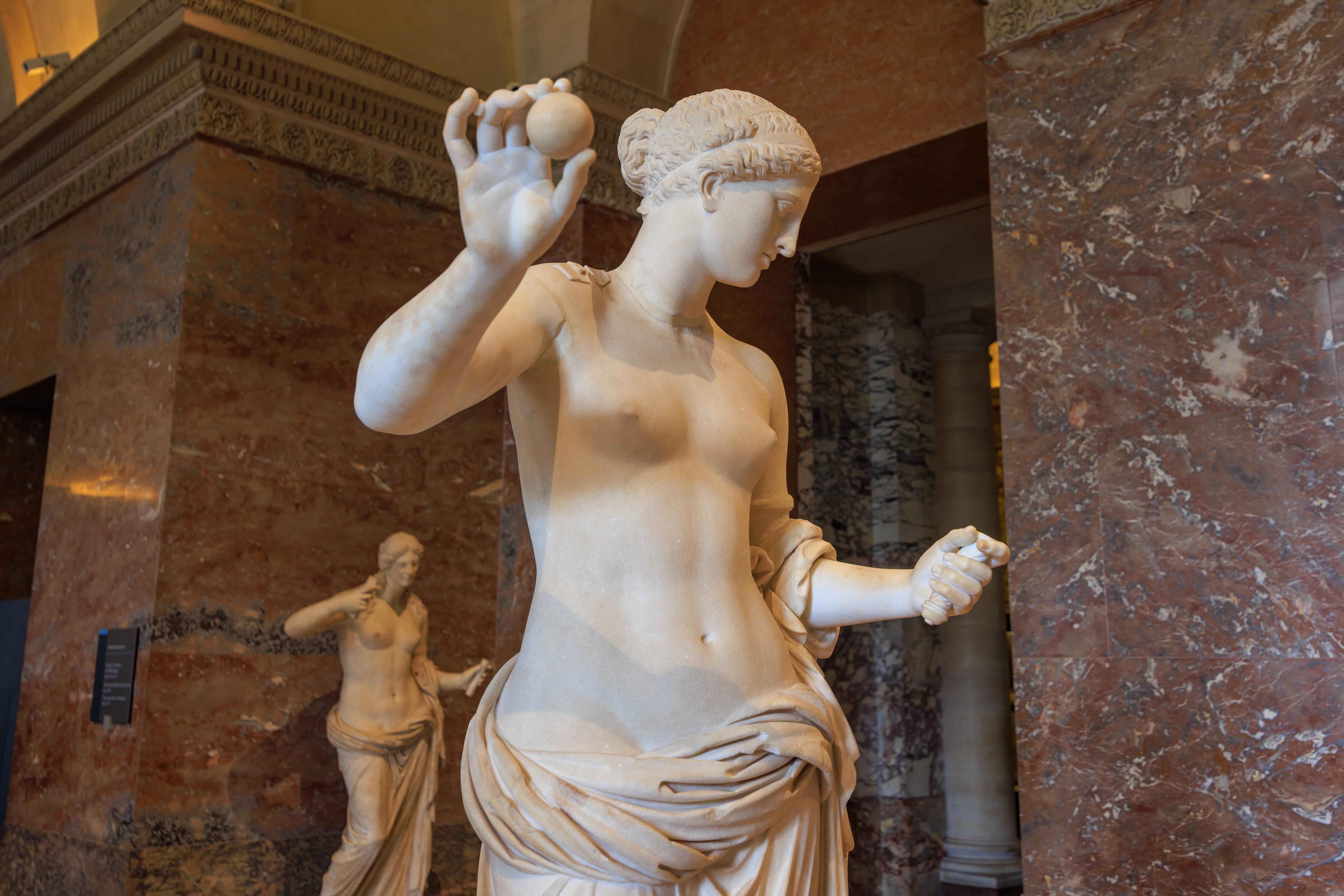
Another statue of Aphrodite. It was discovered in a Roman era theater in Arles, France. Many of the details were reconstructed as the original parts were lost (Google Translated to English)6:
Condition of the work: incomplete: the right arm, the left forearm, the tip of the nose, the part of the lemniscus, the base of the neck were missing. The arms, the nose, the neck were redone by Girardon. The bust and folds were reworked by Girardon. Numerous chips on the left ear, on the folds of the himation, on the left shoulder have been completed. The statue in 2 pieces at the knees has been glued back together. The head and bottom of the statue in numerous pieces have been glued back together.
Wikipedia provides further details7:
In his restoration of the sculpture, the royal sculptor François Girardon, to make the sculpture more definitely a Venus, added some attributes: the apple in the right hand – as won in the Judgement of Paris – and the mirror in the left. The discovery in 1911 of a cast made of the sculpture as it had first been restored only sufficiently to reassemble, before Girardon was commissioned to improve it, demonstrated the extent of Girardon's transformative restorations, which included refinishing the surfaces, slimming the figure in the process.
It looks like she is holding a little ball rather than an apple.
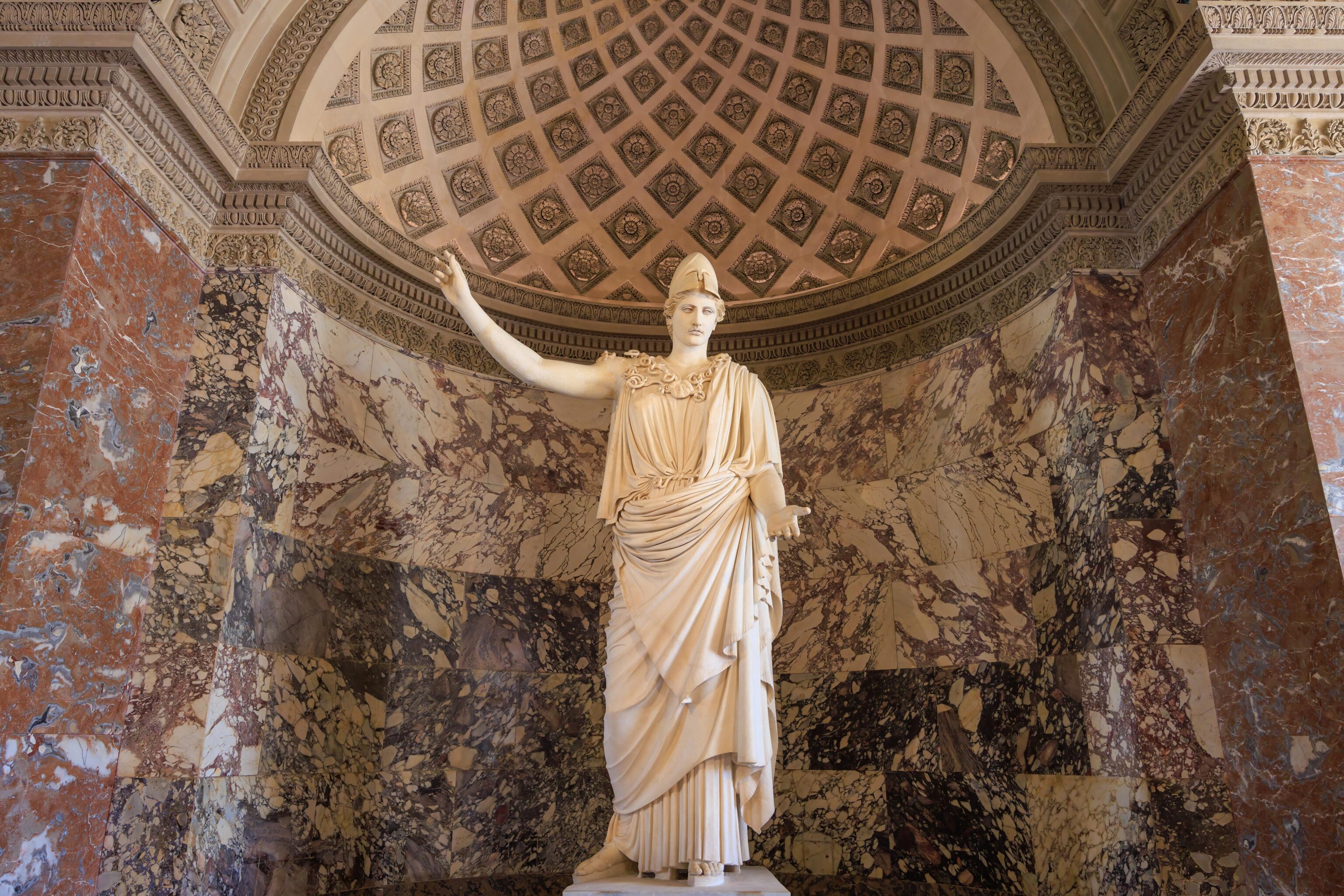
This statue of the Greek goddess Athena is apparently one of multiple copies of an original, possibly bronze, statue from Greece8:
Many ancient copies of the bronze have been found (and the Baiae find suggests industrial-scale production of them), but the most famous is the 3.05 m (10 ft) high example found in the ruins of a Roman villa in a vineyard near Velletri in 1797. This example is now in the Louvre, with Accession number is Ma 464 (MR 281). It has traces of red colour in the hair and around the eyes and mouth, a preparatory layer for a full polychromatic scheme. Upon rediscovery, it was purchased by Vincenzo Pacetti, who added the peak of the helmet, the straight forearm, the hands, the feet, the snakes, and a section of the cloak, and polished the overall surface.
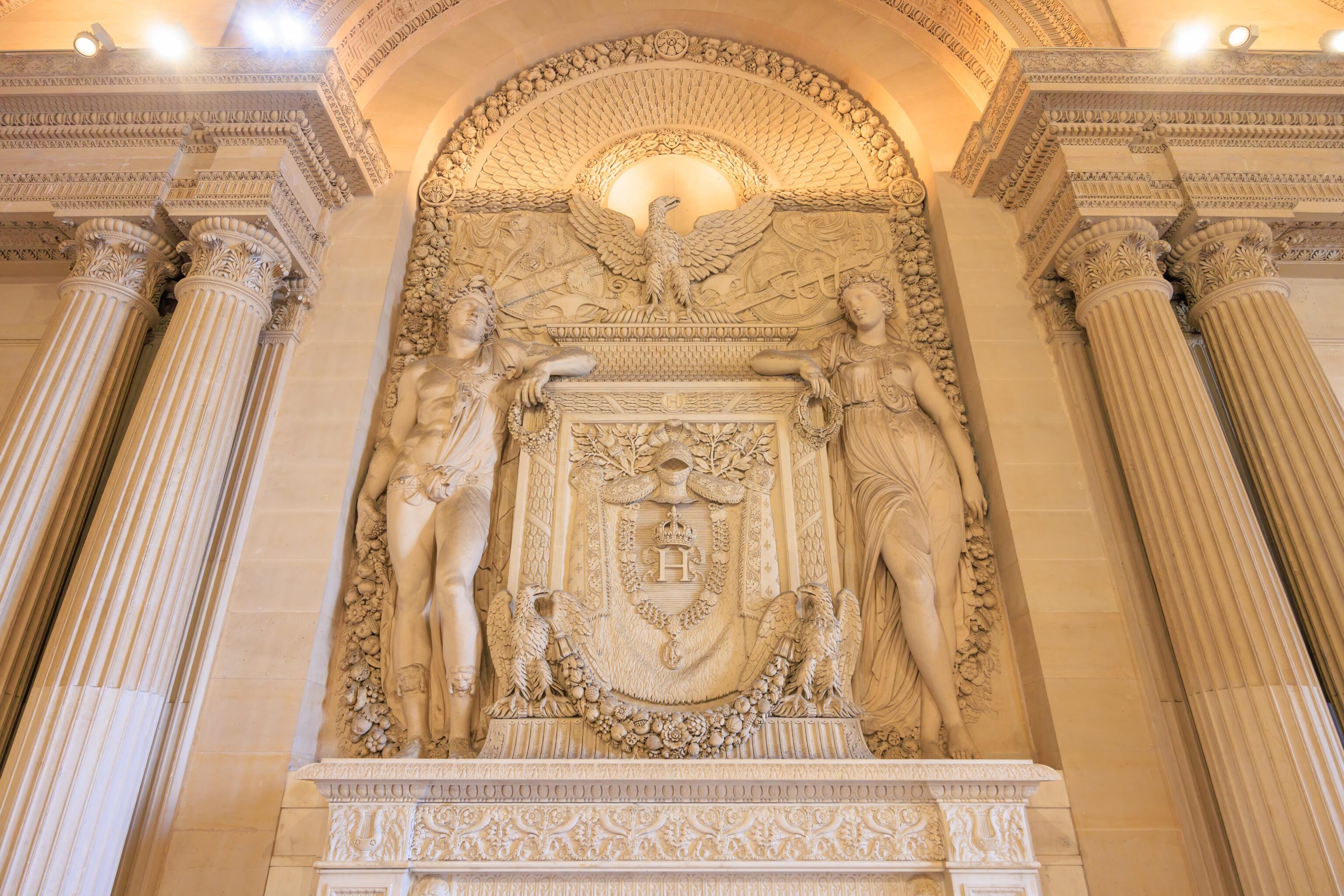
A very elaborate mantelpiece. The “H” could be for King Henri II. A page about the room on the Louvre’s website states that the room was started by King Francois I but finished by Henri II. There isn’t much about this element of the room that is easily discoverable online other than a brief statement on the same page:
Sculptures from Louis XIV’s collection began to be exhibited here in 1692 and the room became known as the ‘Salle des Antiques’. In 1806, Napoleon I had it connected to the nearby rooms that had been converted into a gallery of antiquities by the architects Charles Percier and Pierre Fontaine (see Venus de Milo room and Anne of Austria’s Apartments). The latter also oversaw the completion of the decoration of the Salle des Cariatides: the arches of the vaulted ceiling were carved and the fireplace was reconstructed around two allegorical sculptures by Jean Goujon.
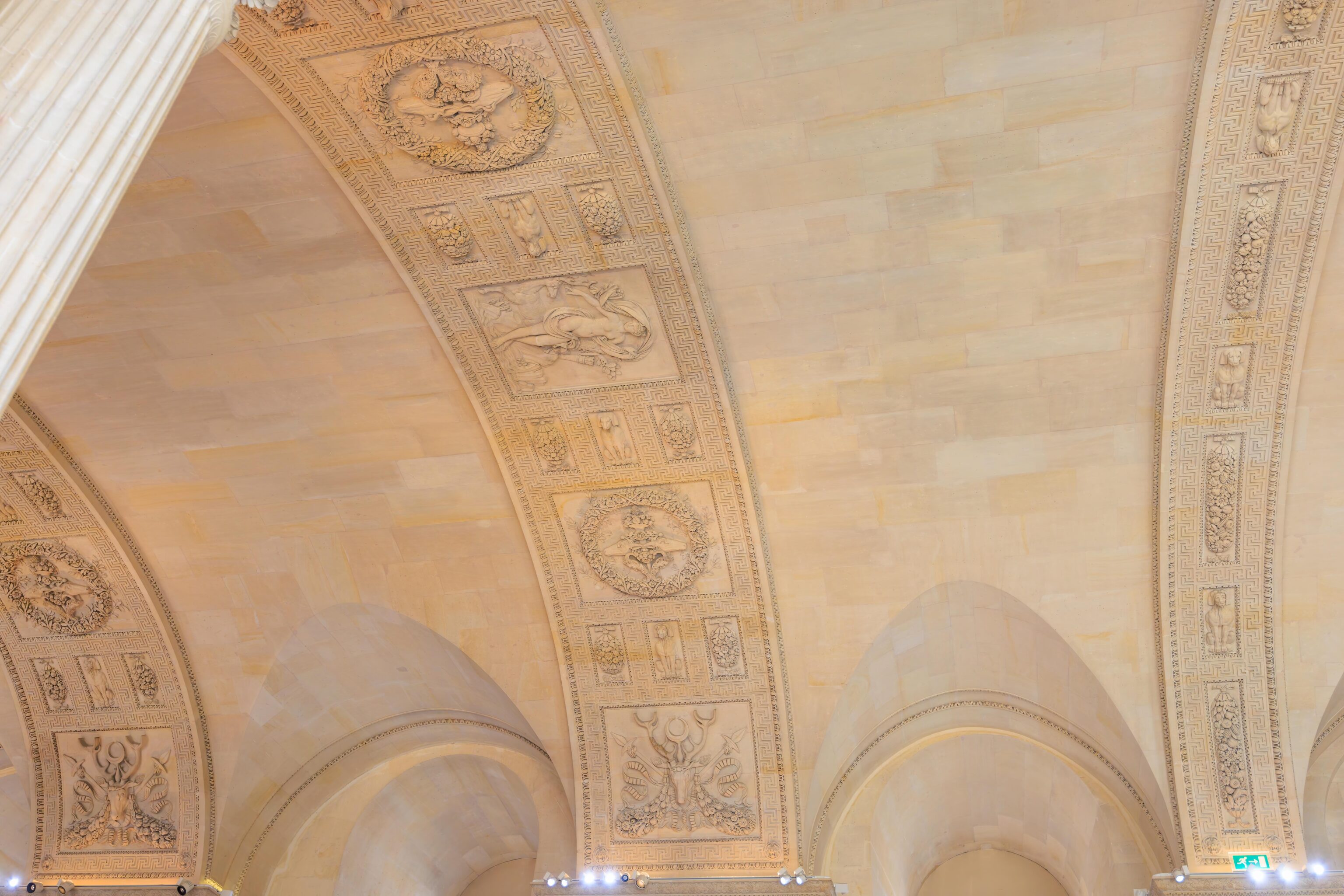
A few of the arches that were mentioned.
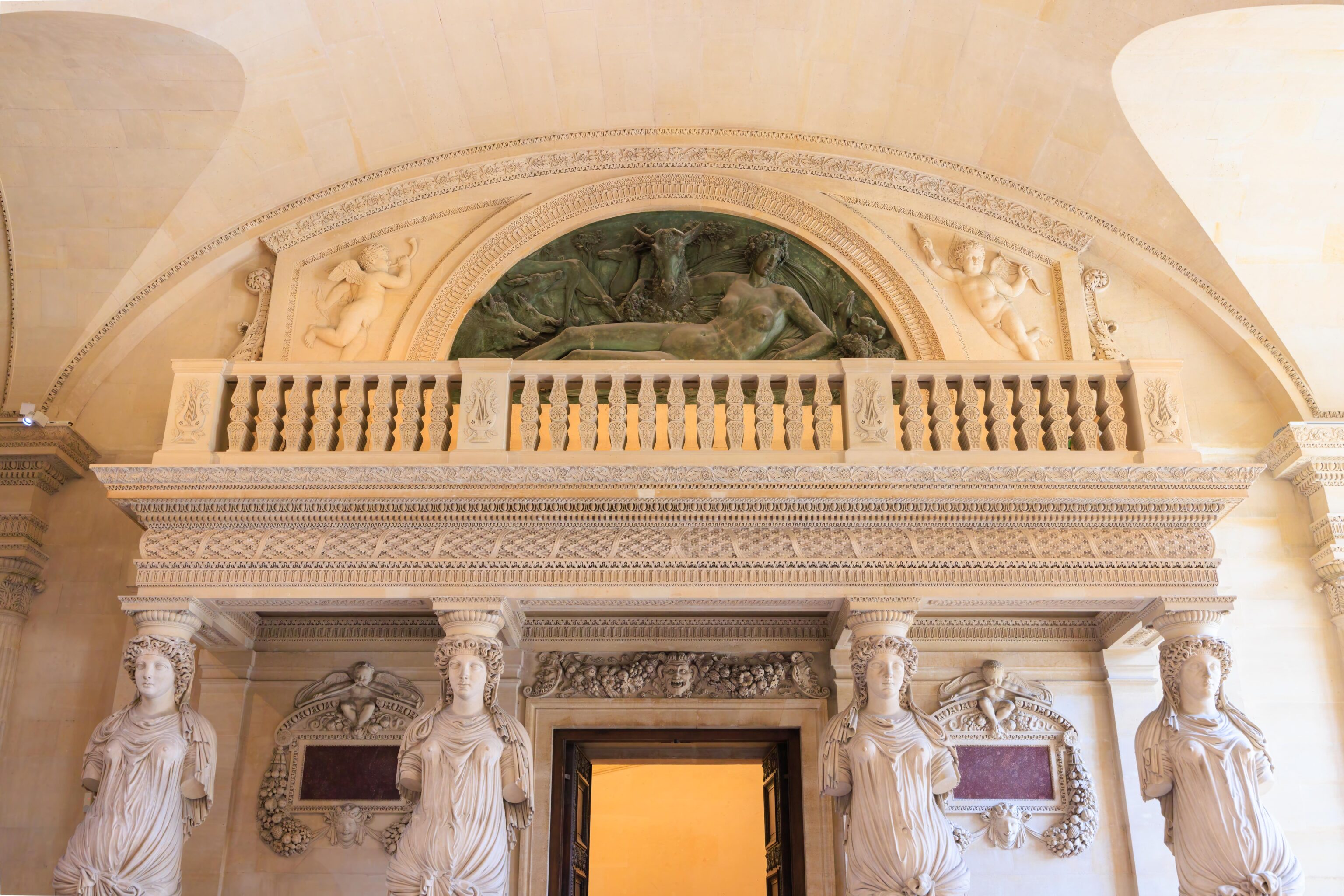
These are the caryatids that give the room it’s name. Oxford Languages defines this term:
a stone carving of a draped female figure, used as a pillar to support the entablature of a Greek or Greek-style building.
It is very specific as being a draped female figure and of a Greek or Greek-styled building. Apparently, a male figure is called an atlas, like the often sculpted image of Atlas holding up the world.
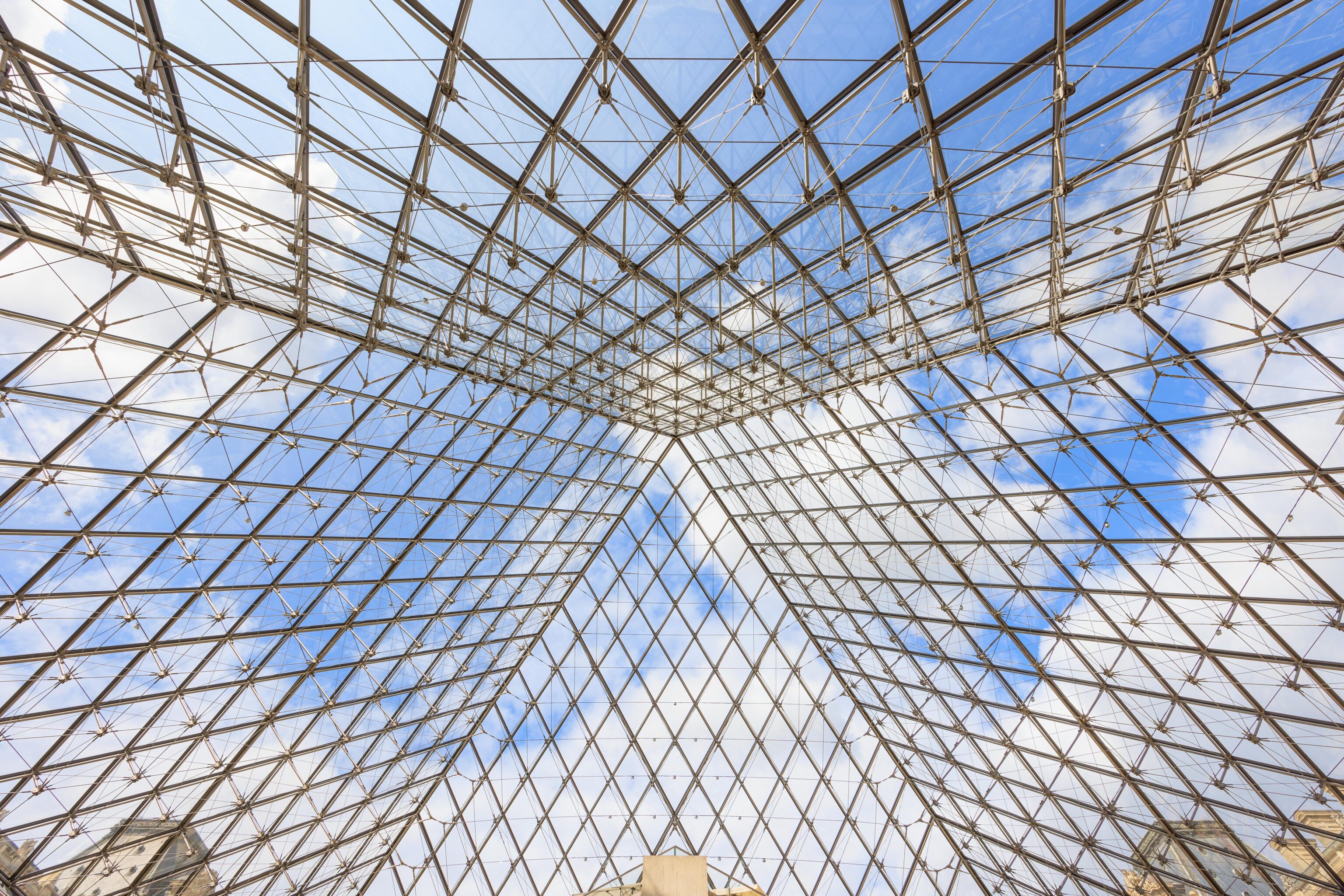
By now, we were ready to go and find food. We decided to exit, knowing that there would never be enough time to see more than a small fraction of the museum in a day. We headed back to the pyramid to get our bags from the storage lockers.
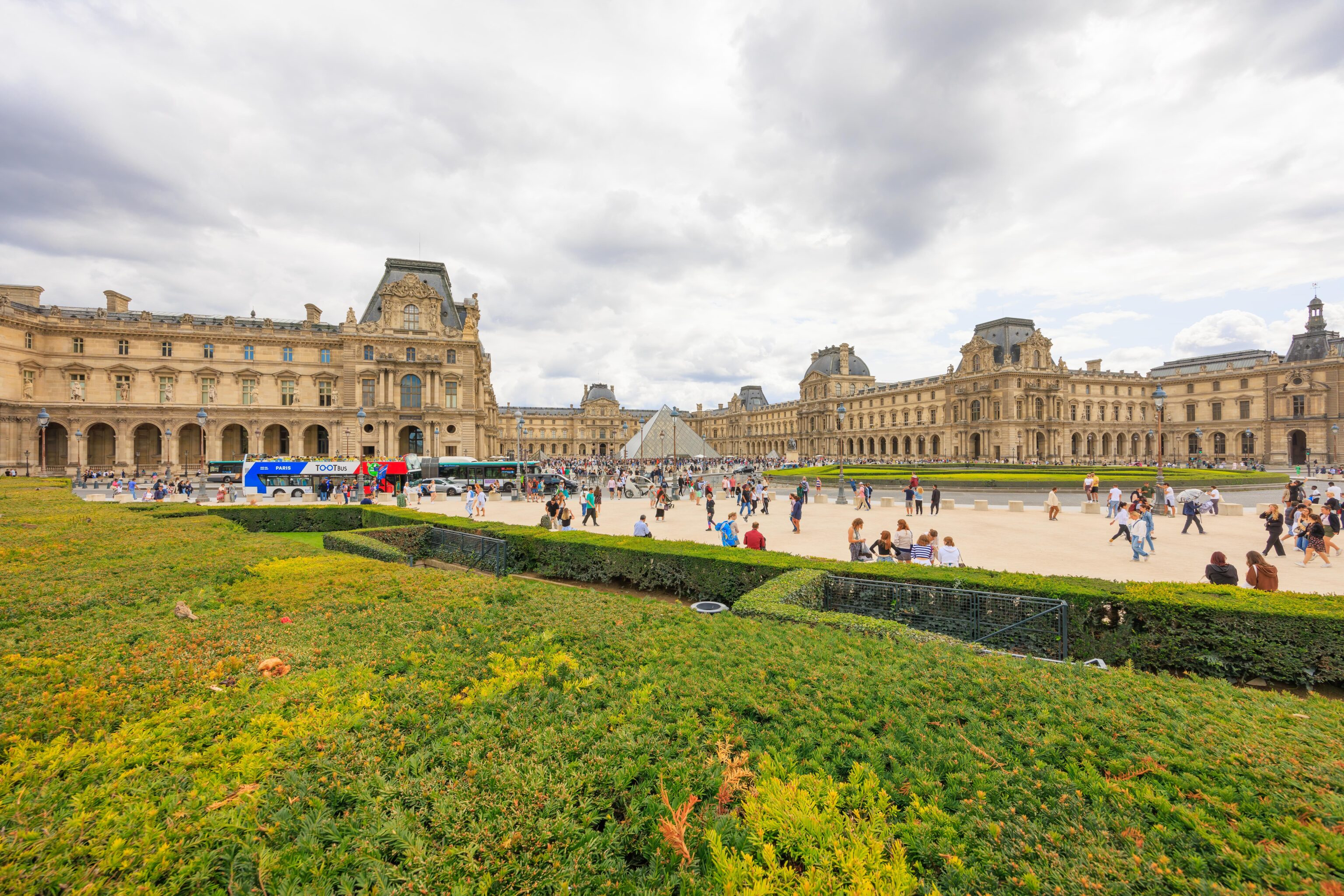
The exit to the Louvre is to the west of the pyramid via the Carrousel du Louvre, a shopping mall. We took a brief break in the northeast corner of the adjacent Jardin du Carrousel.
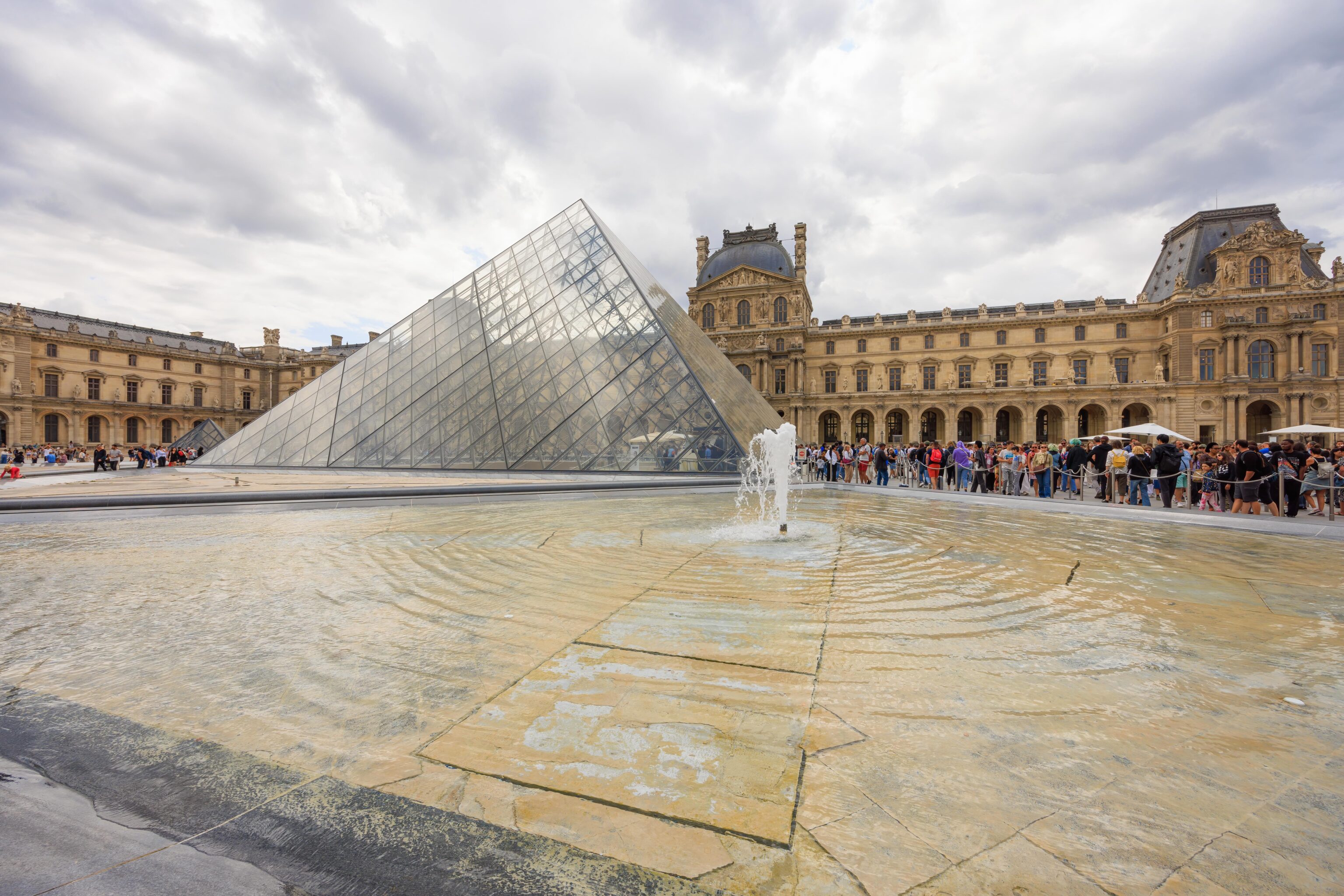
We went back to the pyramid to take a look under different lighting conditions than earlier in the day. The queues were definitely longer! It was a good thing we got early timed tickets!
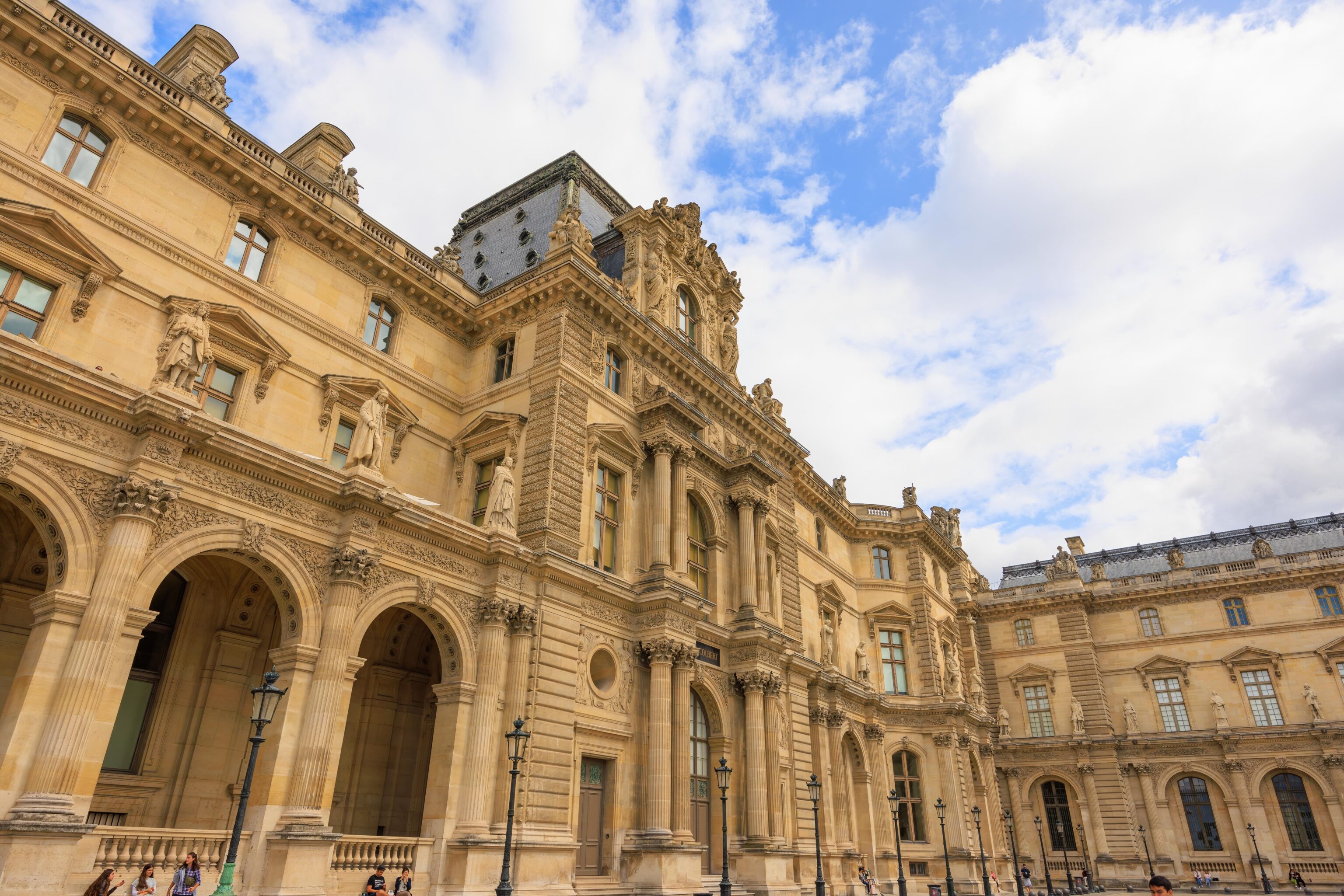
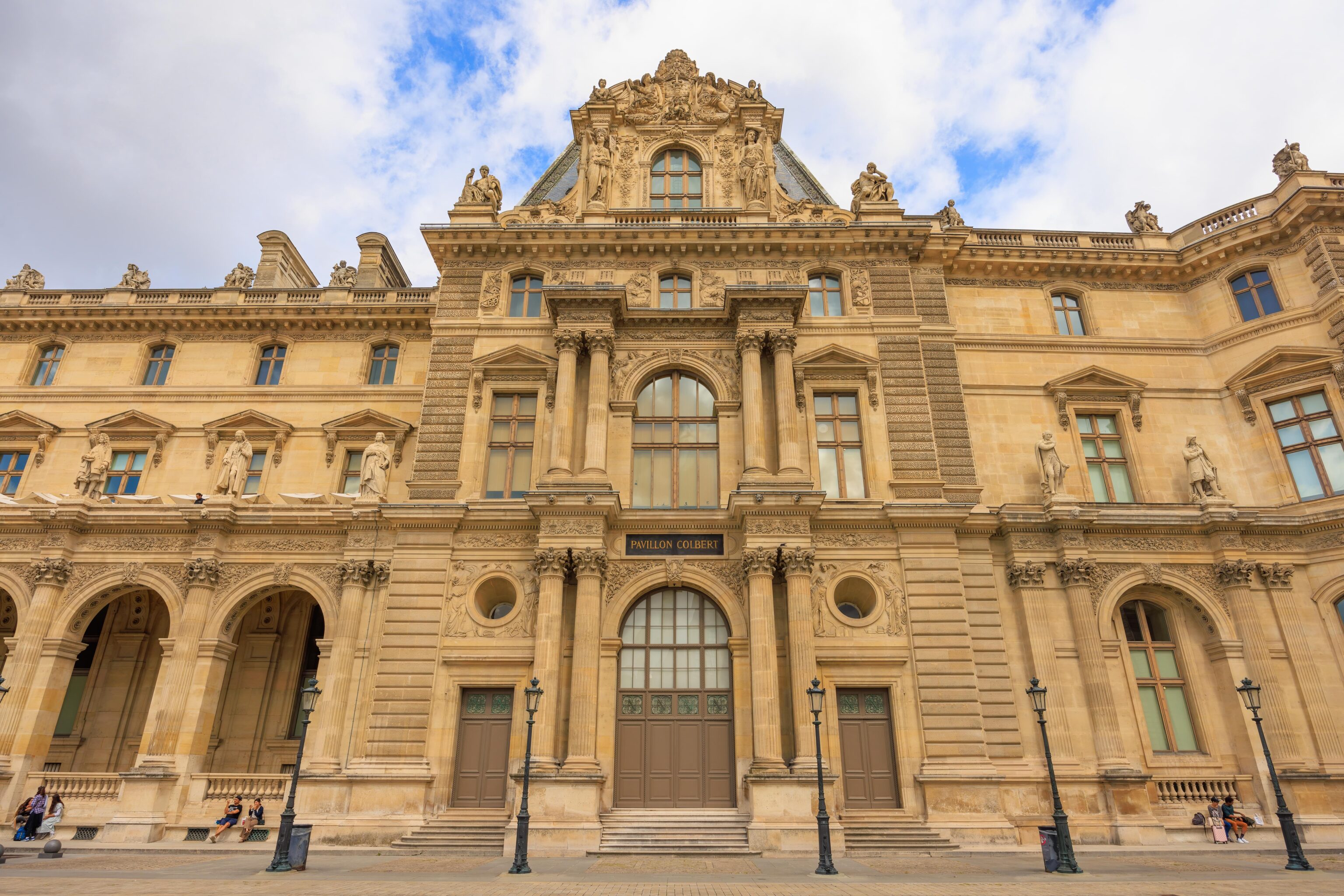
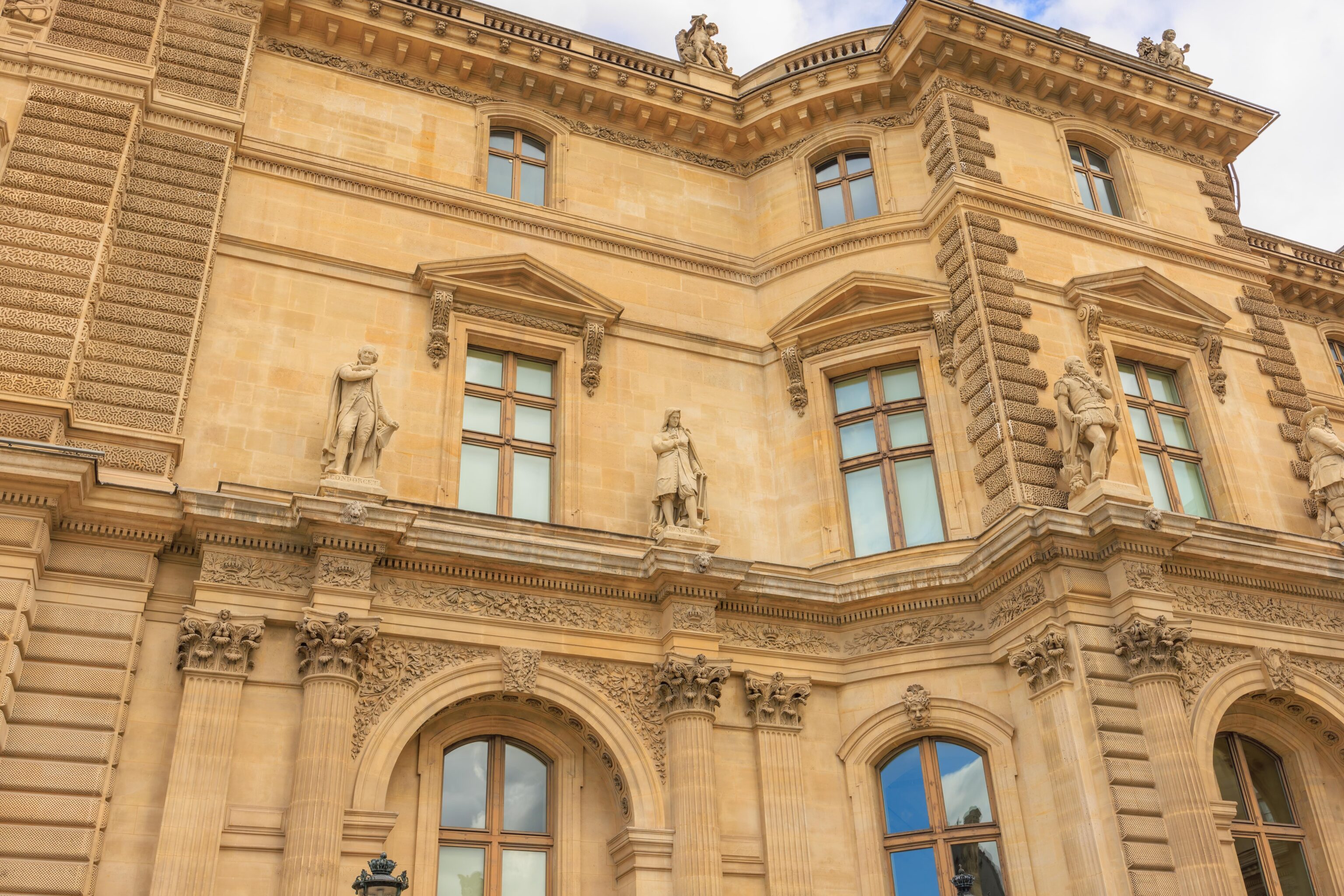
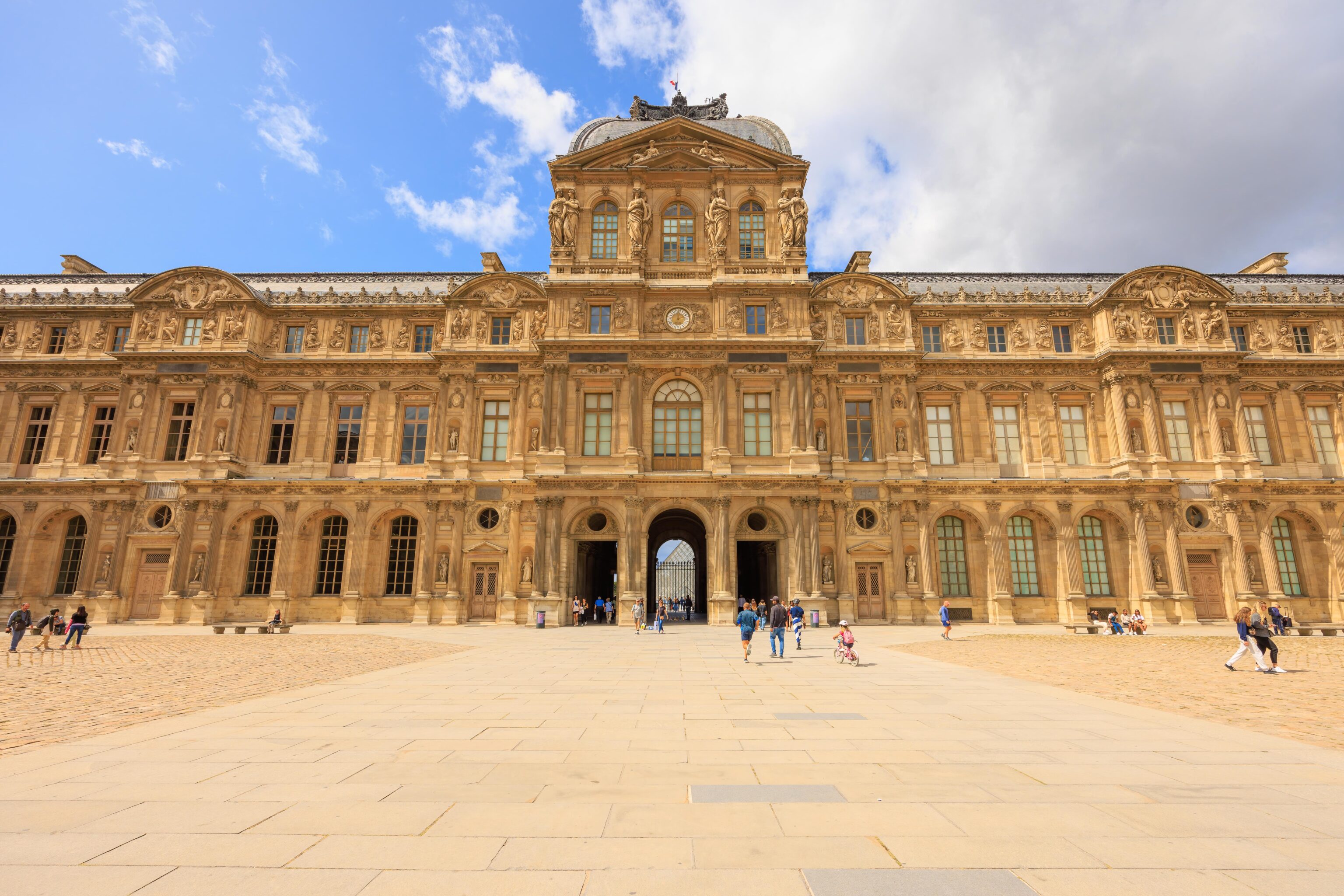
We walked to the east beyond the pyramid into a courtyard and further out its eastern entrance.
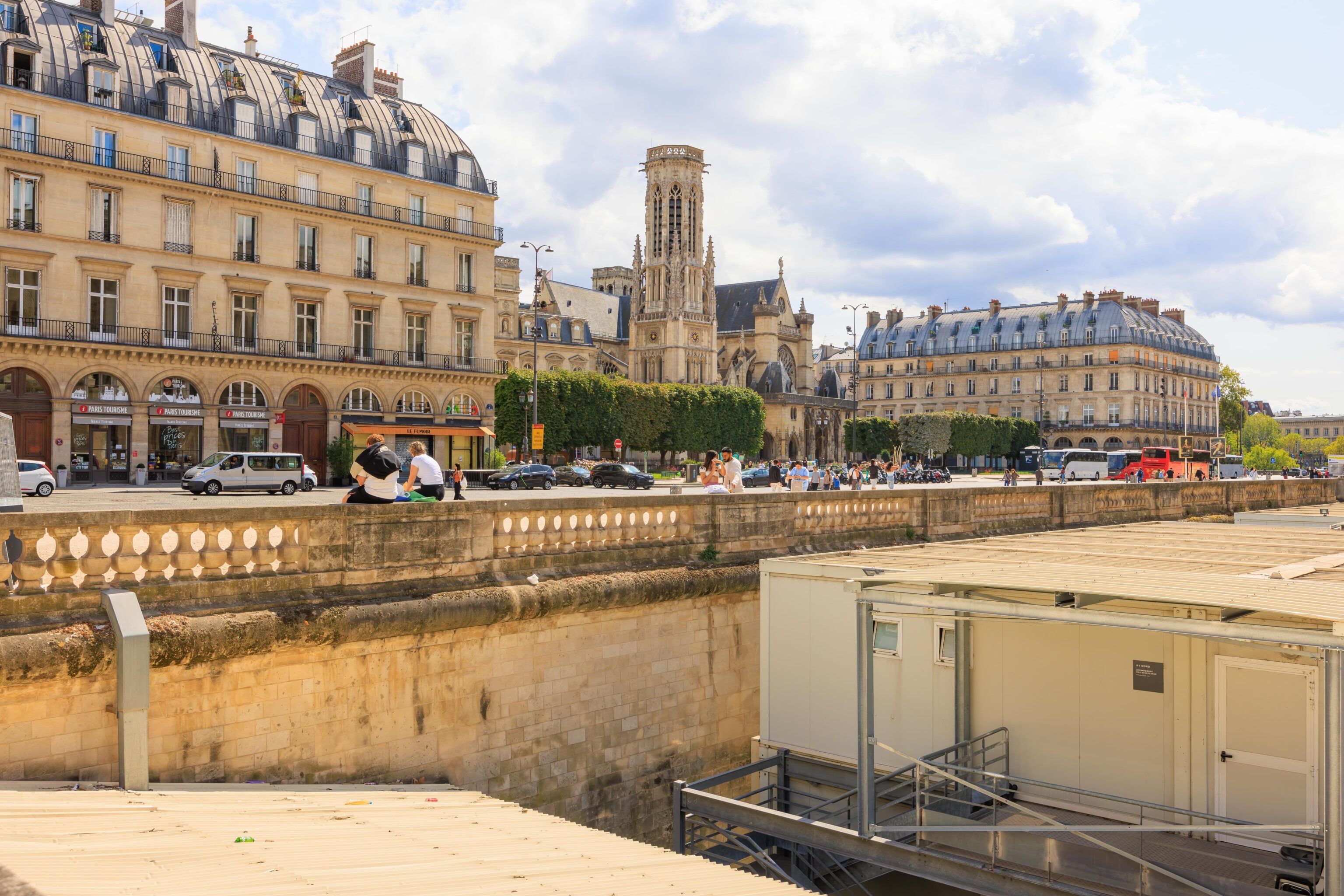
Looking across the street, a very Parisian scene with some buildings and the Saint-Germain-l’Auxerrois church.
We visited BO&MIE, a relatively new Parisian boulangerie with 5 locations.
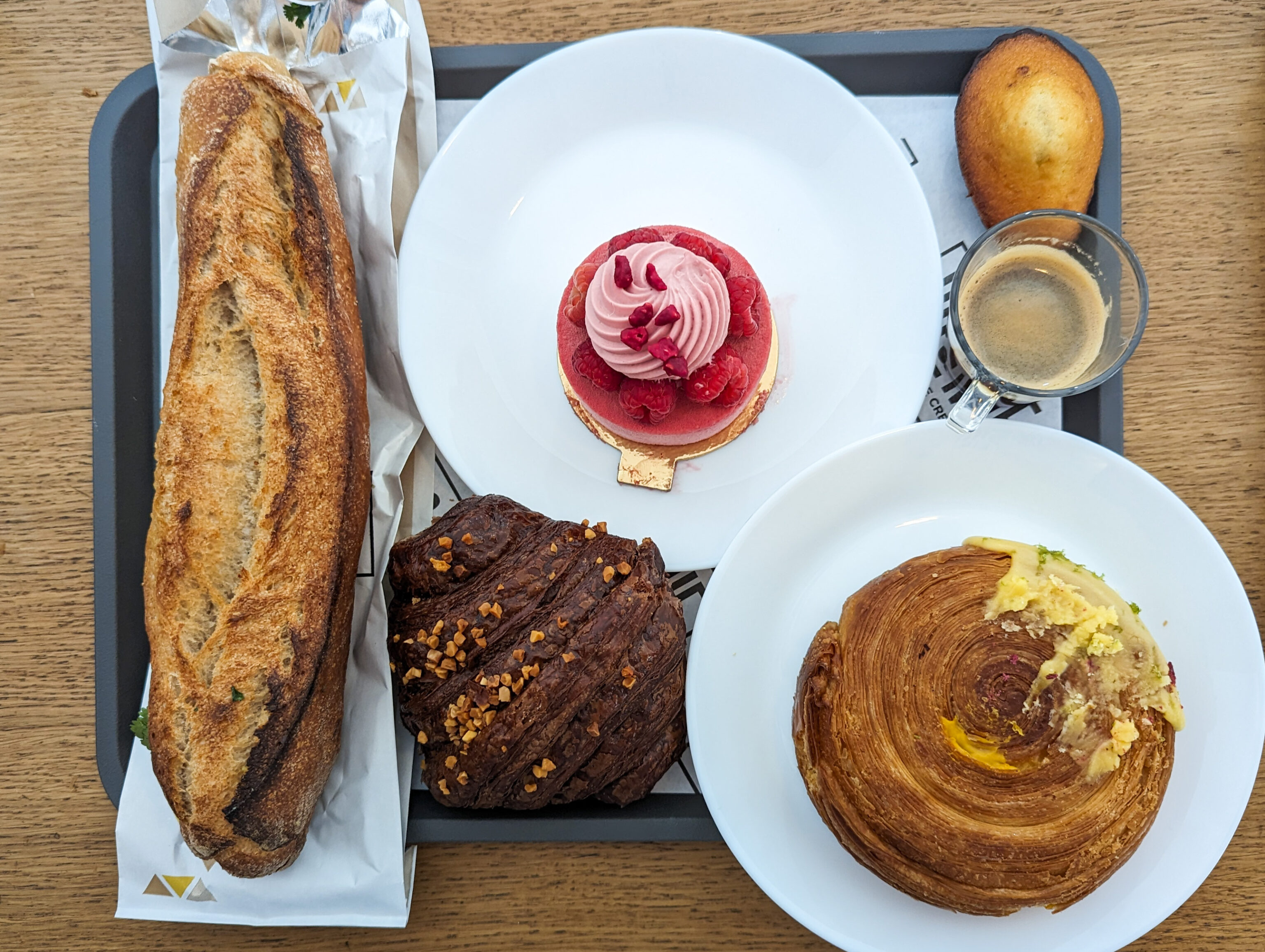
Everything that was on display looked fantastic. We ordered a small selection to eat on the second floor.
Using their website, which allows online orders, we can guess as to what we got, clockwise from left:
- “Sandwich poulet / curry – Baguette BO&MIE, filet de poulet poché au curry, carottes rôties, coriandre et cream cheese” [BO&MIE baguette, curry poached chicken fillet, roasted carrots, coriander and cream cheese]
- Unknown raspberry item, not on menu.
- “Madeleine citron (unité) – Madeleine garnie au confit de citron et glaçage citron” [Lemon Madeleine (one) – Madeleine garnished with lemon confit and lemon icing]
- Shot of espresso
- Based on other items on the menu, this was probably a mango roll.
- “Croissant cacao praliné – Pâte à croissant au cacao, garnie d’une barre de praliné / feuilletine” [Praline cocoa croissant – Cocoa croissant dough, topped with a praline/feuilletine bar]
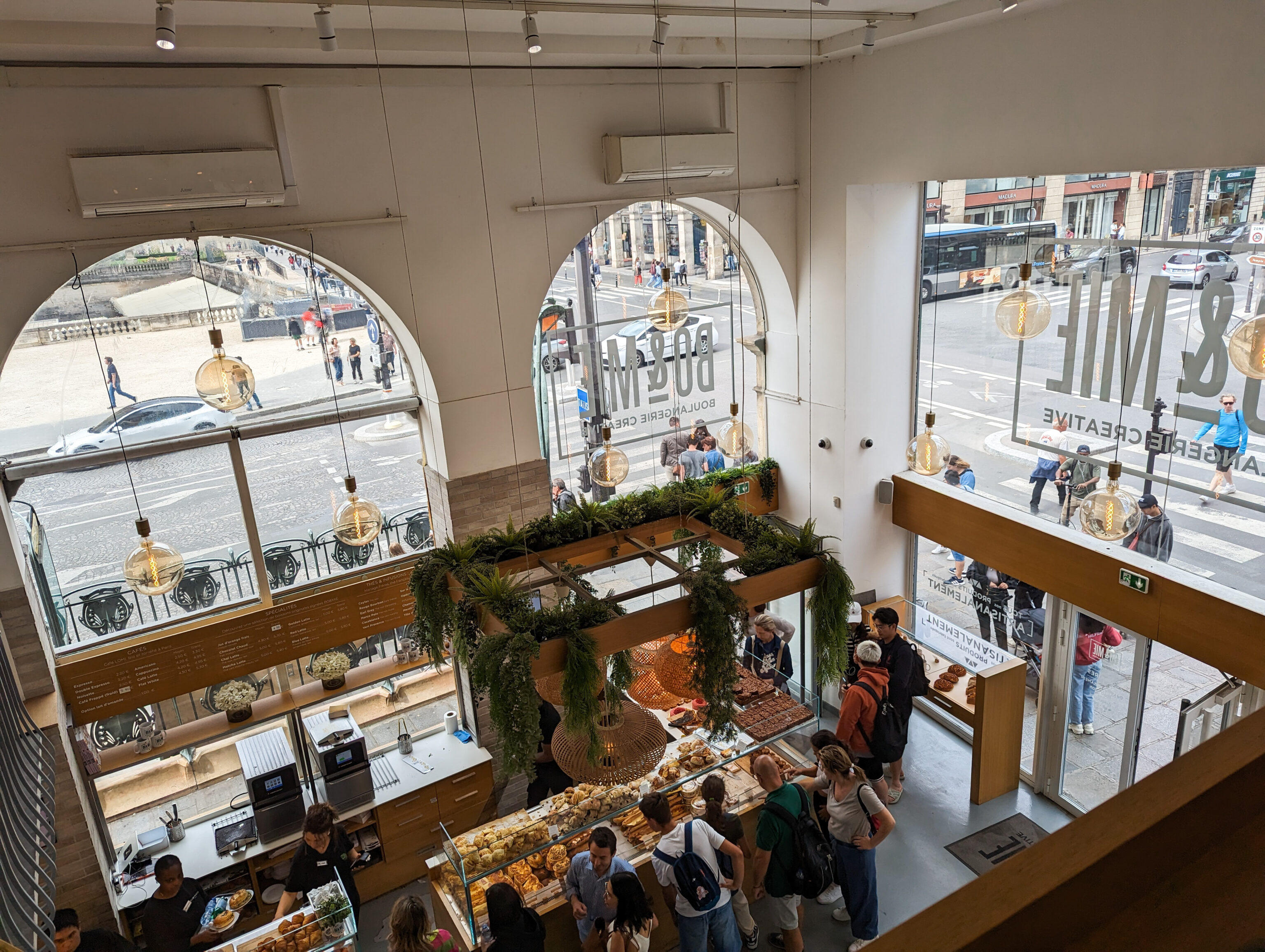
We found seating that overlooked the counter below. It is a nice space! It was very busy when we arrived but was a bit emptier by the time we were done.
Saint-Germain-l’Auxerrois
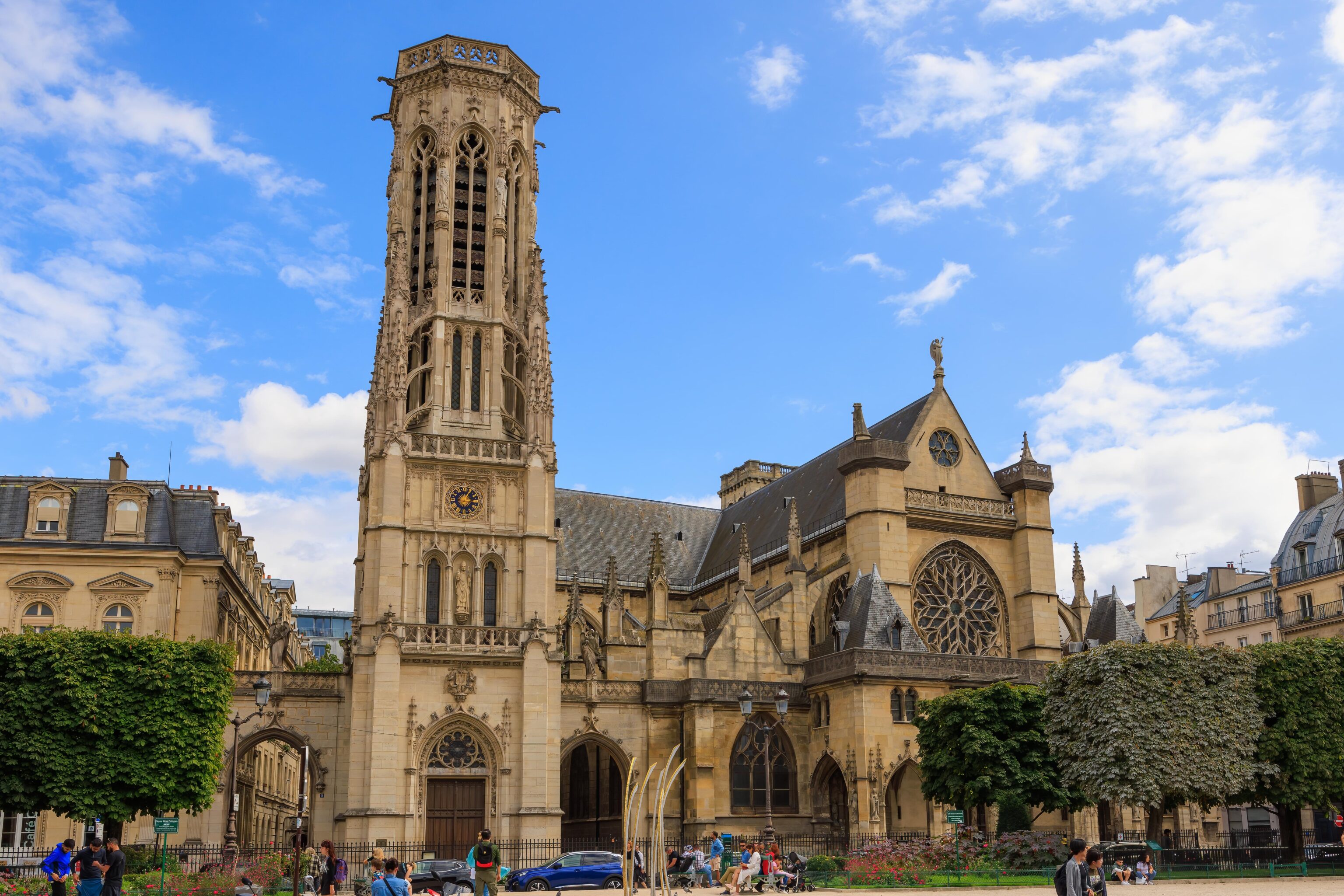
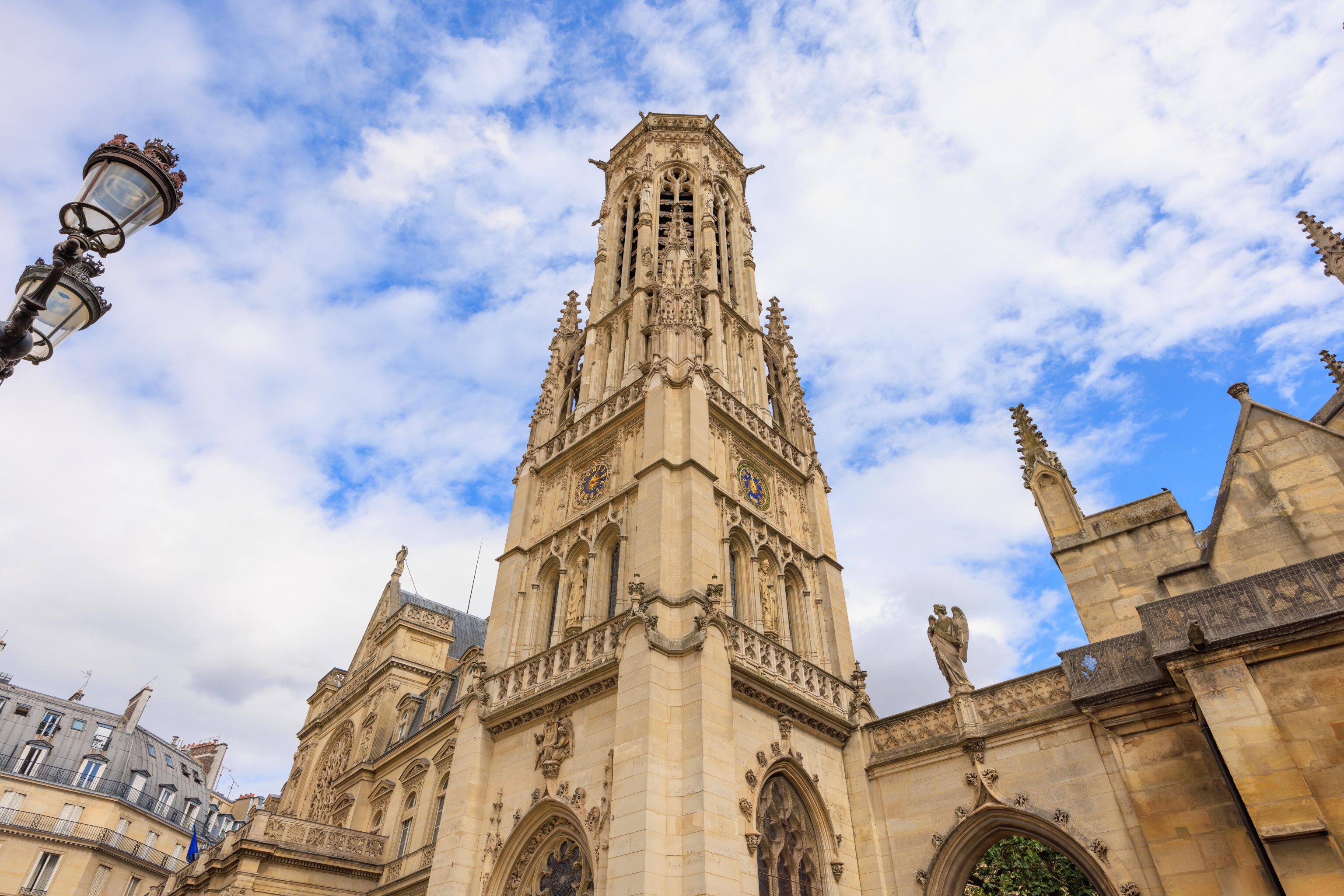
After eating, we headed to Saint-Germain-l’Auxerrois, the church that we saw from across the street. Wikipedia offers this description of the church9:
The Church of Saint-Germain-l'Auxerrois is a Roman Catholic church in the First Arrondissement of Paris, situated at 2 Place du Louvre, directly across from the Louvre Palace. It was named for Germanus of Auxerre, the Bishop of Auxerre (378–448), who became a papal envoy and met Saint Genevieve, the patron saint of Paris, on his journeys. Genevieve is reputed to have converted queen Clotilde and her husband, French king Clovis I to Christianity at the tomb of Saint Germain in Auxerre. The current church was built in the 13th century, with major modifications in the 15th and 16th centuries. From 1608 until 1806, it was the parish church for inhabitants of the palace, and many notable artists and architects who worked on the palace have their tombs in the church. Since the 2019 fire, which badly damaged Notre Dame de Paris Cathedral, the cathedral's regular services have been held at Saint-Germain-l'Auxerrois.
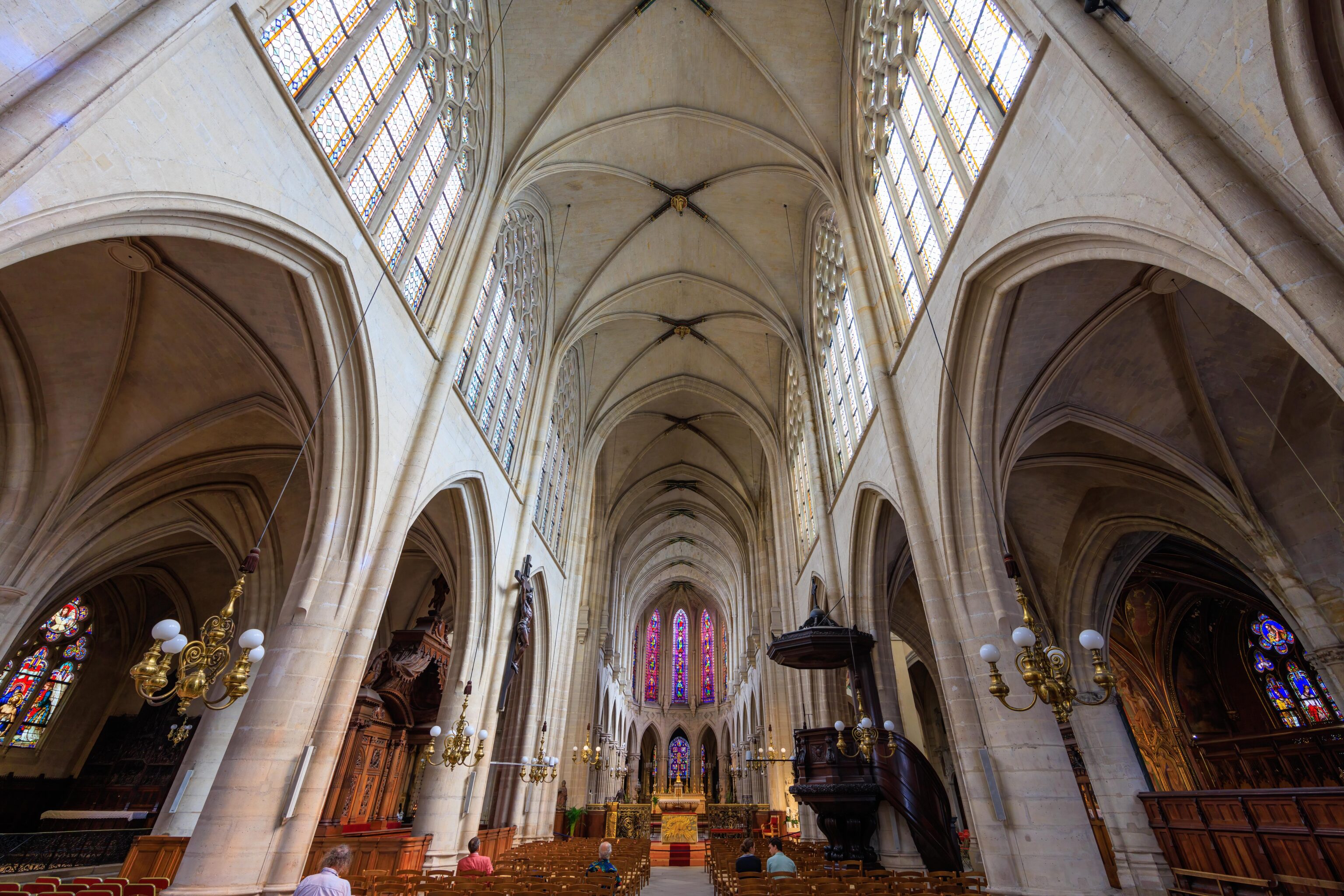
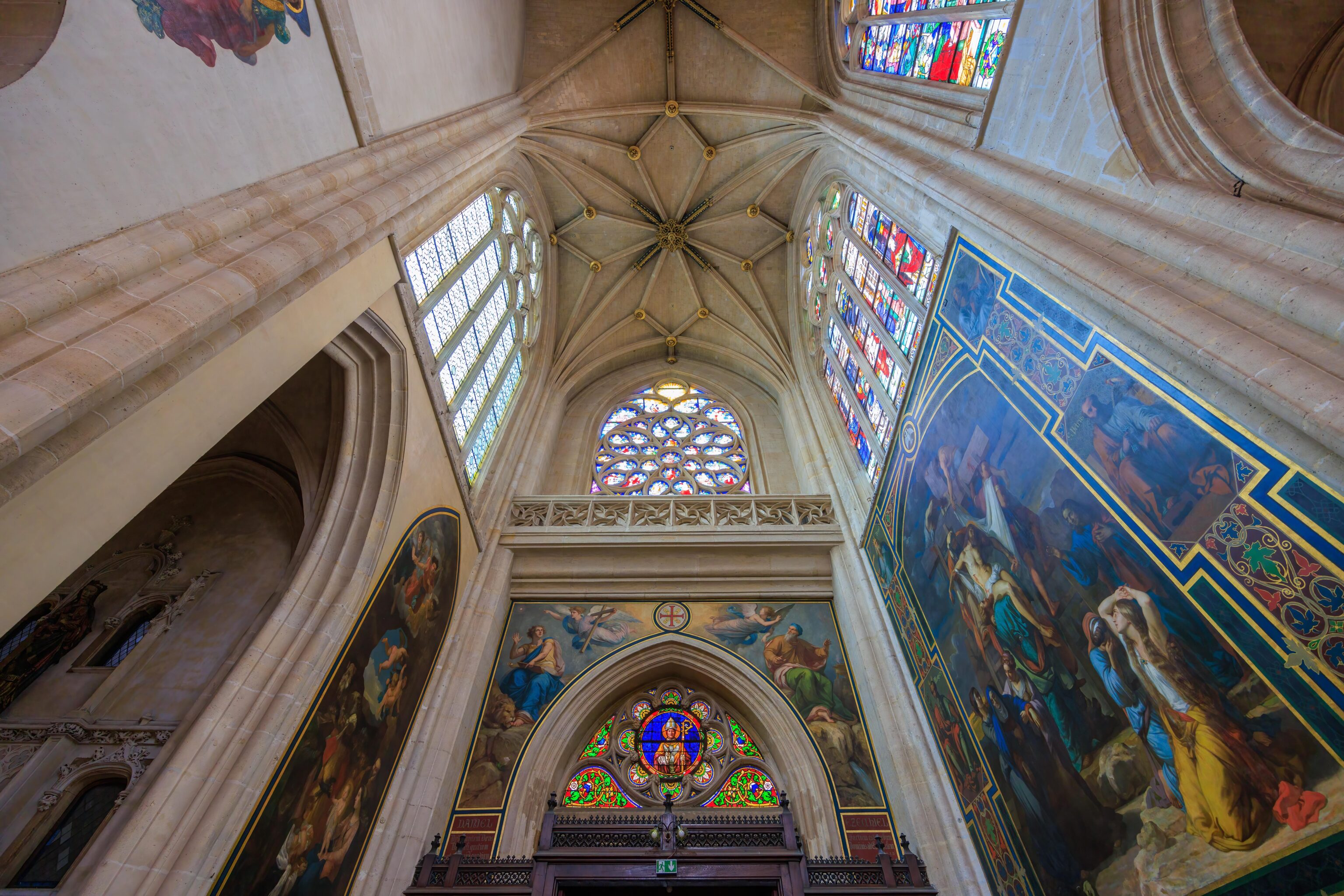
Overall, not a very ornate church. And definitely less ornate than some of the rooms that we just saw in the Louvre!
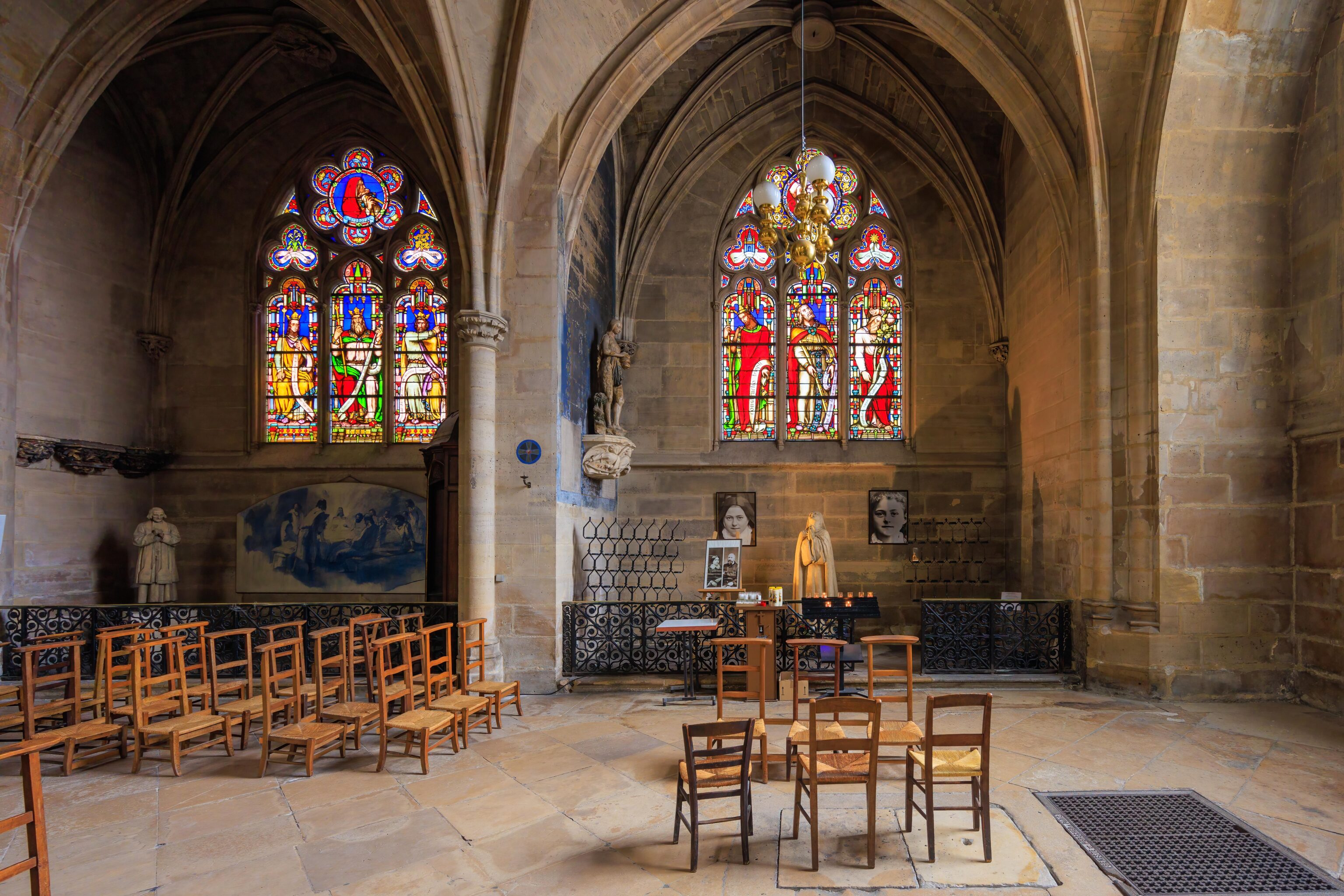
This chapel had chairs for children!
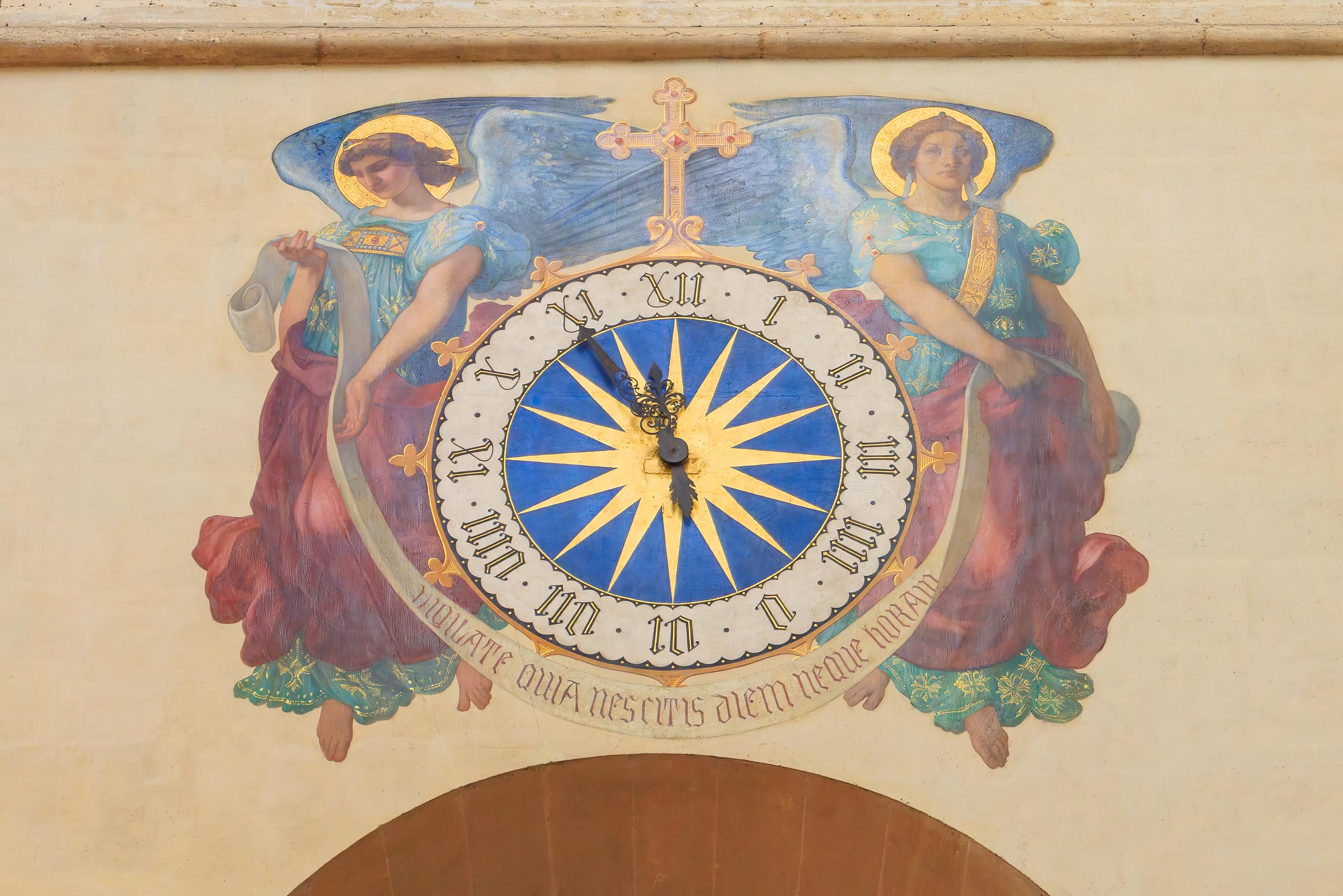
A clock decorated by a painting on the wall. Not really something we’ve noticed in other churches.
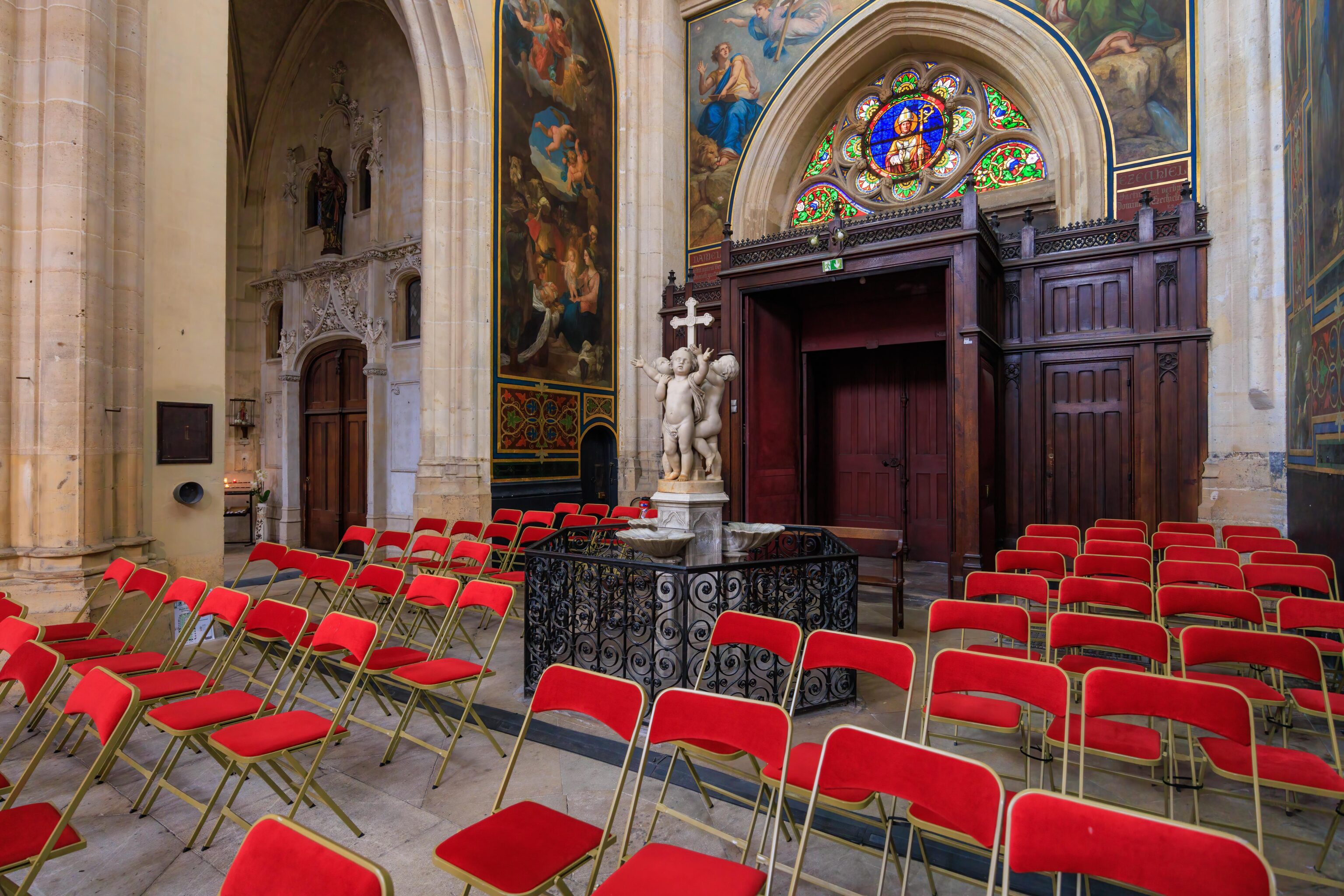
This sculpture with three children seems like it could be a font, but researching using Google seems to indicate this is not the church’s font.
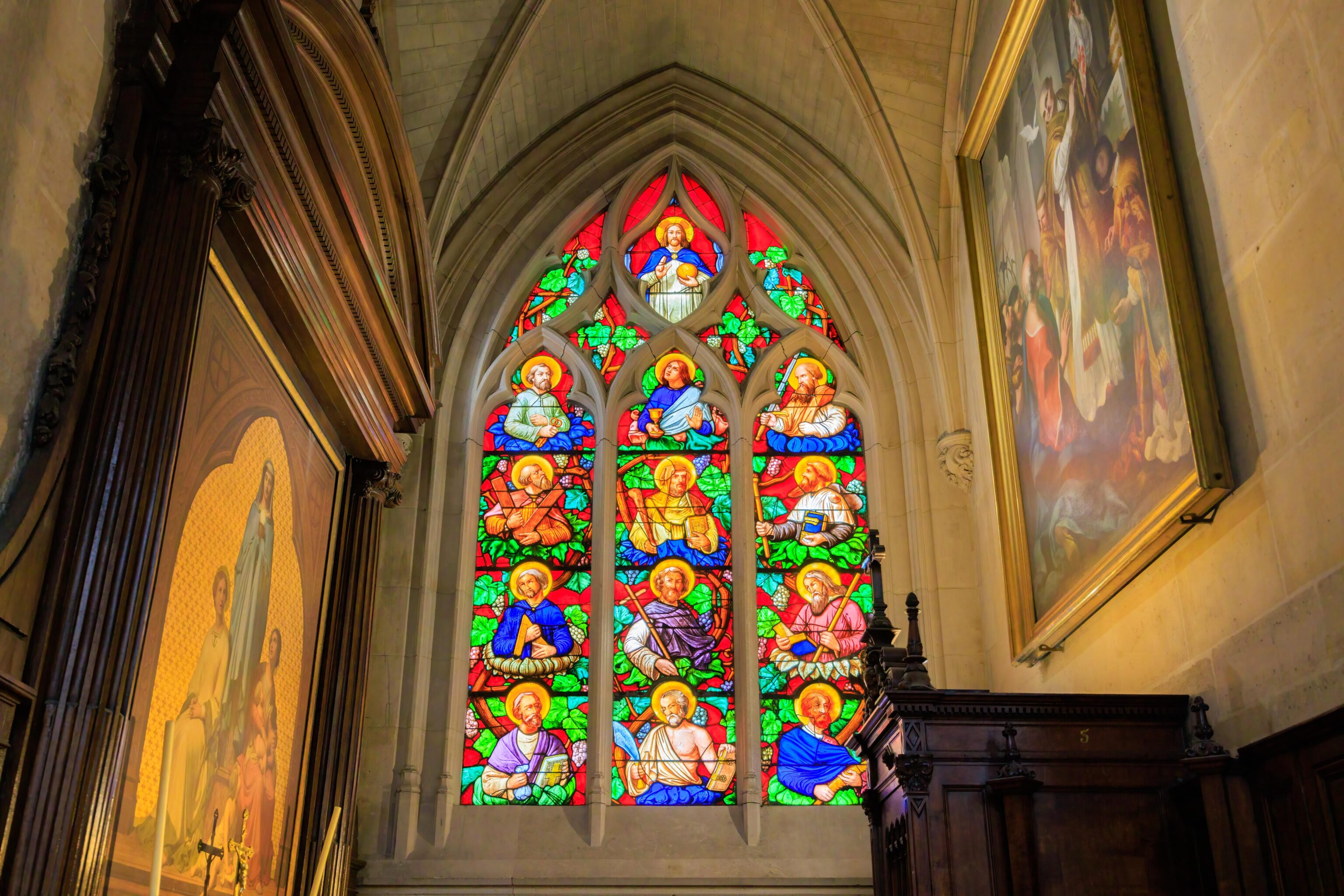
A beautiful stained glass window, presumably showing Jesus and the twelve apostles.
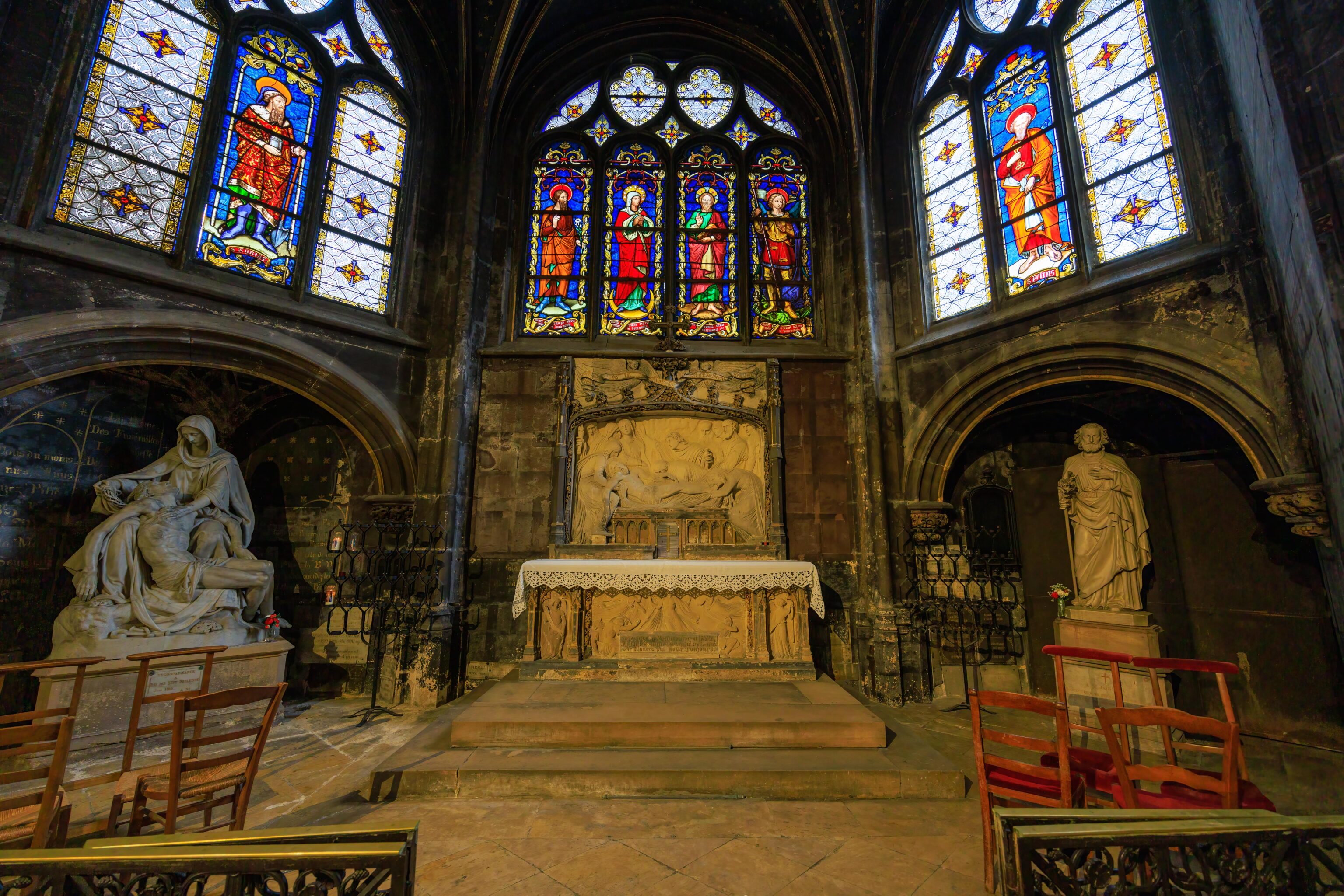
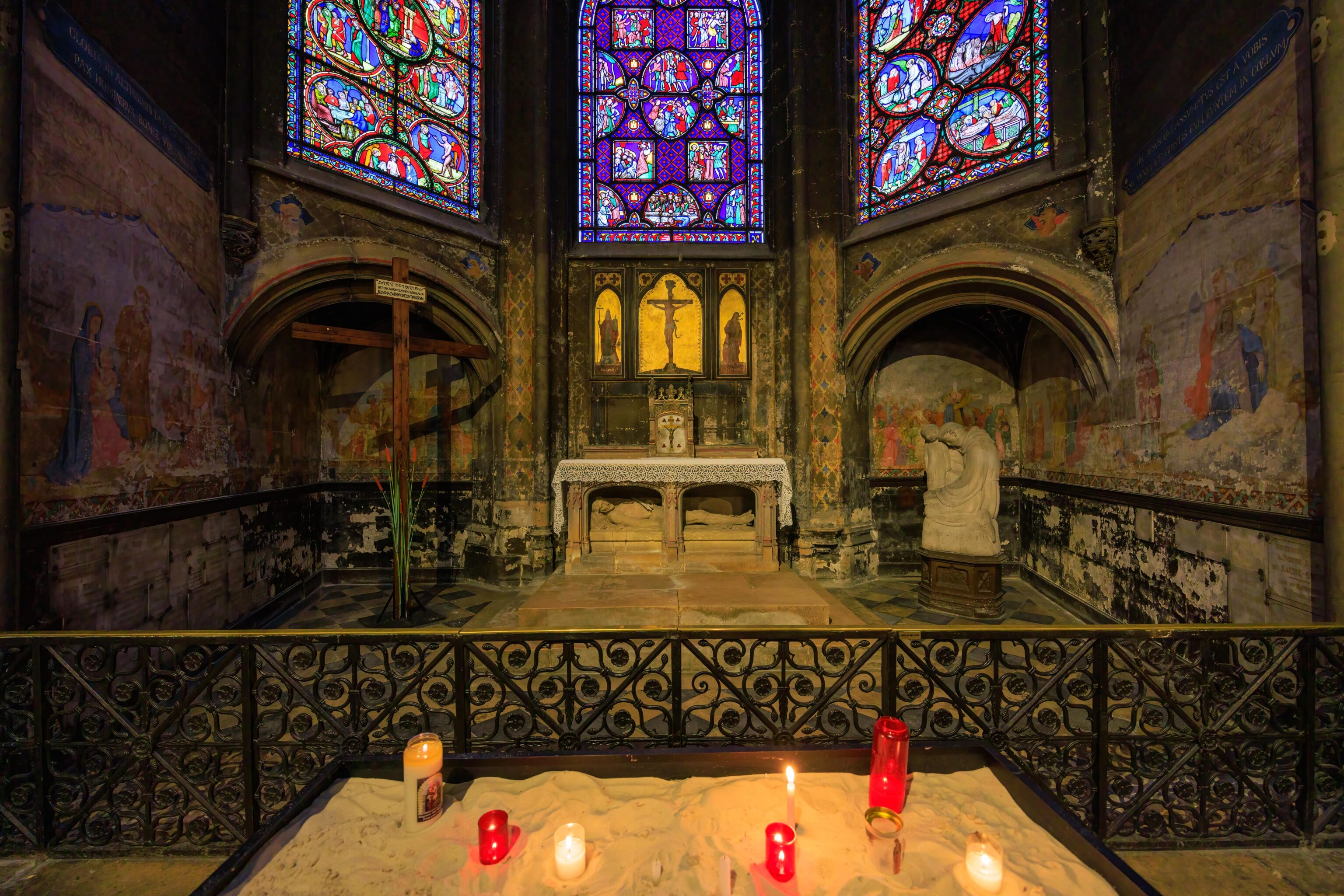
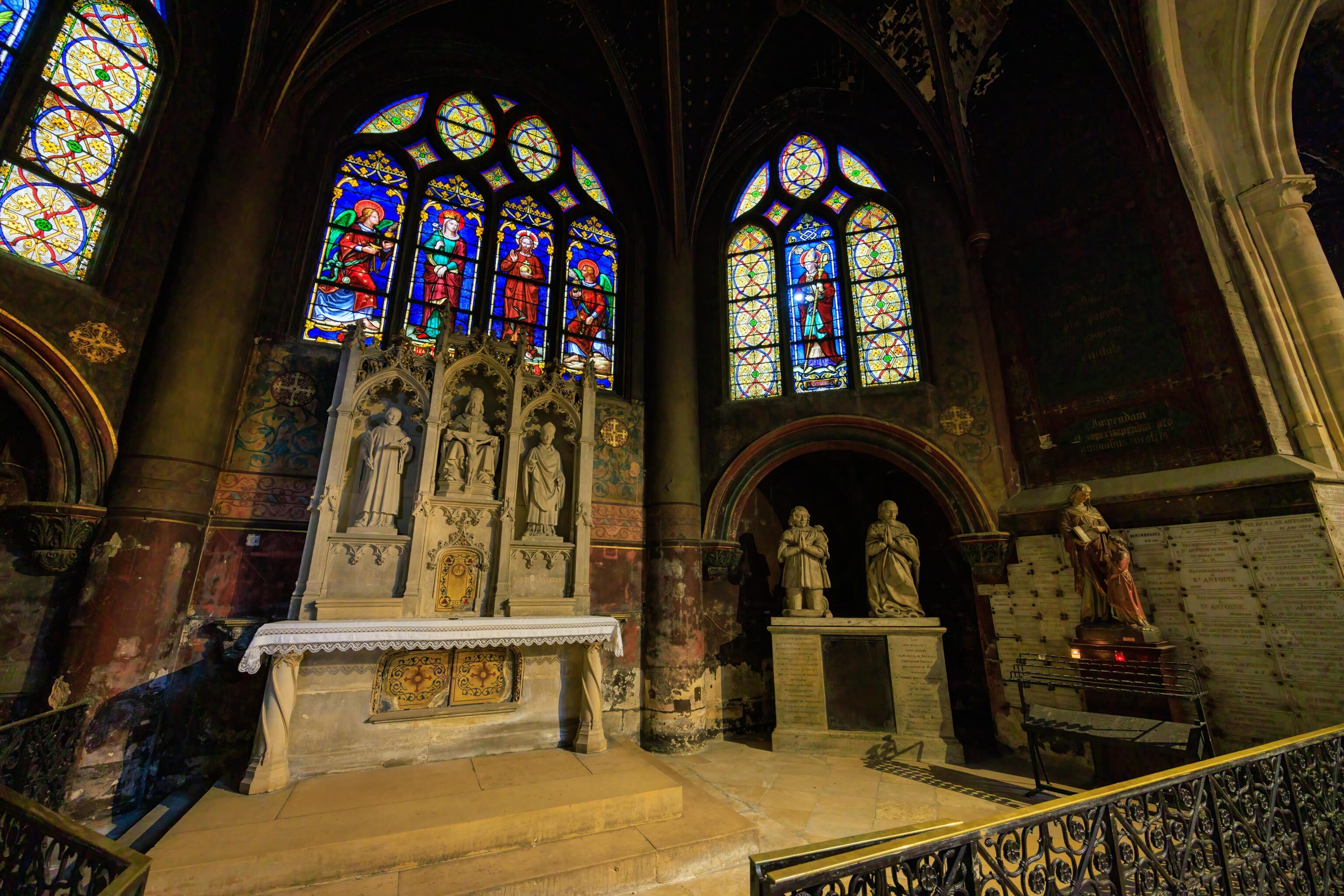
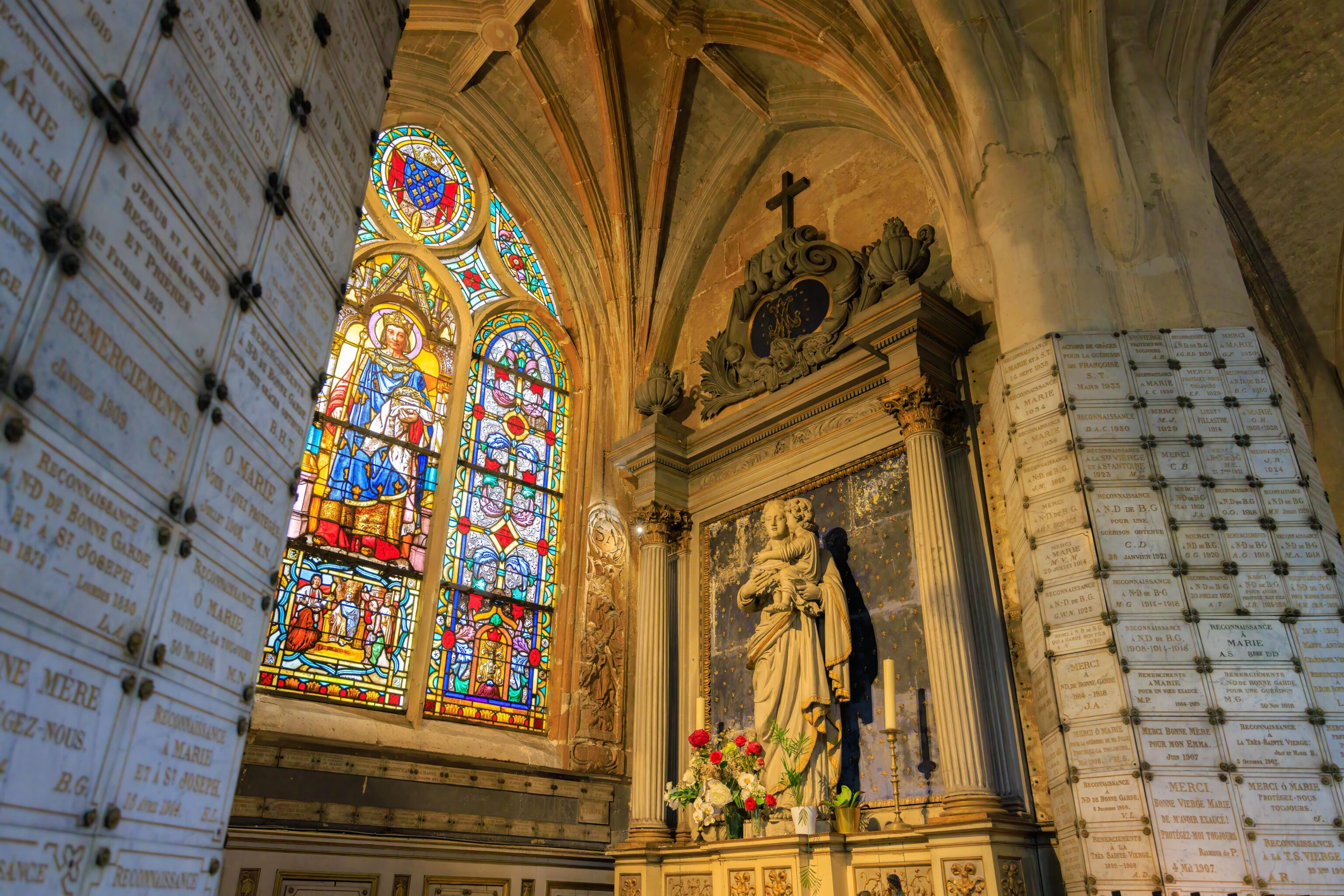
A few scenes from the far end of the church.
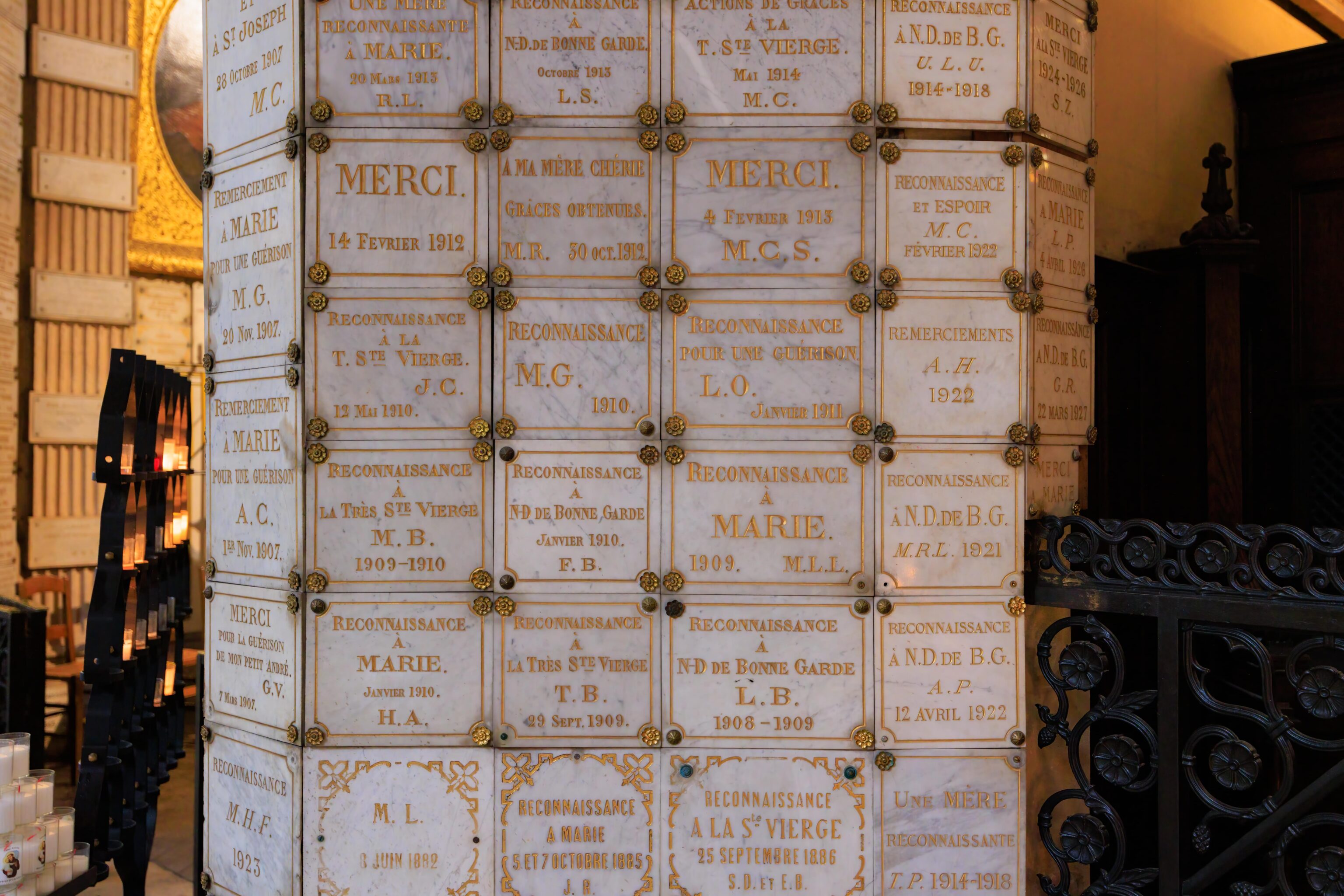
These all seem to be expressing gratitude.
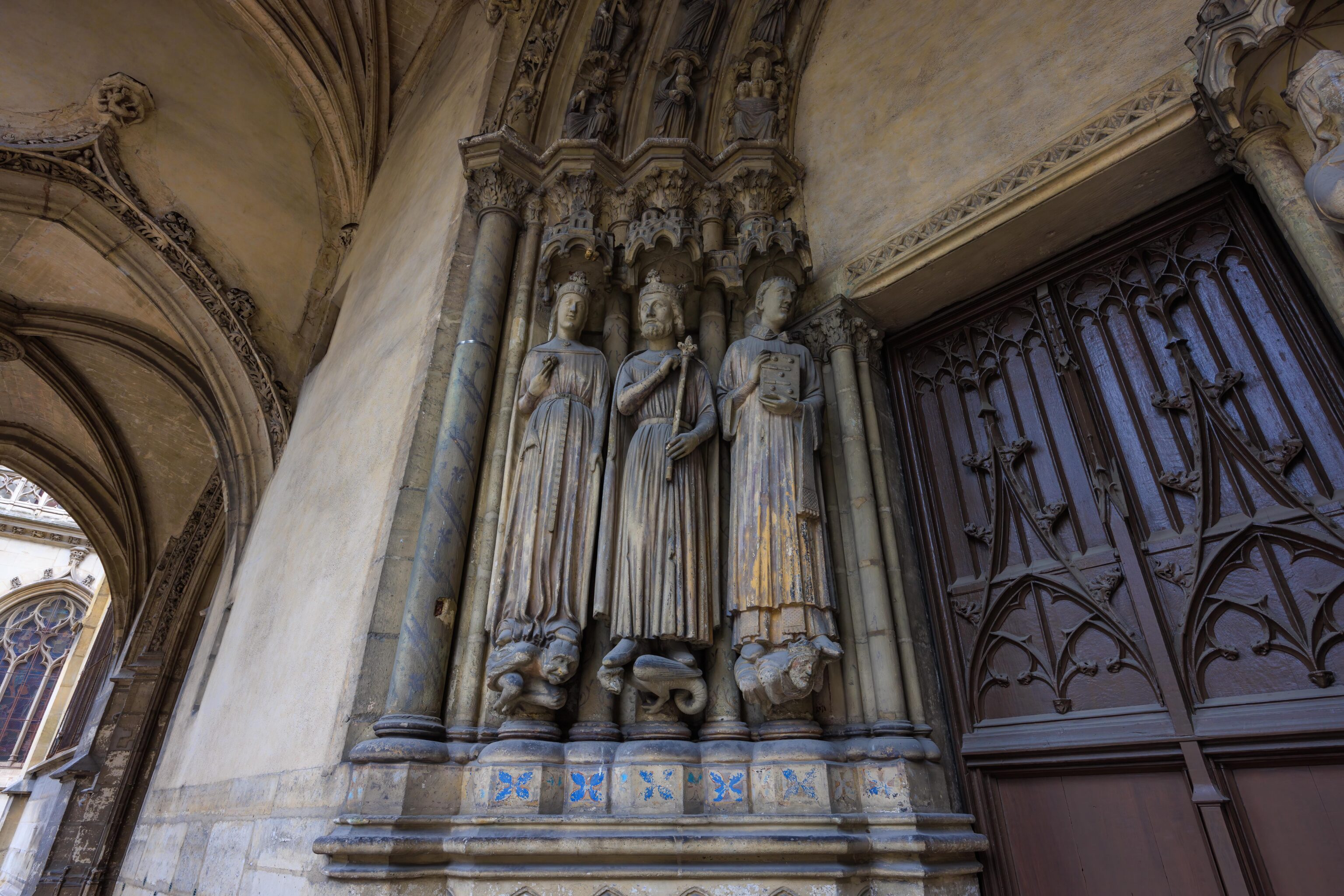
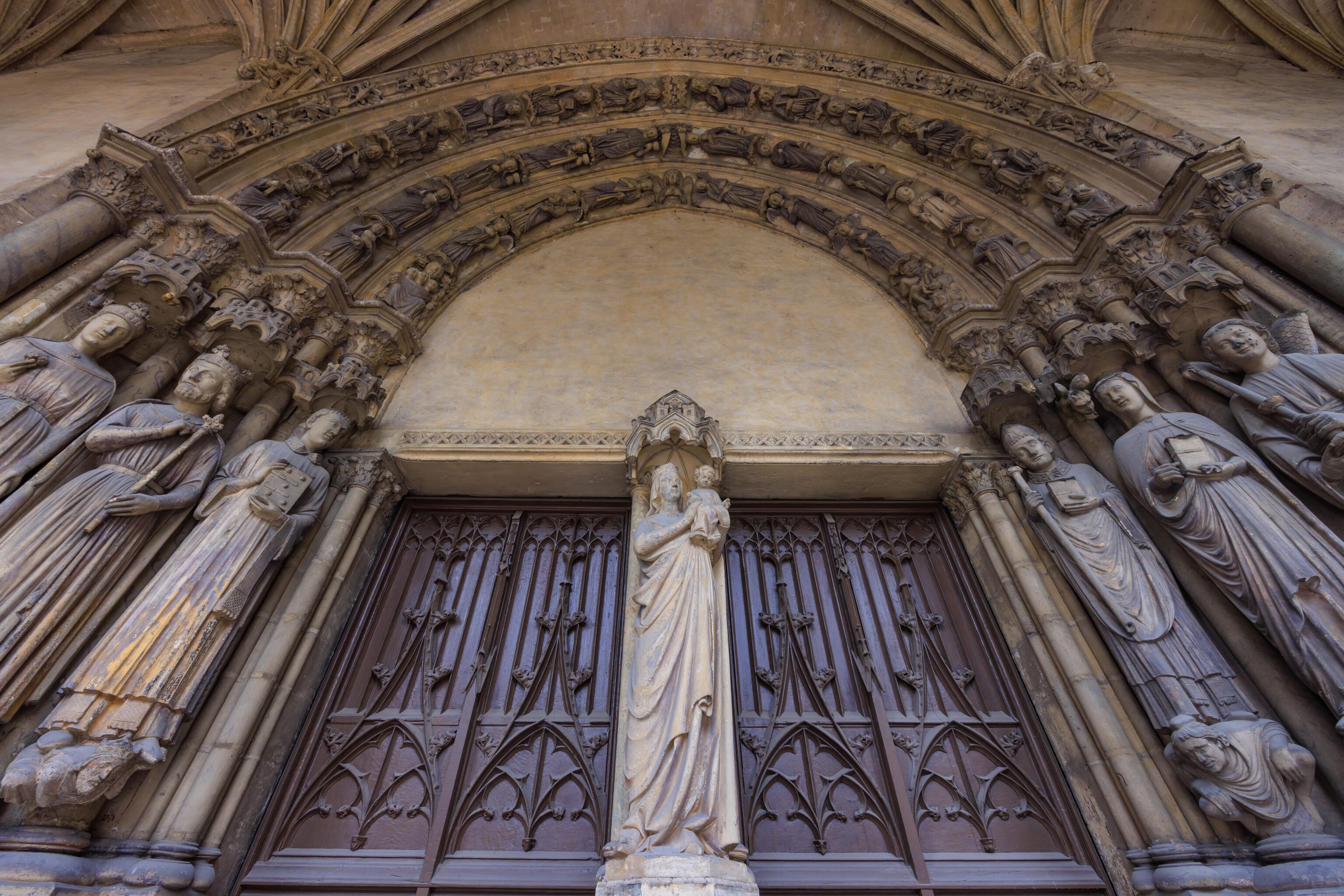
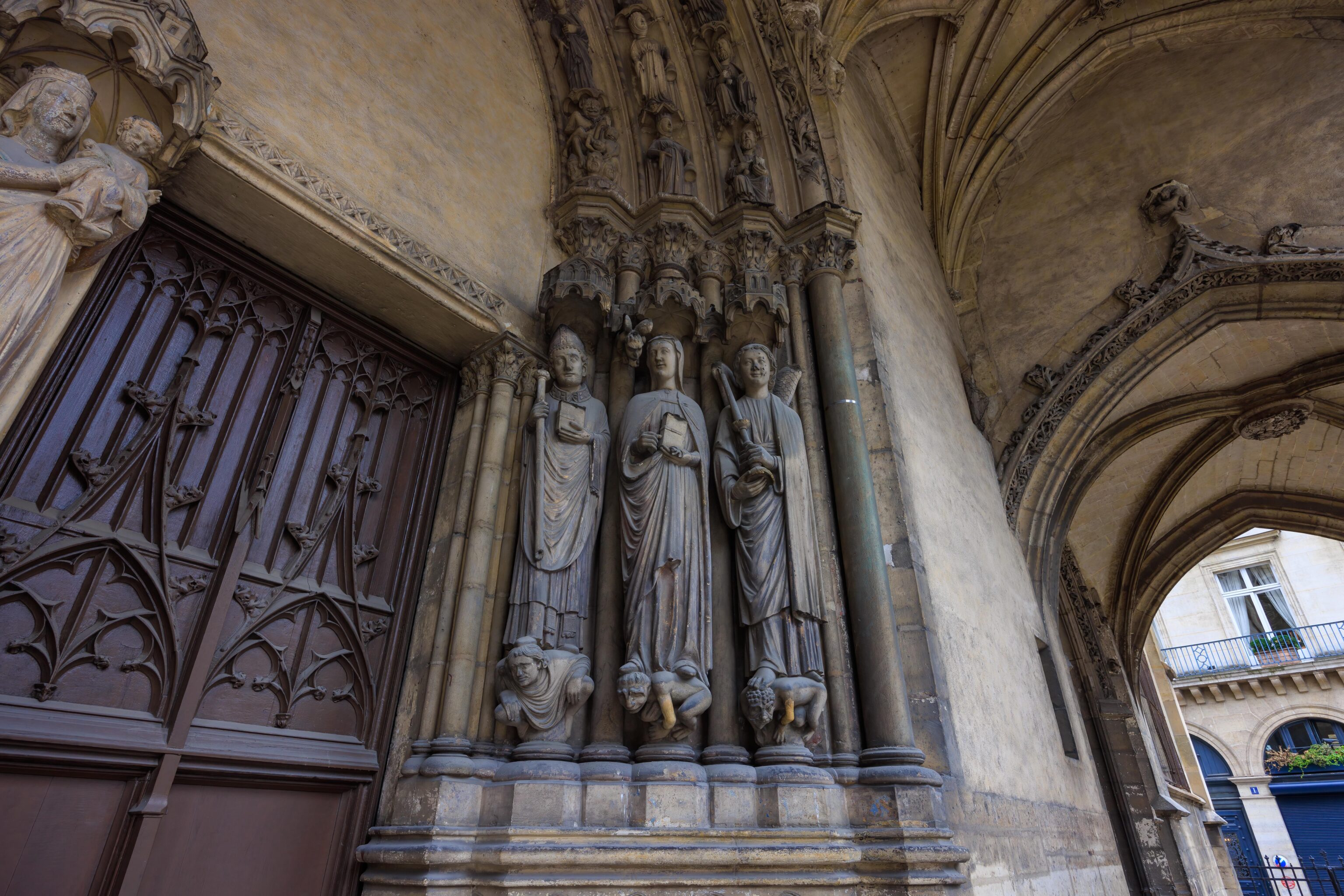
The finely decorated main doors to the church. We walked by it on our way out.
Saint-Germain-des-Prés
We decided to walk to our next destination, the Saint-Germain-des-Prés, as taking the Metro would have required an indirect route with a transfer.
We often come across Saint Germain. There are various Saint Germain chruches in Paris and other places named after him. He also comes up in the US. We often drive along Saint Germain Drive in Centreville, VA. There seems to be multiple Saint Germains. Saint-Germain-des-Prés is named in honor of Germain of Paris.
Saint-Germain-l’Auxerrois is named after Germanus of Auxerre. He is described as the leader of the cult of Saint Germanus of Auxerre. It seems in this context the word cult is simply used to describe a group with relatively few followers without the negative implications that come with the word in common usage, at least in American English.
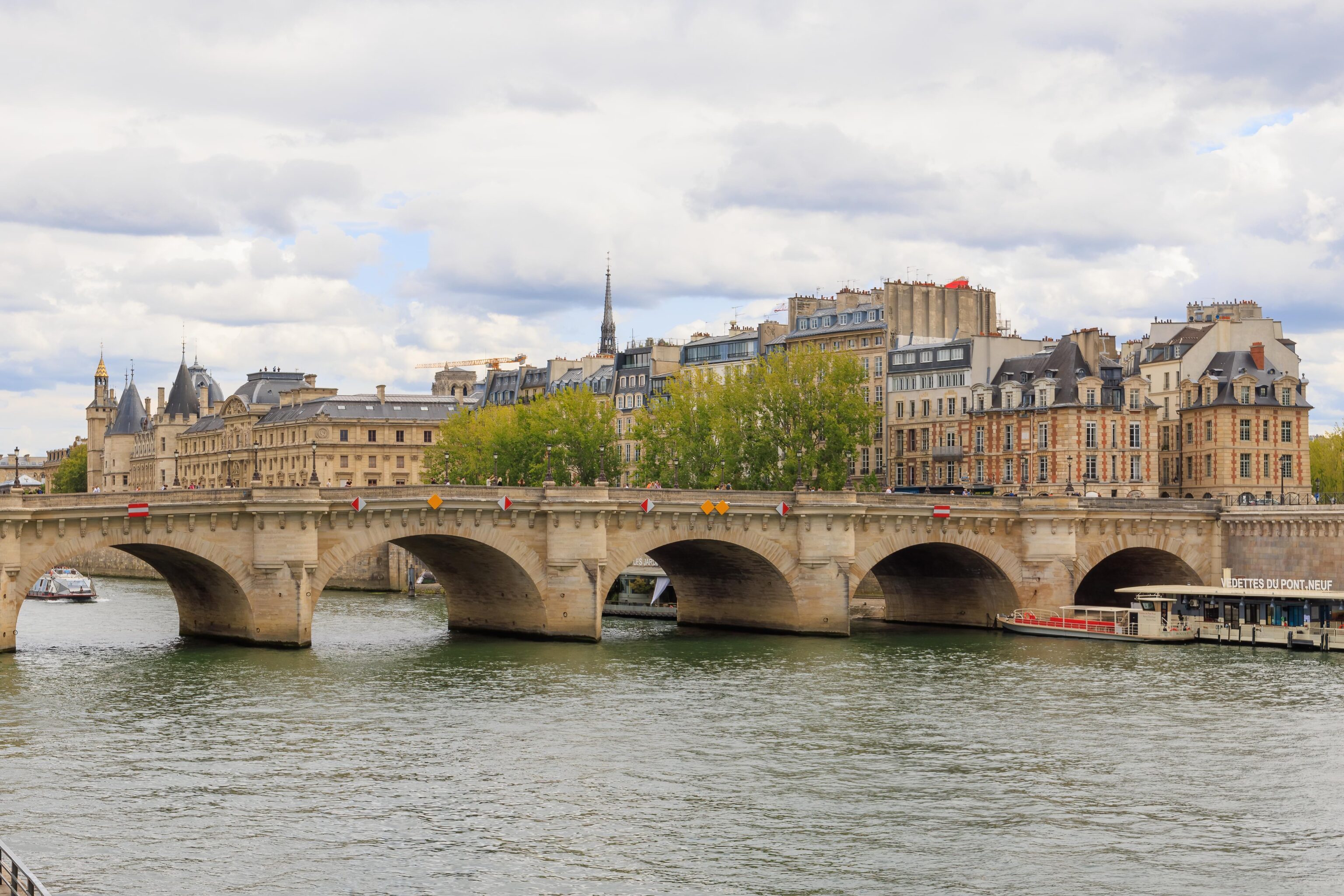
We walked one block to reach the Seine. From here, we could see the Pont Neuf, a bridge that leads to Cité. We could see the spire of the Sainte-Chapelle, the royal chapel that we visited on our second day in Paris.
However, that is not where we were going. We headed the other direction to the Pont des Arts.
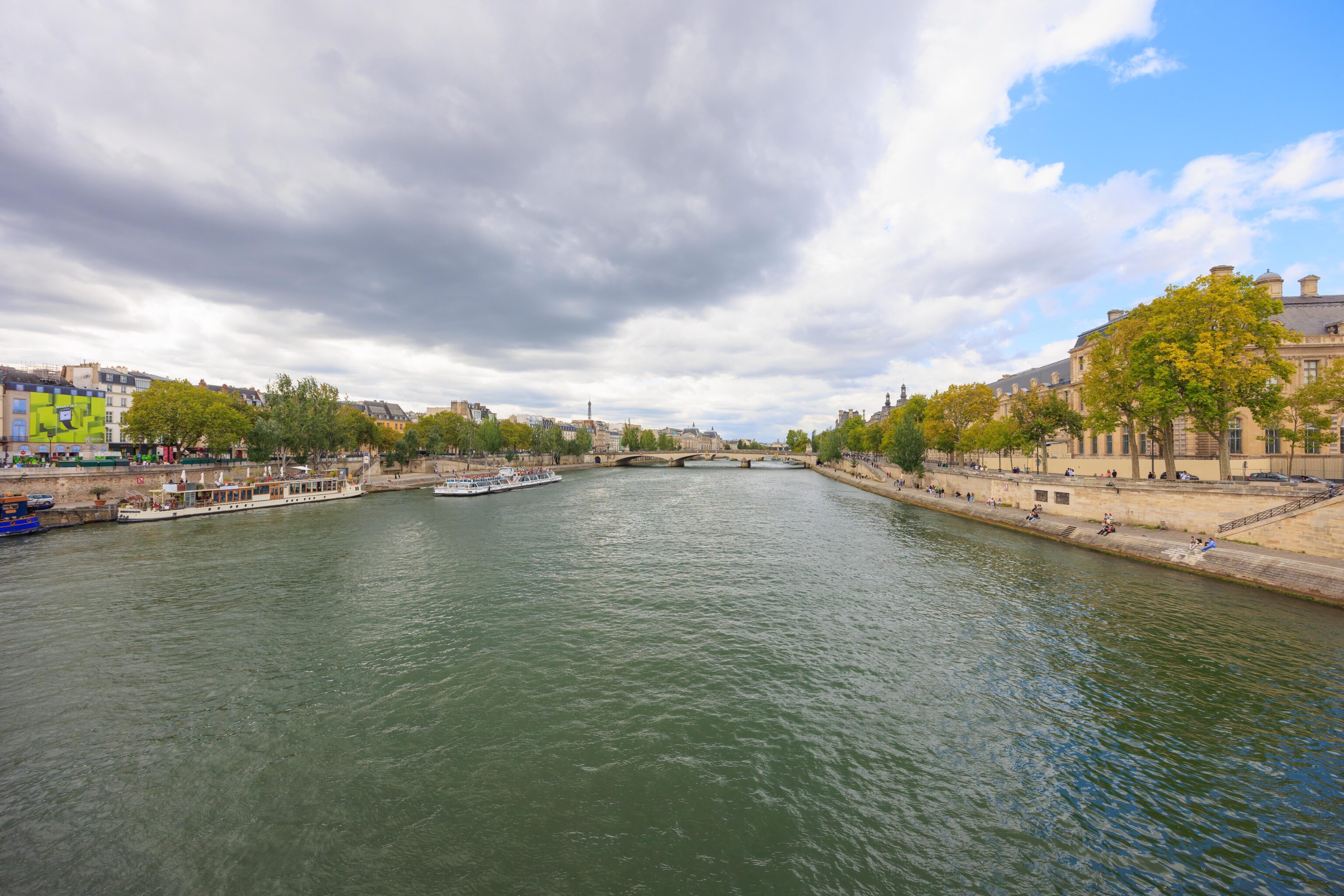
A wide angle view from the Pont des Arts to the west. The Eiffel Tower was visible in the distance.
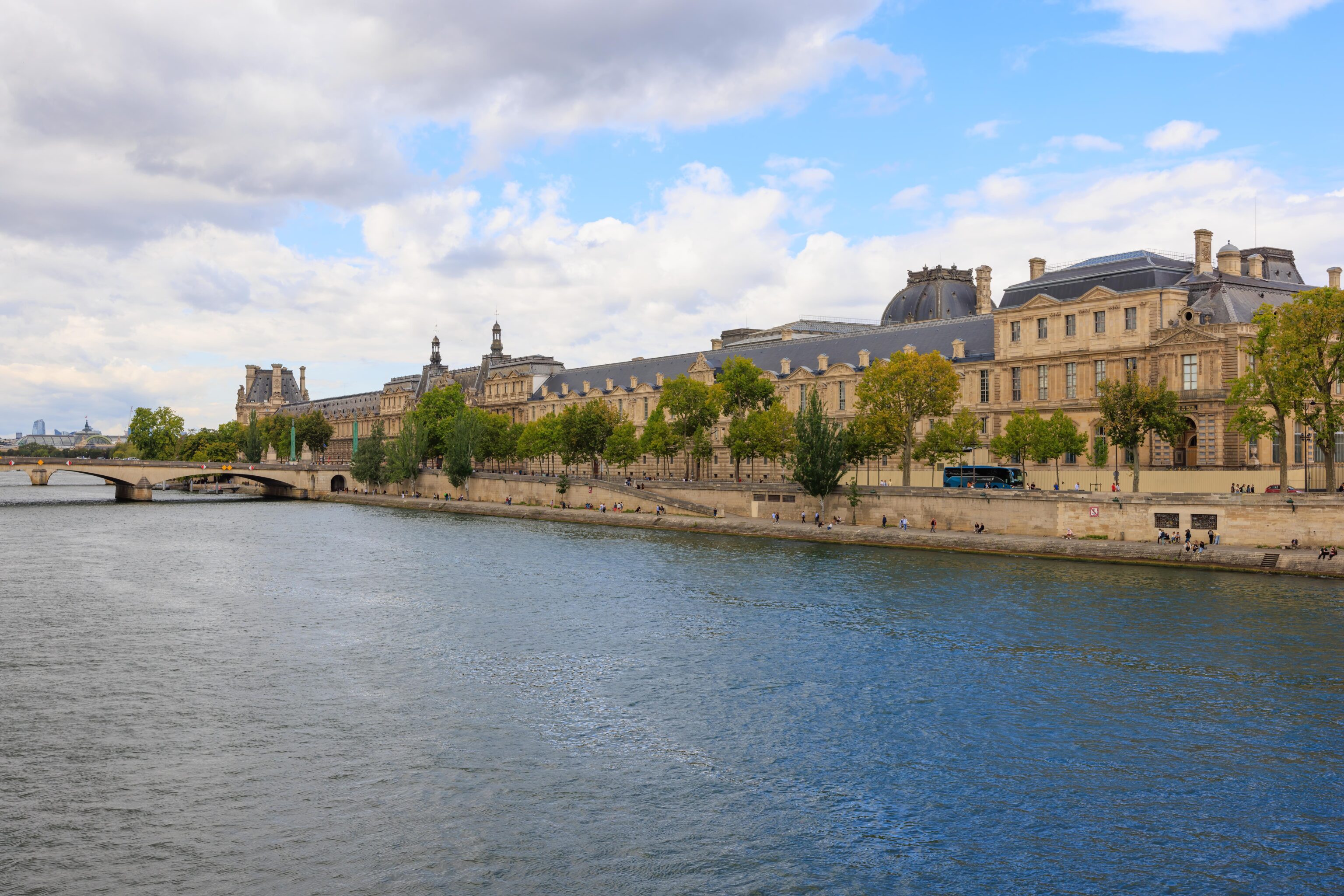
The Lovue occupies a huge portion of the north bank of the Seine. The entire visible structure is just the southern half of the museum.
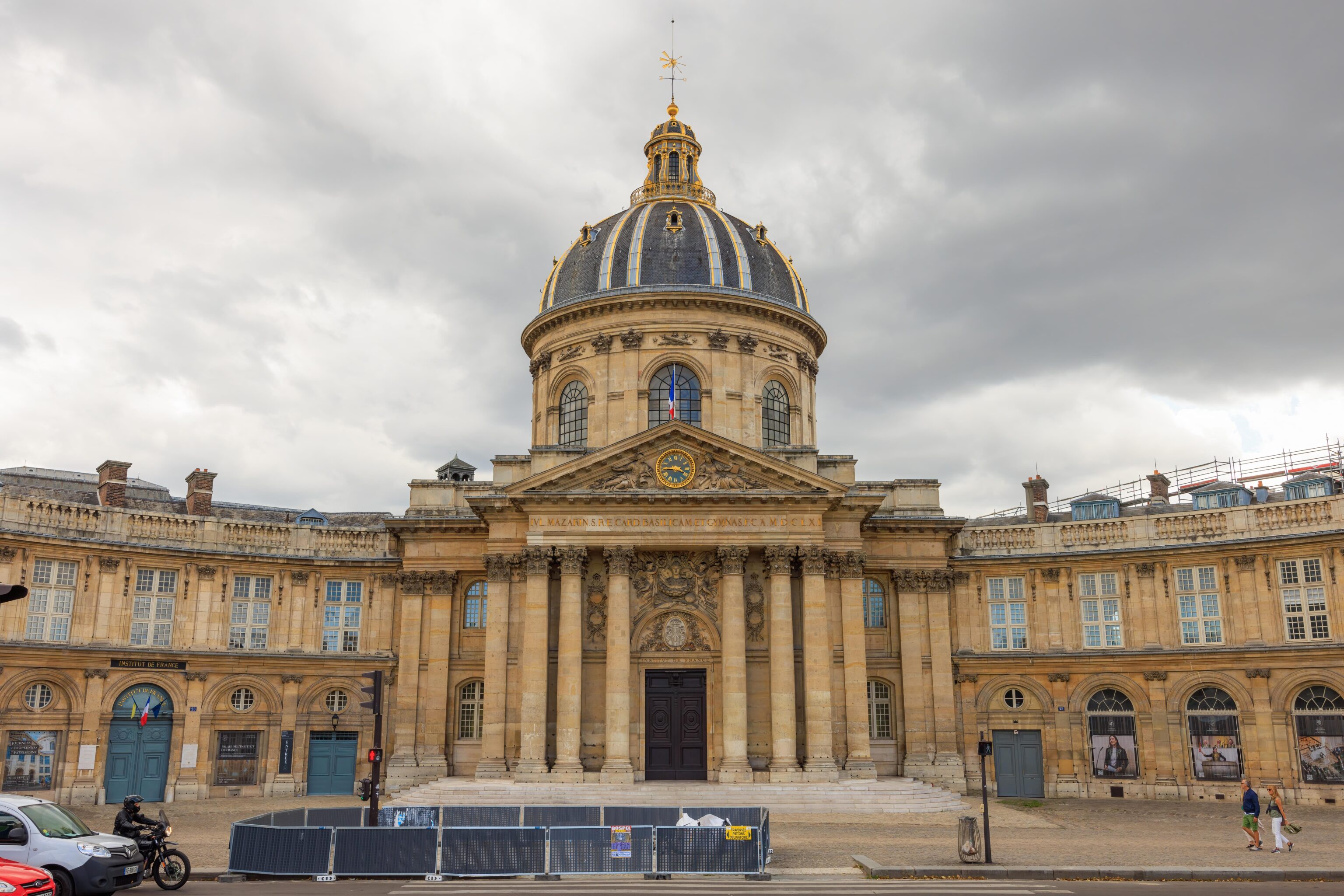
This building was formerly the College of the Four Nations, part of the University of Paris which was divided into multiple schools in 1970. It was at the south end of the Pont des Arts. It currently houses the Institut de France. Not really of any interest as a tourist but it is an attractive building located right by the Seine. We noticed it two days ago while on a sightseeing cruise on the Seine.
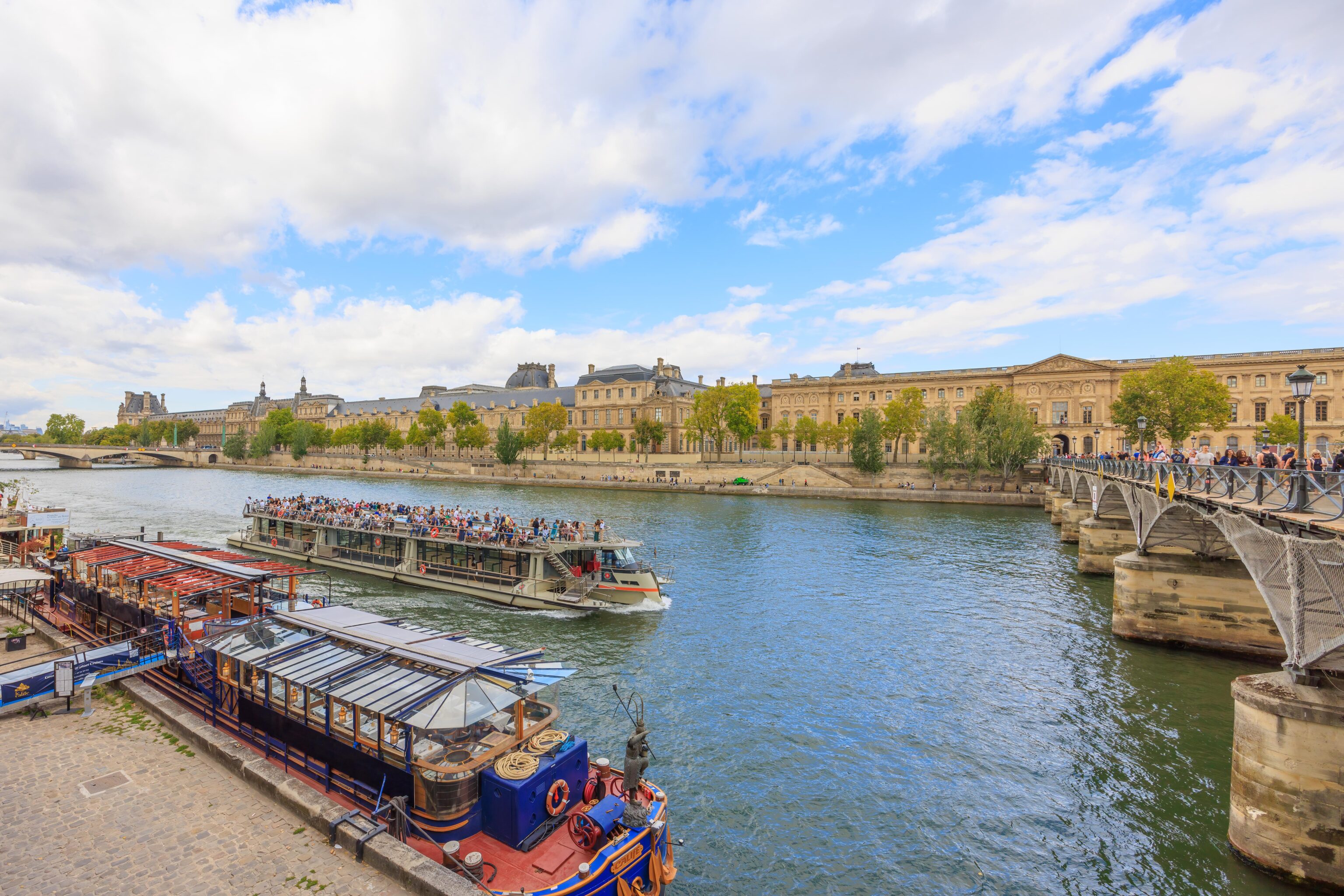
From the south bank of the Seine, just to the west of the bridge we crossed, looking to the north. Once again, the Louvre occupies the entire view!
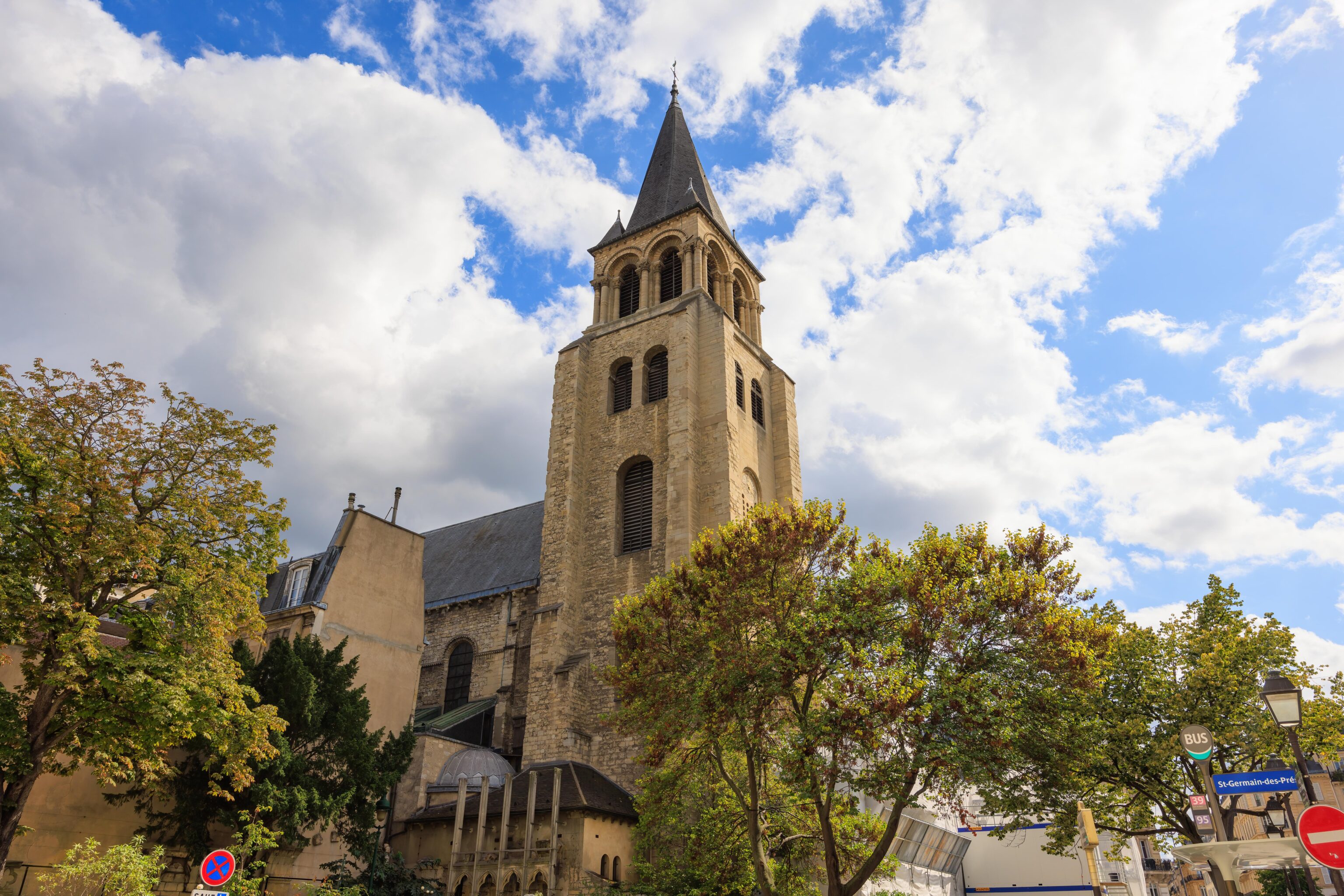
We walked four irregularly sized blocks to the south to reach the Saint-Germain-des-Prés. It is the oldest church in Paris.
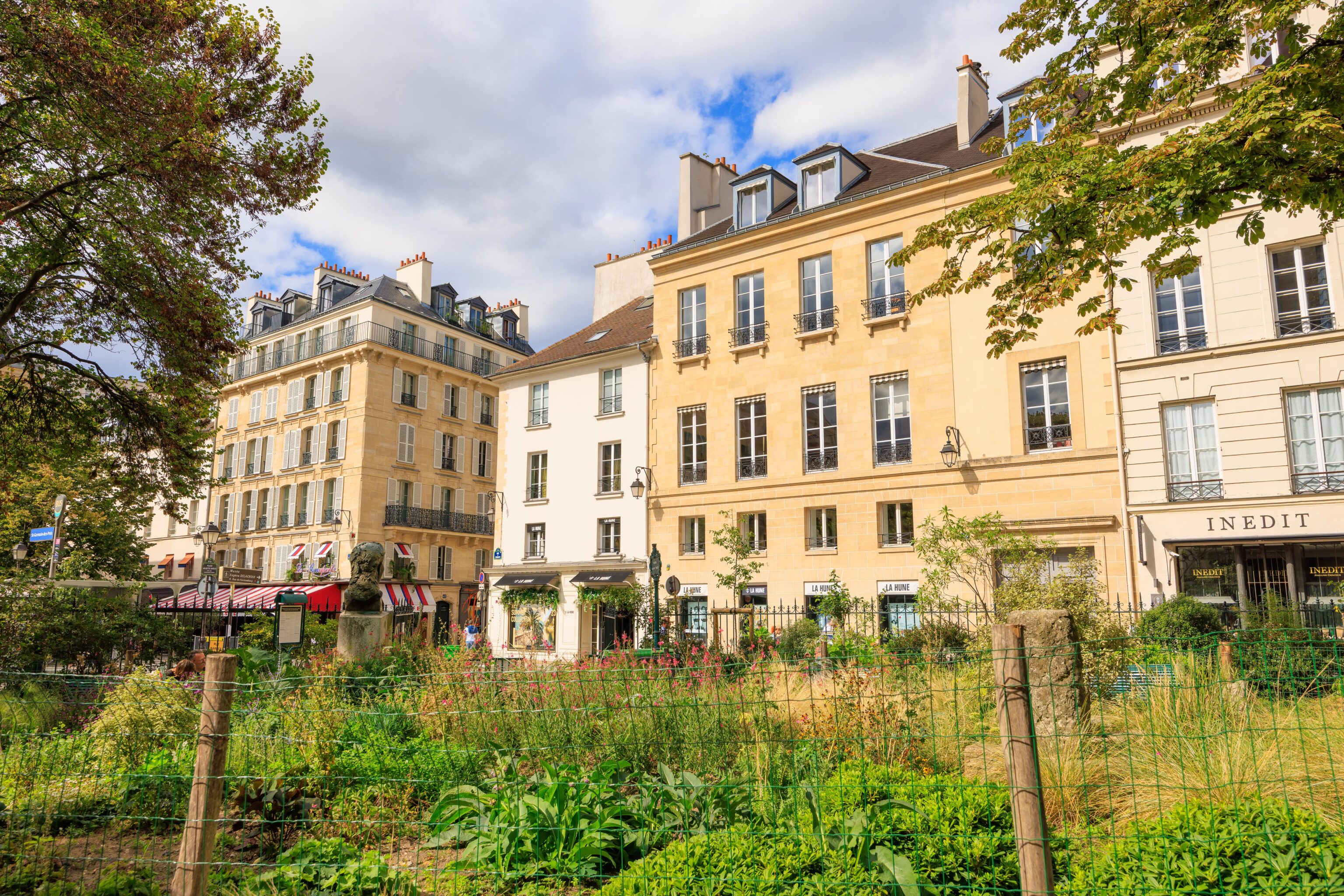
We took a brief break in a small garden at the northwest corner of the church.
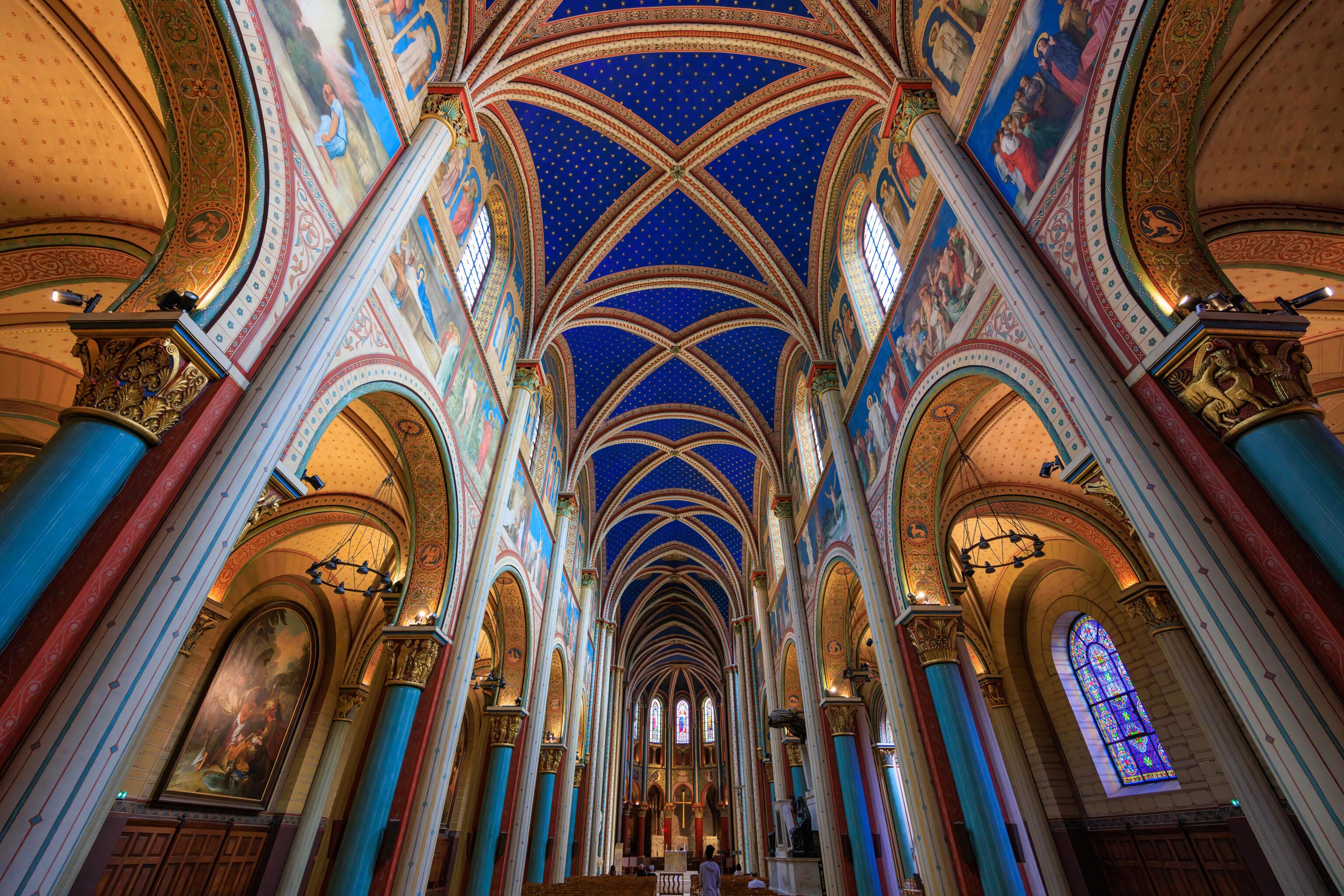
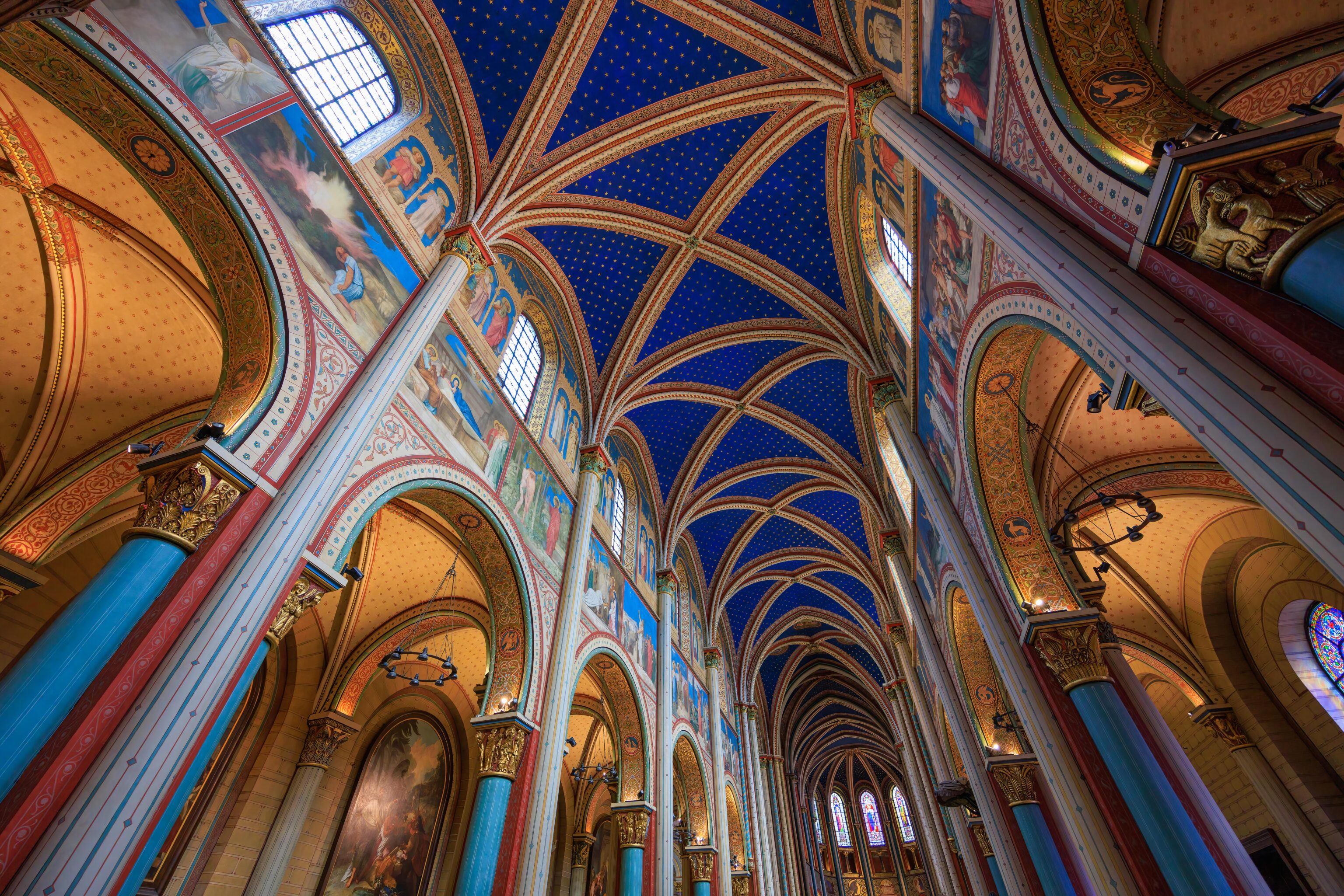
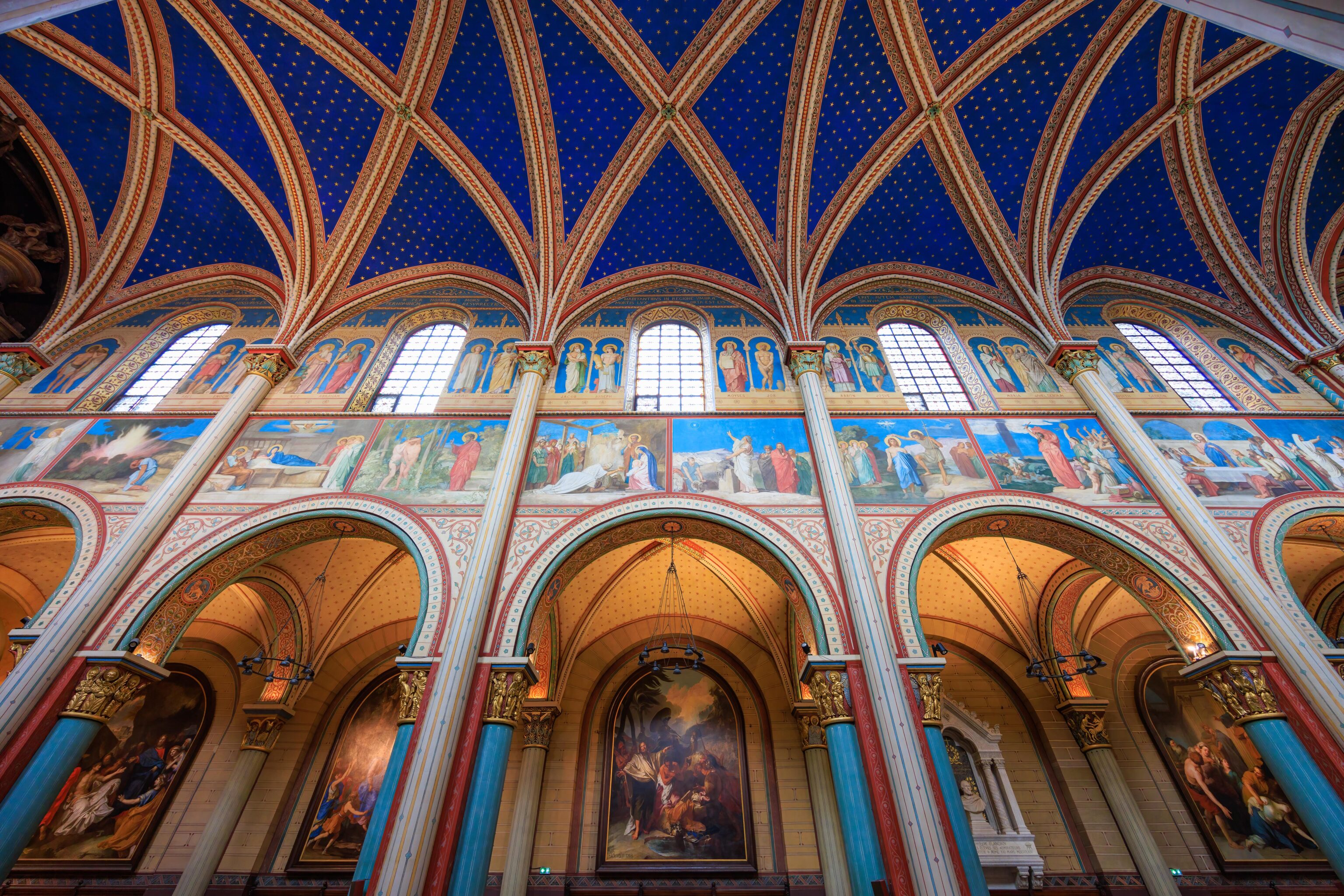
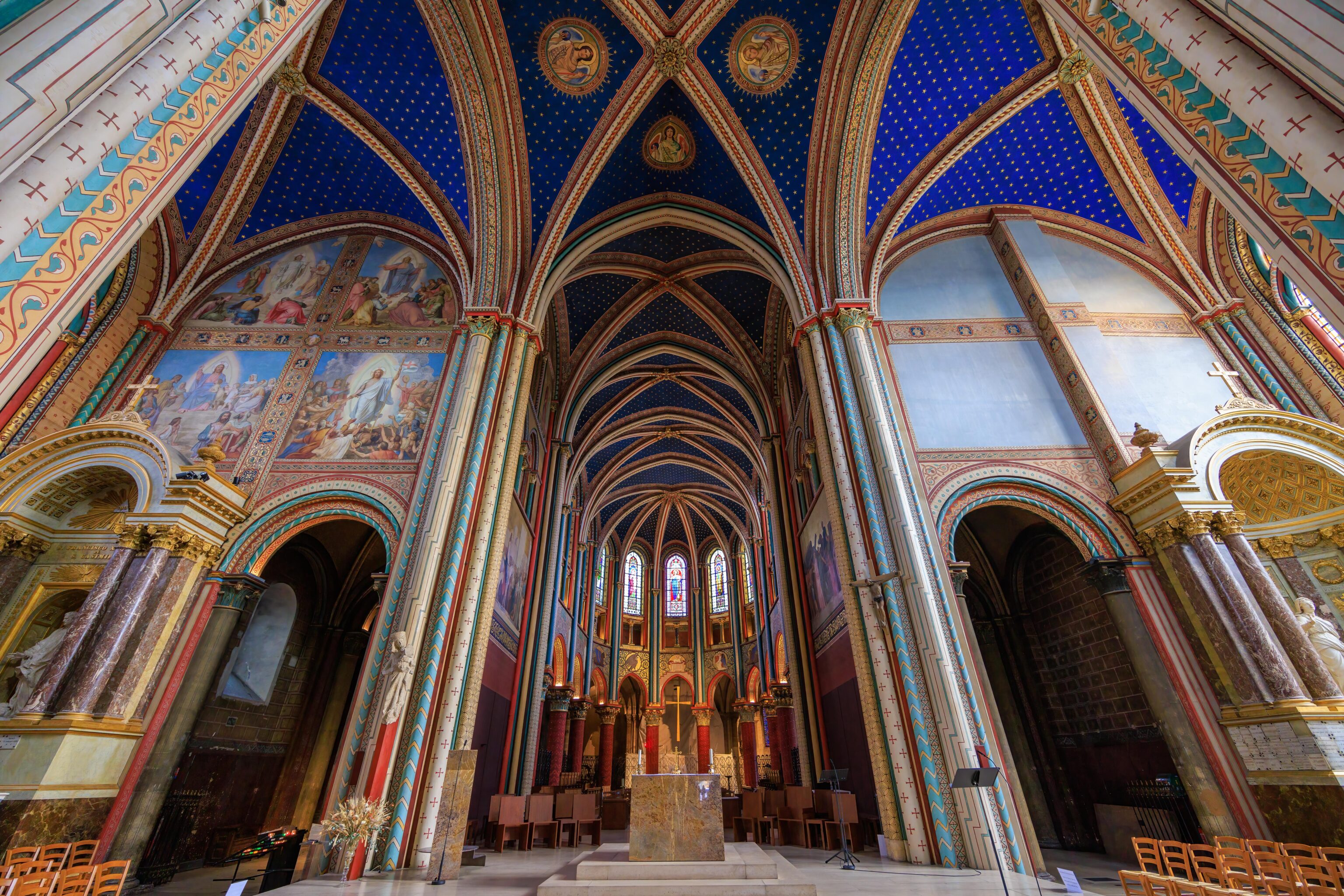
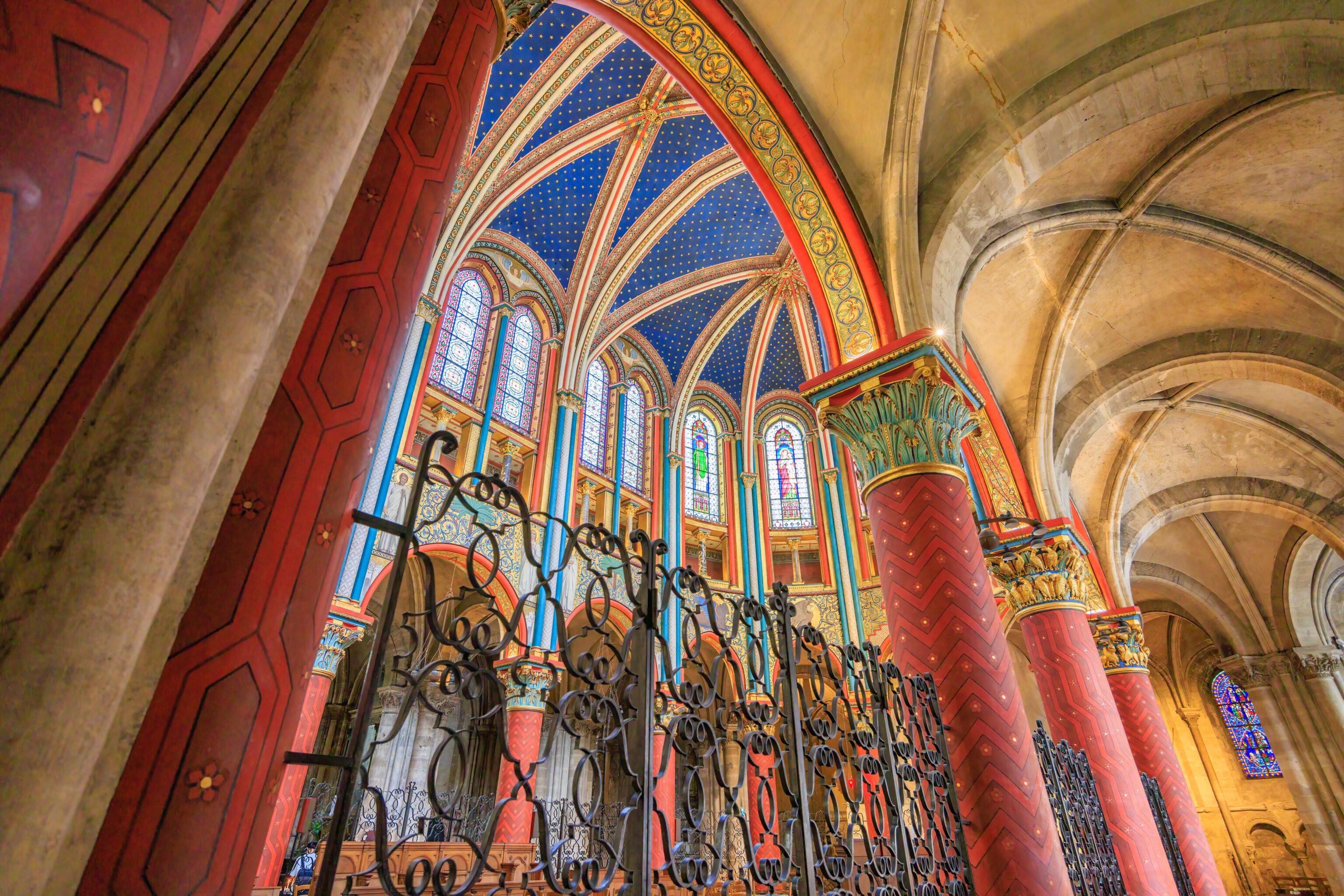
This church was very colorful inside! It was very different from the other church interiors that we’ve seen so far here in Paris.
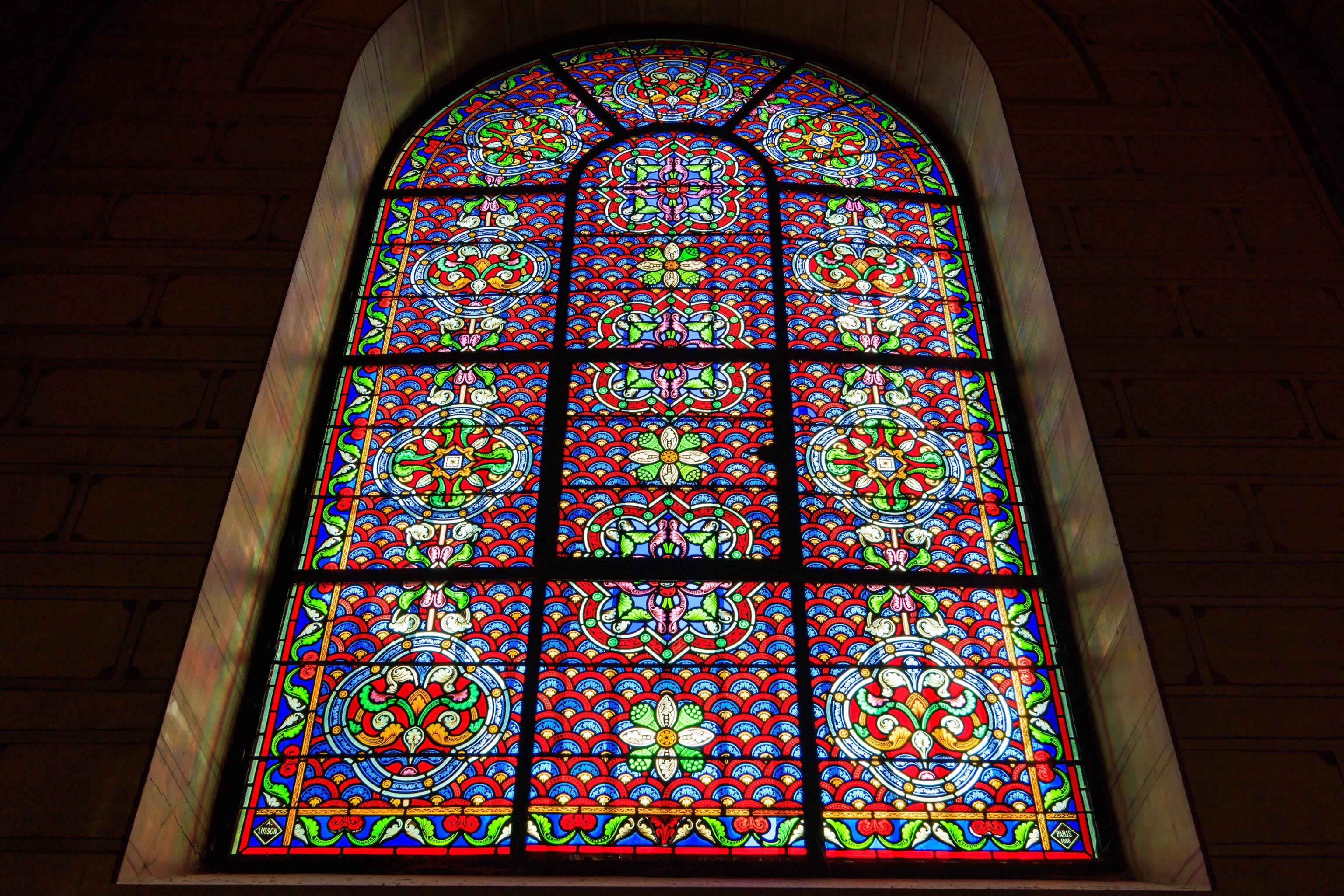
One of the stained glass windows within the church.
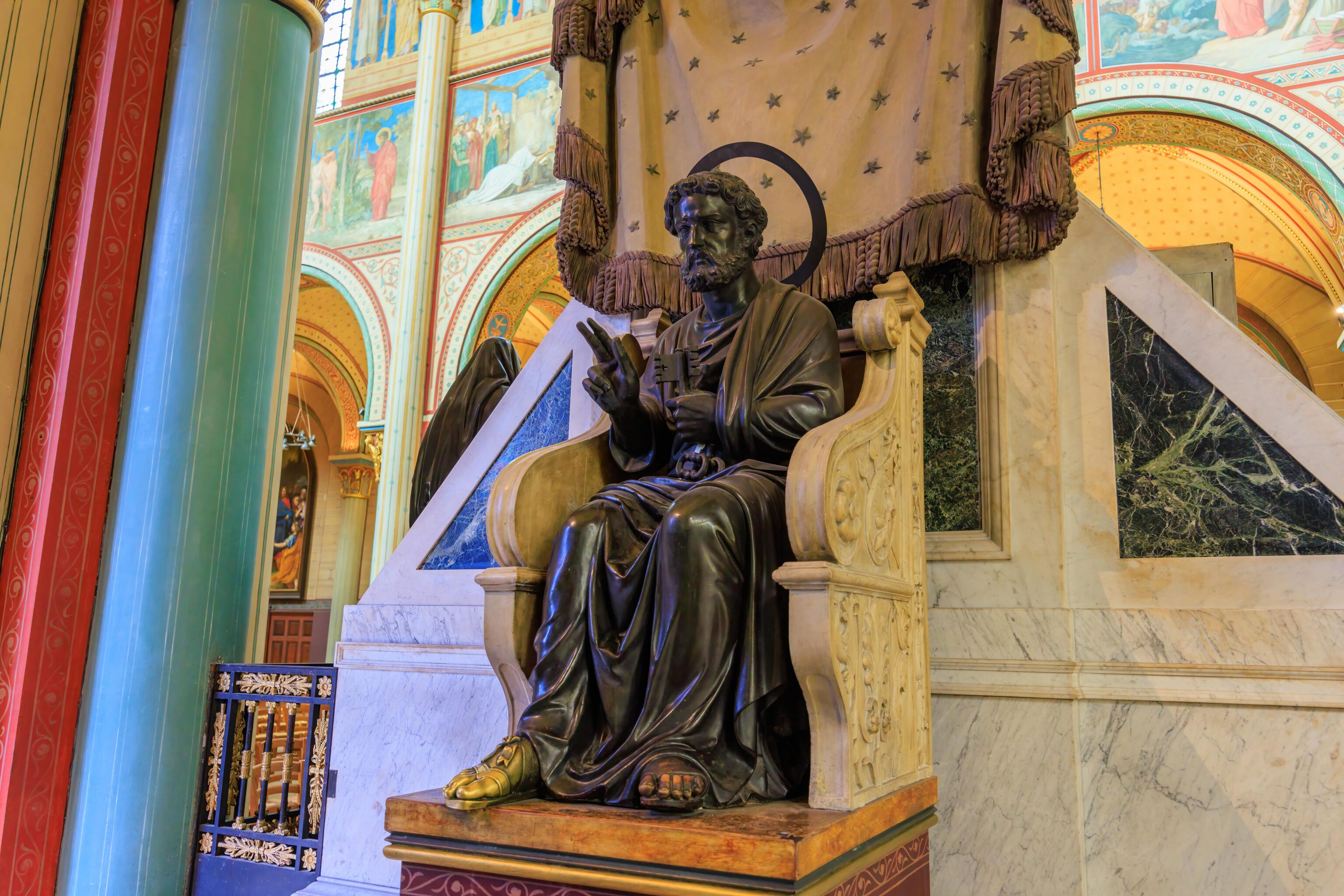
A statue of Jesus.
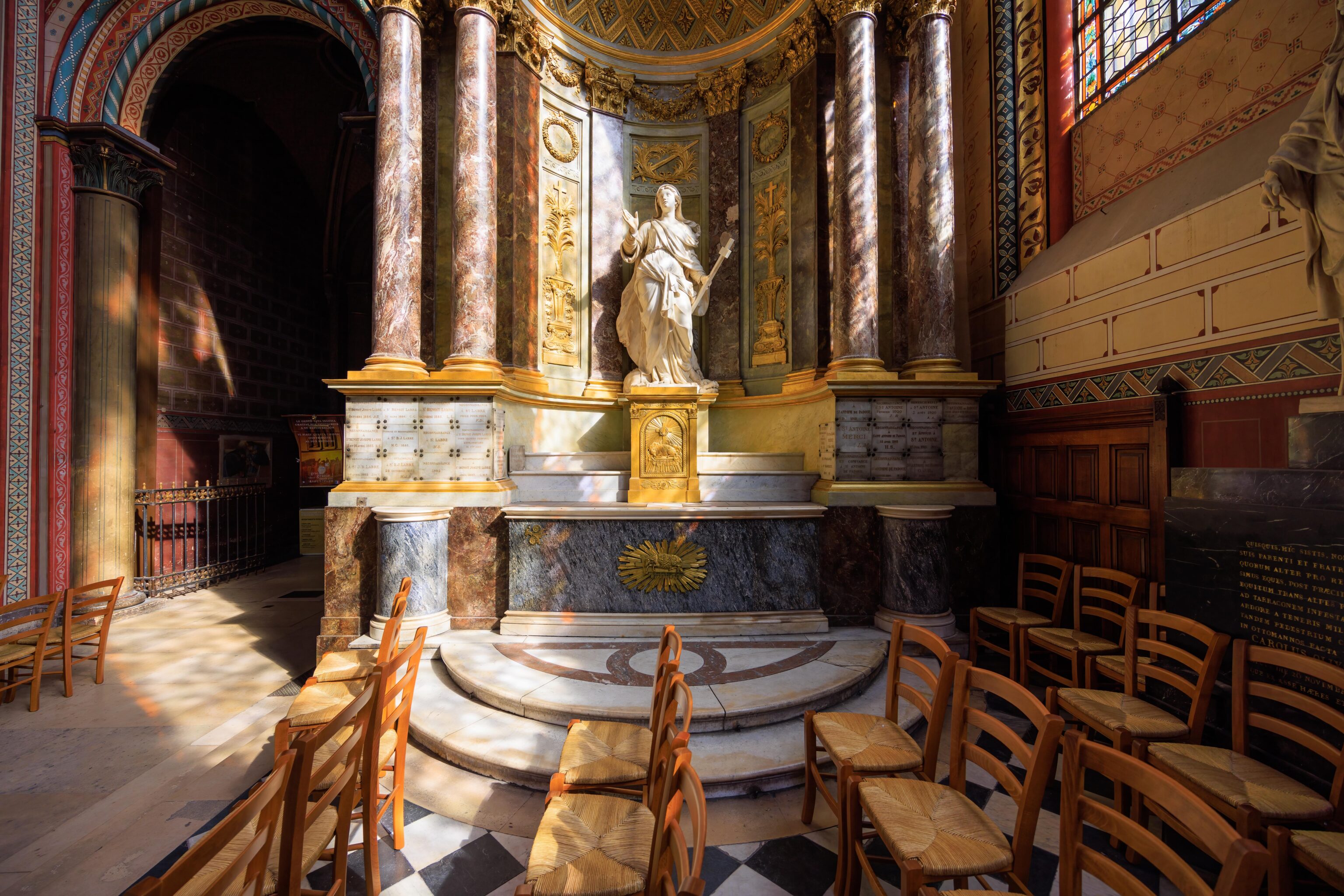
An altar at the side of the church. It has gratitude plaques like we saw in Saint-Germain-l’Auxerrois.
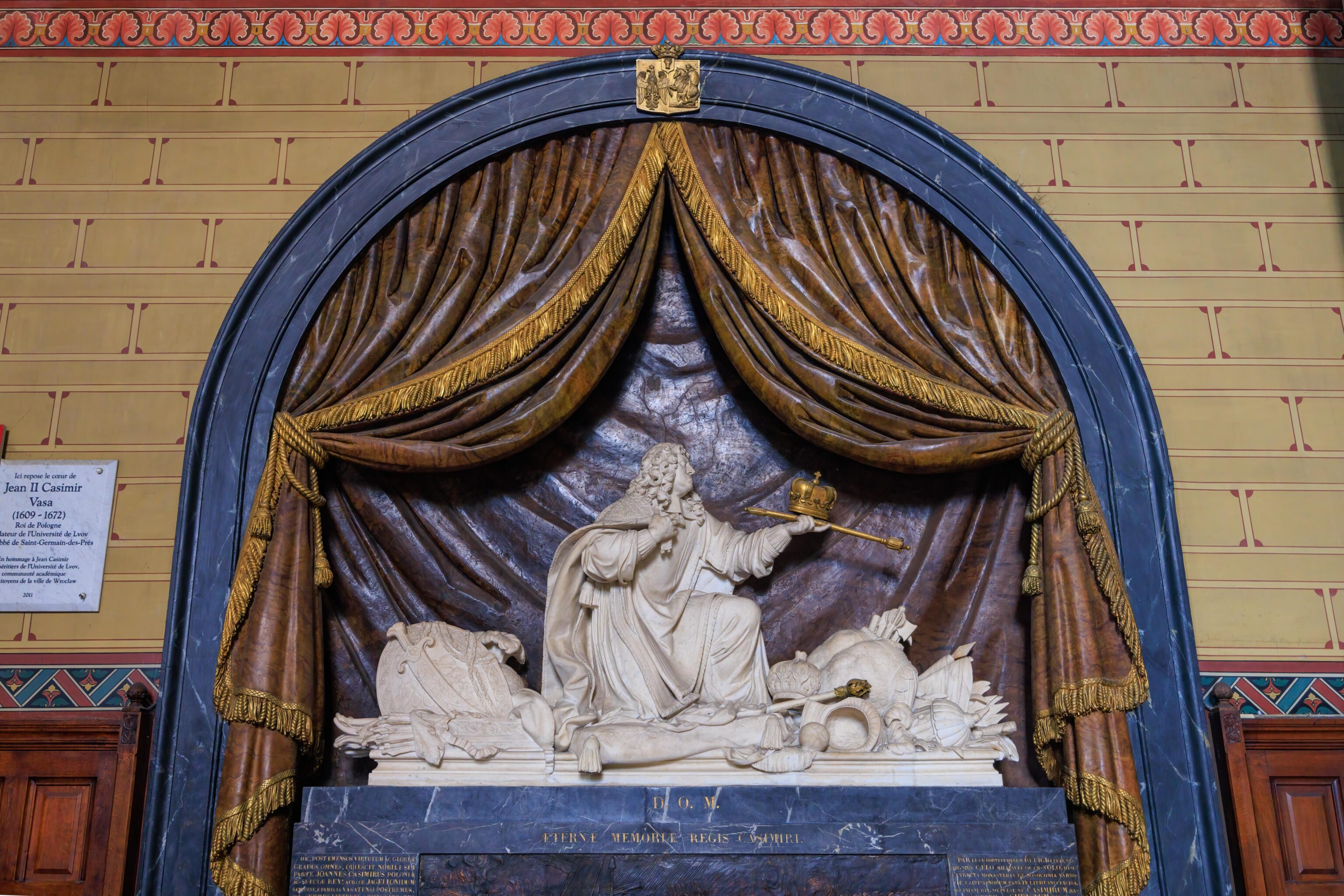
John II Casimir Vasa was the King of Poland. He is not someone we’ve heard of. Why is there a memorial to him here? Wikipedia explains10:
On 16 September 1668, grief-stricken after the death of his wife in the previous year, John II Casimir abdicated the throne of the Polish-Lithuanian Commonwealth and returned to France, where he rejoined the Jesuits and became abbot of Abbey of Saint-Germain-des-Prés in Paris. Following his abdication Michał Korybut Wiśniowiecki (Michael I) was elected the new king and was crowned on 29 September 1669. In the autumn of 1672, John Casimir had intended to return to Poland, but fell ill before departing and was prevented from doing so. The seizure of Kamieniec Podolski by the Ottoman Empire distressed him, exacerbating his condition. He requested the assistance of Pope Clement X to defend Poland against the Ottomans. He died on 16 December 1672 from apoplexy, and his burial took place inside the Wawel Cathedral in Kraków. His heart was interred in the Abbey of Saint-Germain-des-Prés.
Definitely unexpected!
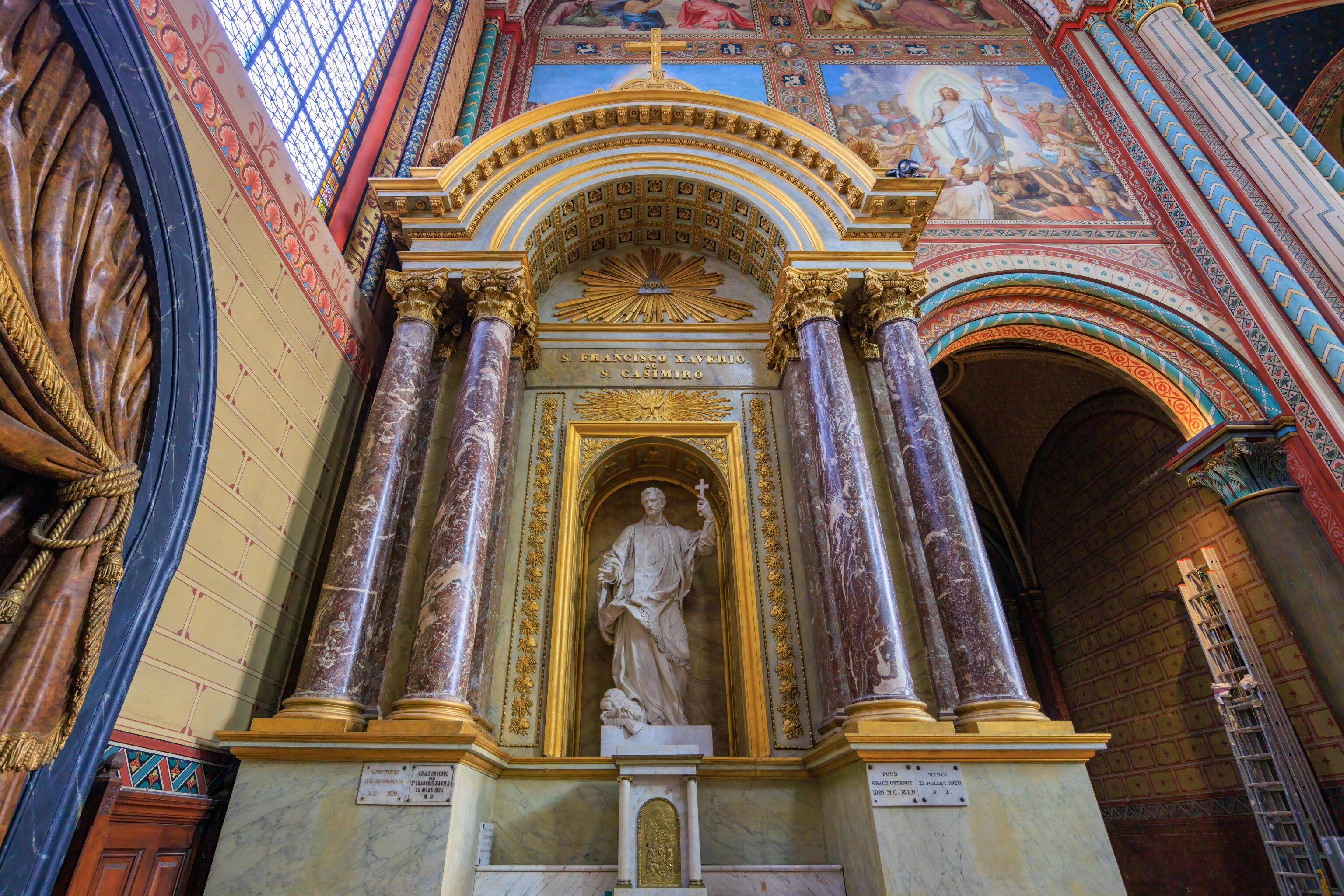
This sculpture of a man holding a cross has a head on the ground. The only explanation I could find was on a blog, Two Boomers Abroad11:
St. Francis Xavier was a 16th century Jesuit missionary who traveled extensively in Asia, primarily in India, but also in the far East, preaching the teachings of Jesus. Notice the saint's foot on a head to represent the end of paganism.
Doing a bit of research reveals someone who is probably quite polarizing depending on one’s views of how religion should or should not be aggressively spread. I can’t say that I would agree with the types of measures that would have been likely considered completely acceptable in Europe back in those times.
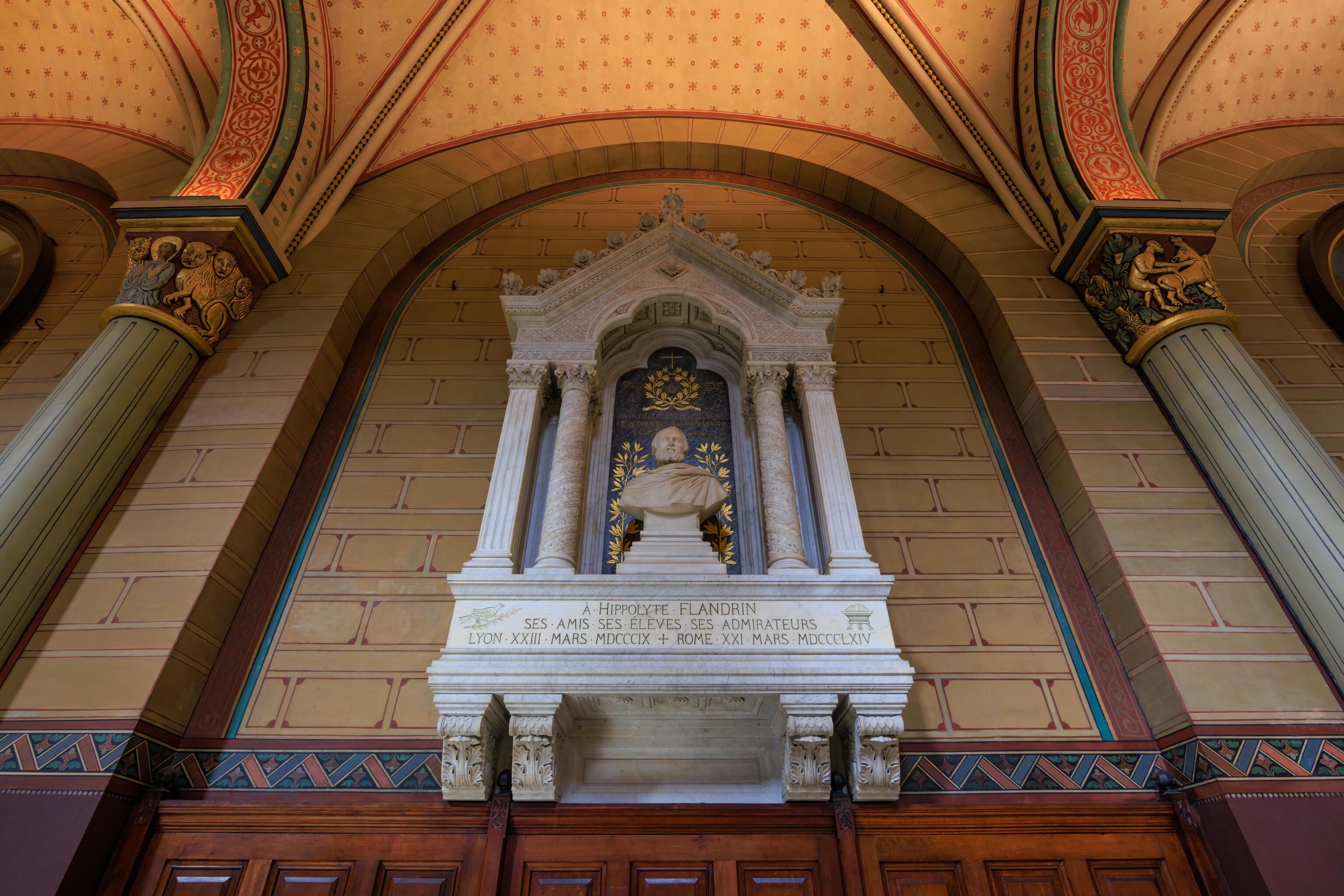
Jean-Hippolyte Flandrin was a french painter. One of his paintings is in the Louvre, though we don’t recall seeing it. He painted some of the art in this church. The Met writes that he actually “completed eighty-five paintings throughout the sanctuary, choir, nave, and transepts of the church between 1842 and his death in 1864.”12
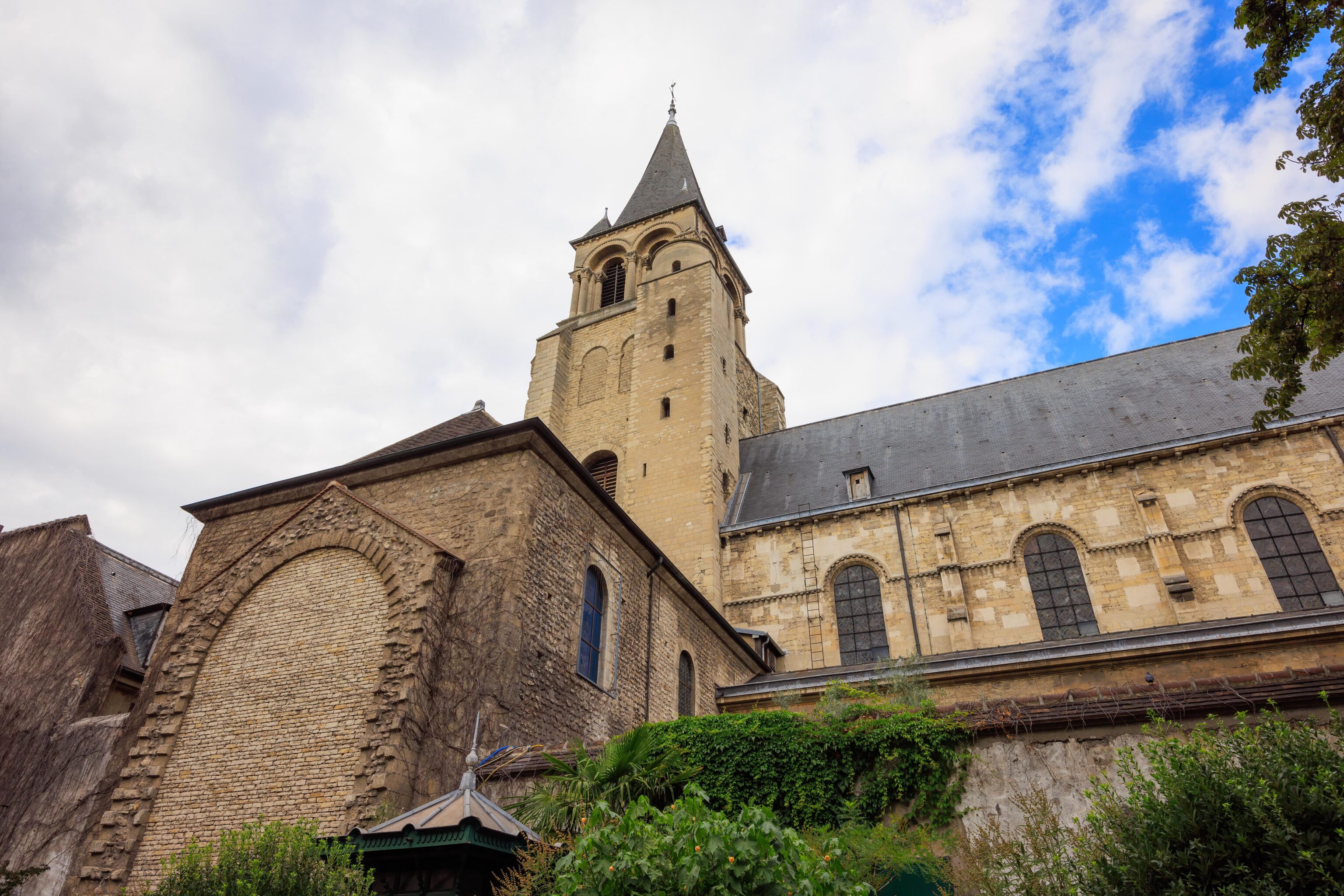
After a 30 minute or so long visit, we exited and headed for the Metro station on the south side of the church.
Saint-Eustache Church
We took the Metro line 4 to Les Halles. We planned on getting dinner in the area but first, we wanted to visit Saint-Eustache. We saw the huge church on our first day in Paris while getting dessert but it was already closed when we arrived.
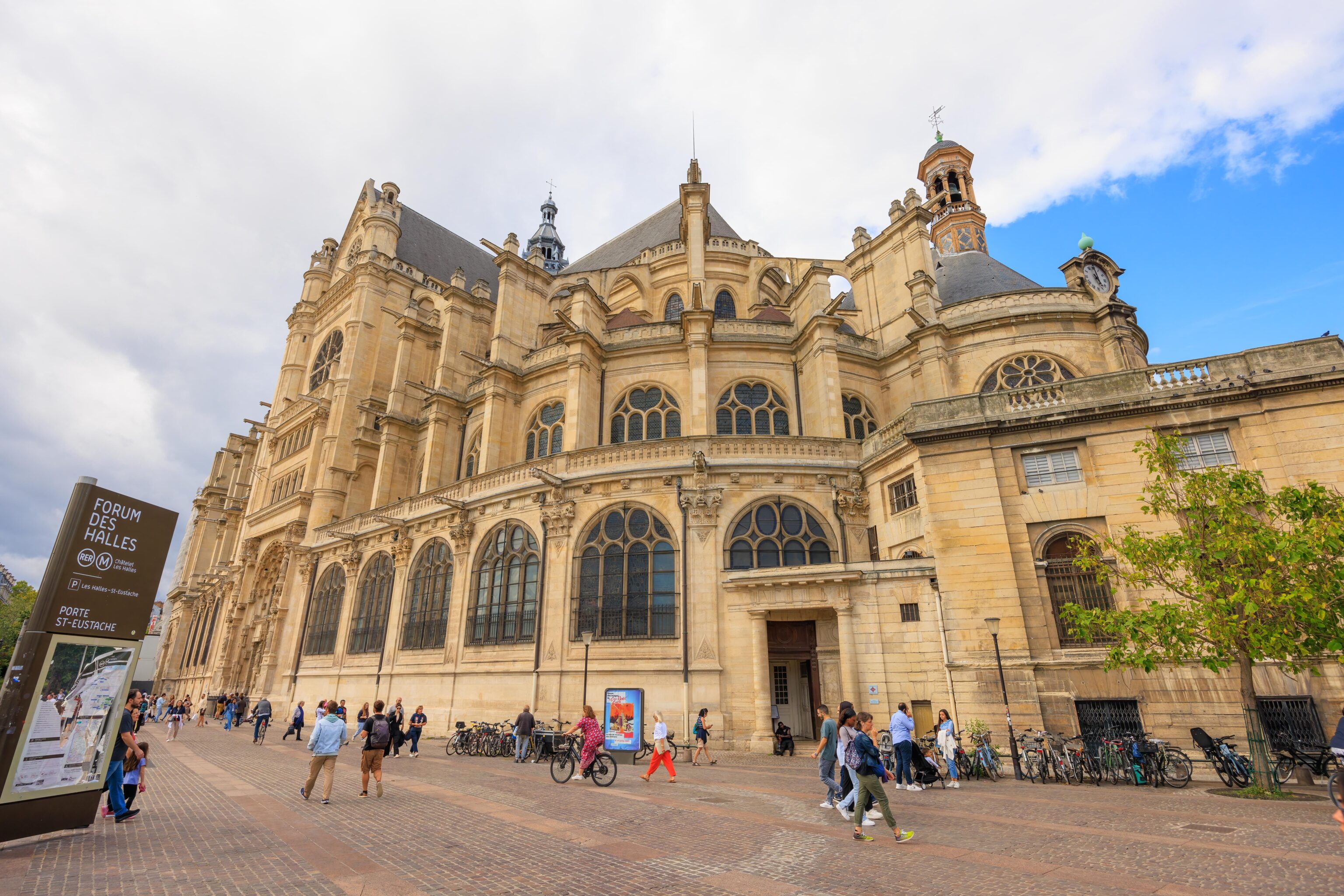
Saint-Eustache as viewed from the south side where we approached after exiting the Metro.
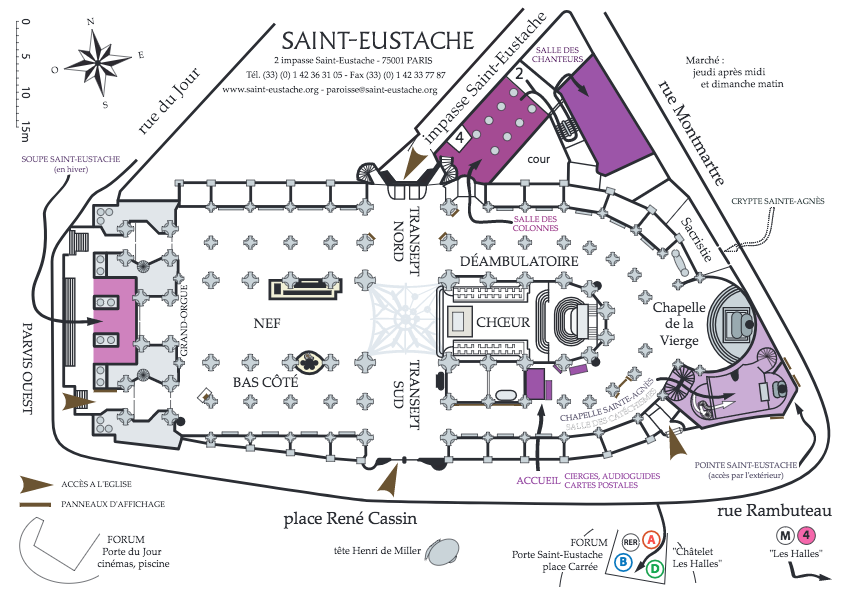
The church’s website offers a useful map of the building.
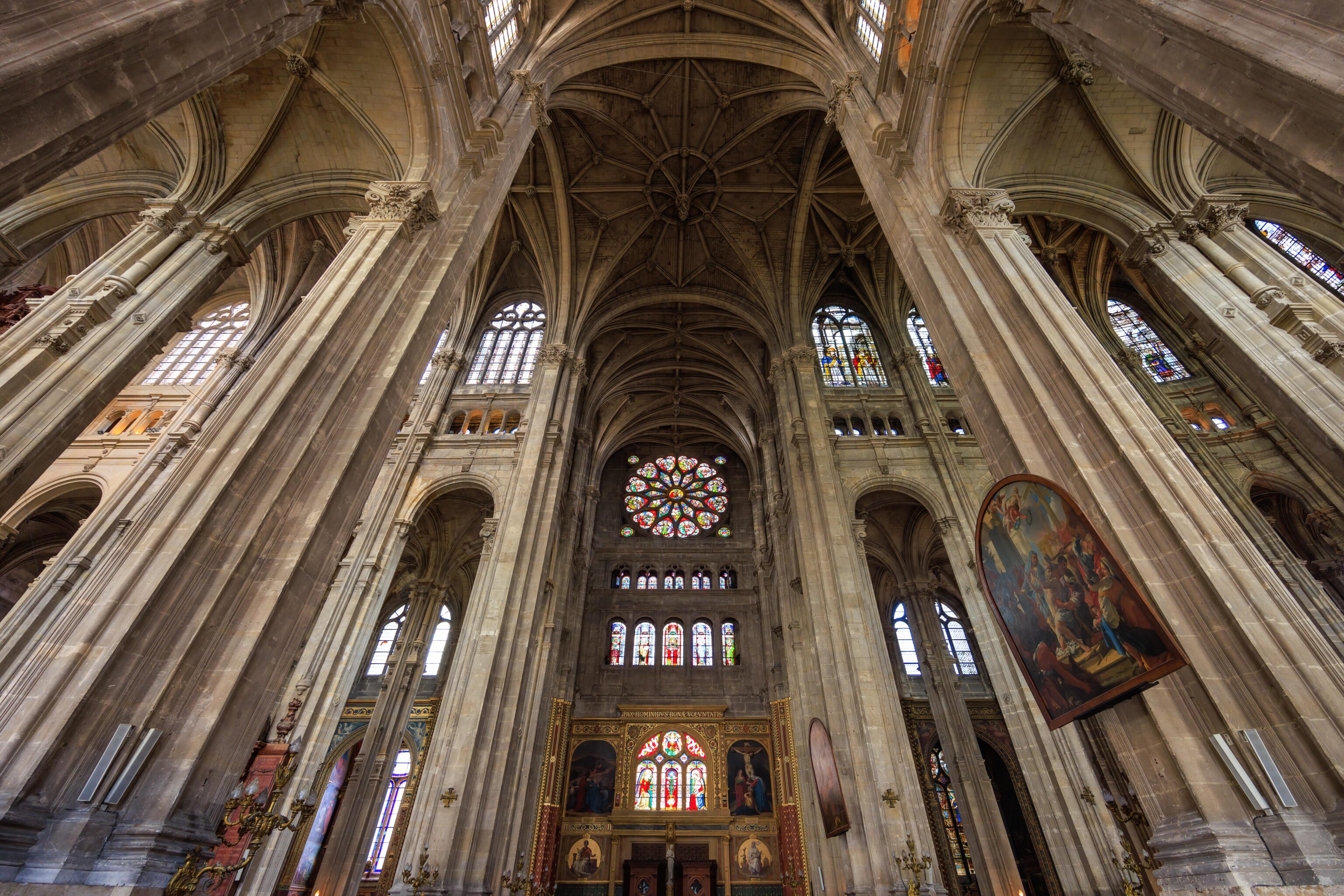
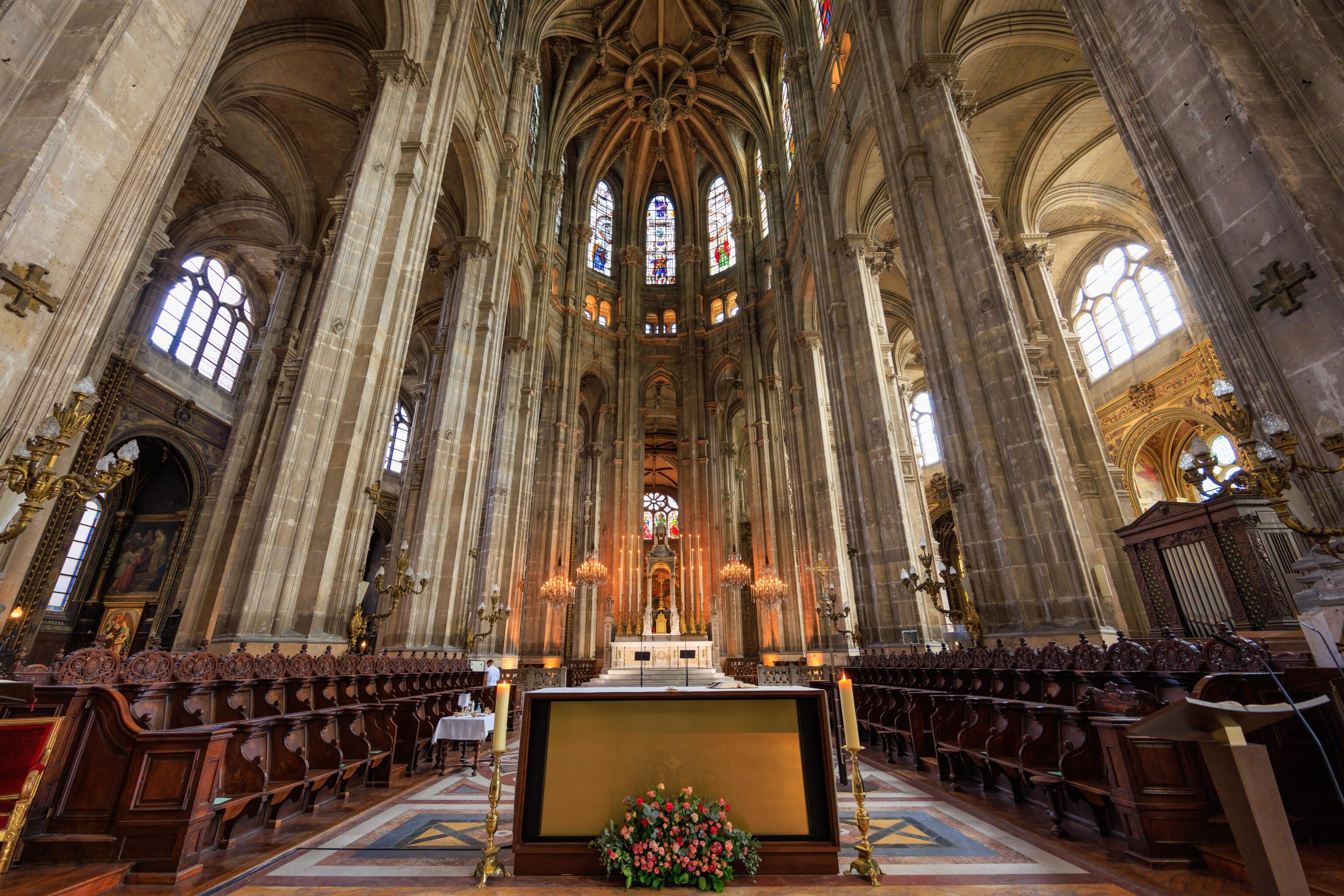
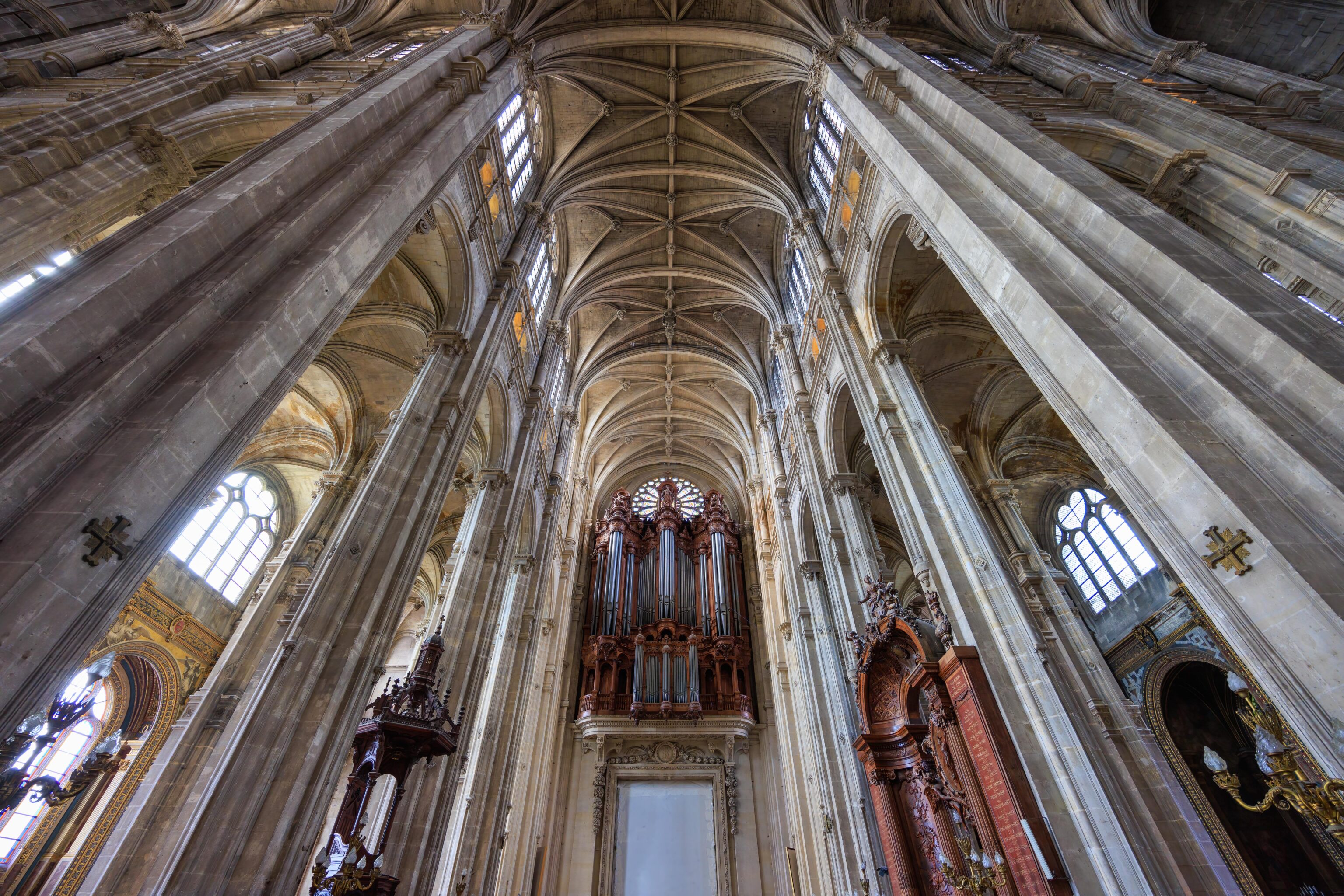
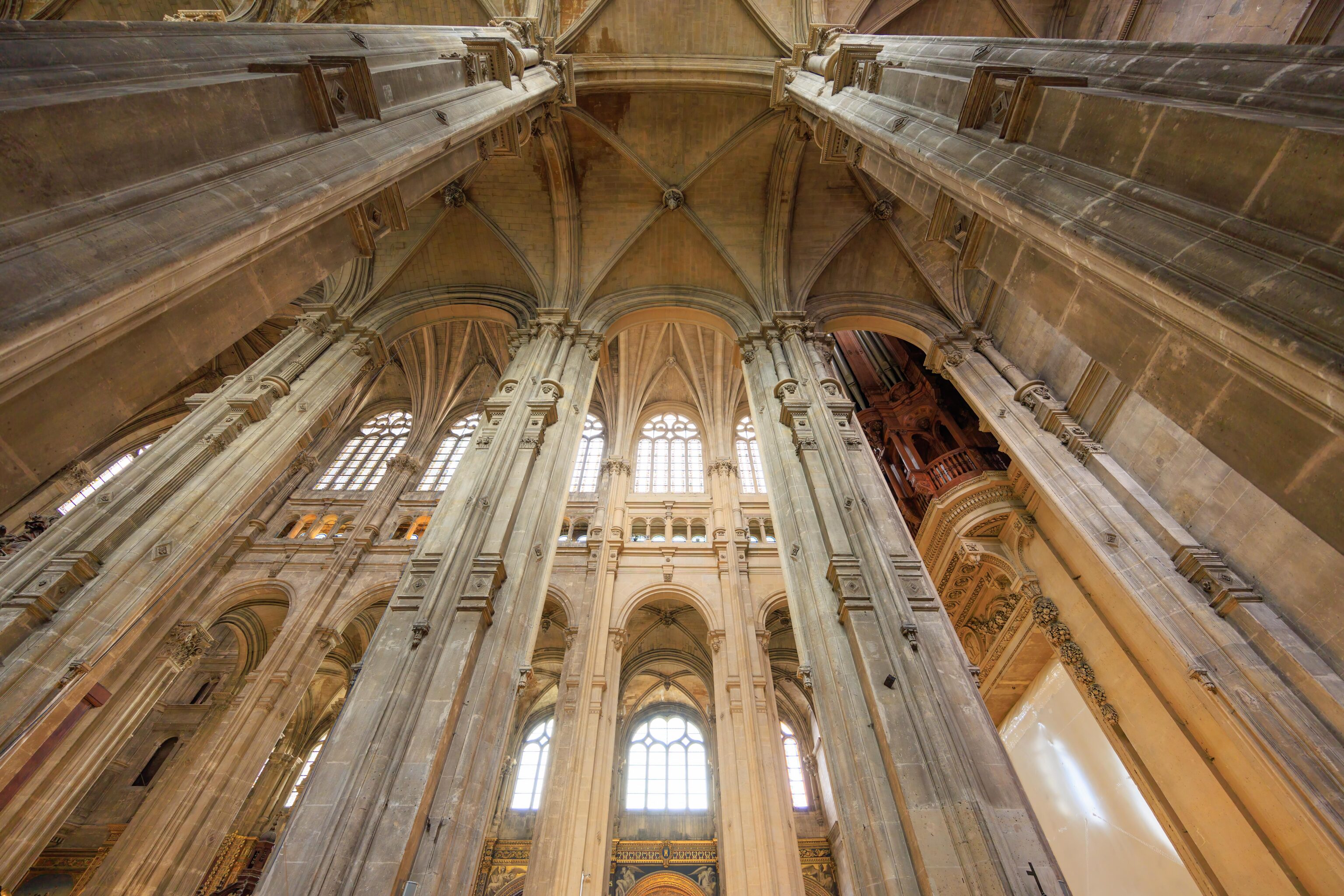
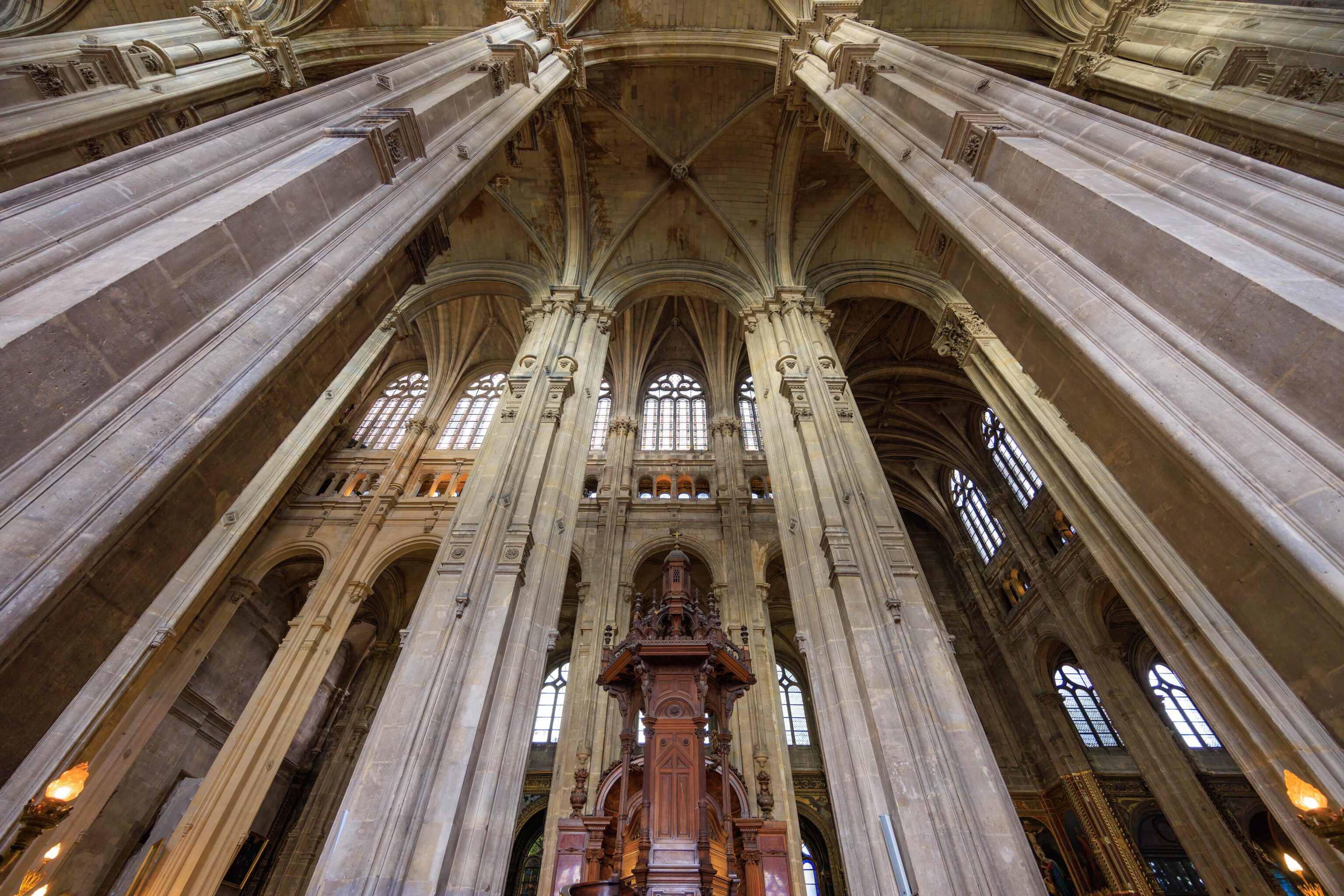
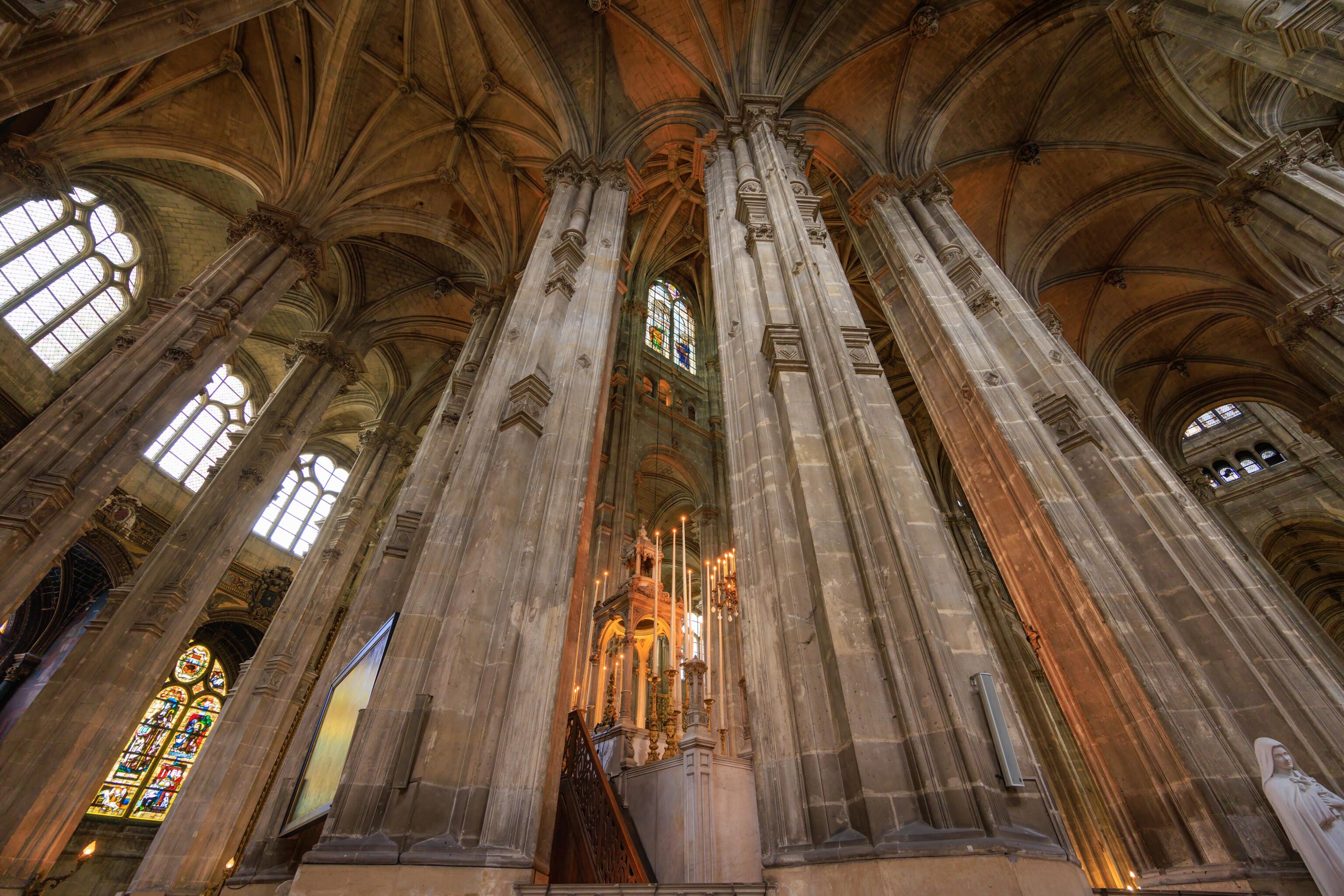
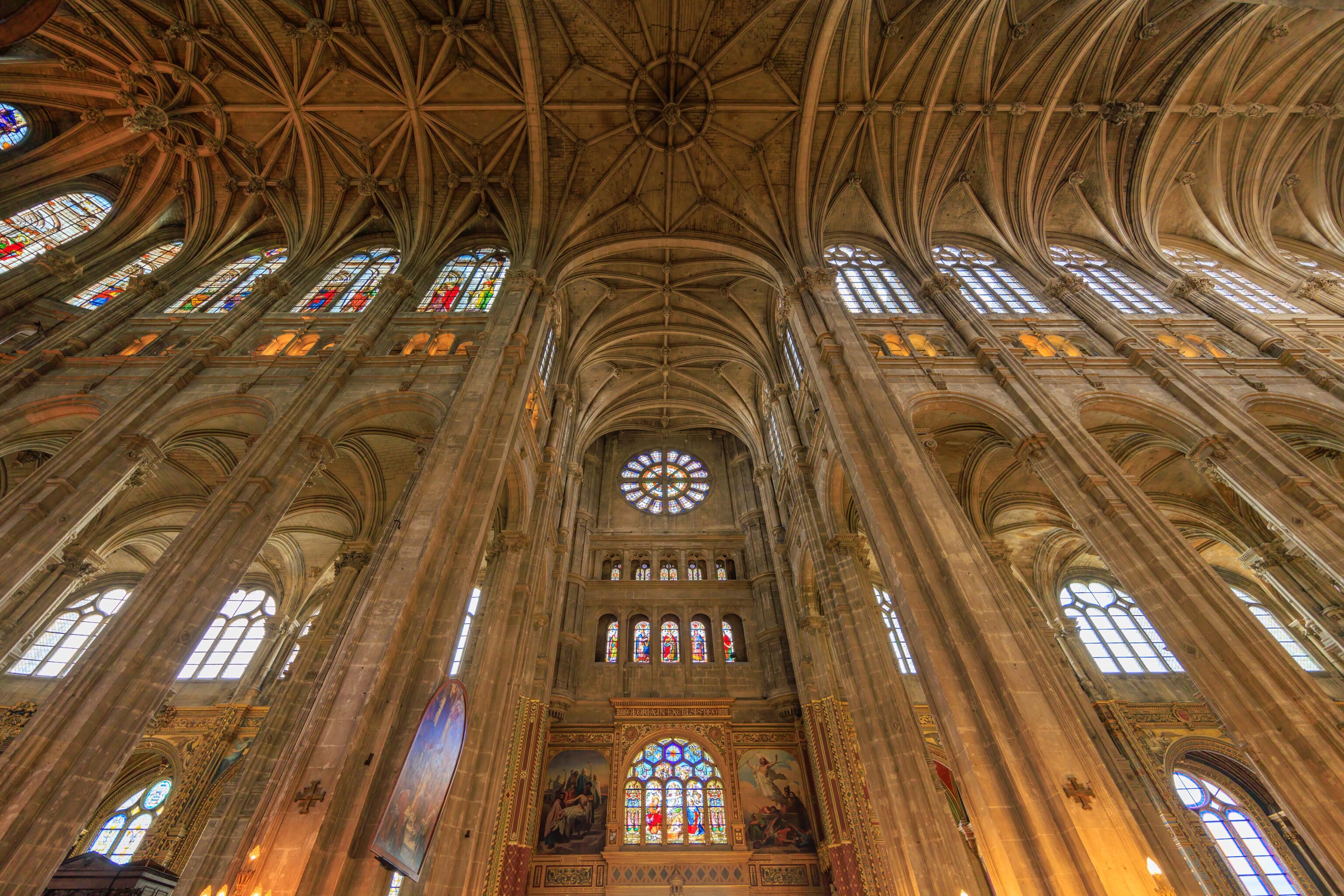
The church is extremely tall with a very high ceiling. It feels just as large when inside as it appears from the outside.
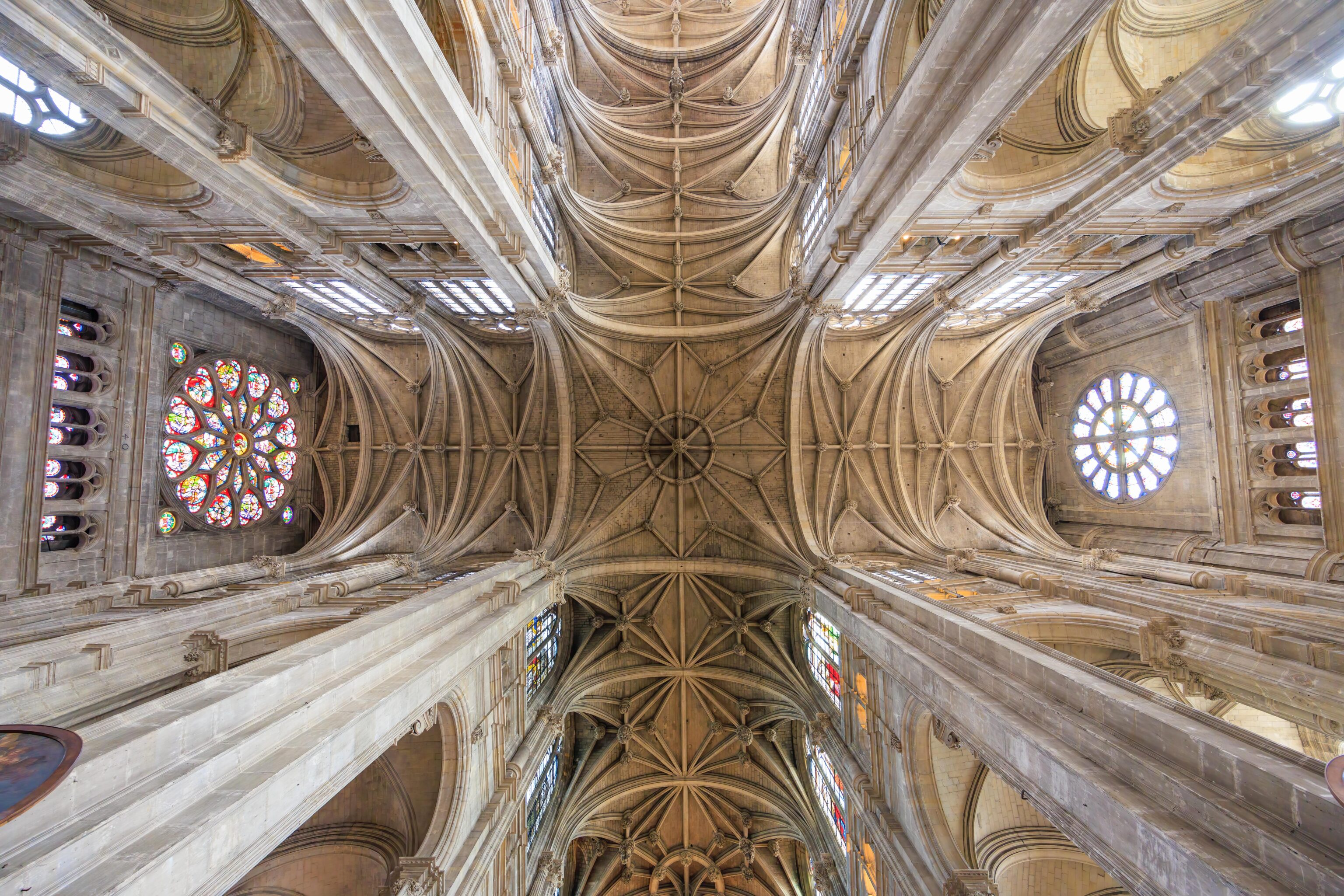
Looking almost straight up at the high ceiling.
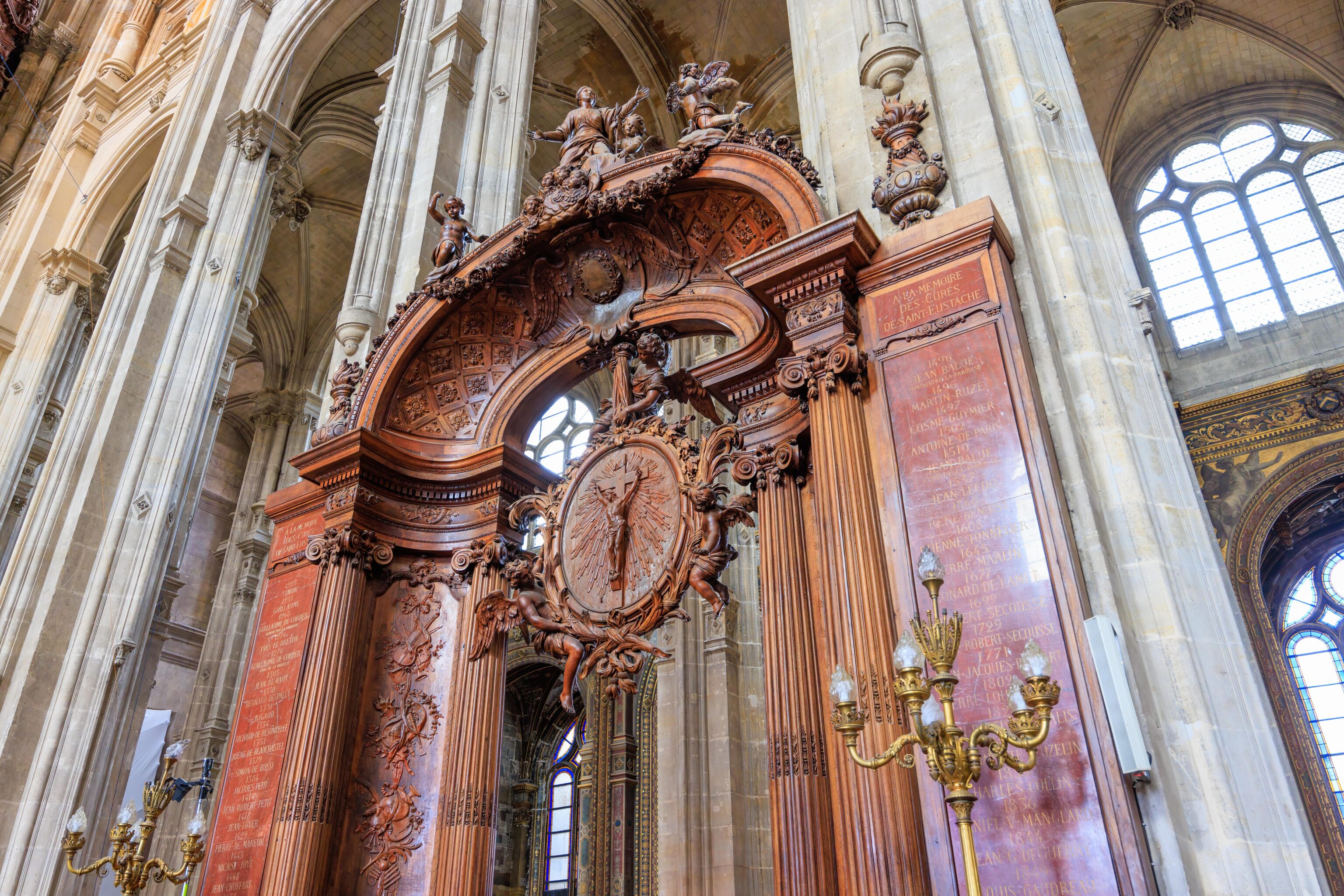
A very intricately carved wooden memorial dedicated to the priests of this church.
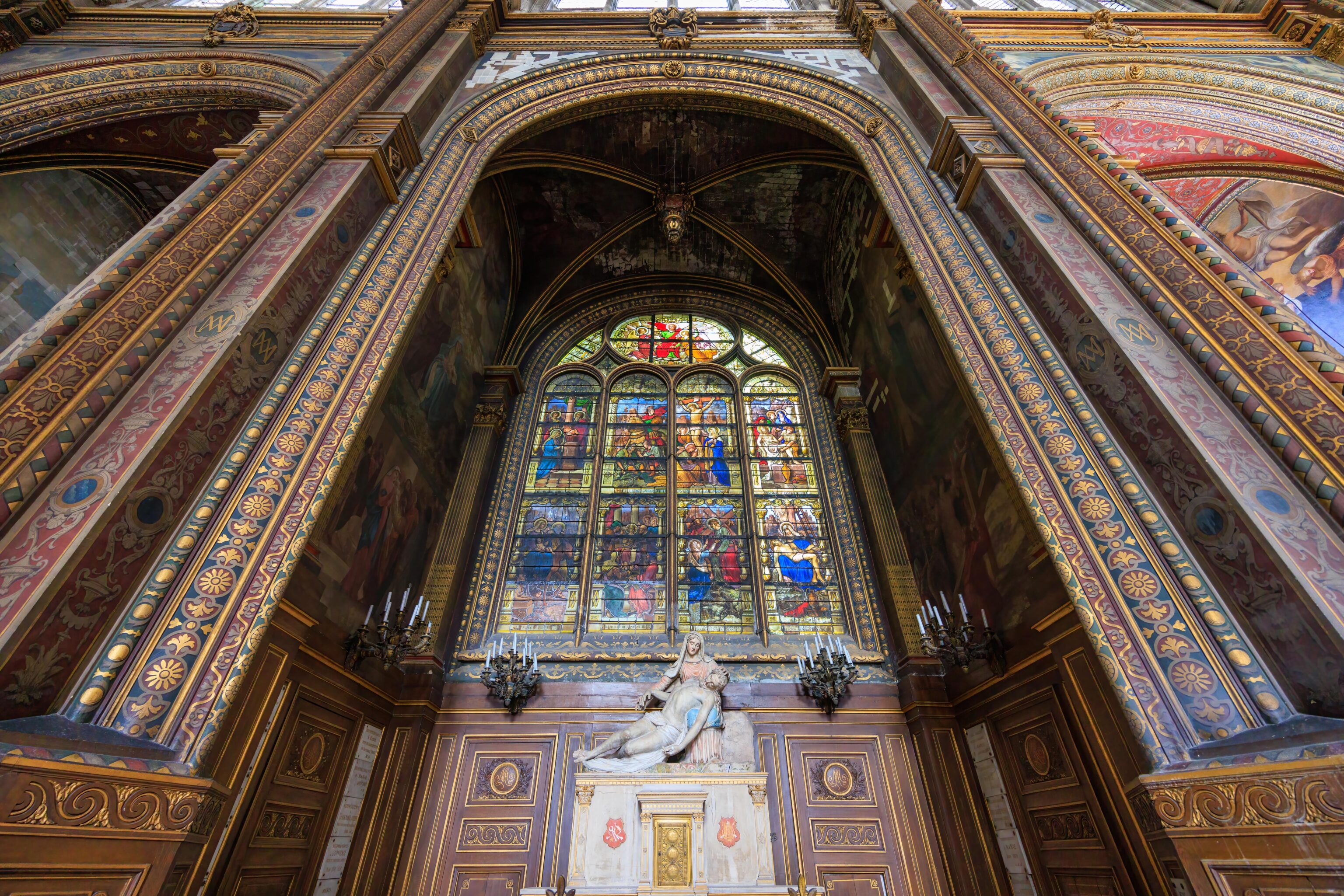
The church has a sculpture of Mary holding Jesus below a stained glass window. It has a bit of faded color which makes it appear quite different from other sculptures that are left with a natural stone appearance.
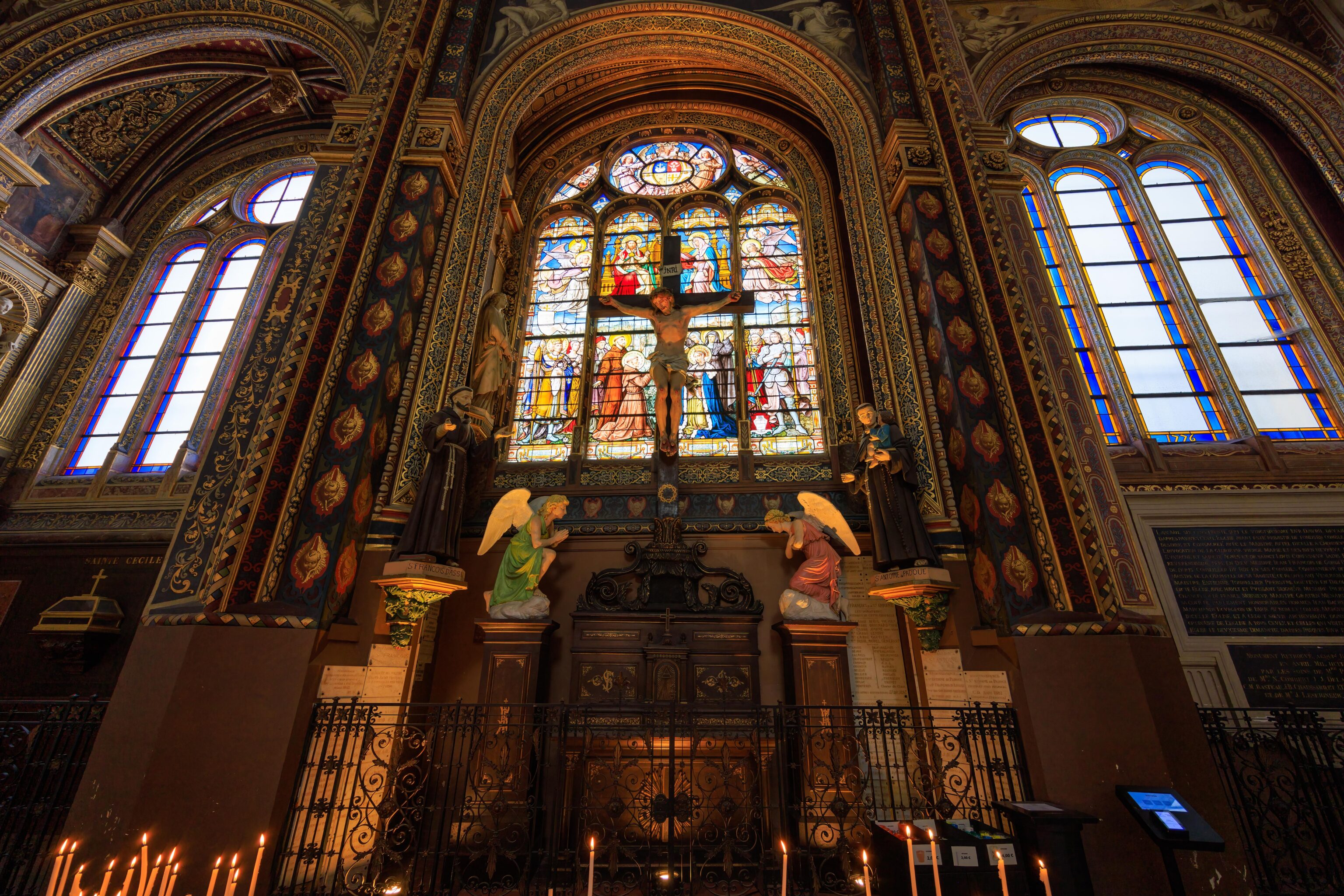
A chapel within the church. The stained glass windows on either side are empty, though the bottom of the right window says 1776 and the hard to read text underneath writes out the year in words. Were the contents of the windows destroyed and not able to be restored?
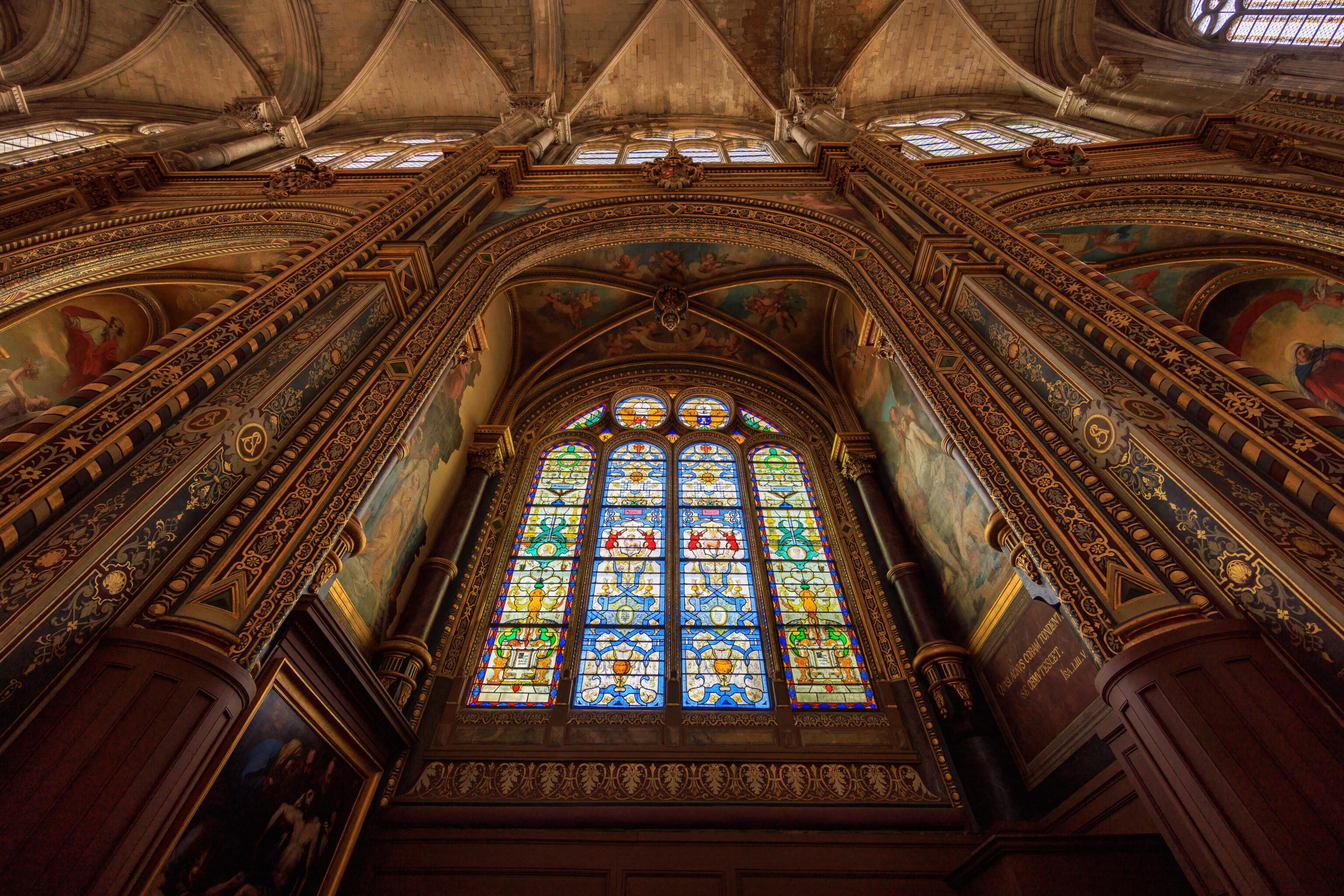
Another stained glass window.
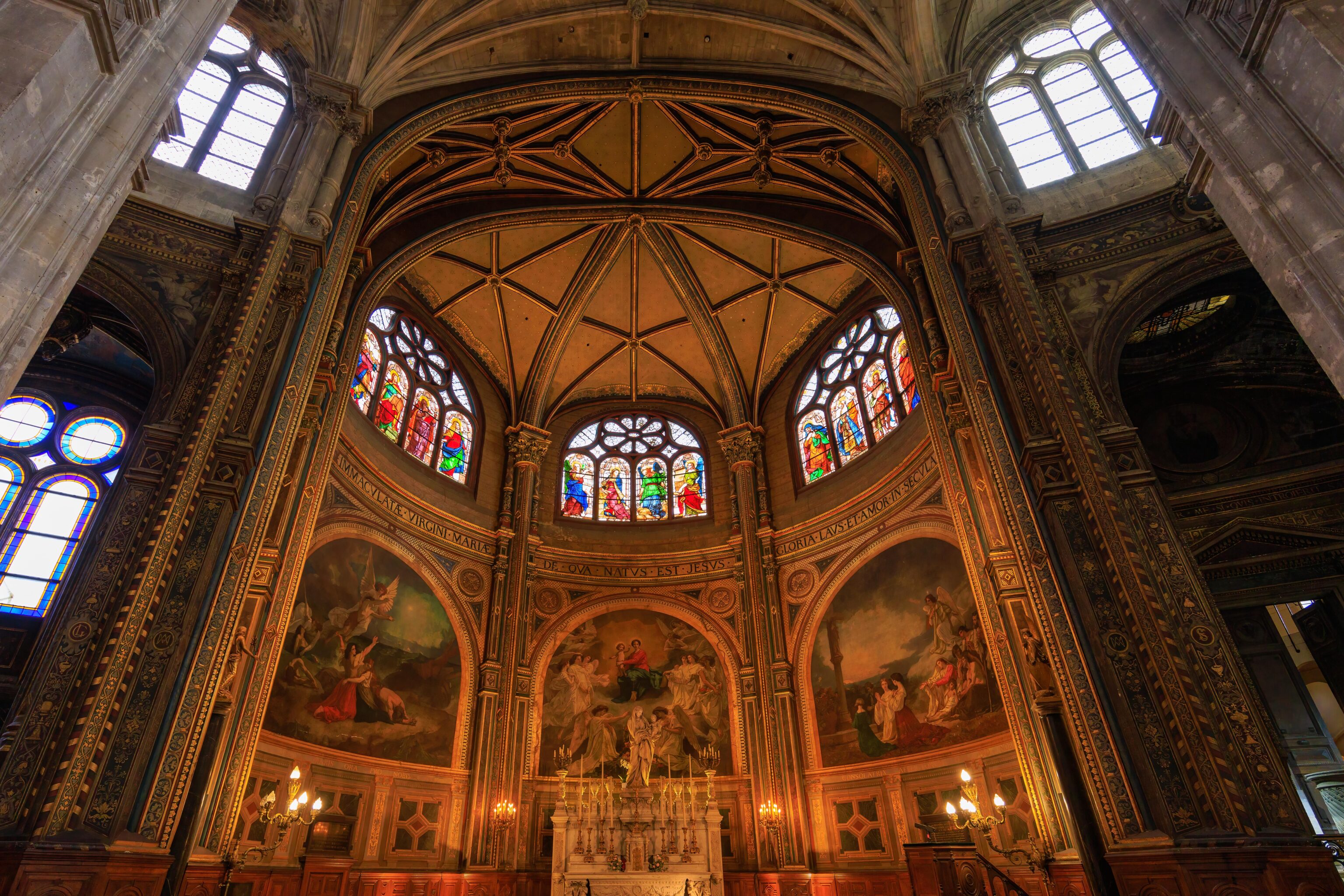
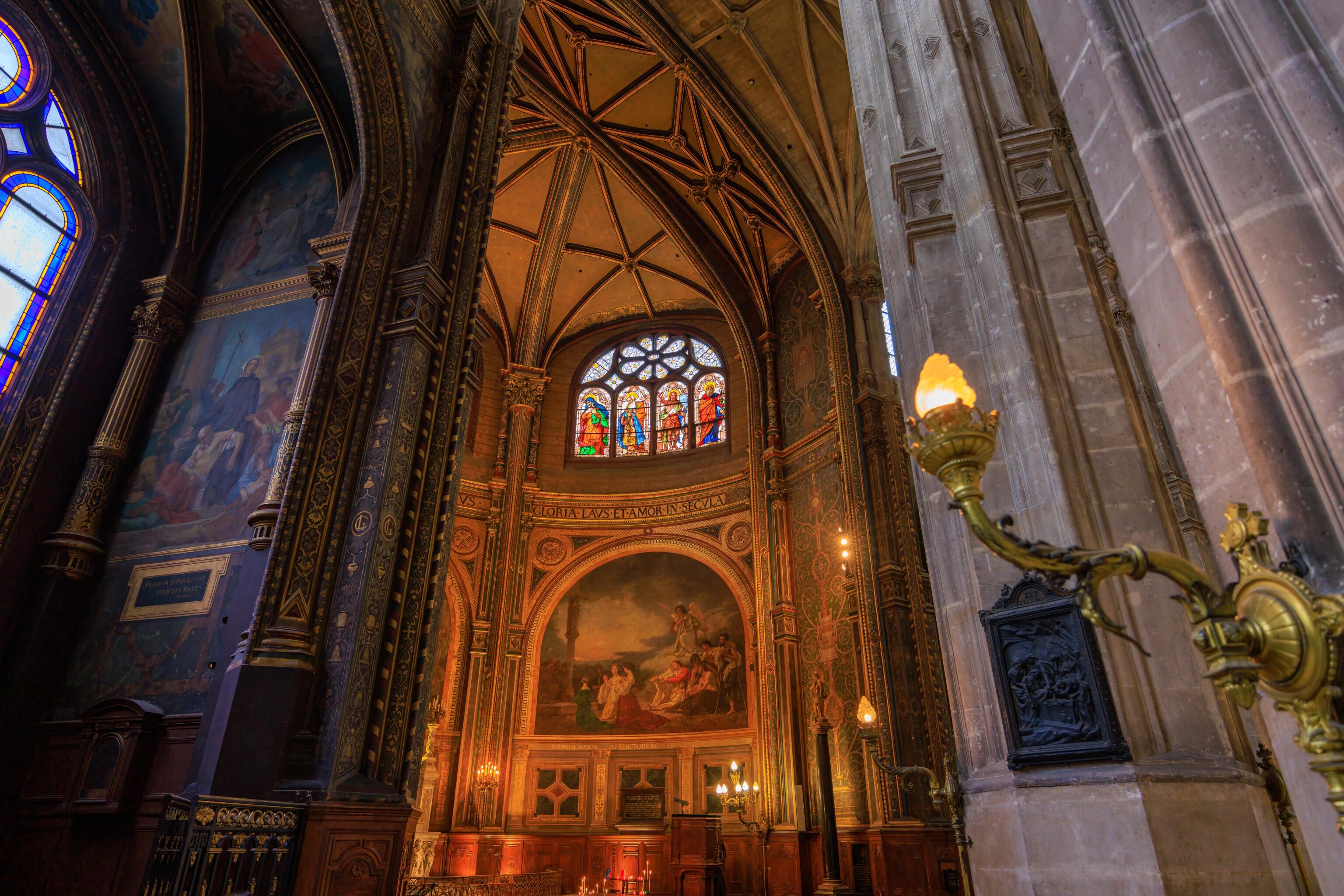
The Chapel of the Virgin at the east end of the church. Wikipedia describes this chapel13:
The Chapel of the Virgin, located behind the choir in the apse at the east of the church, was built in 1640 and restored from 1801 to 1804. It was inaugurated by Pius VII on the 22nd of December, 1804 when he came to Paris for the coronation of Napoleon.[34] The apse chapel is topped by a ribbed cul-de-four vault. Its central feature is a sculpture of the Virgin and Child by Jean-Baptiste Pigalle. In the 19th century he painter Thomas Couture complemented the statue with three large paintings illustrating "The Virgin Triumphant, adored by angels"; "The Virgin, a star guiding the sailors"; and "The Virgin, Giving Consolation to he Afflicted." Couture rejected symbolism and idealisation, and used a distinctive realism to the portray the pain of those suffering.
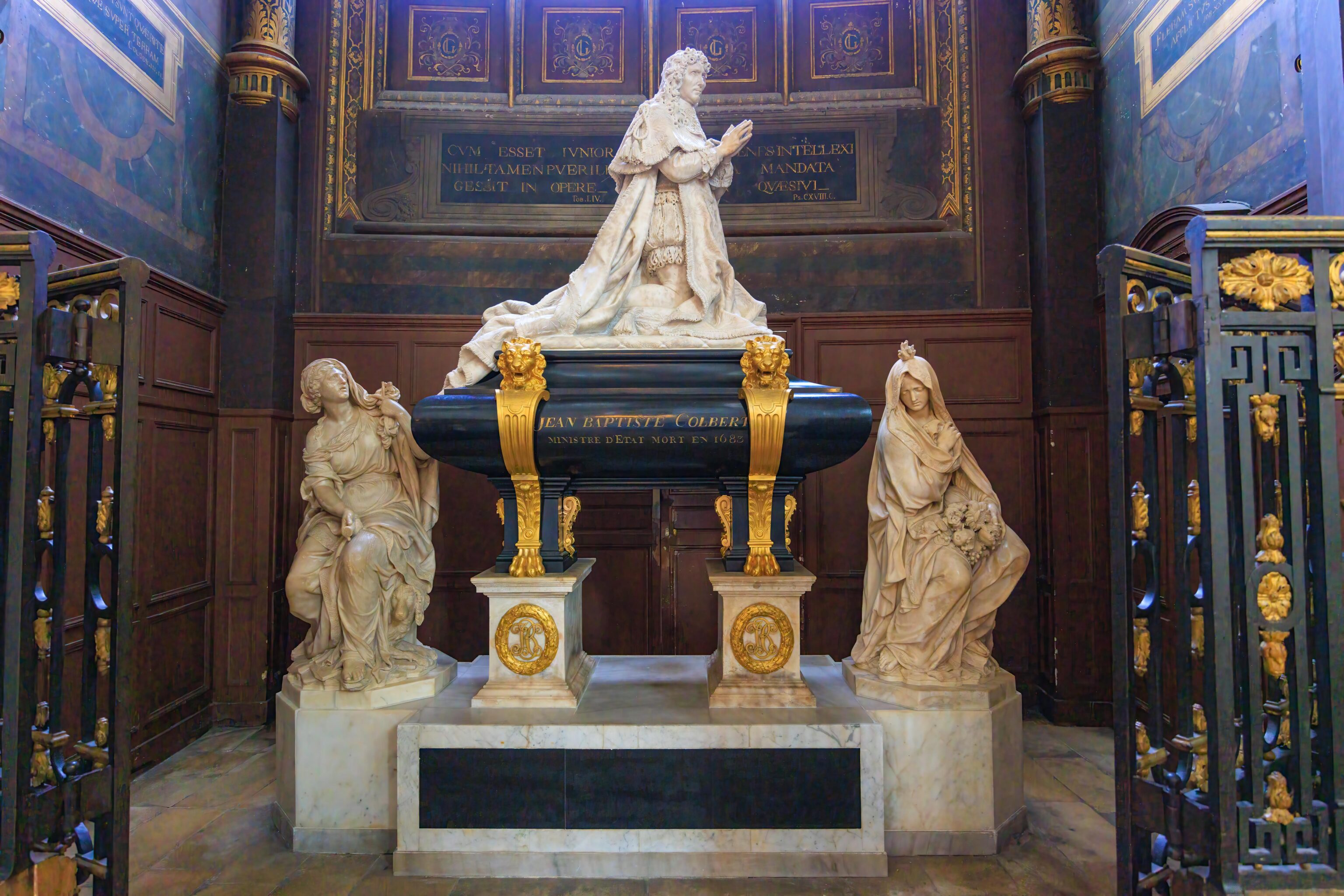
This is the tomb of Jean-Baptiste Colbert, minister of state under Louis XIV. There seems to be some complexity in his beliefs but ultimately he seems to have worked towards converting people to become Catholic, at least according to some text on Wikipedia without any citations14:
Colbert played a subordinate role in the struggle between the king and the papacy as to the royal rights over vacant bishoprics, and he seems to have sympathised with the proposal that suggested seizing part of the wealth of the clergy. In his hatred of idleness he ventured to suppress no less than seventeen fêtes, and he had a project for reducing the number of persons devoted to clerical and monastic life, by increasing the age for taking the vows. He showed himself at first unwilling to interfere with heresy, for he realised the commercial value of the Huguenots (French Protestants), who were well represented among the merchant classes; but when the king resolved to make all France Roman Catholic and revoked the Edict of Nantes, he followed him and urged his subordinates to do all that they could to promote conversions.
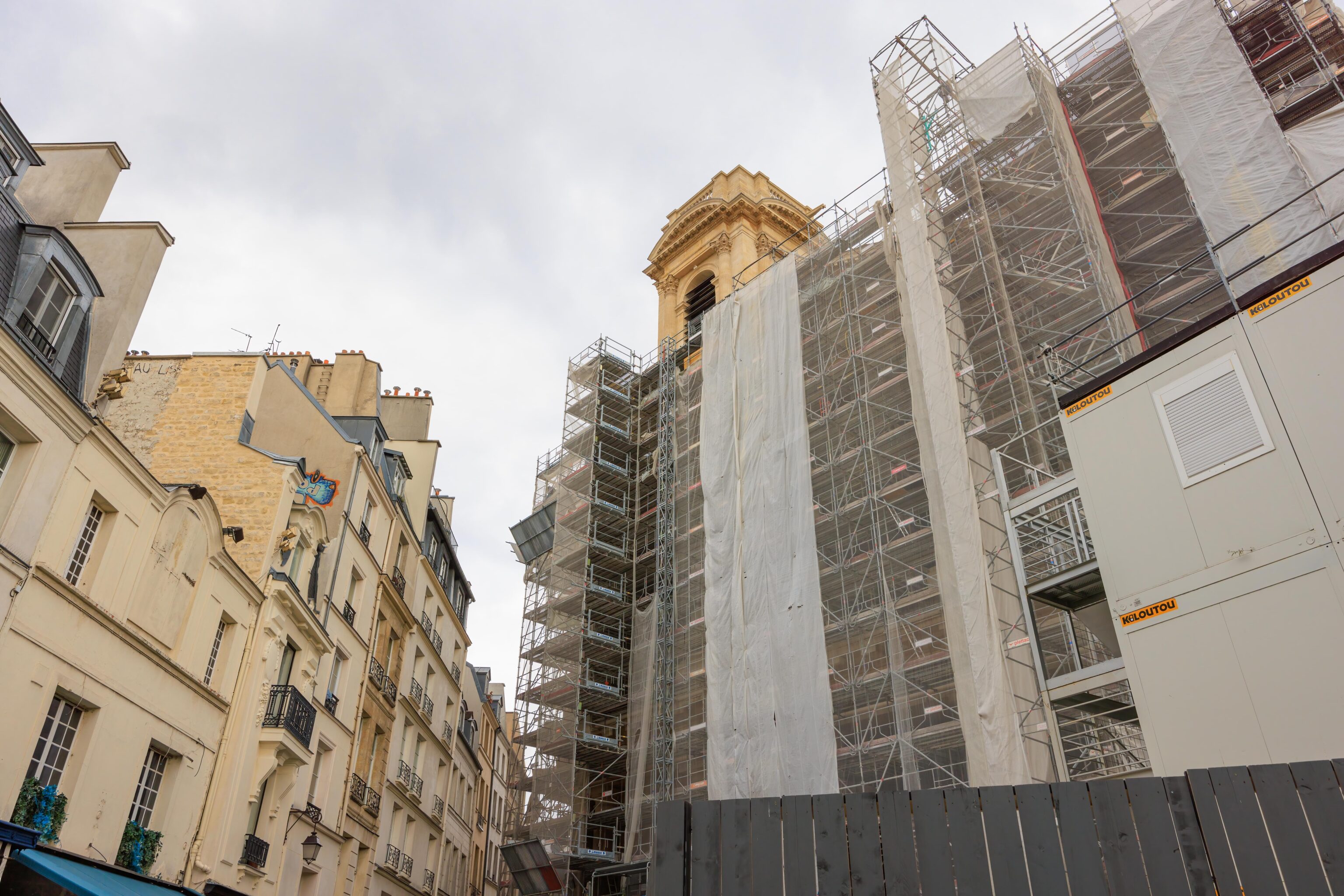
We spent around 25 minutes visiting the church before exiting to get dinner. The western side of the church is being renovated and almost completely covered by scaffolding. No fancy construction facade here! The restaurant, Au Pied de Cochon (Pig’s Foot), is right next to the church. We got an outdoor seat facing south towards a small section of park and the former Commodities Exchange beyond it.
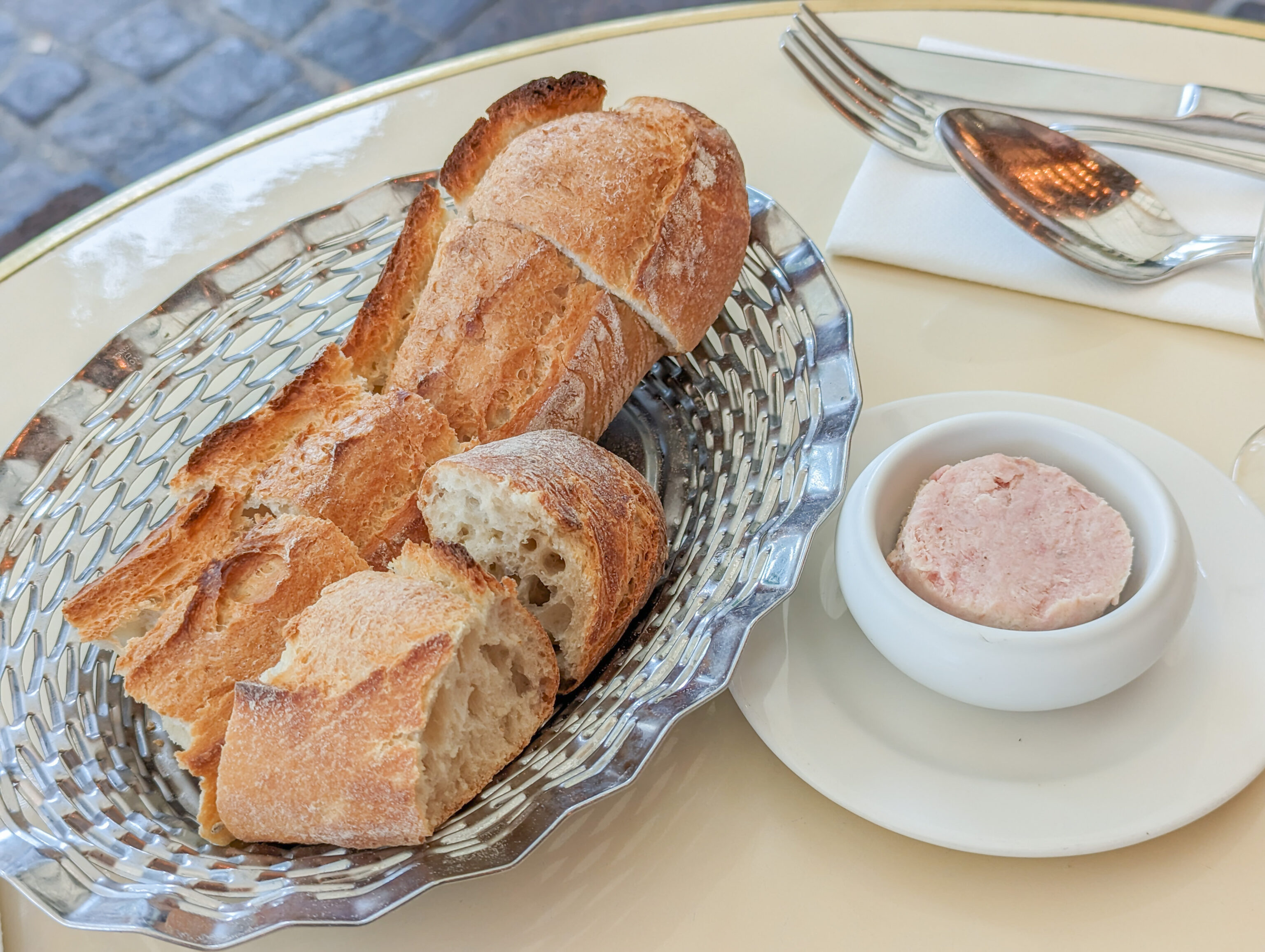
Some bread to start. The spread that came with it was perhaps something like a ham pate. It isn’t something we’re familiar with so aren’t sure about that. Either way, the bread was good, as one expects in France!
It started pouring not long after we sat down. Luckily, our table was just far enough way from the edge of the awning that we did not get wet.
We started with two entrees, which are appetizers in English.
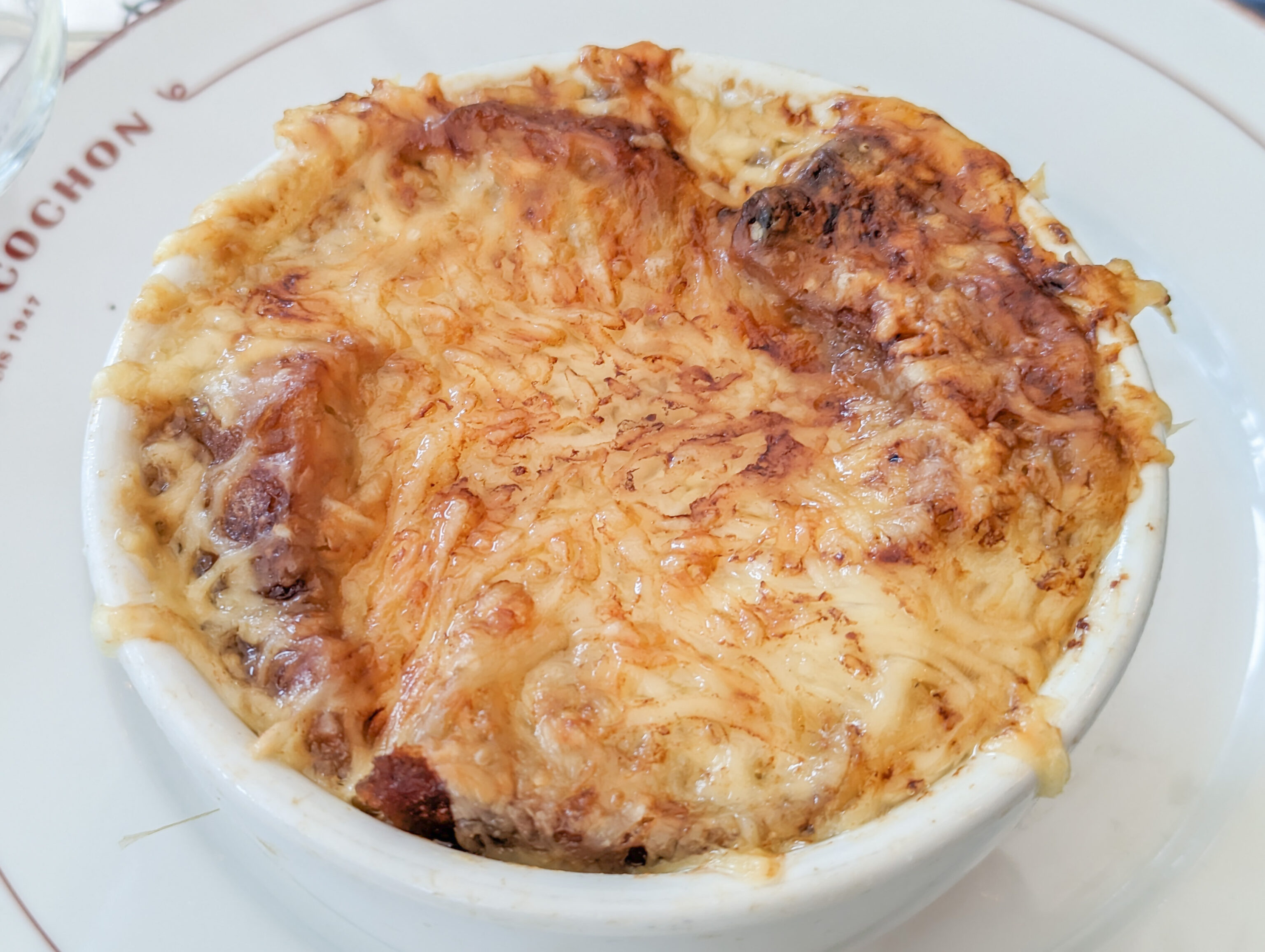
Our first French onion soup. Or as they say in France, onion soup! It was very good with good cheese and not overly salty like it often is in the US. Otherwise though, very similar.
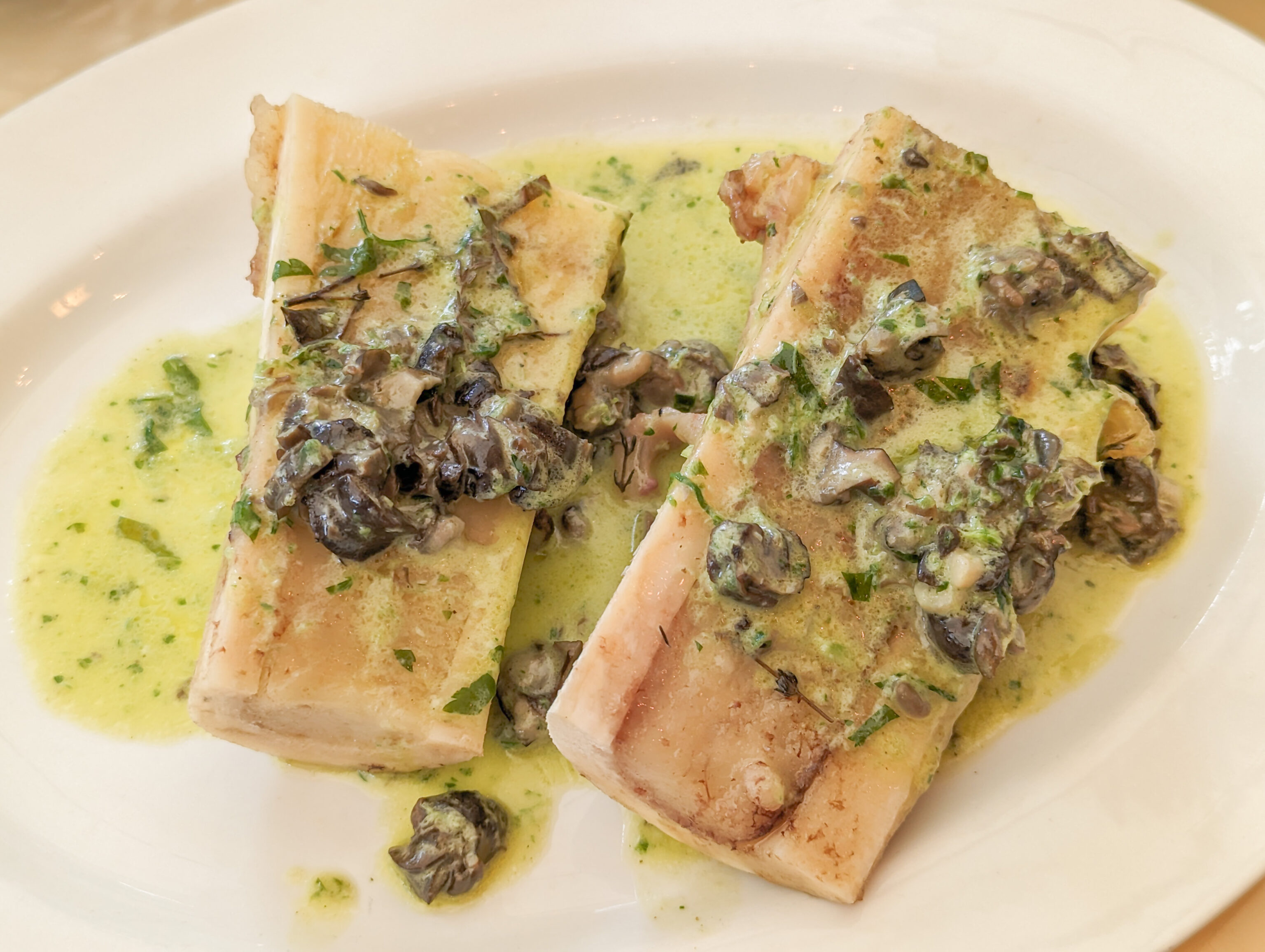
The bone marrow was interesting, almost like eating butter.
We followed up with two main dishes.
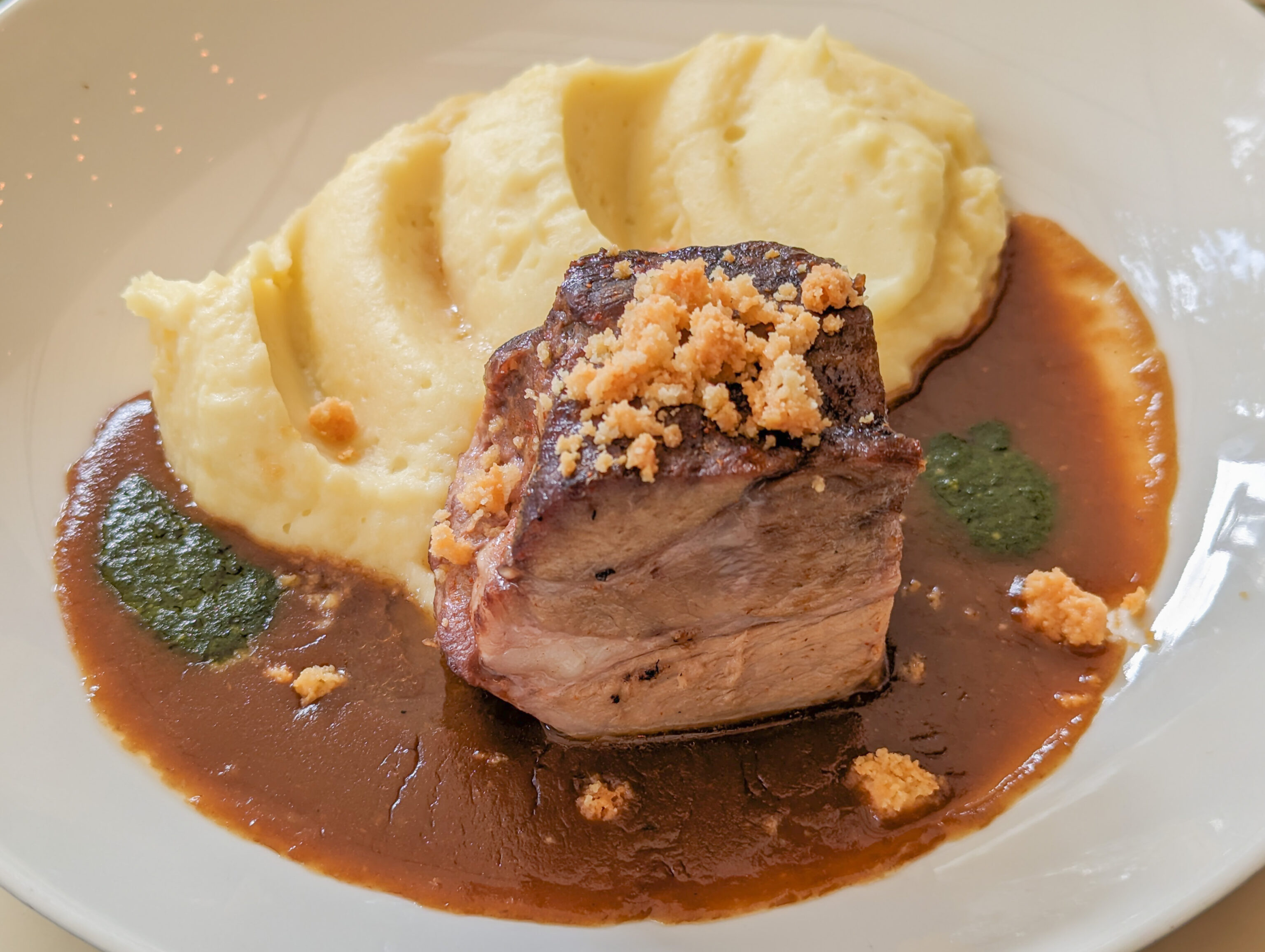
The pork was described in English as candied pork cooked for 14 hours. This maybe means confit in a sugary syrup? It was very good, a bit like ham but much better.
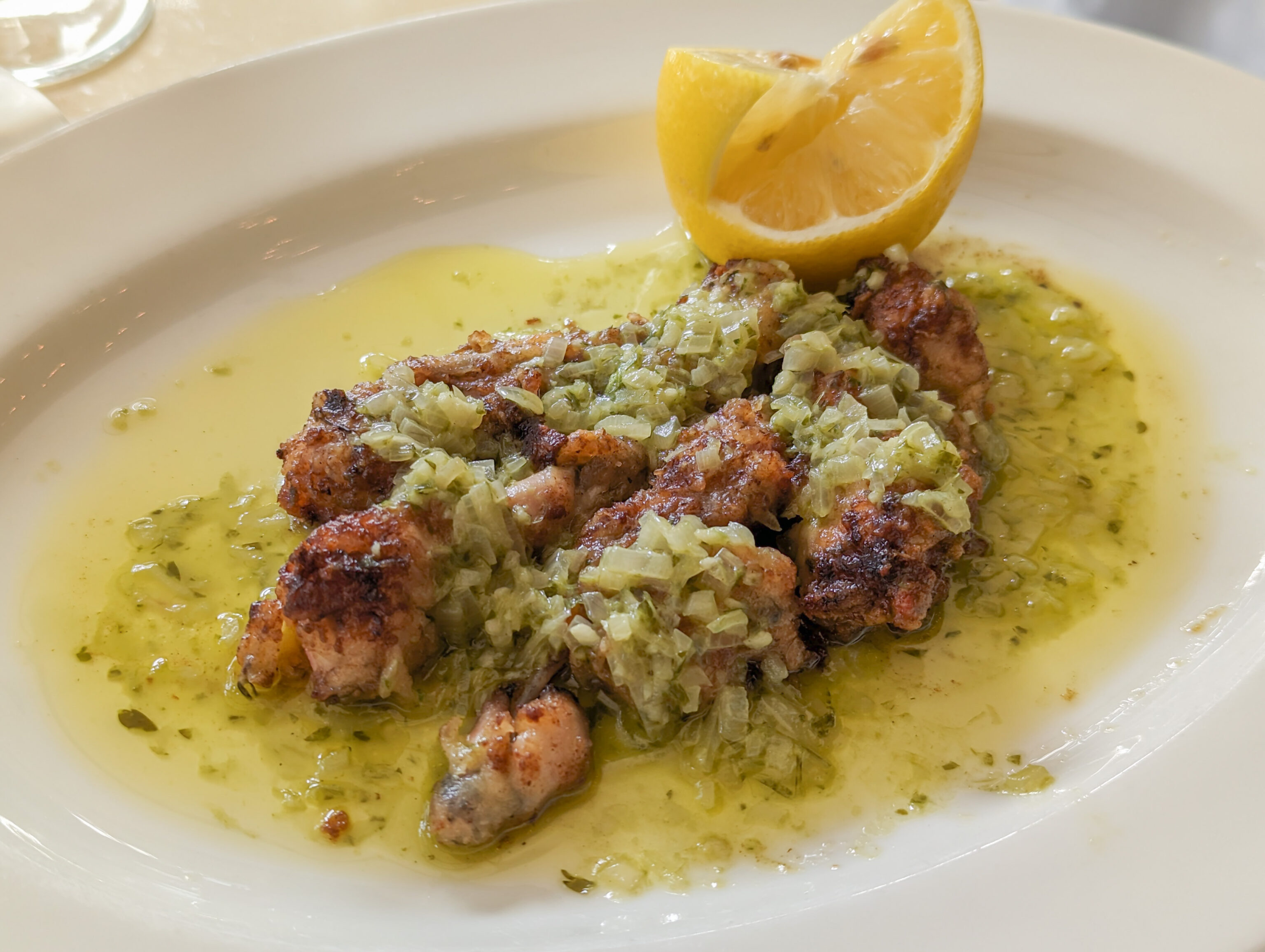
The frog legs were probably the weakest item, though it might just be how they are. Too many little bones, not alot of good juicy meat. Maybe if it was chicken thigh instead? Or maybe we just need to eat frogs’ legs prepared differently.
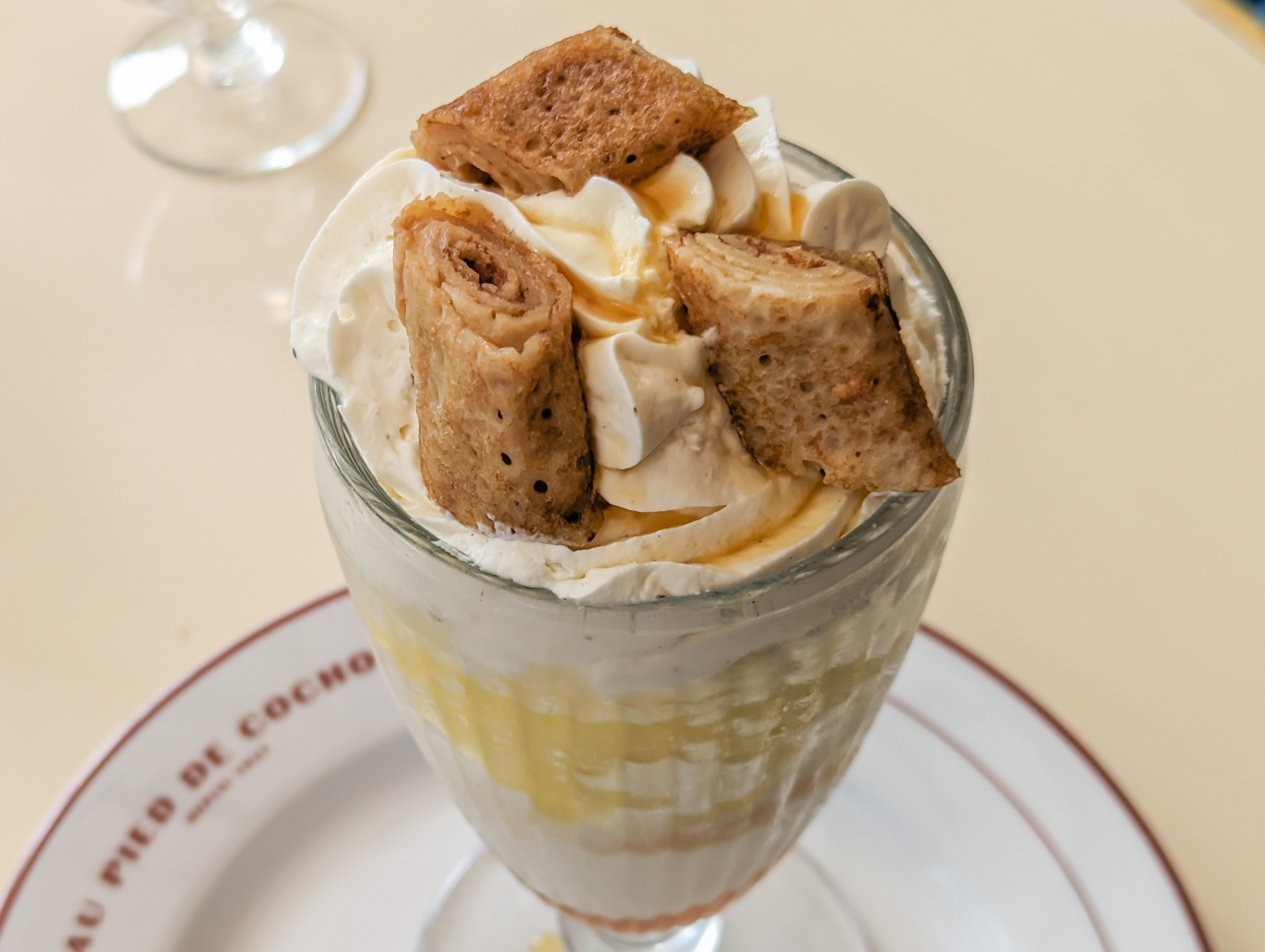
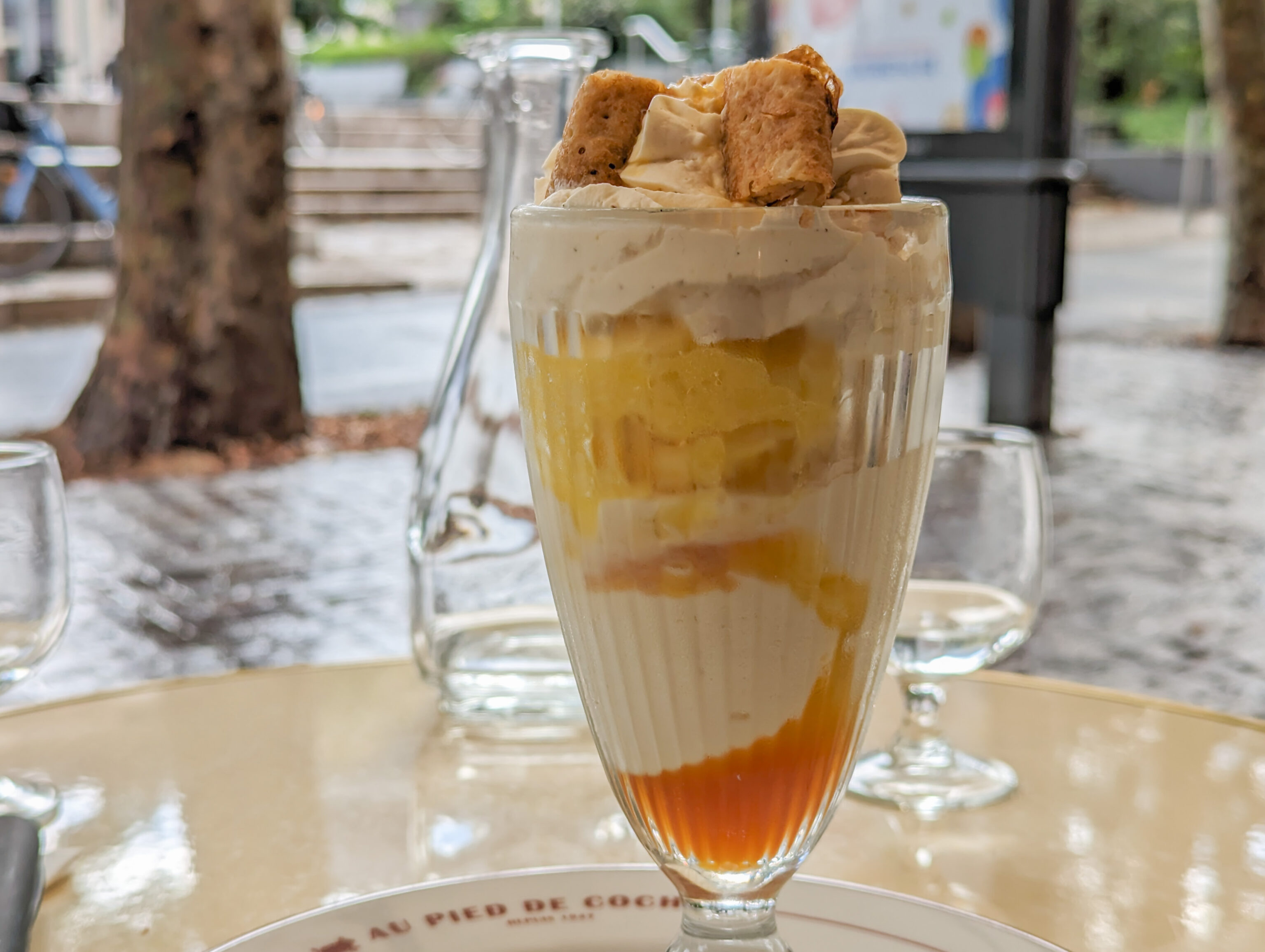
The dessert was very good too. The orange flavor worked quite nicely.
After eating, we headed back to the Le Méridien Etoile by Metro. We walked a few short blocks to the Châtelet Metro station to be able to take line 1 which runs directly to the Porte Maillot Metro station.
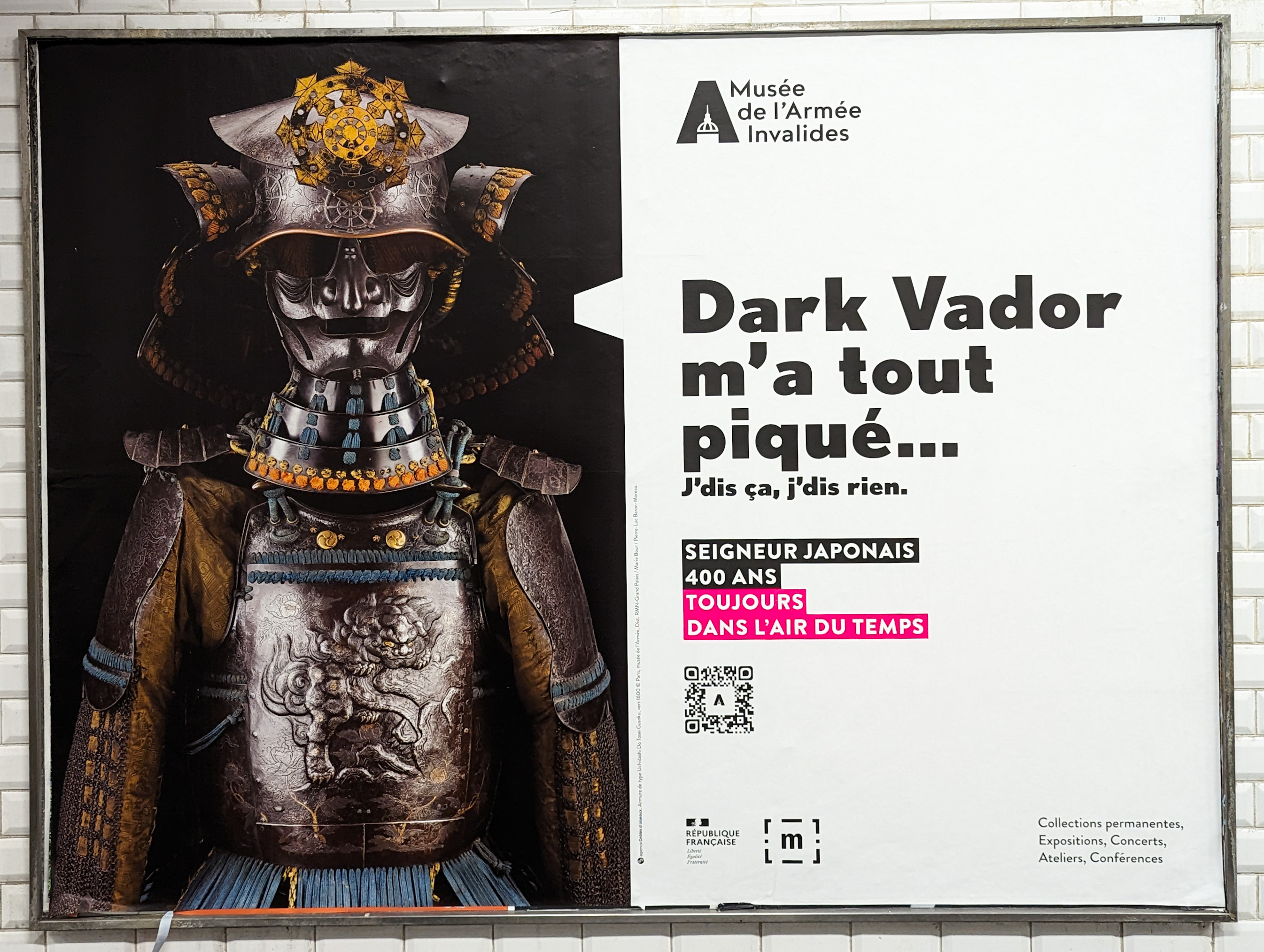
This advertisement is in many places in the Paris Metro, including Porte Maillot. It is amusing that they translated Darth Vader, a completely fictional name, into Dark Vador. There is a paywalled article that explains15:
That old pesky "th" sound is a problem for French tongues so Darth Vader had to be given a Gallic name as change - well, more of an Anglo name change as he became "Dark Vador" on French screens. Not too far from the truth.
Map of Outdoor Photos Before Lunch
Map of Outdoor Photos After Lunch
Footnotes
- https://collections.louvre.fr/en/ark:/53355/cl010094976 ↩︎
- https://en.wikipedia.org/wiki/Liberty_Leading_the_People ↩︎
- https://www.louvre.fr/en/explore/the-palace/sun-gold-and-diamonds ↩︎
- https://en.wikipedia.org/wiki/Venus_de_Milo ↩︎
- https://www.getty.edu/art/exhibitions/aphrodite/venus.html ↩︎
- https://collections.louvre.fr/en/ark:/53355/cl010277986 ↩︎
- https://en.wikipedia.org/wiki/Venus_of_Arles ↩︎
- https://en.wikipedia.org/wiki/Athena_of_Velletri ↩︎
- https://en.wikipedia.org/wiki/Saint-Germain_l%27Auxerrois ↩︎
- https://en.wikipedia.org/wiki/John_II_Casimir_Vasa#Abdication_and_death ↩︎
- https://www.twoboomersabroad.com/post/eglise-saint-germain-des-pr%C3%A9s-paris ↩︎
- https://www.metmuseum.org/art/collection/search/334488 ↩︎
- https://en.wikipedia.org/wiki/Saint-Eustache,_Paris#Chapel_of_the_Virgin ↩︎
- https://en.wikipedia.org/wiki/Jean-Baptiste_Colbert#Religion ↩︎
- https://www.thelocal.fr/20170504/star-wars-force-awakens-star-wars-characters-in-french ↩︎


